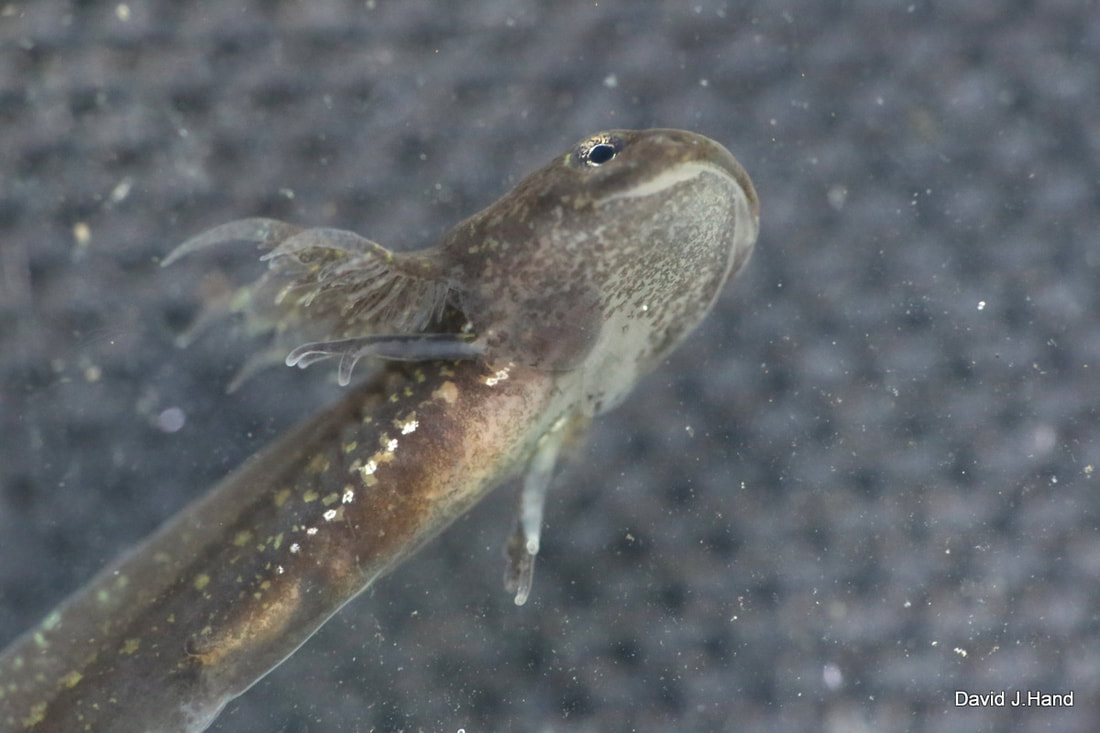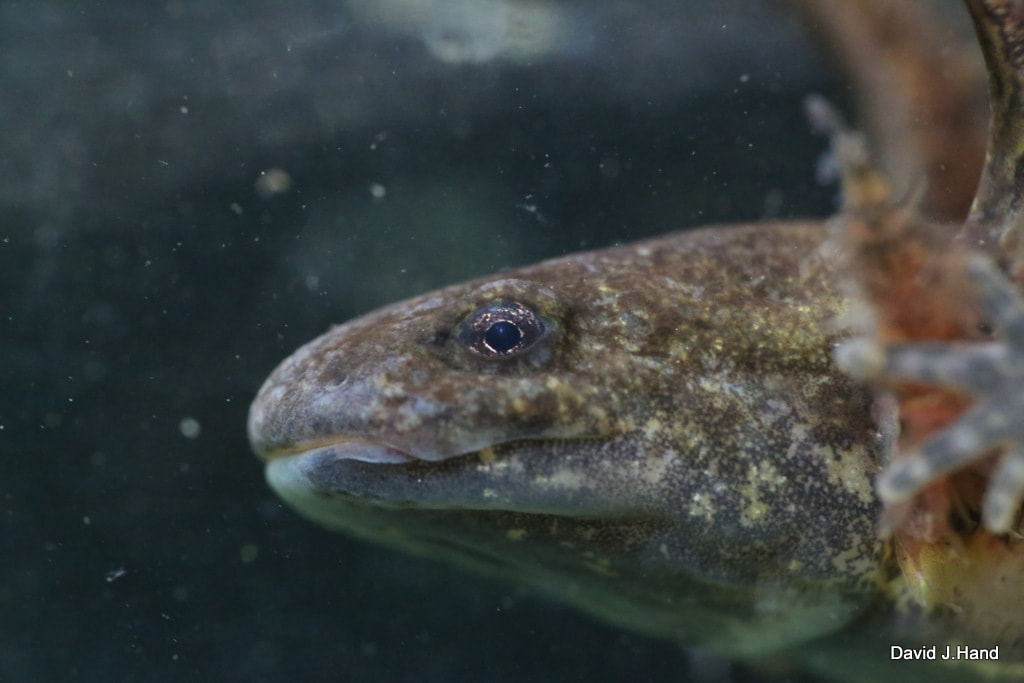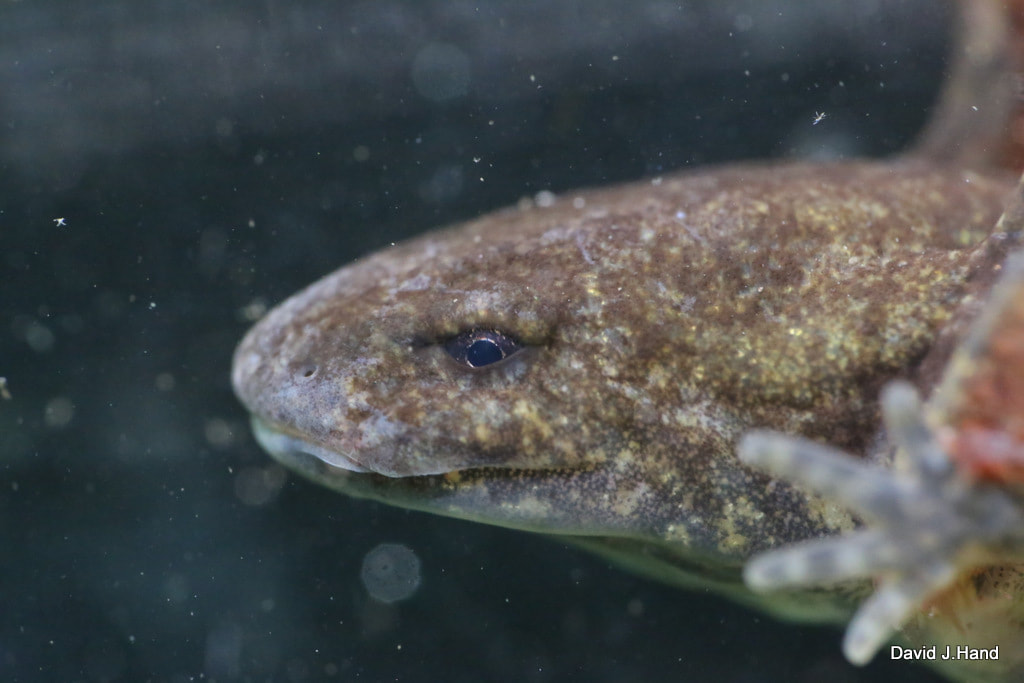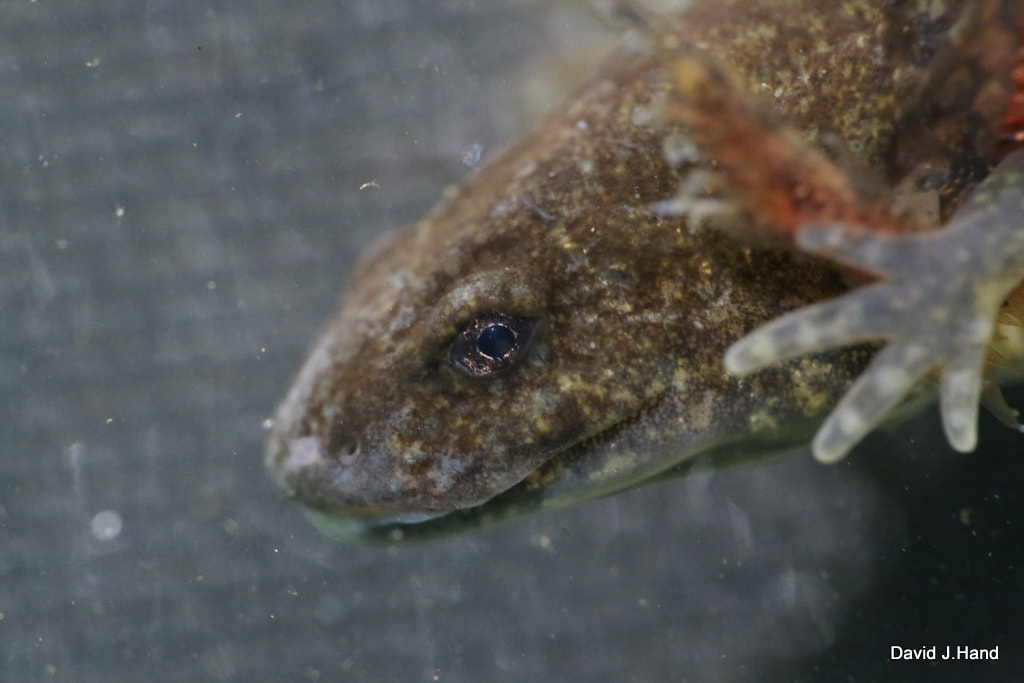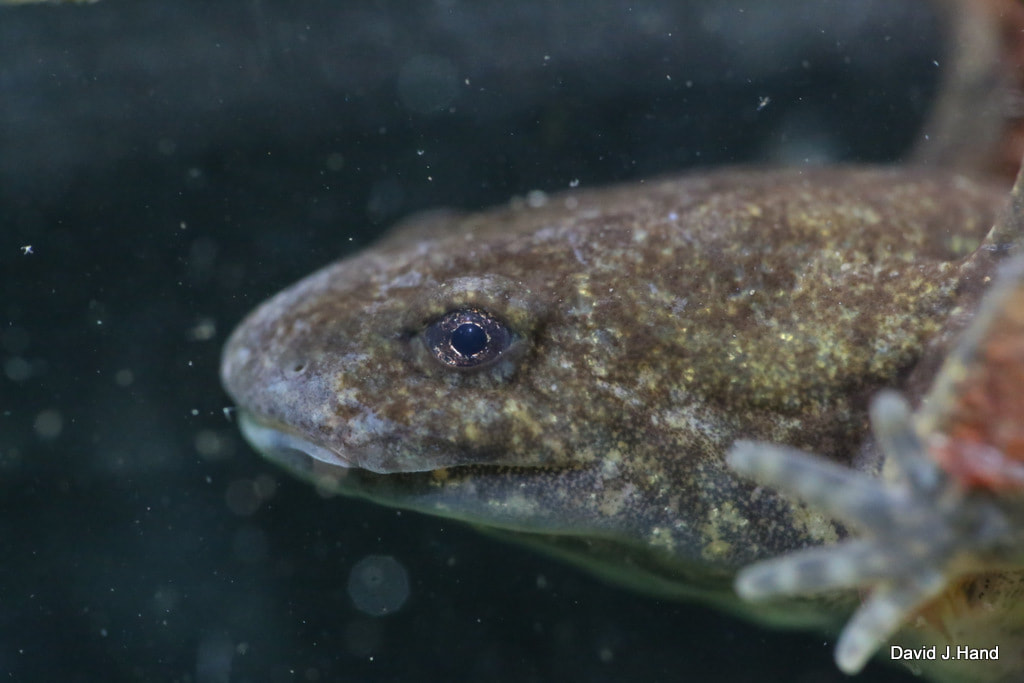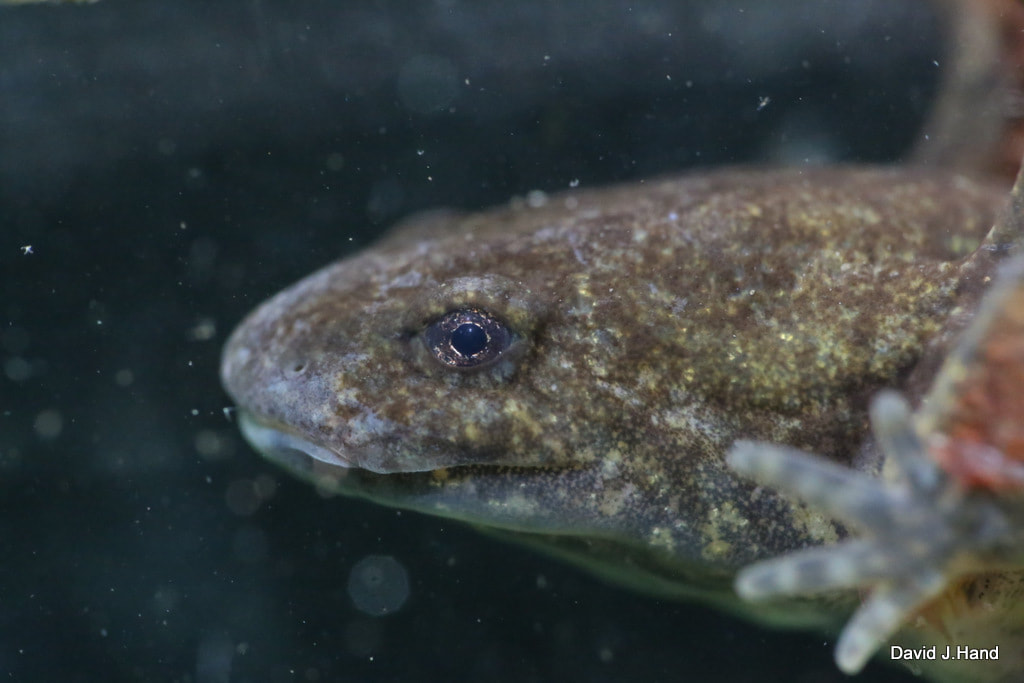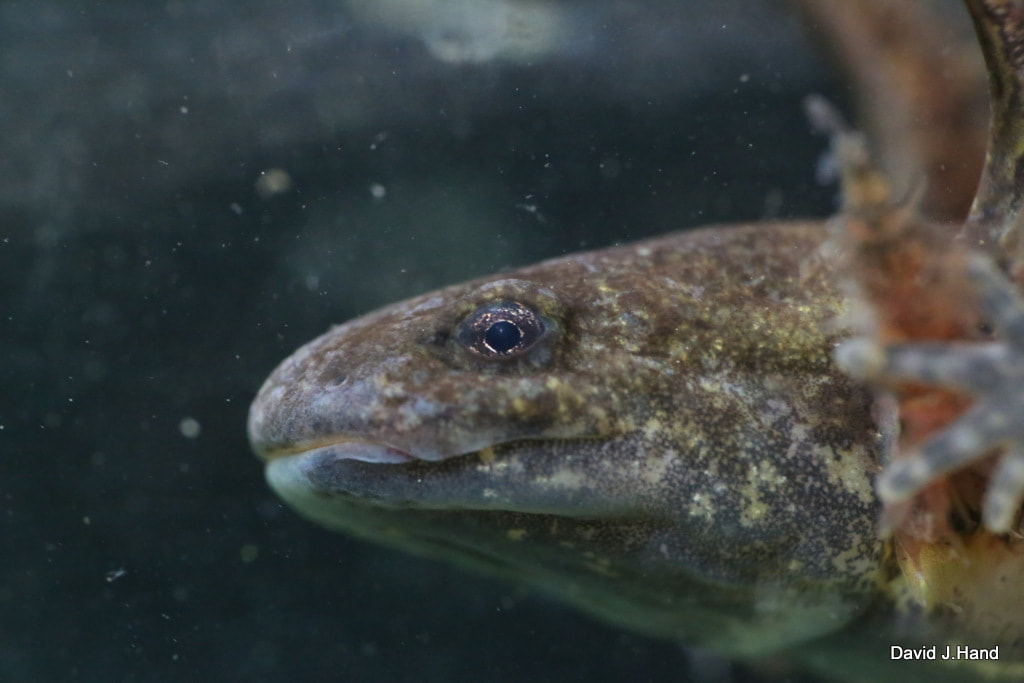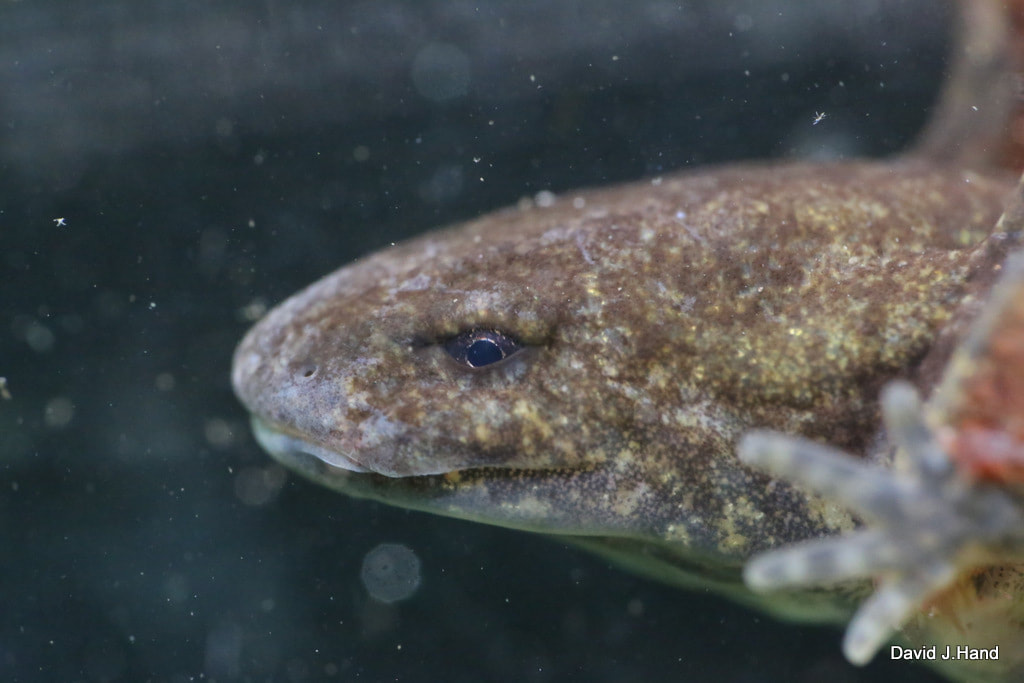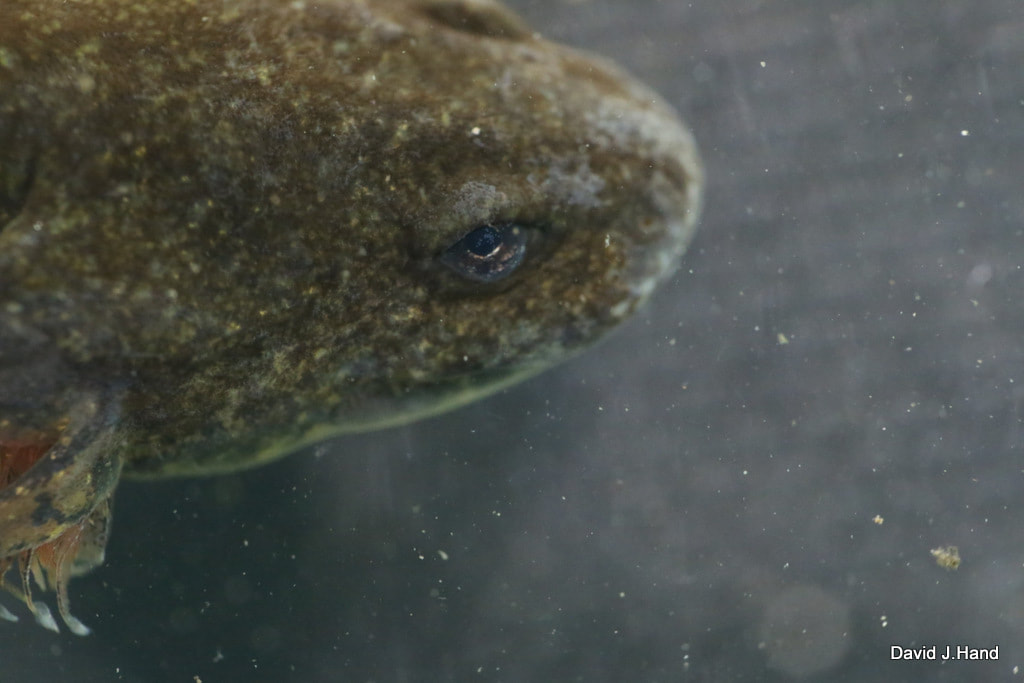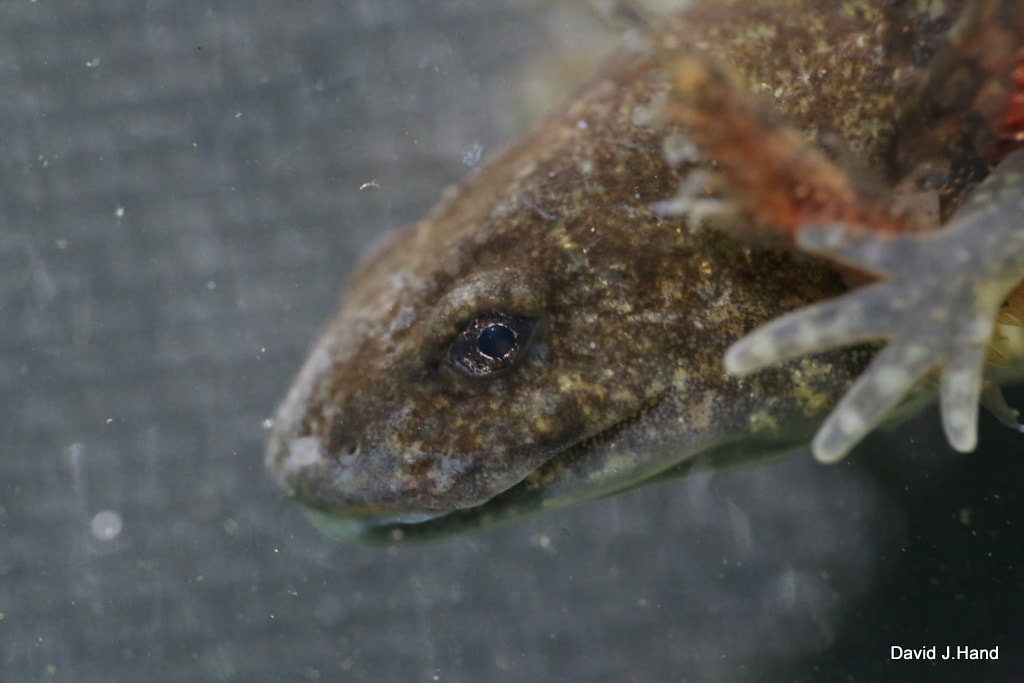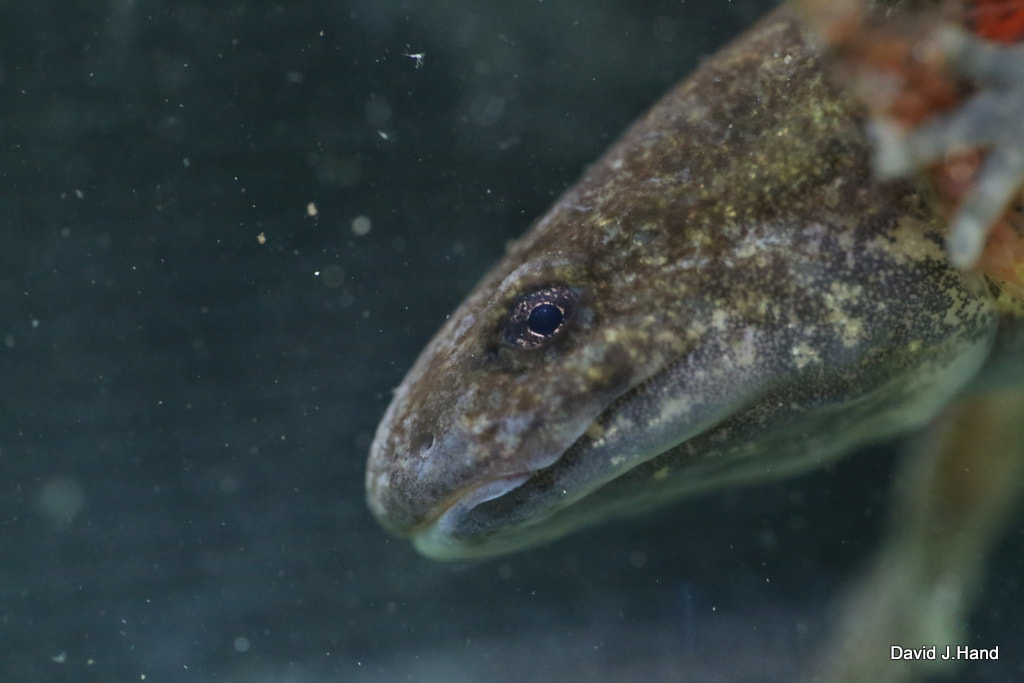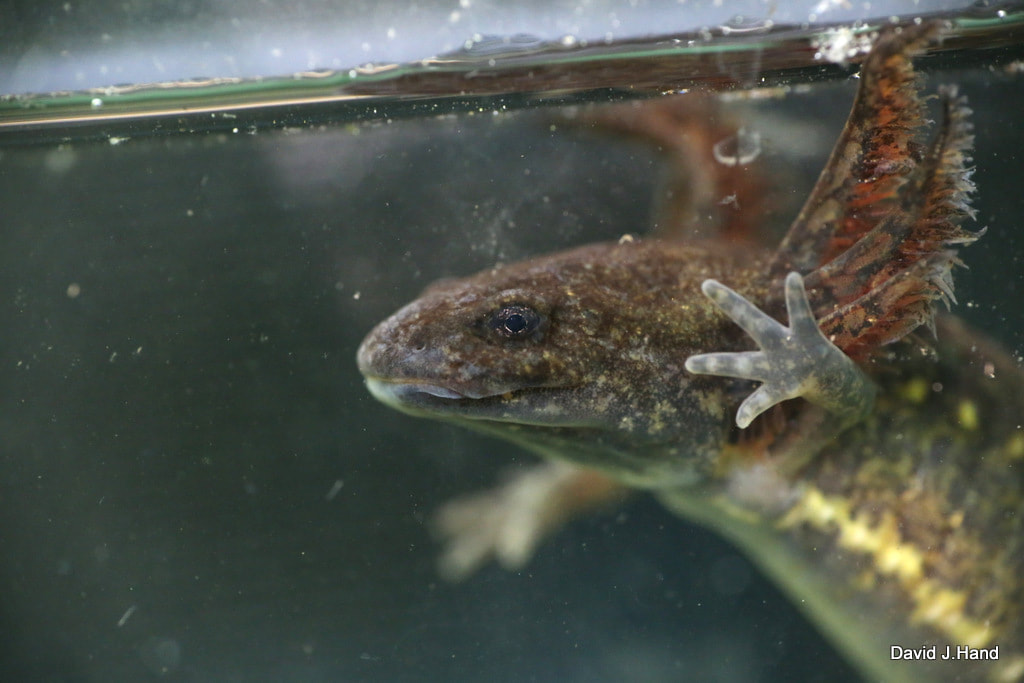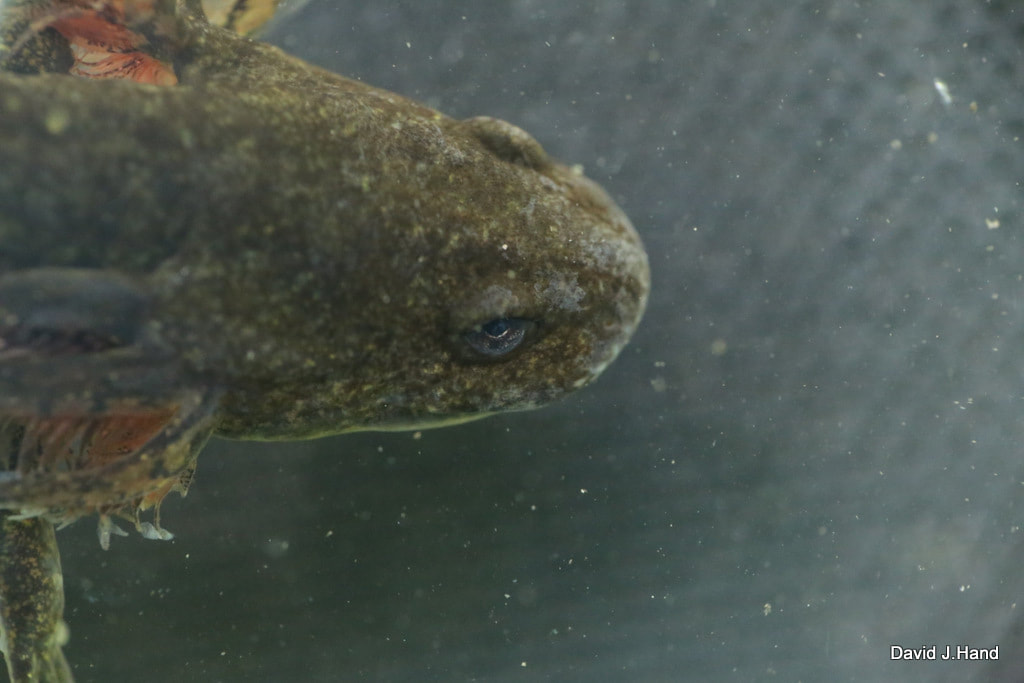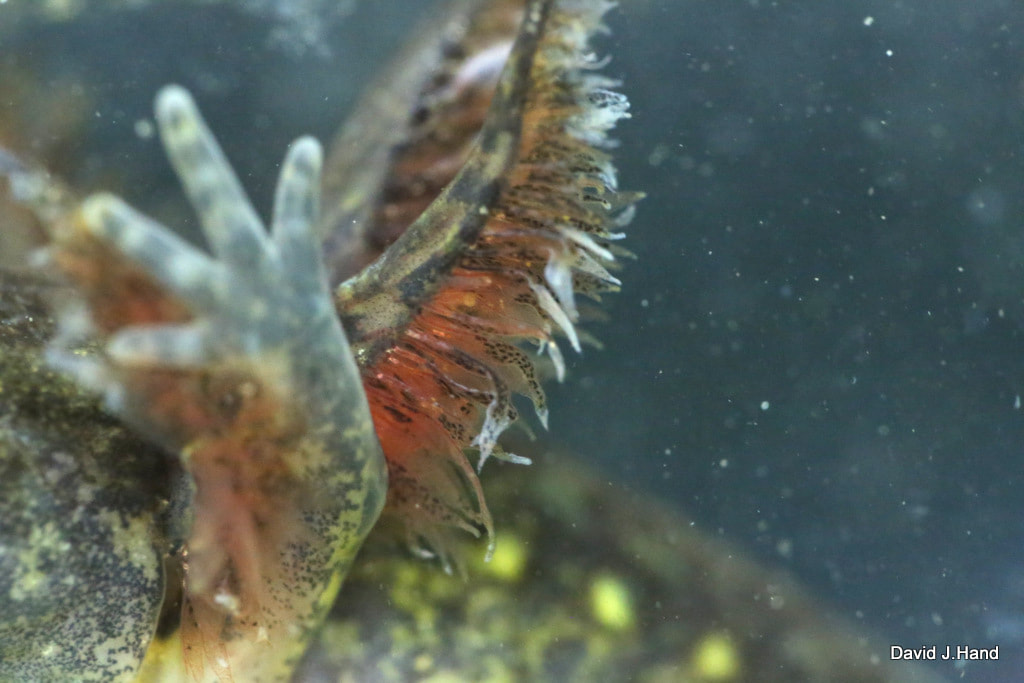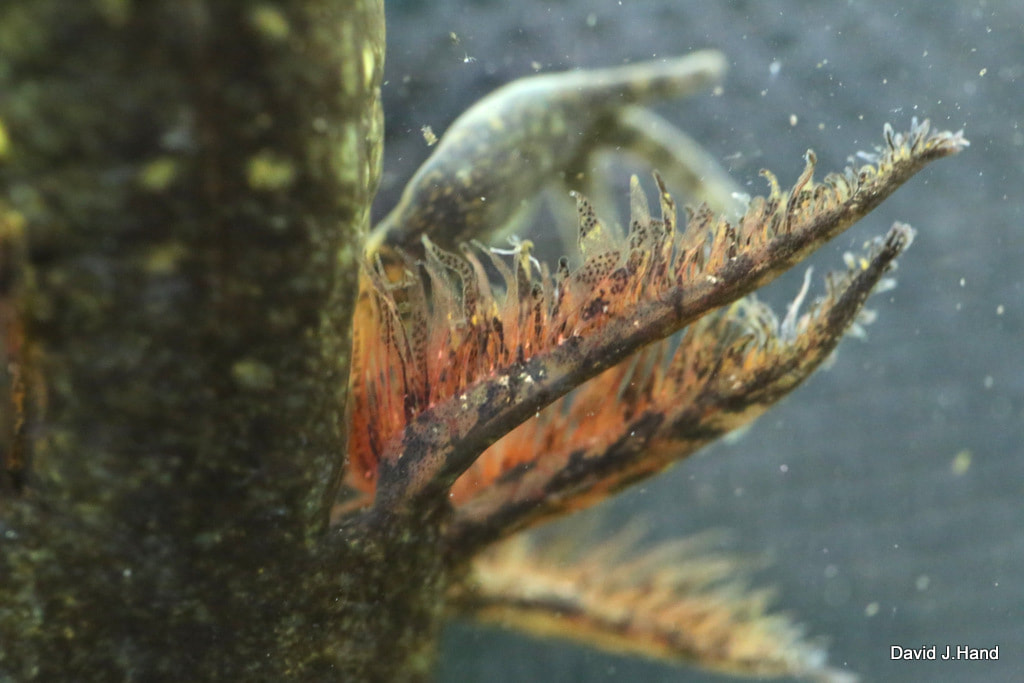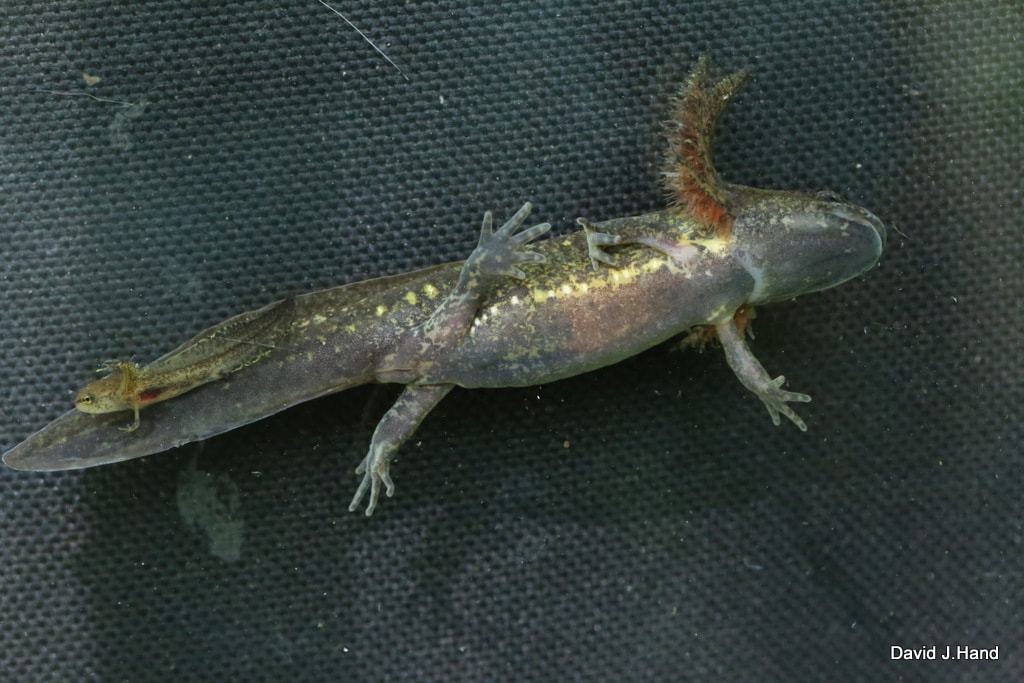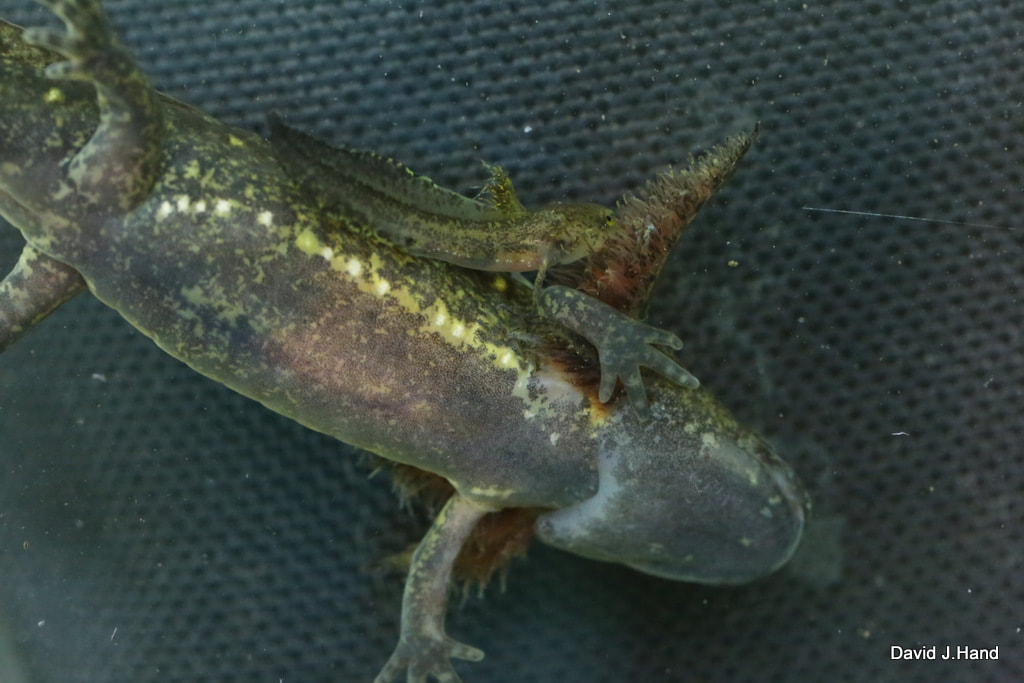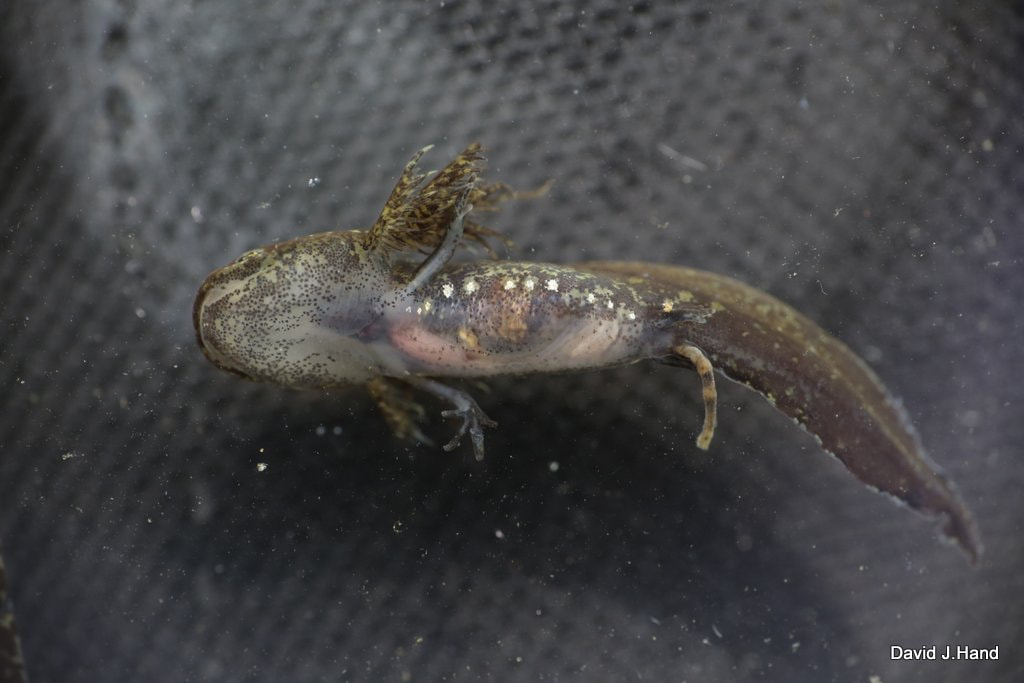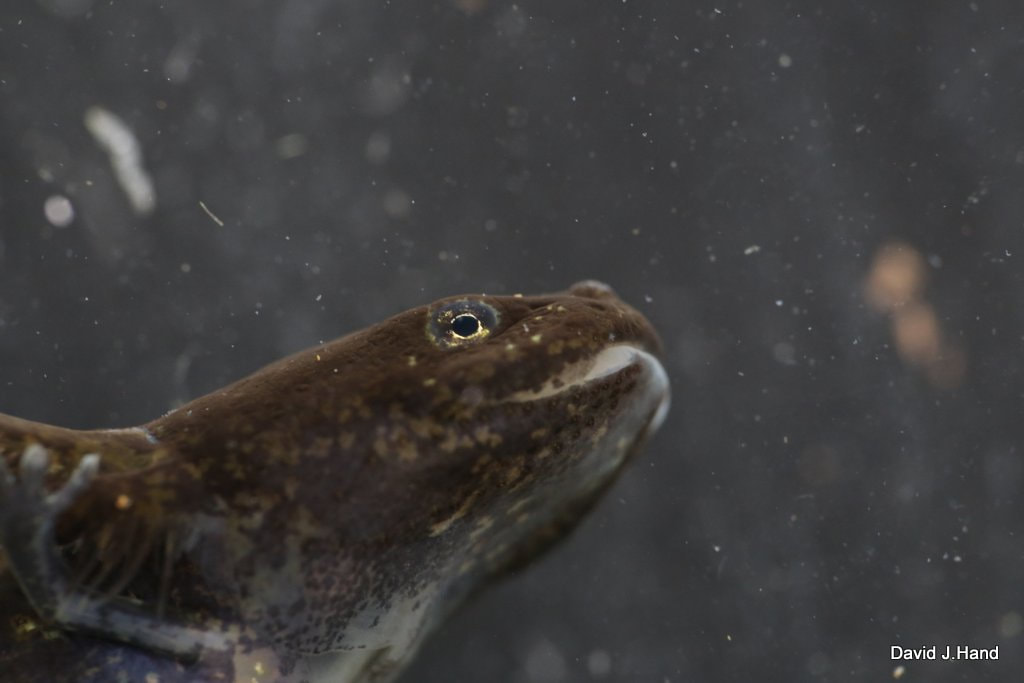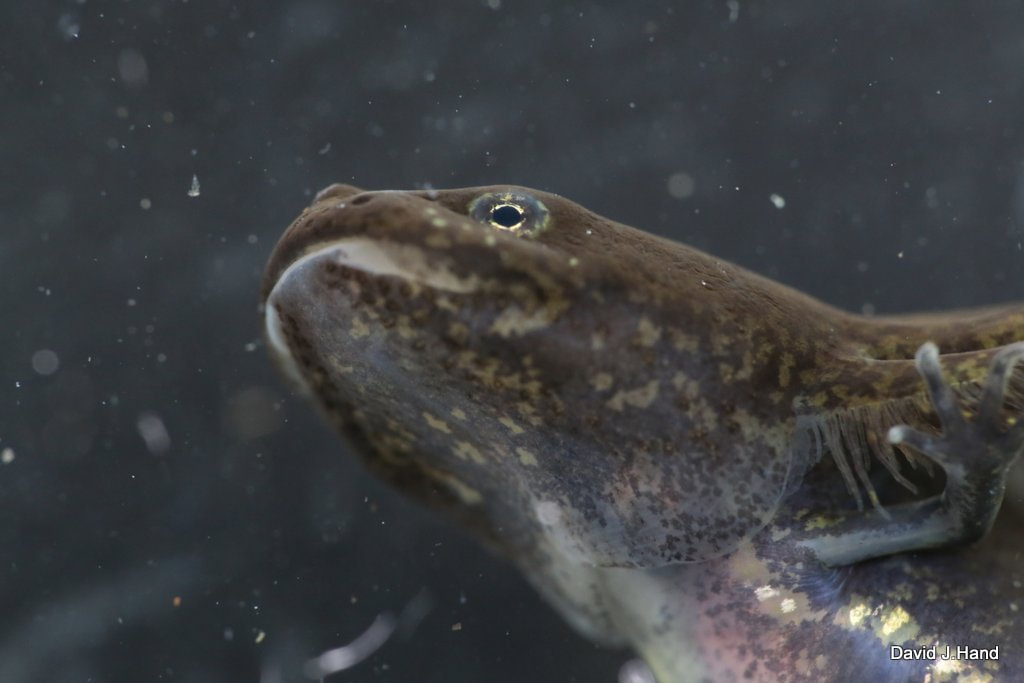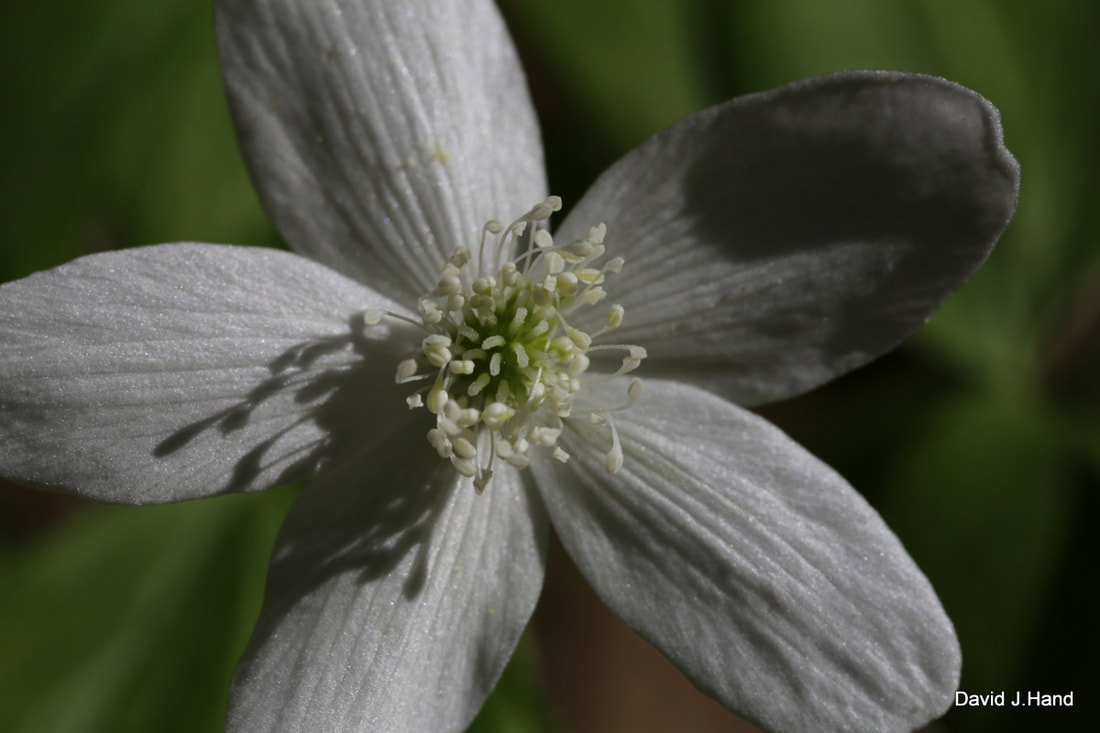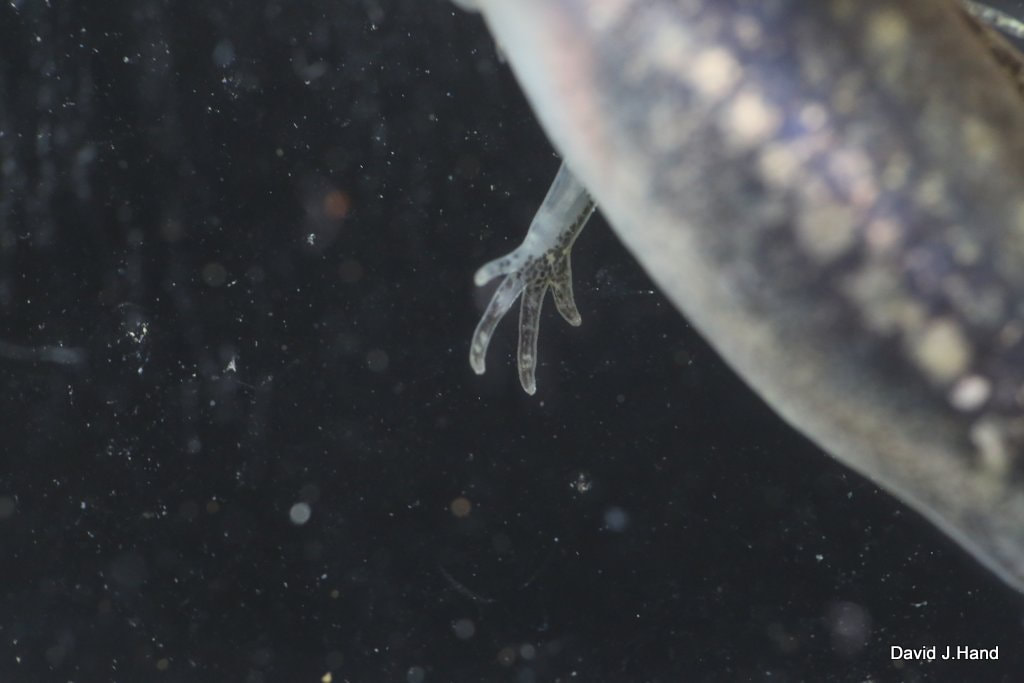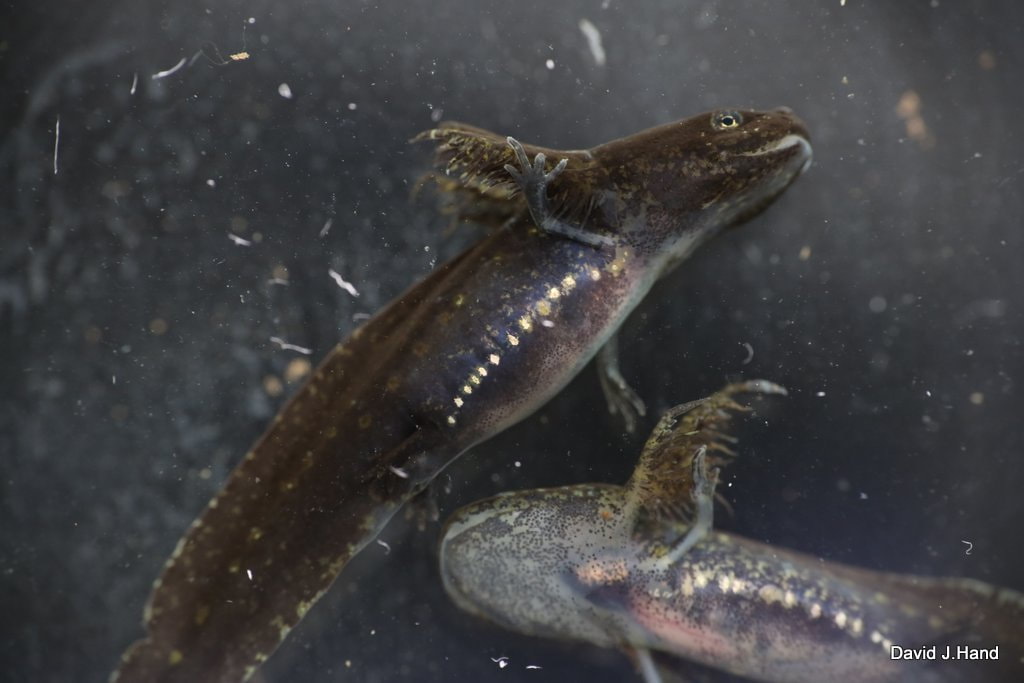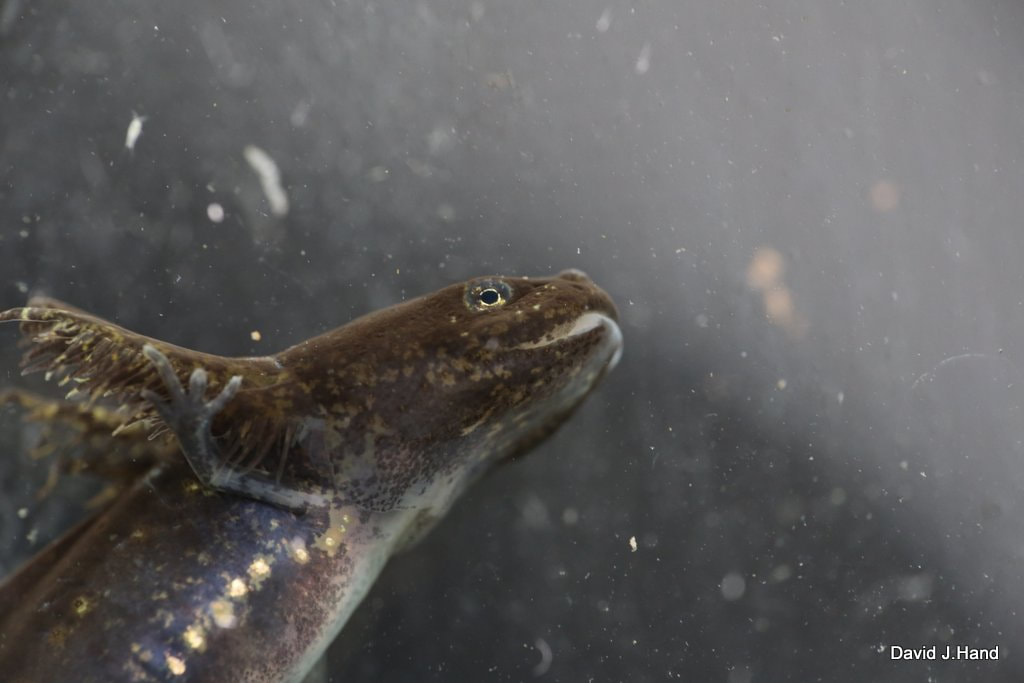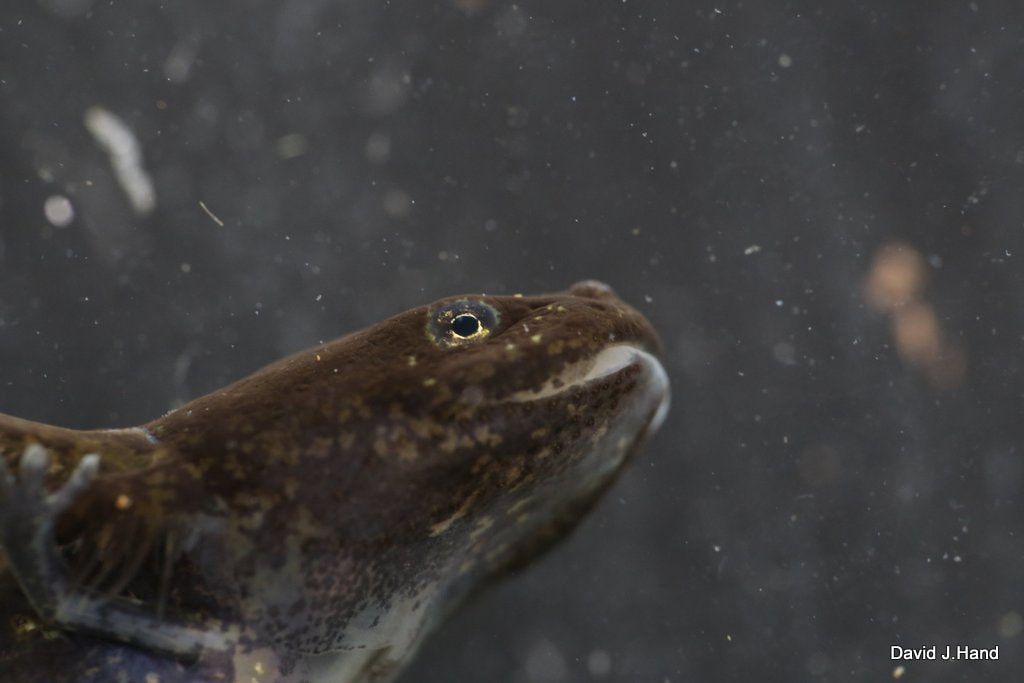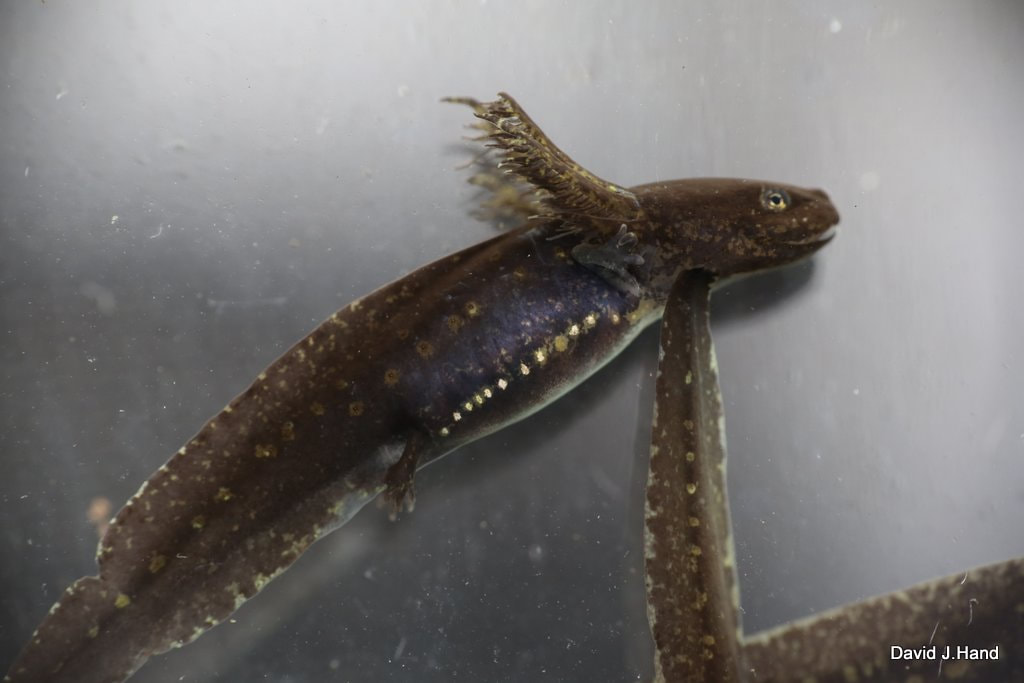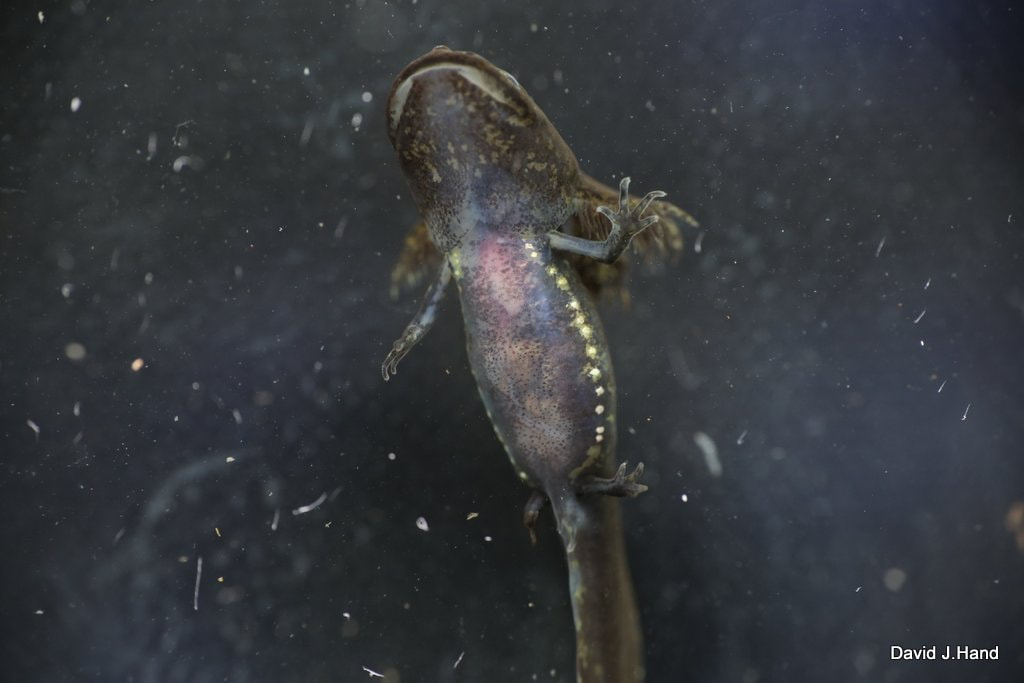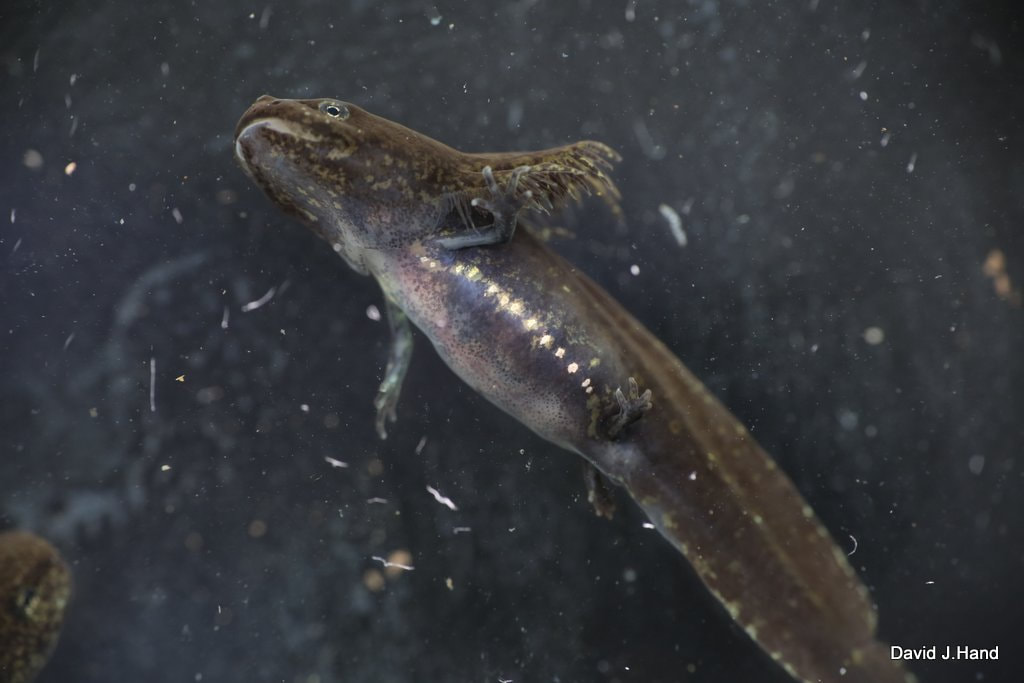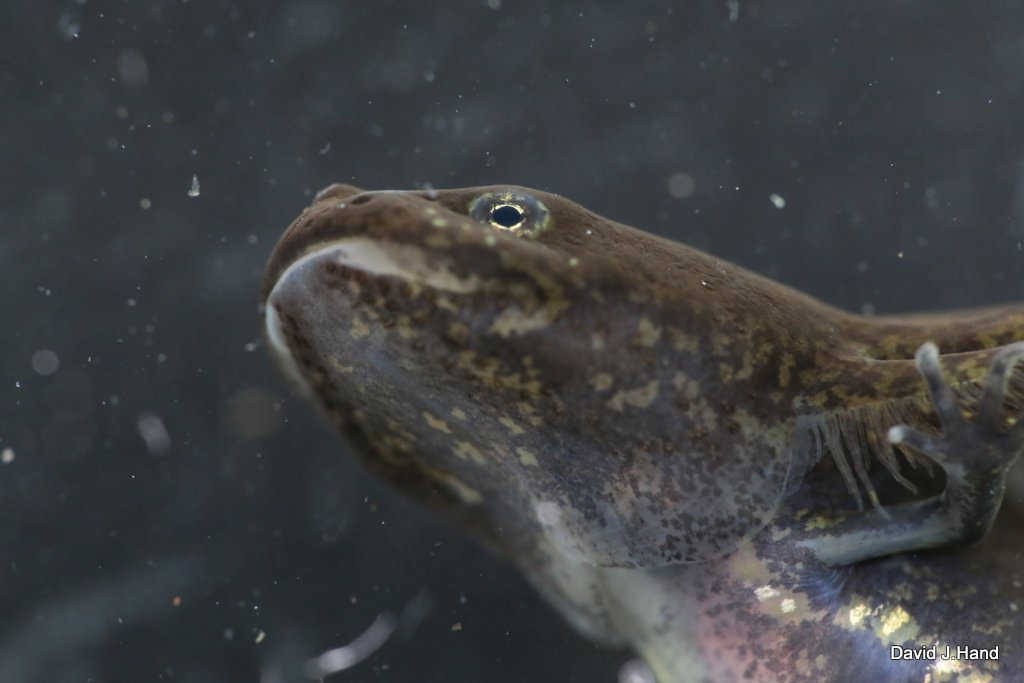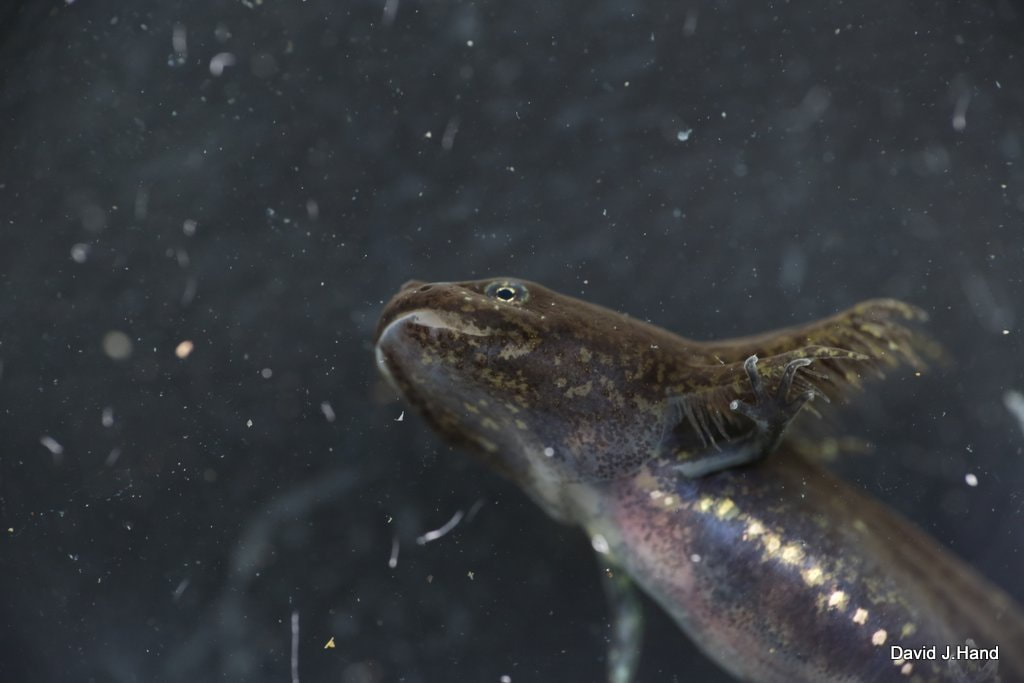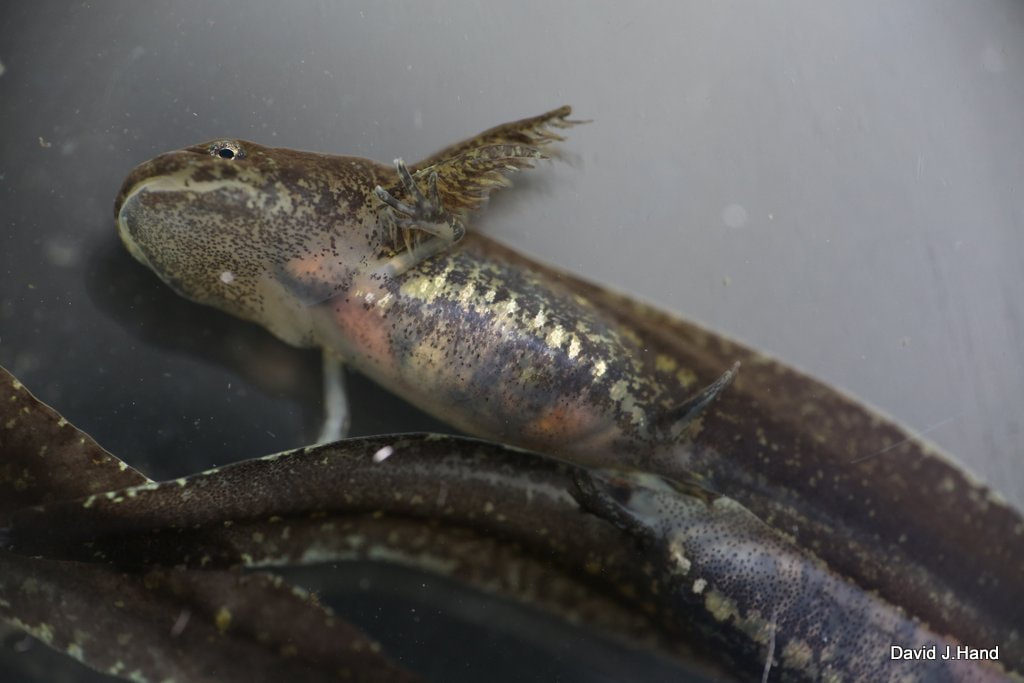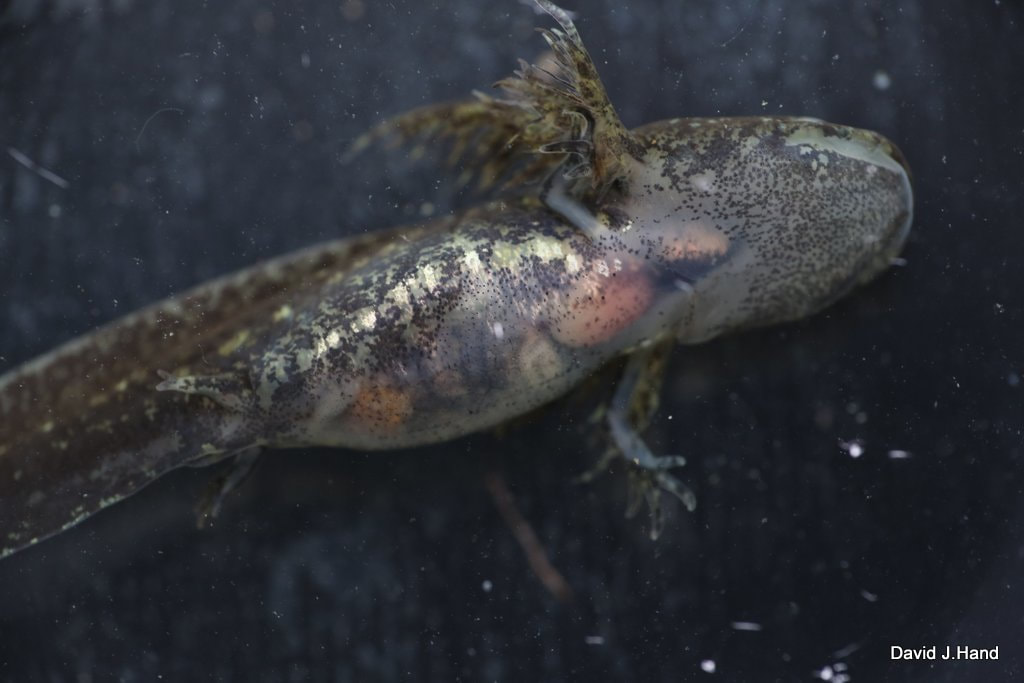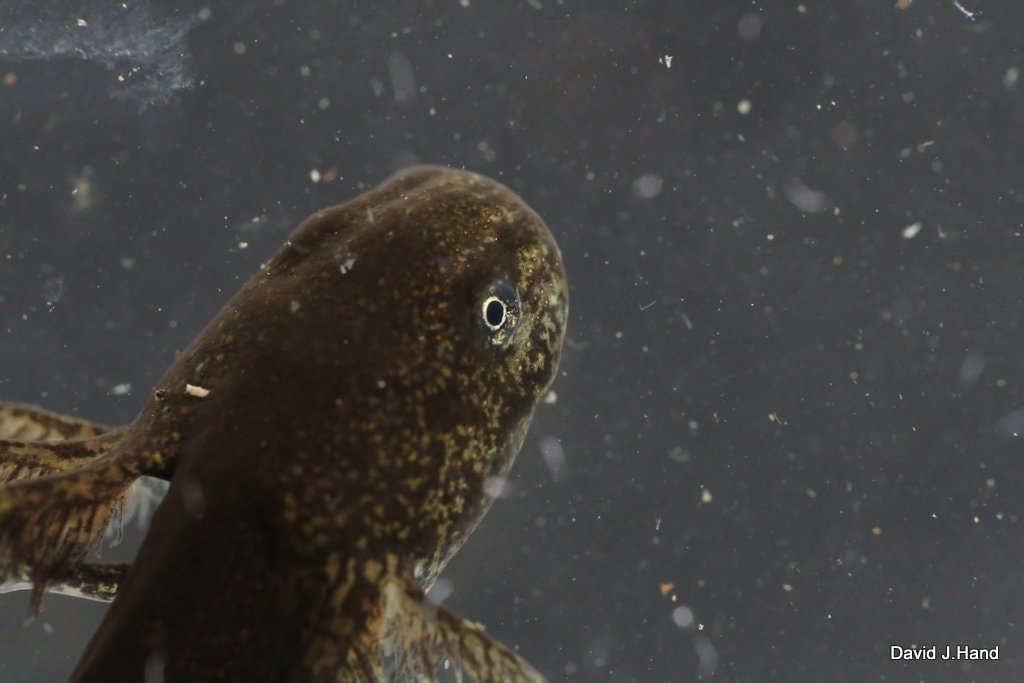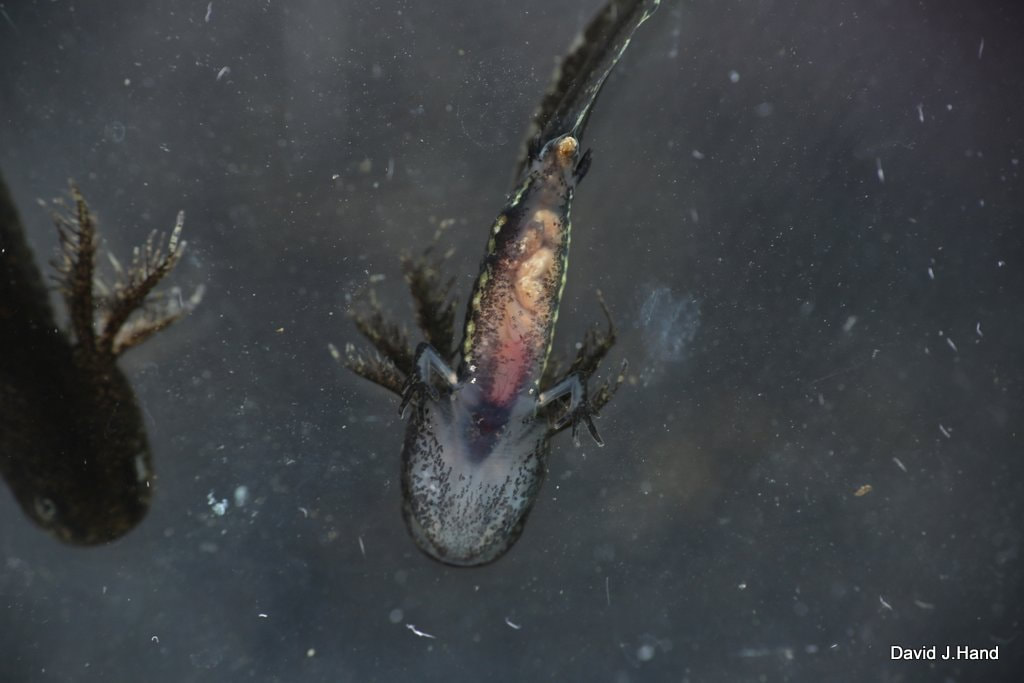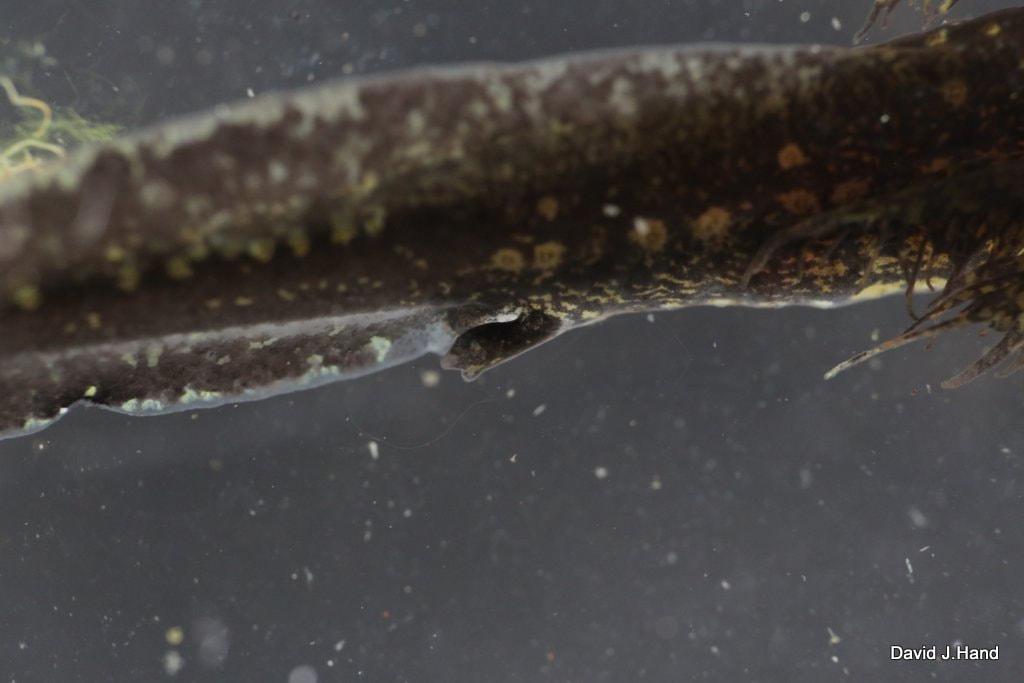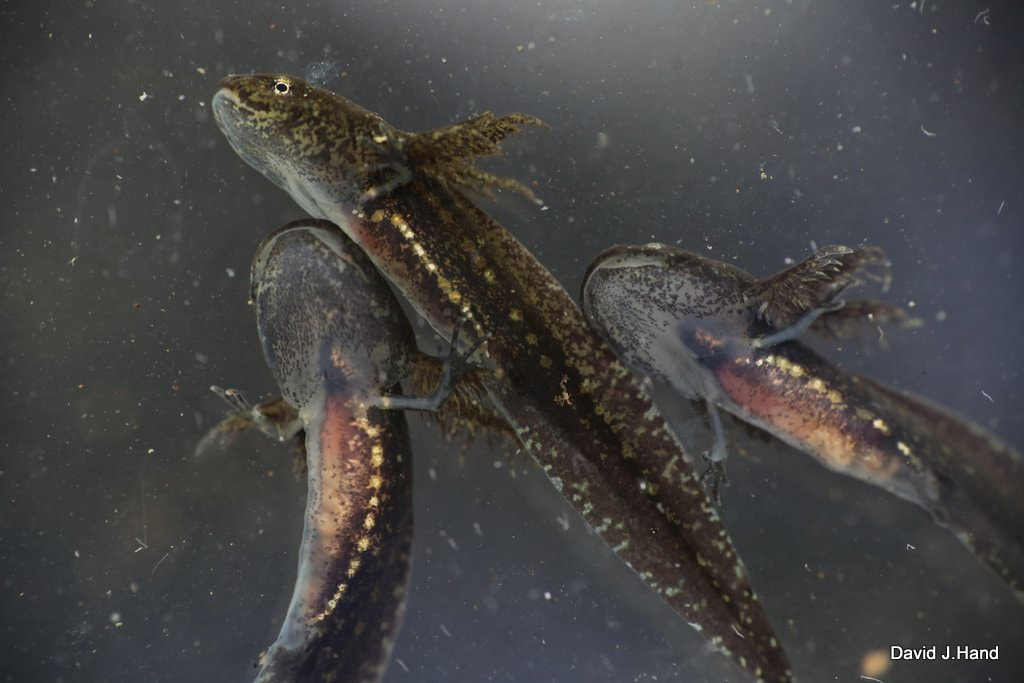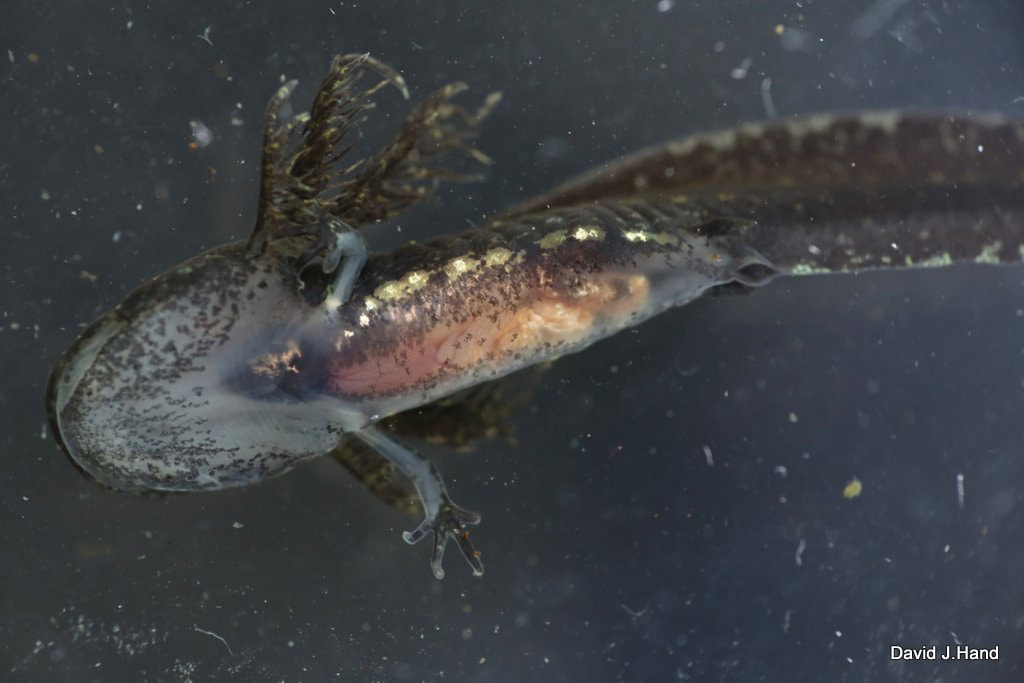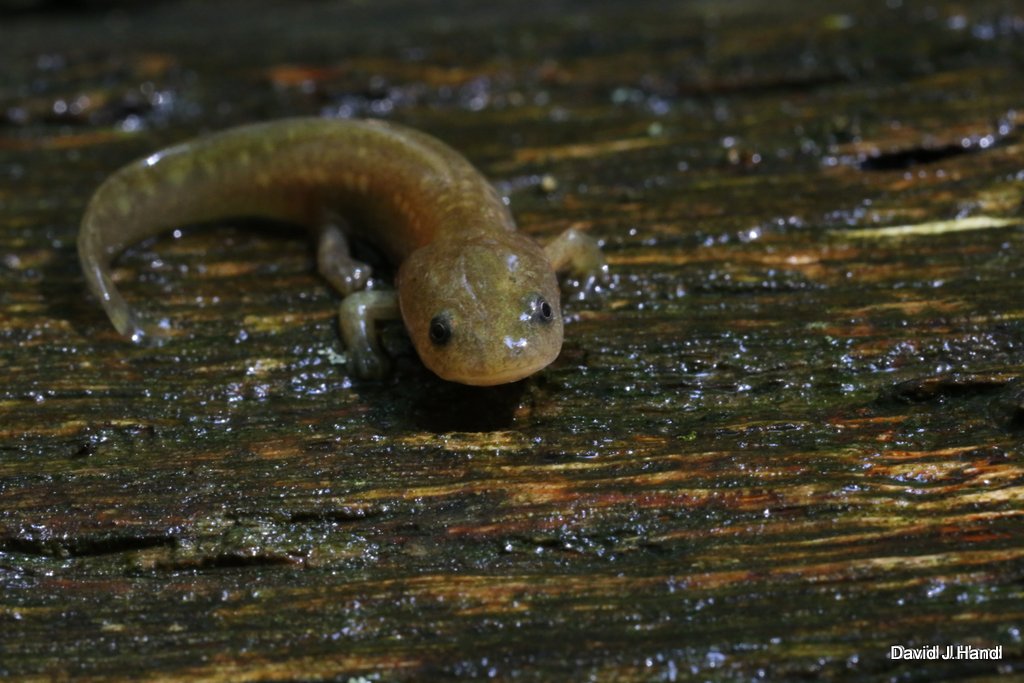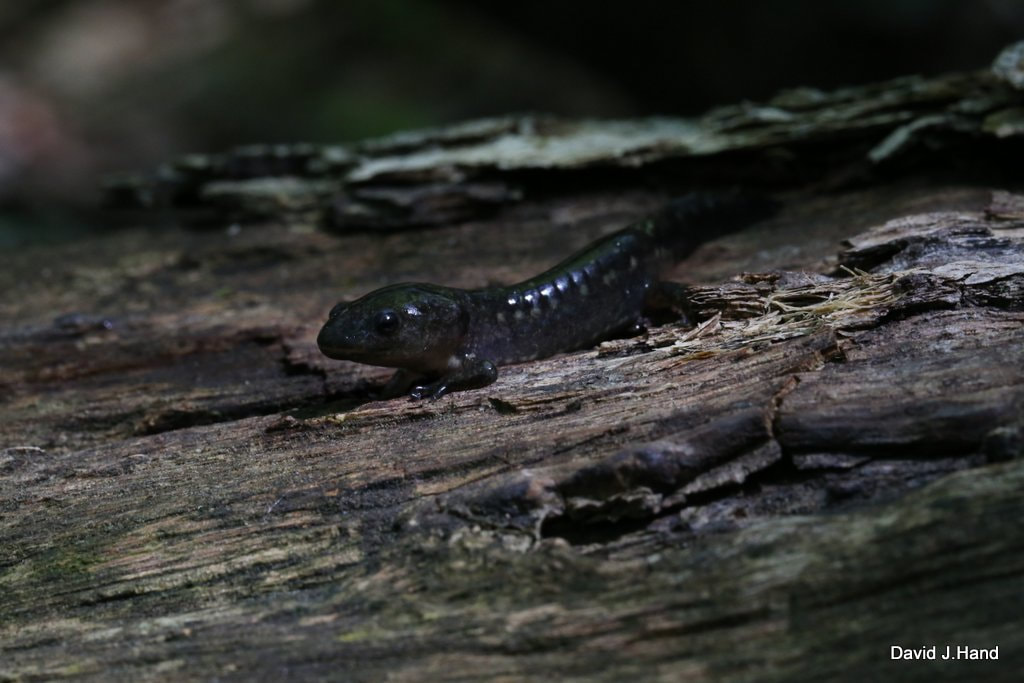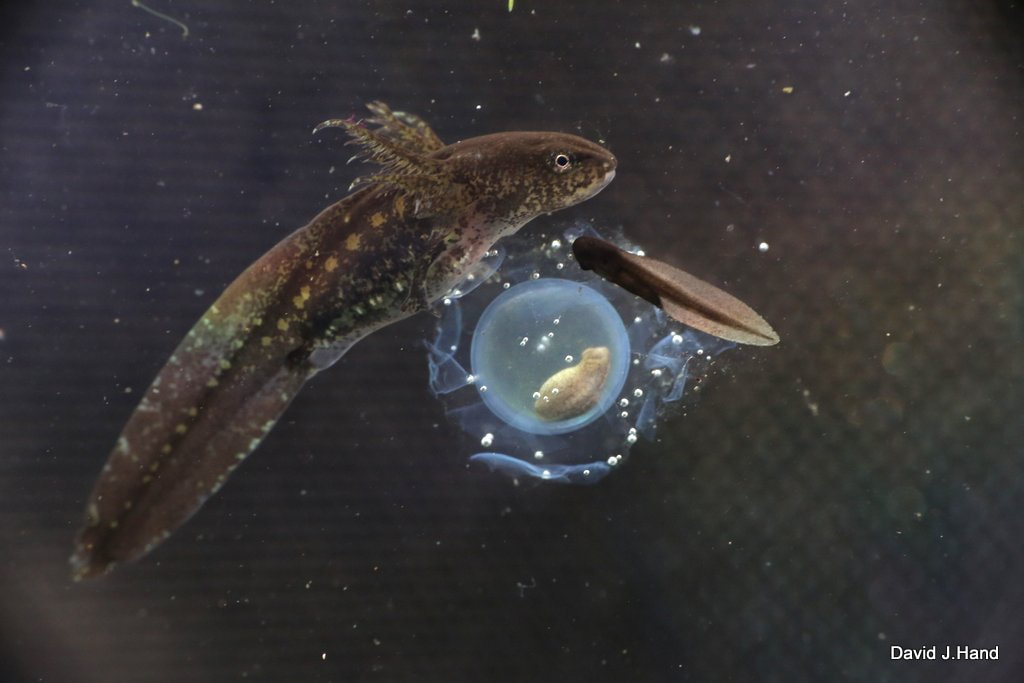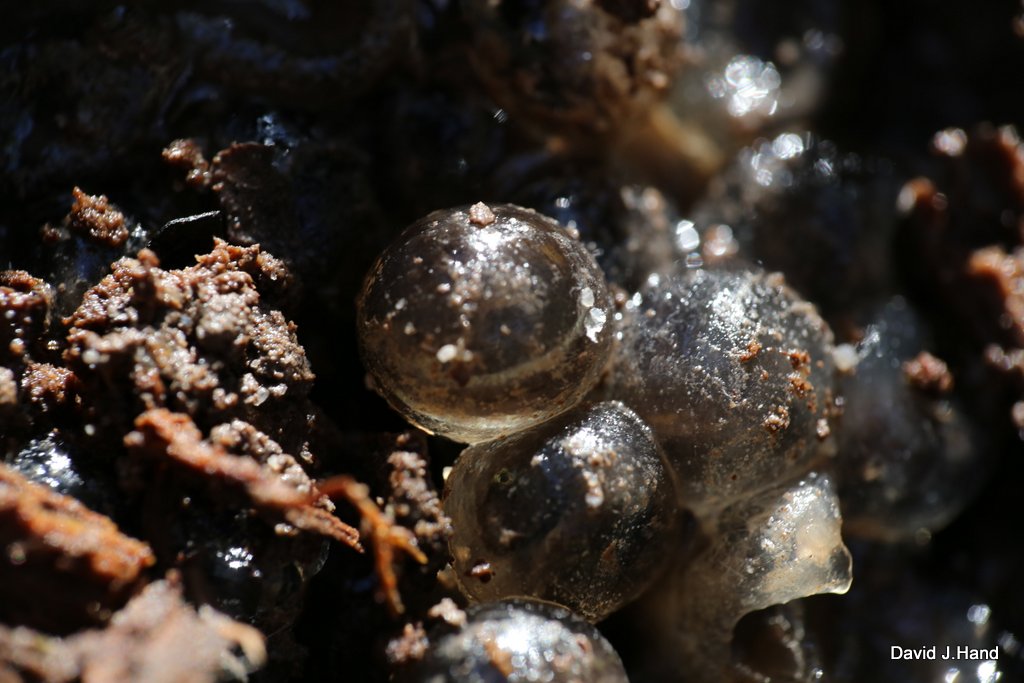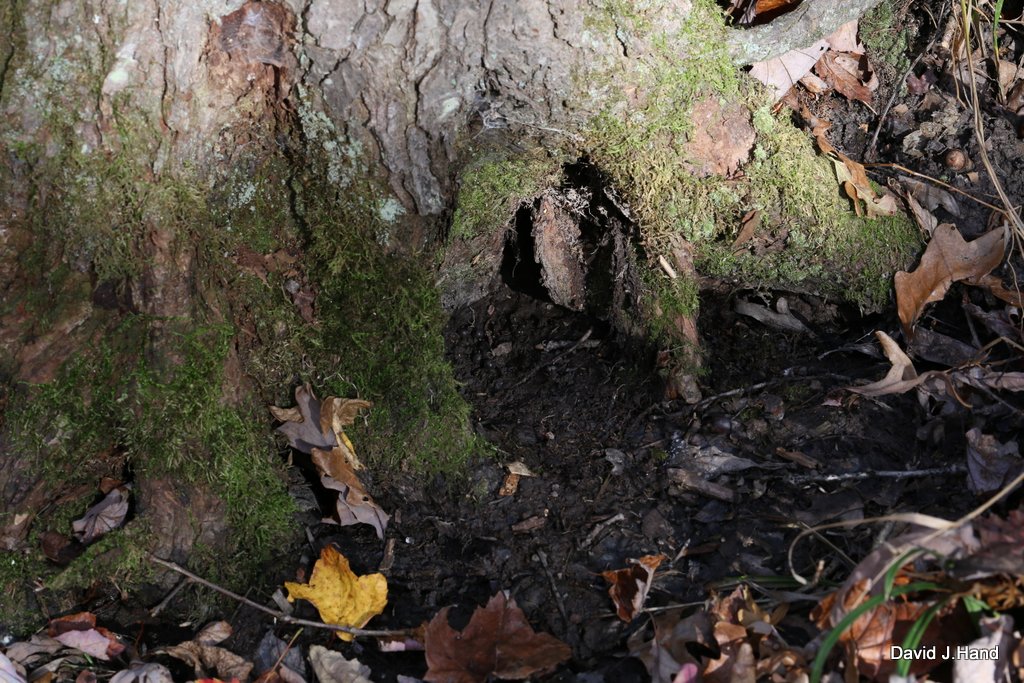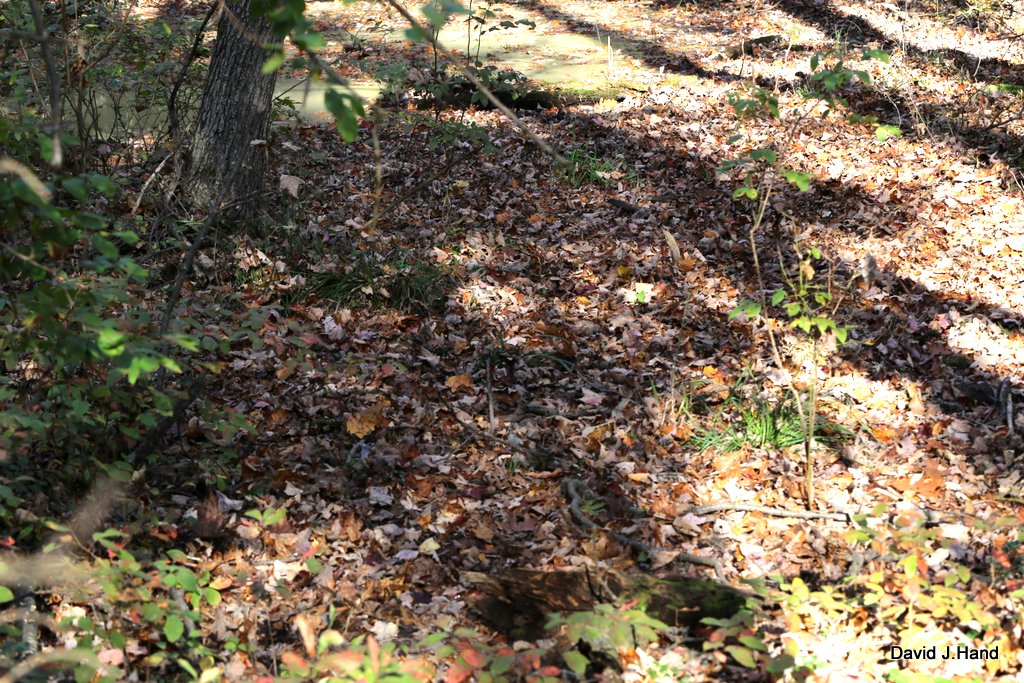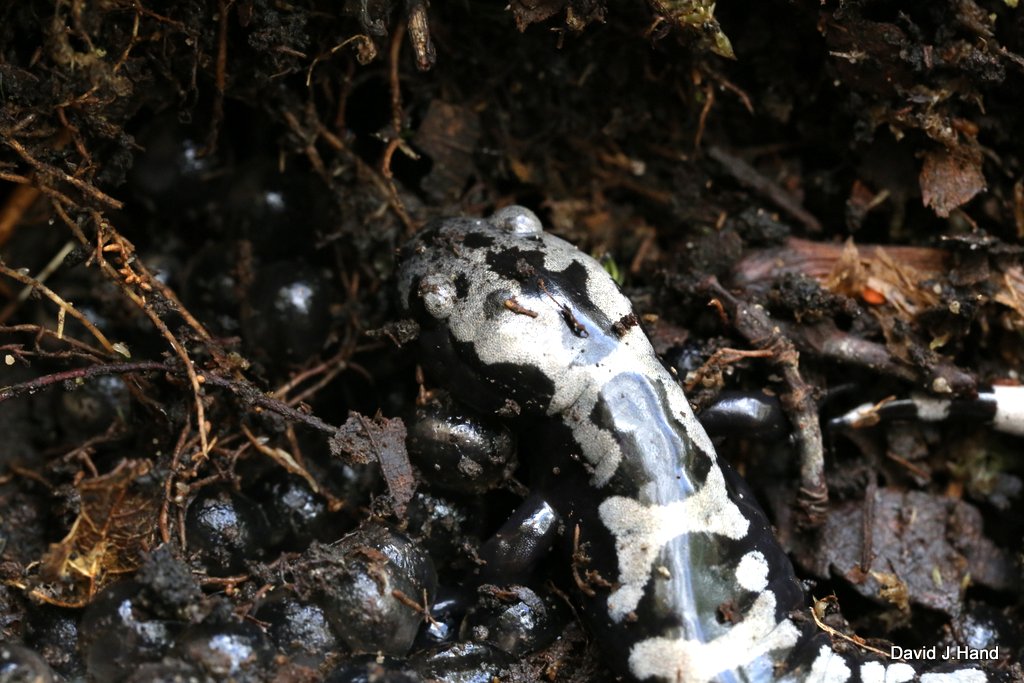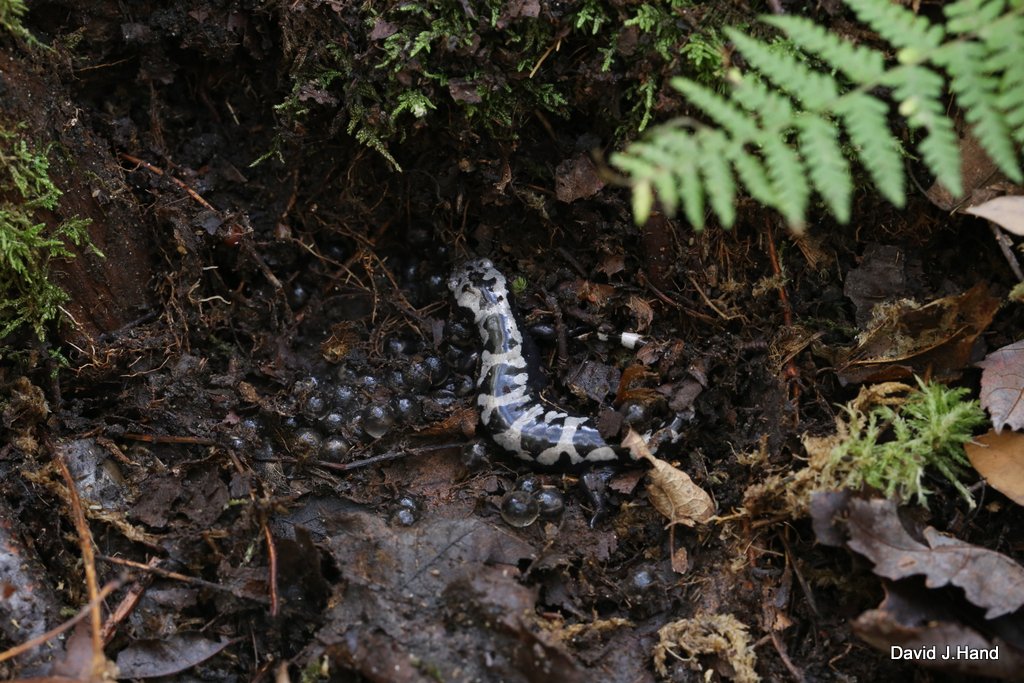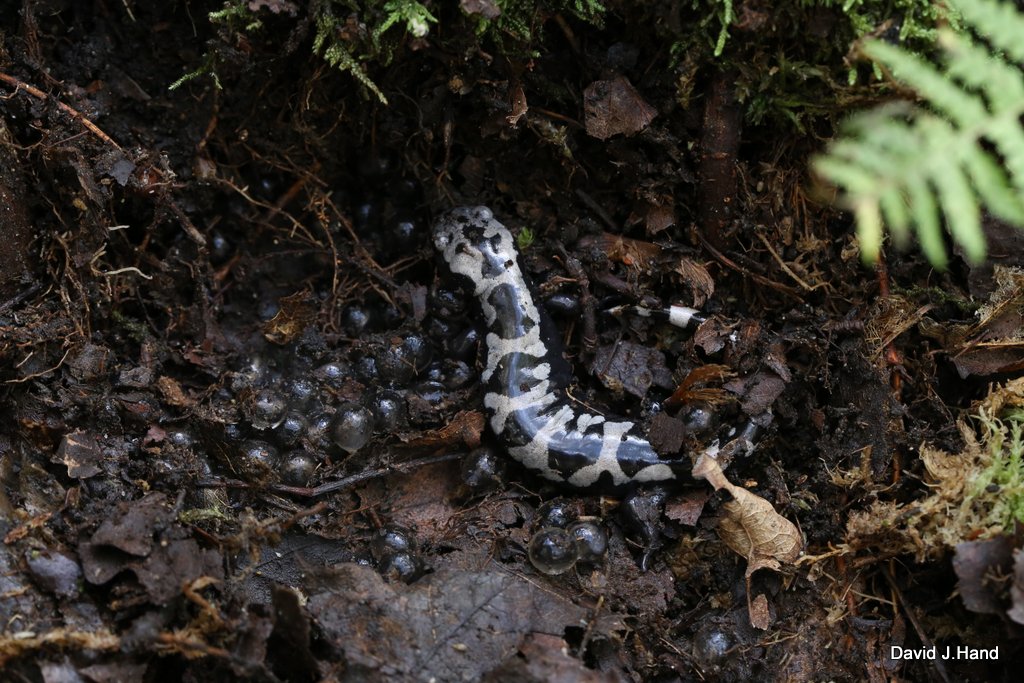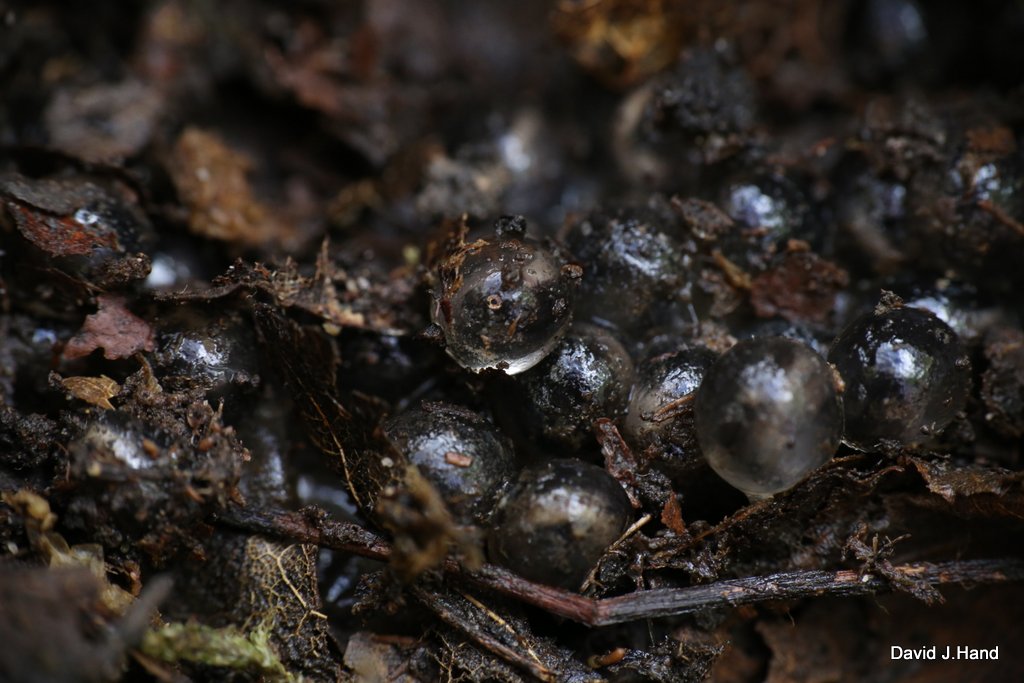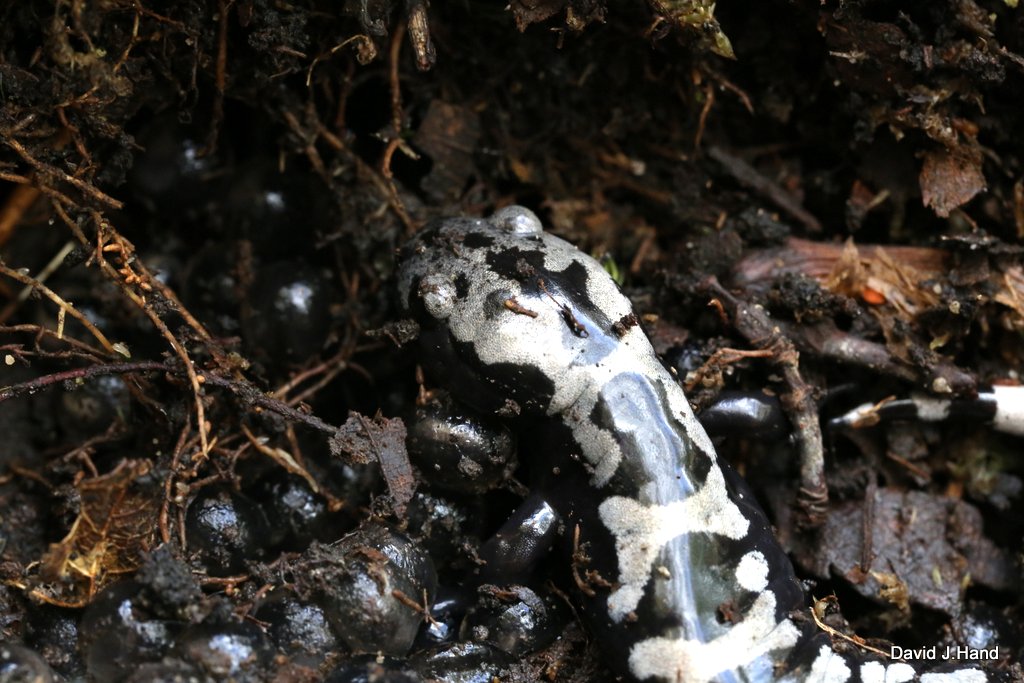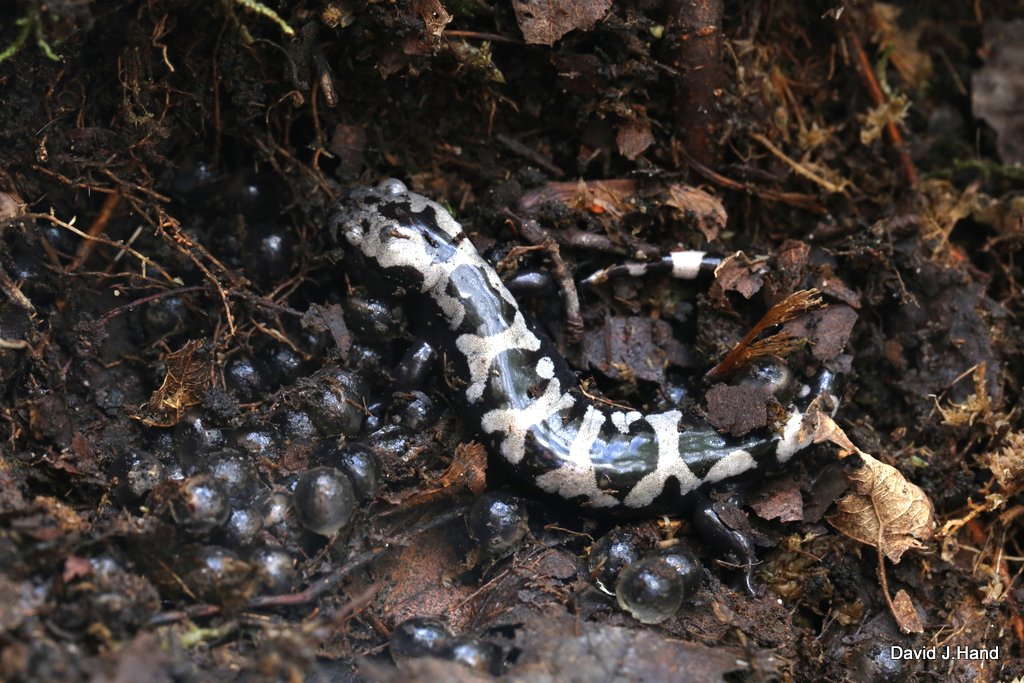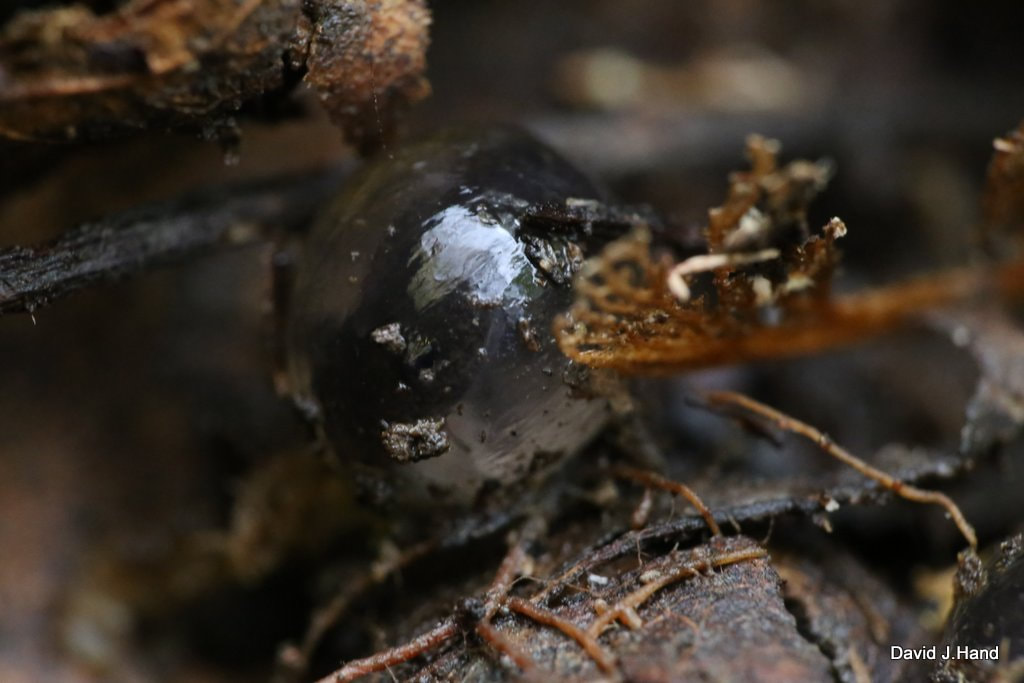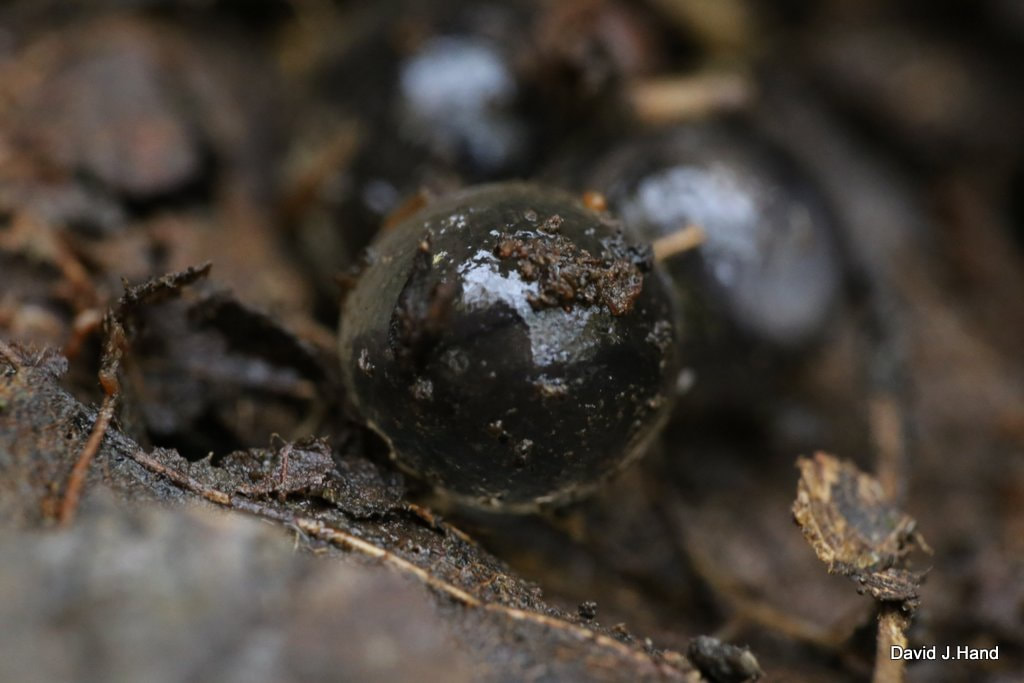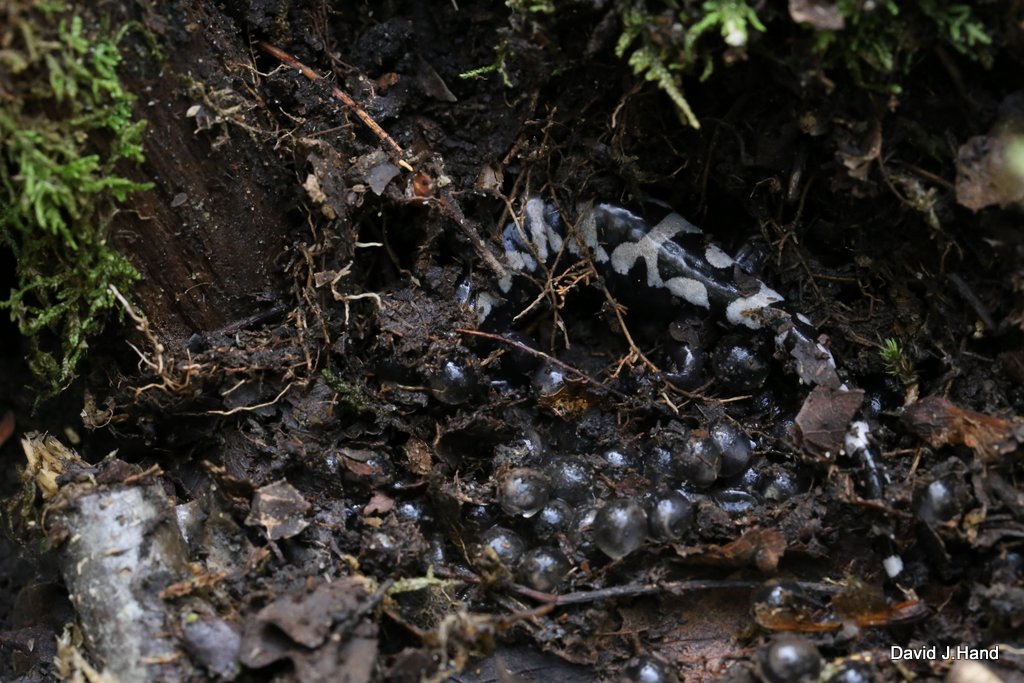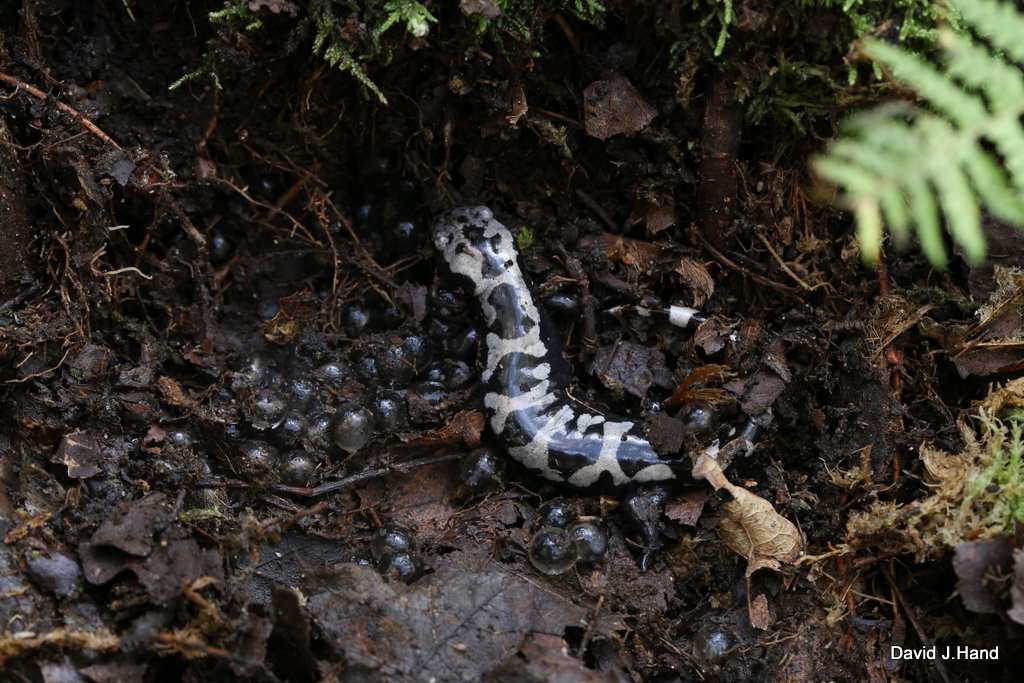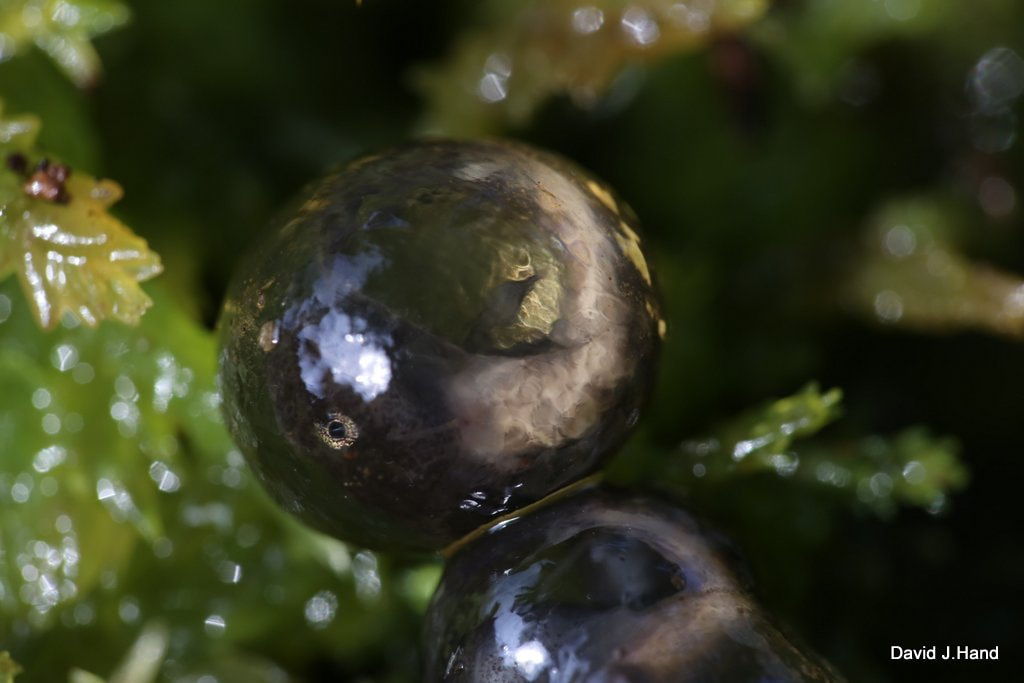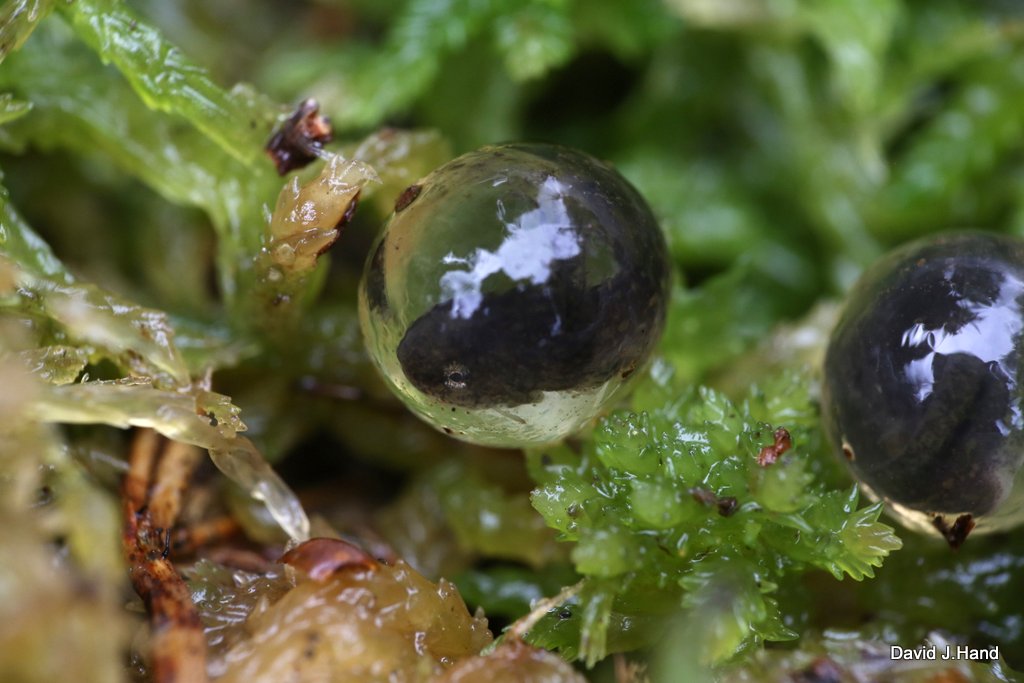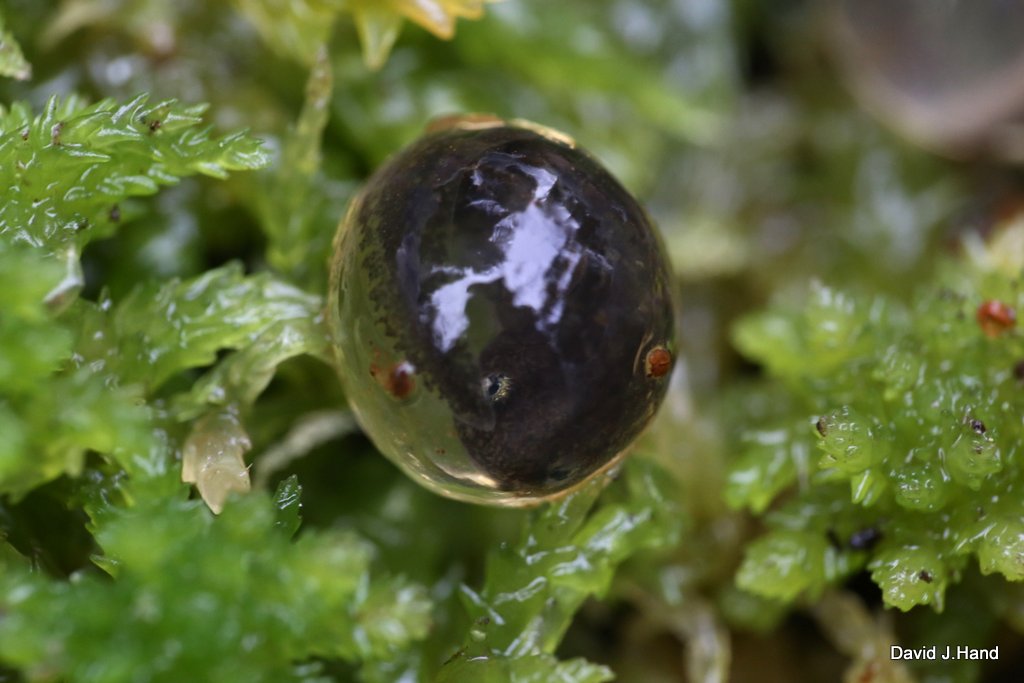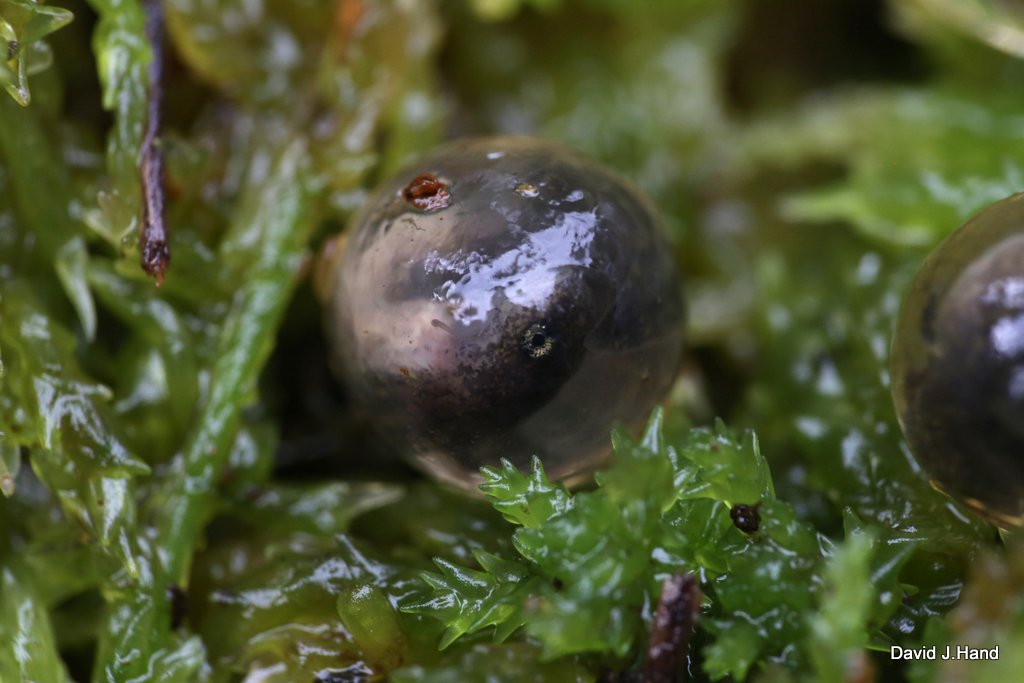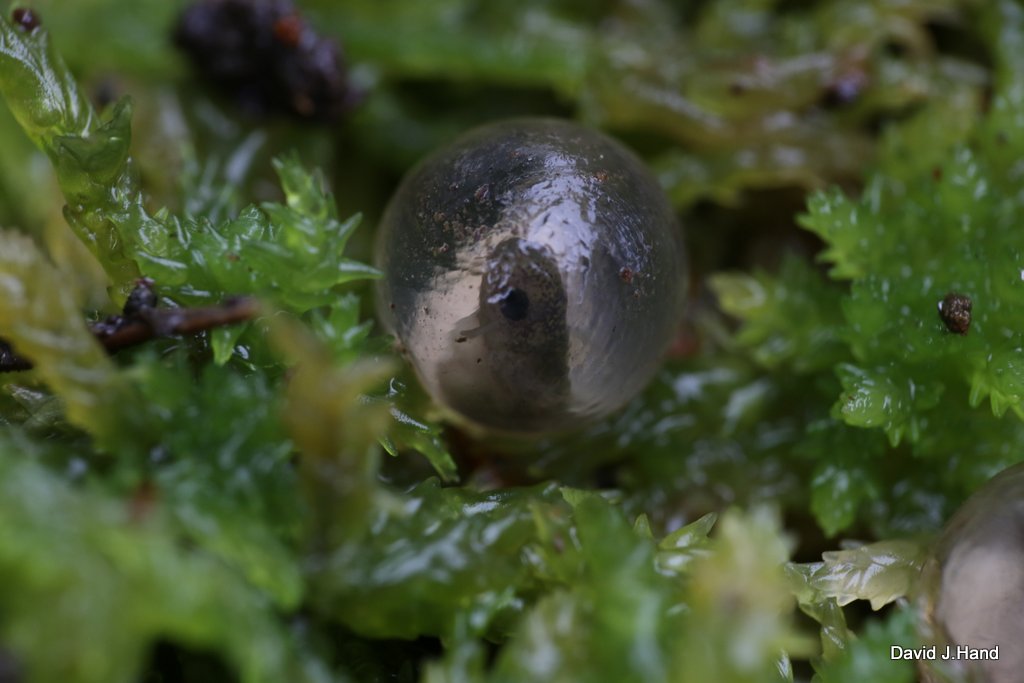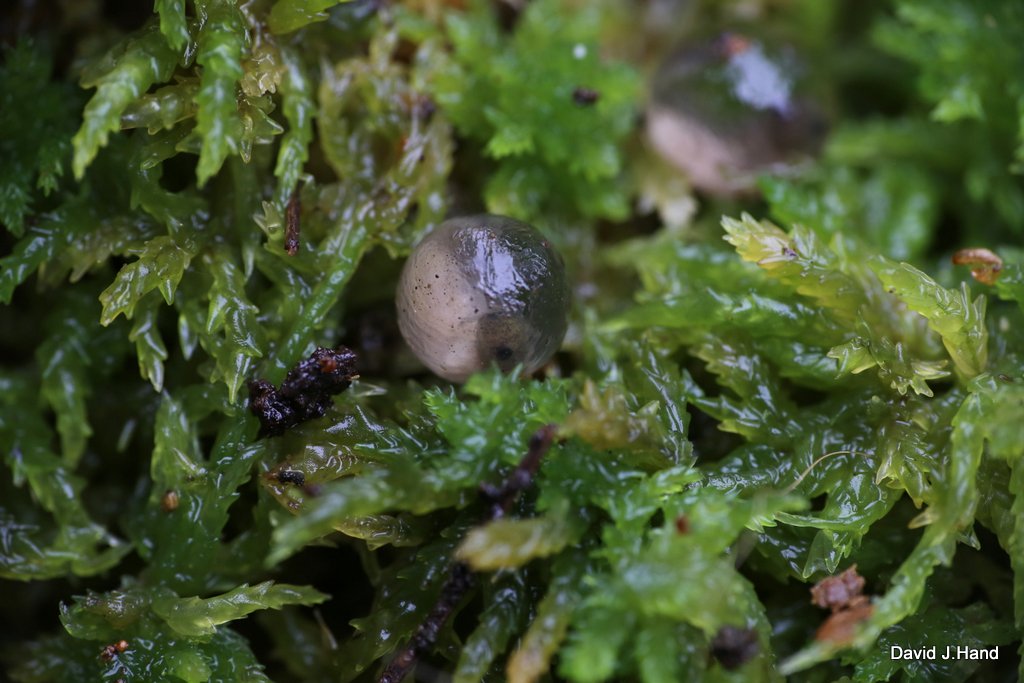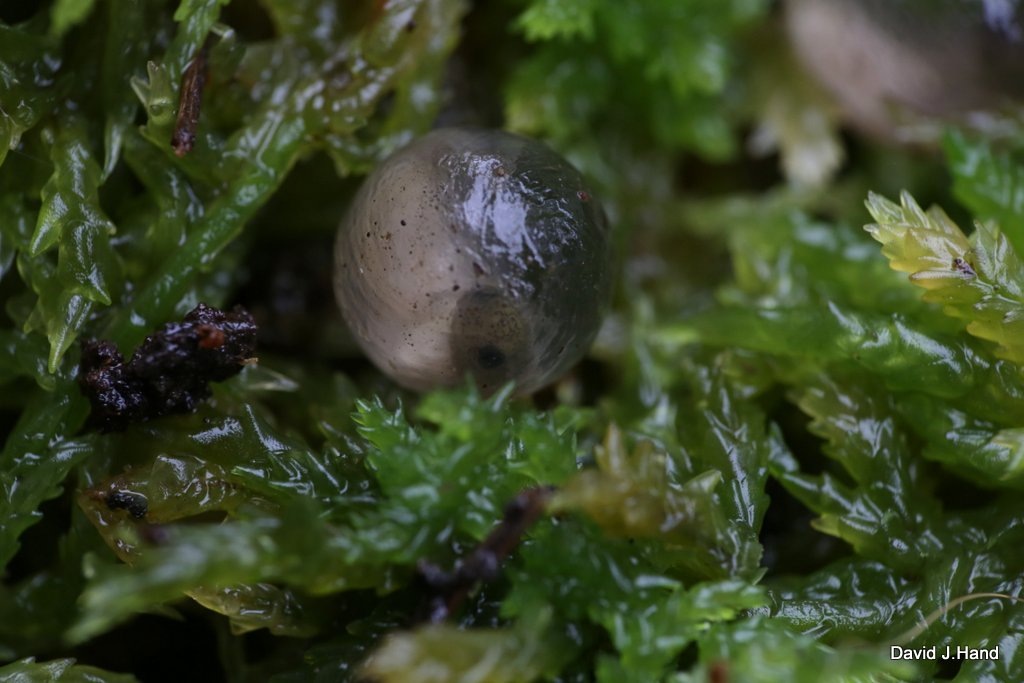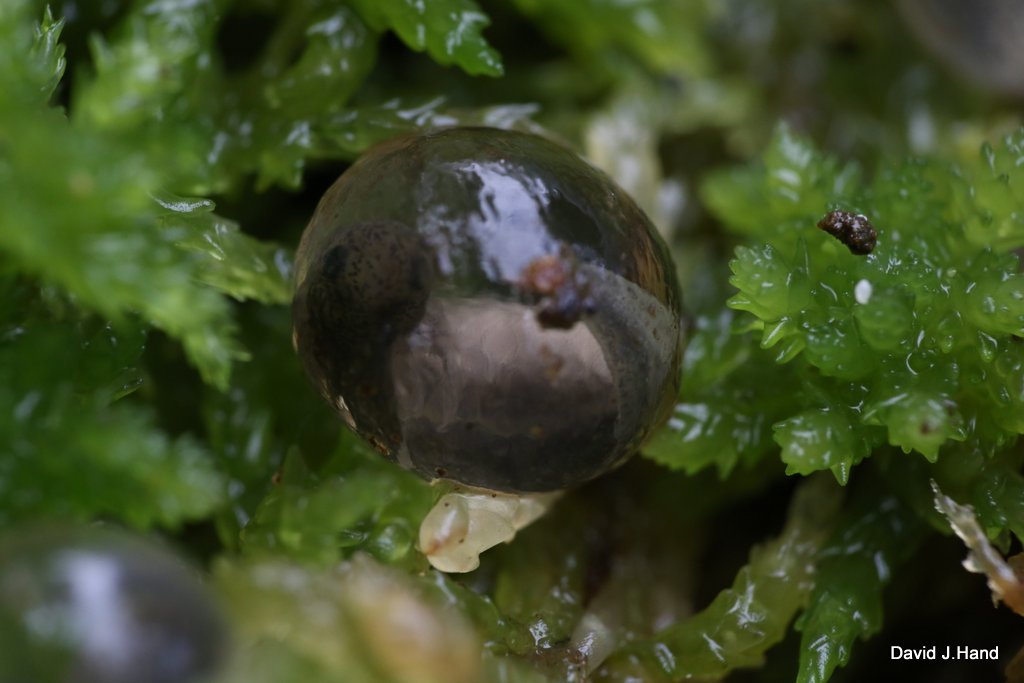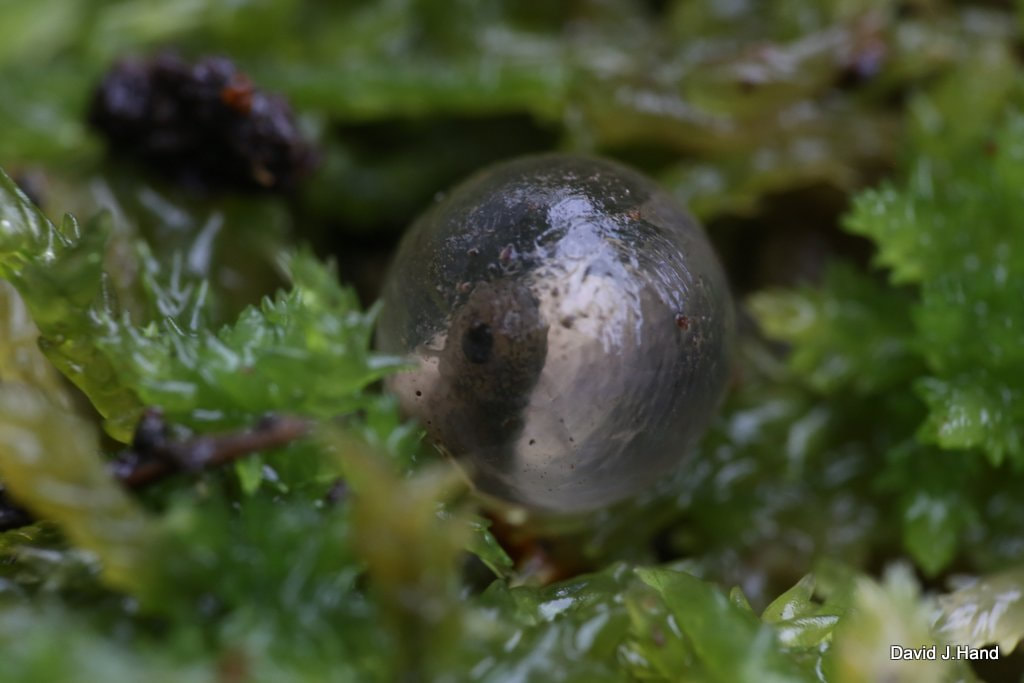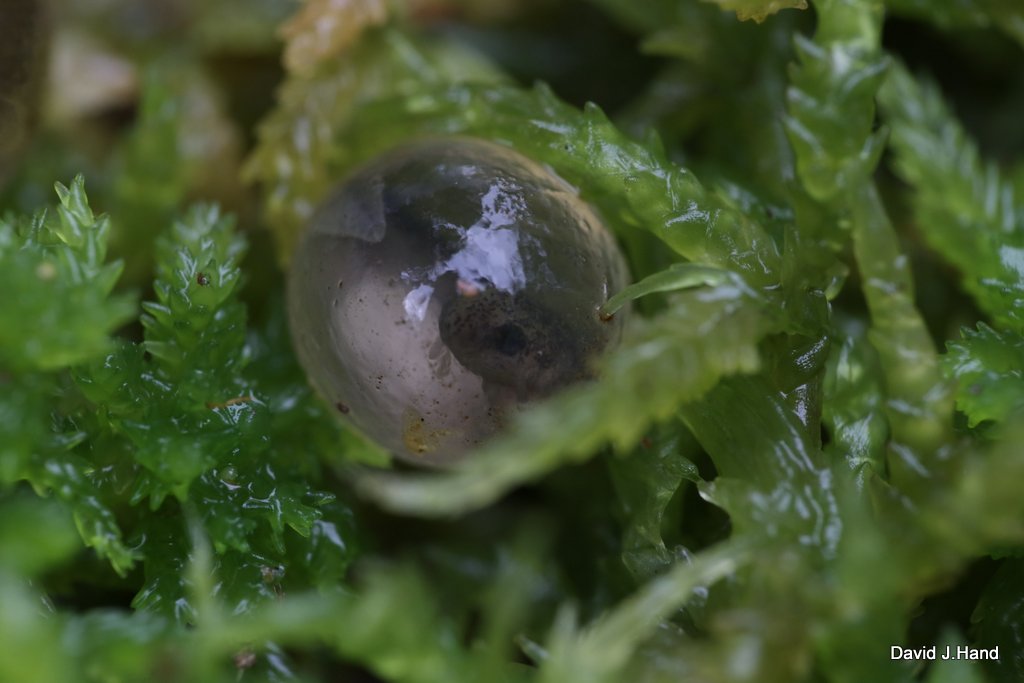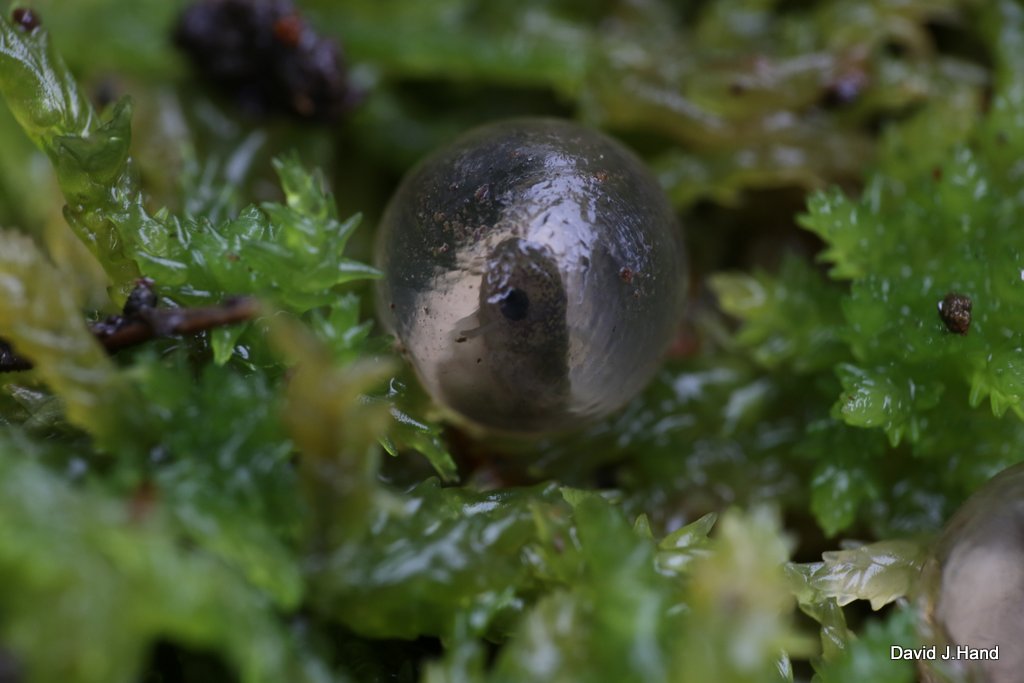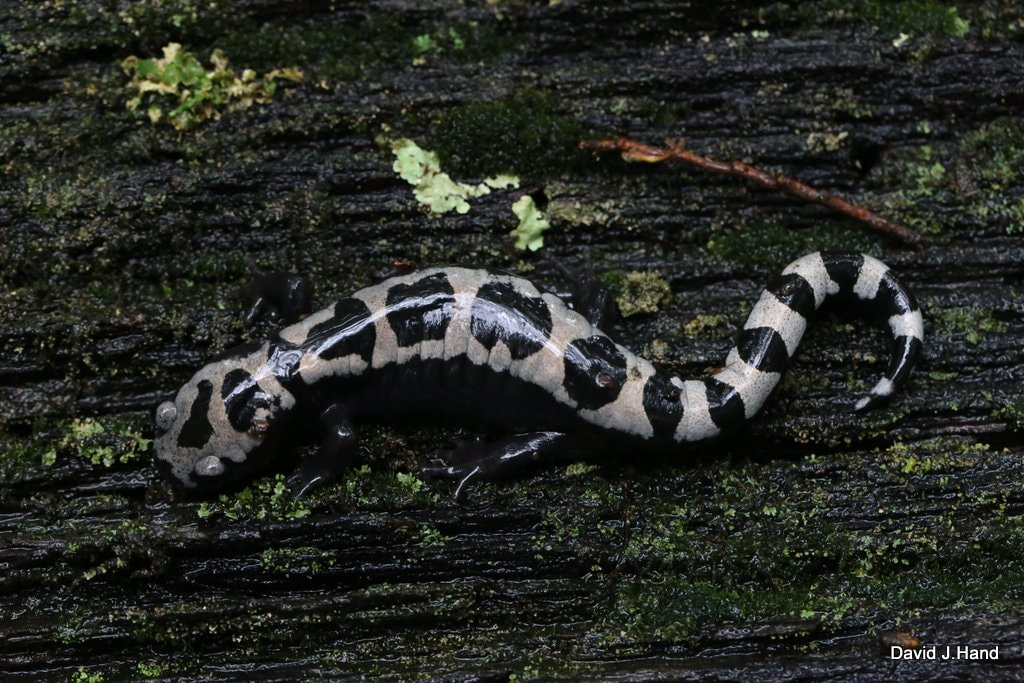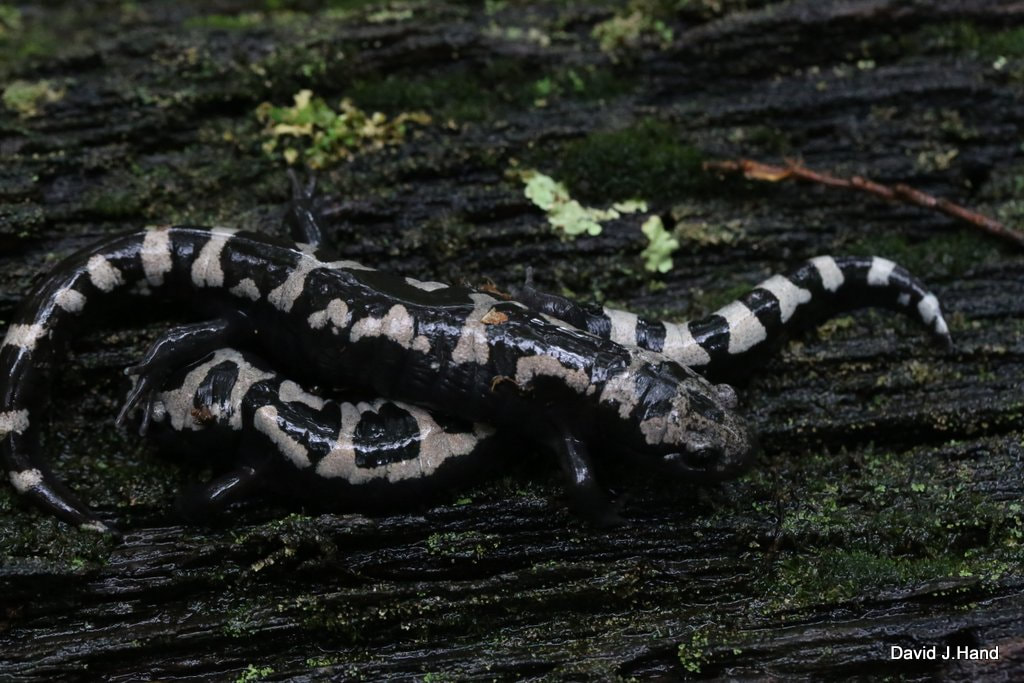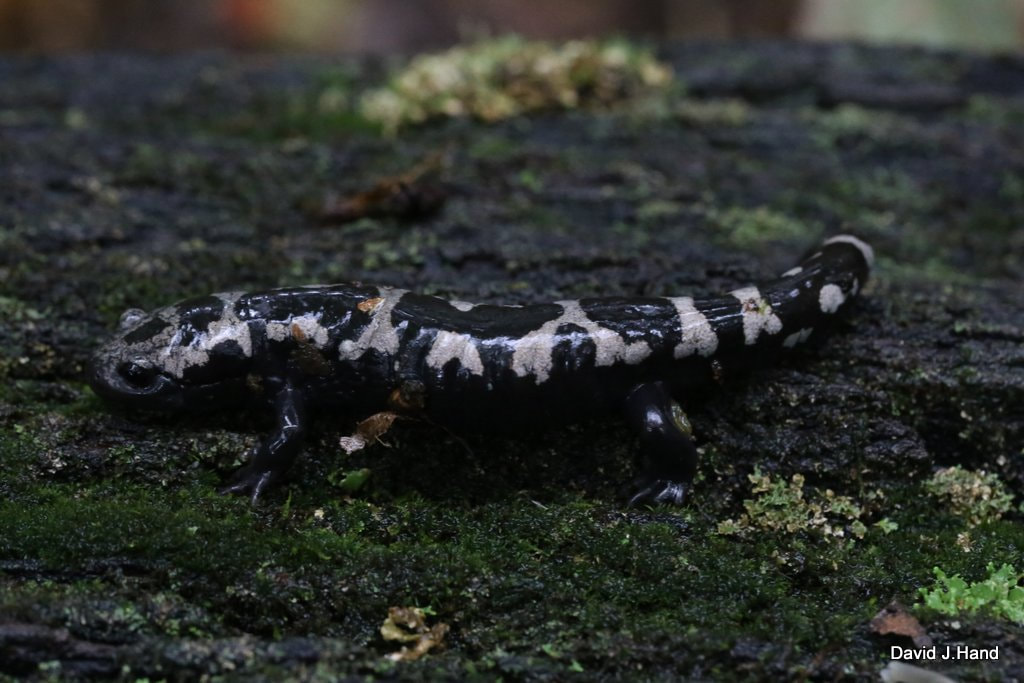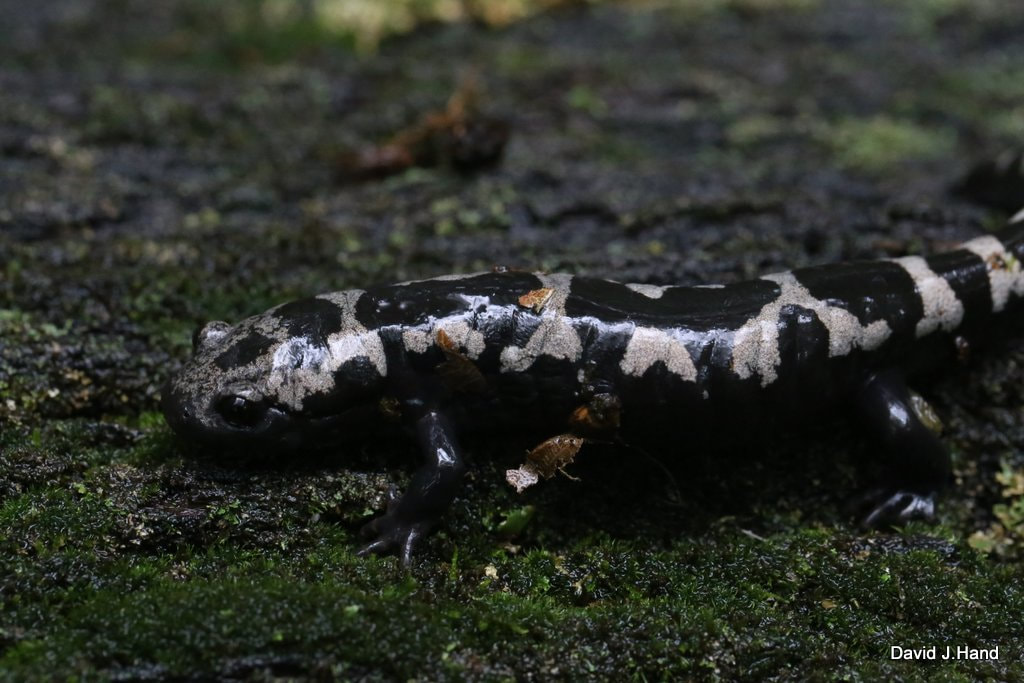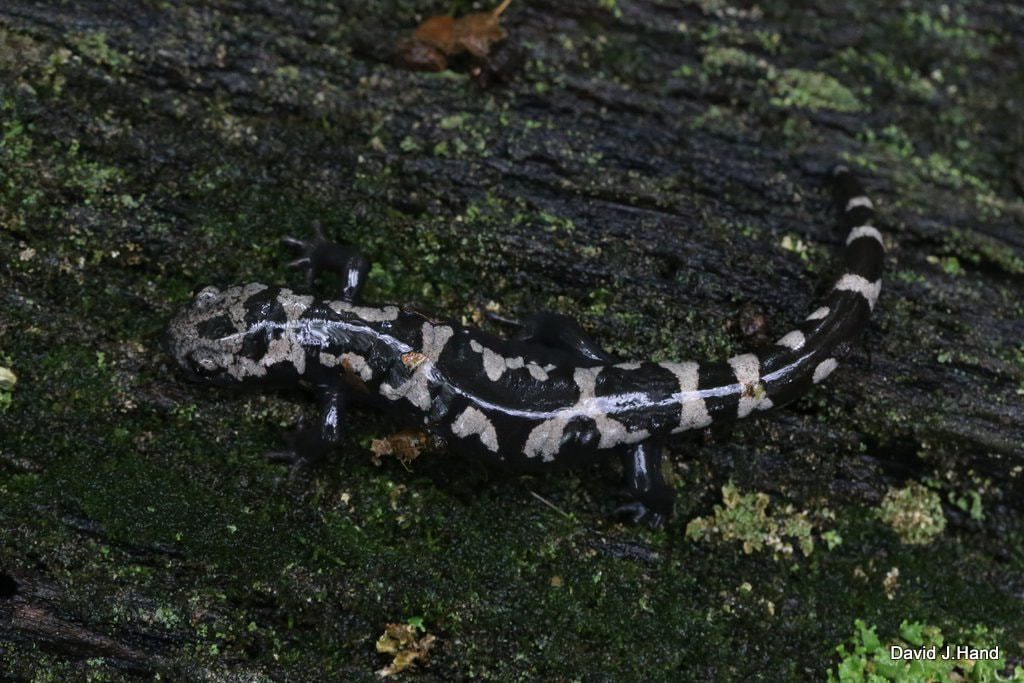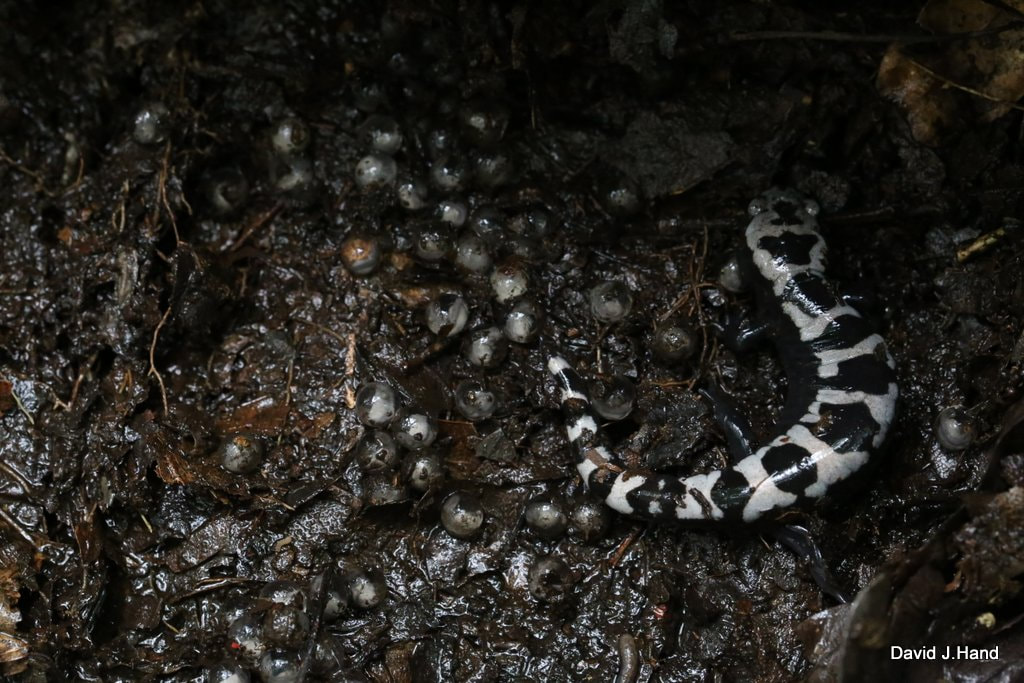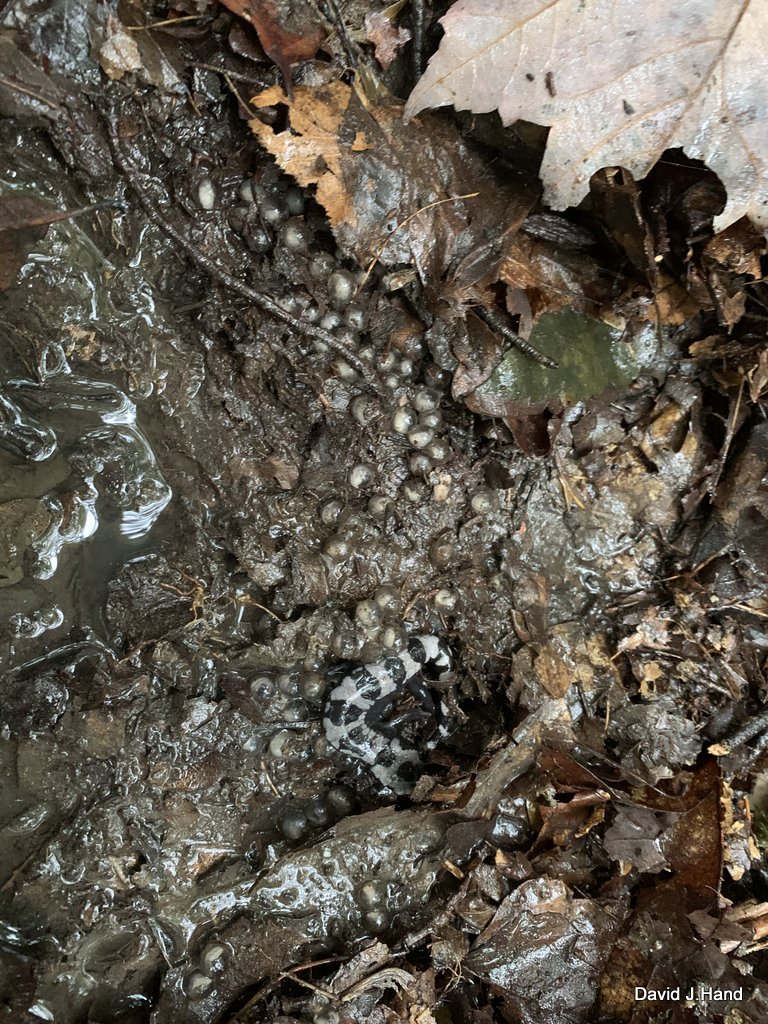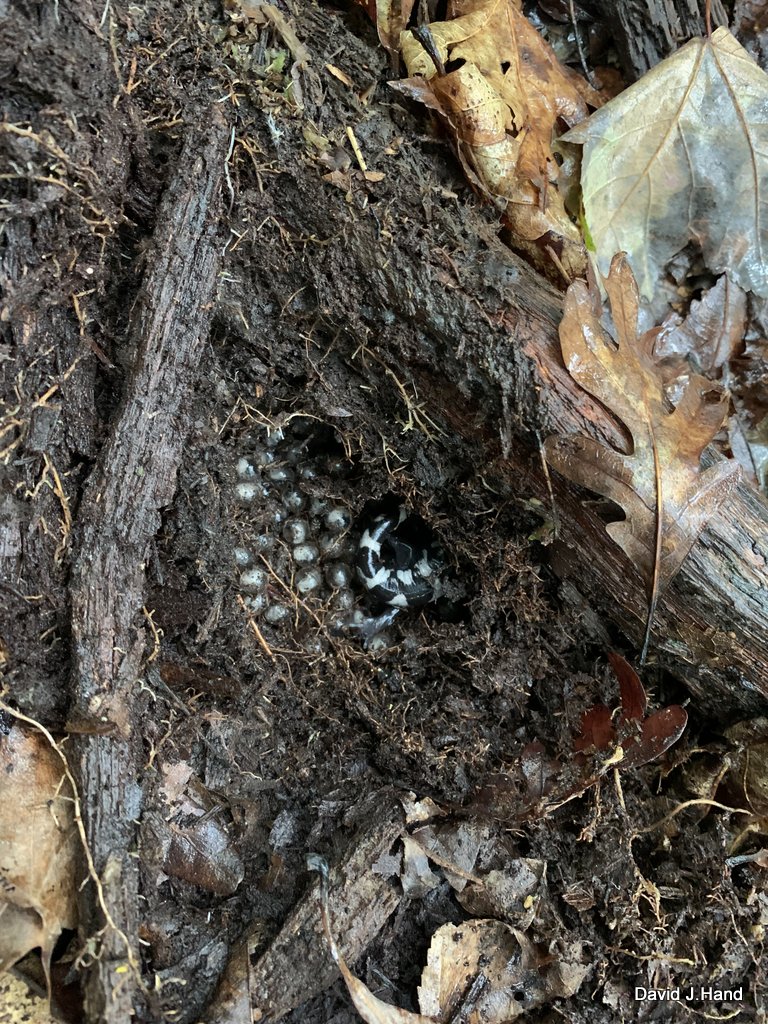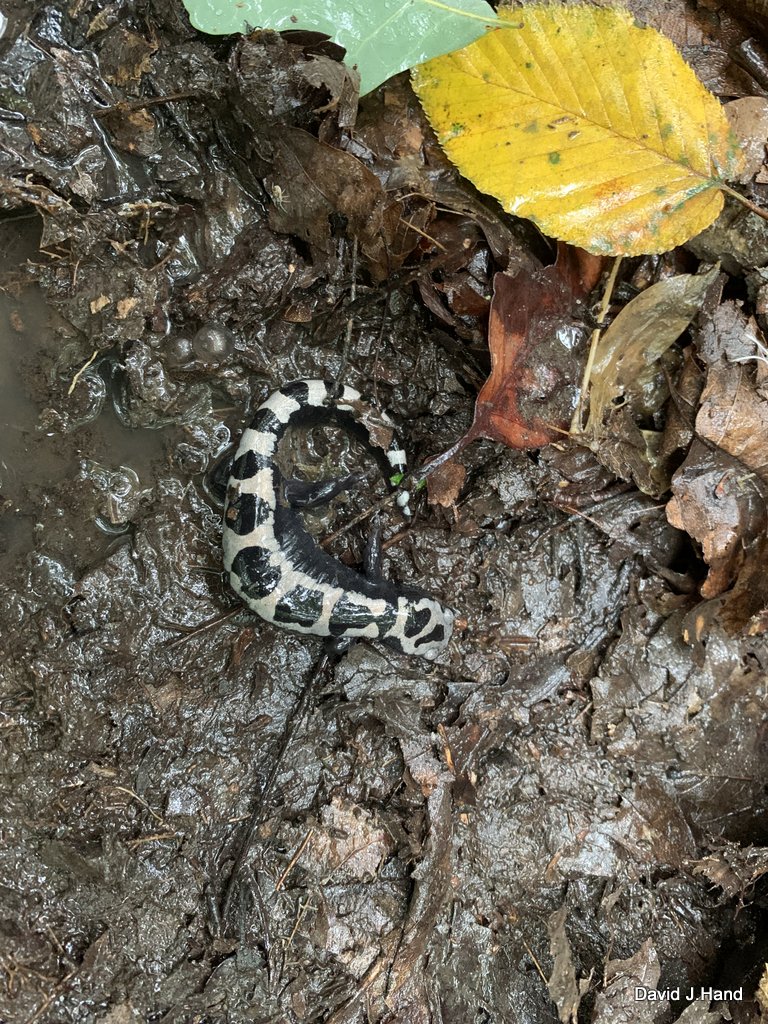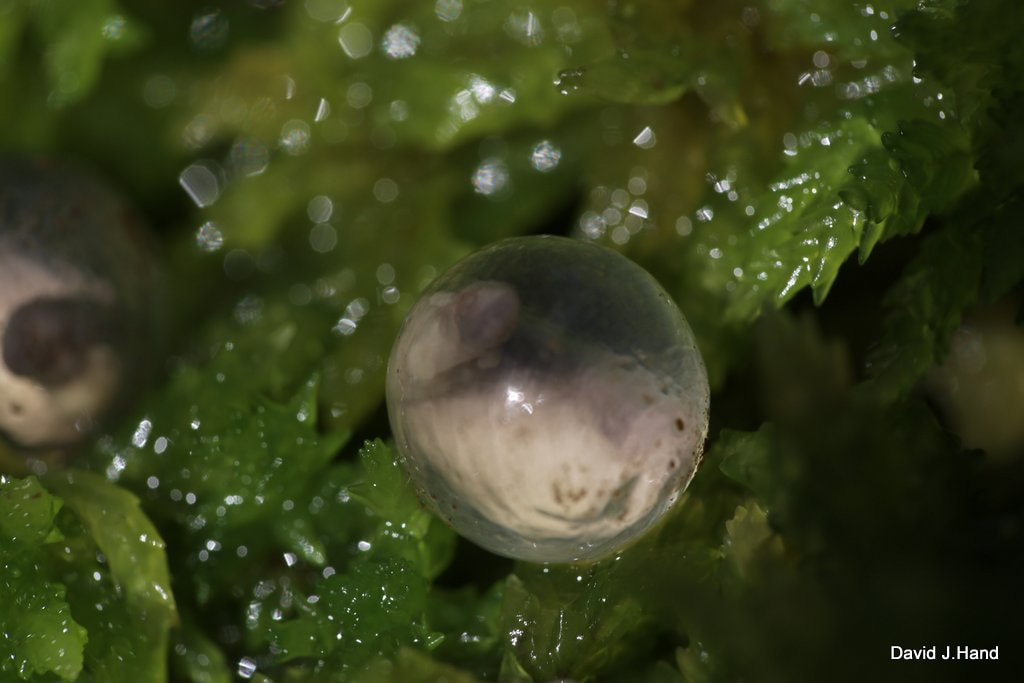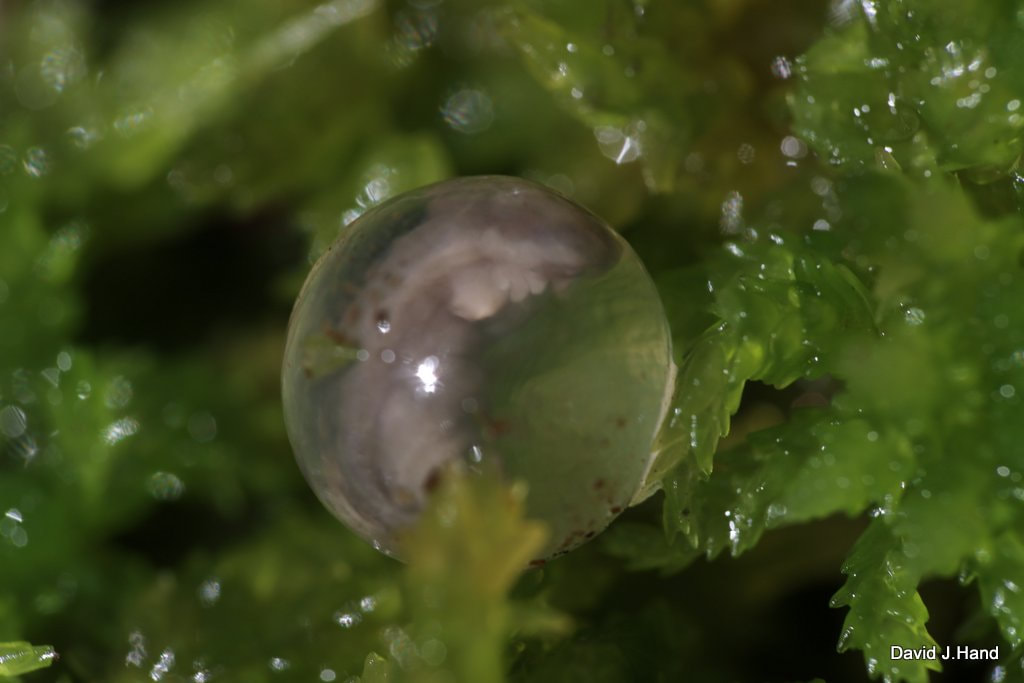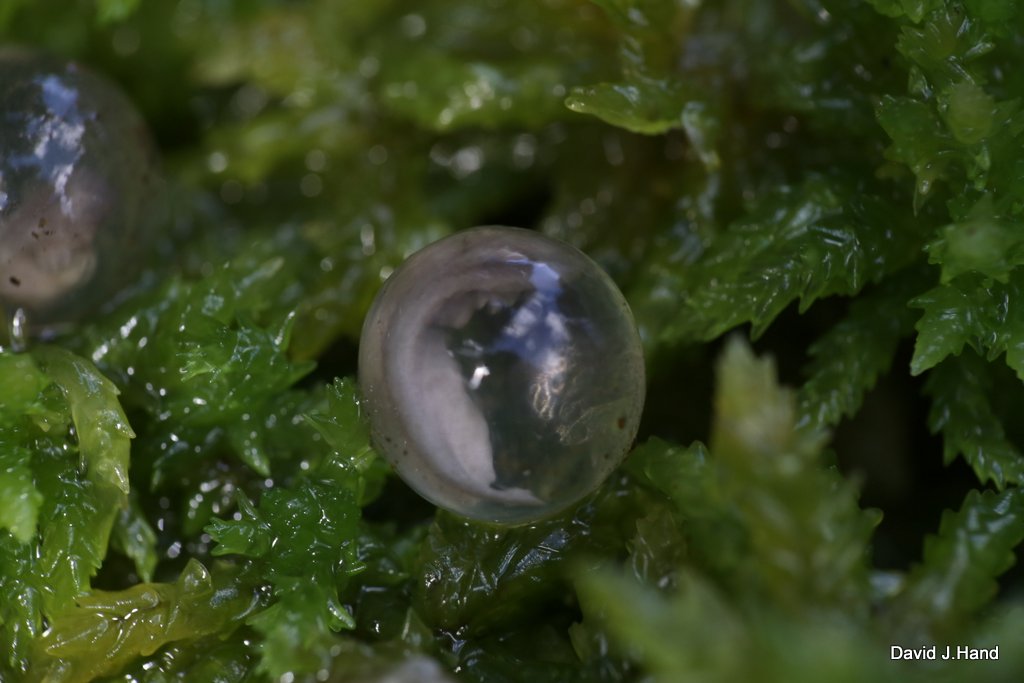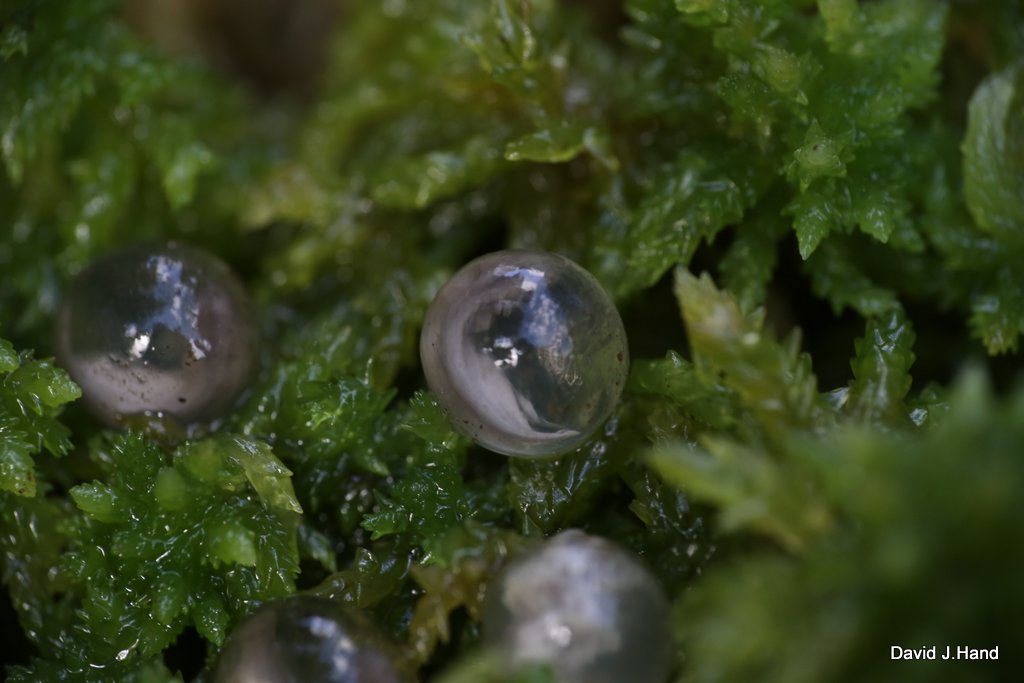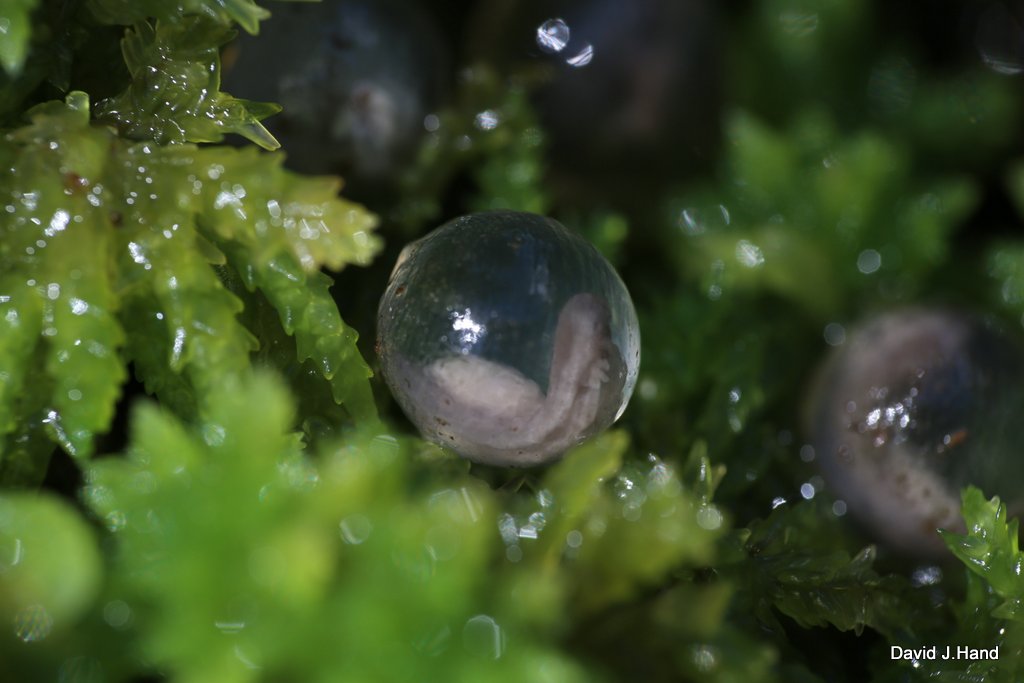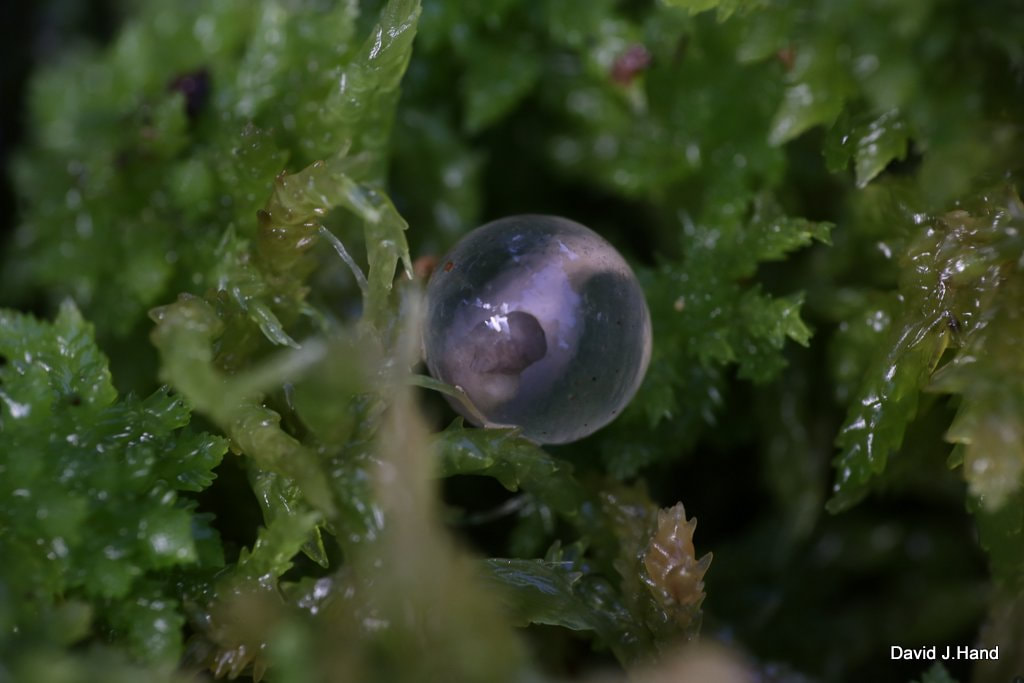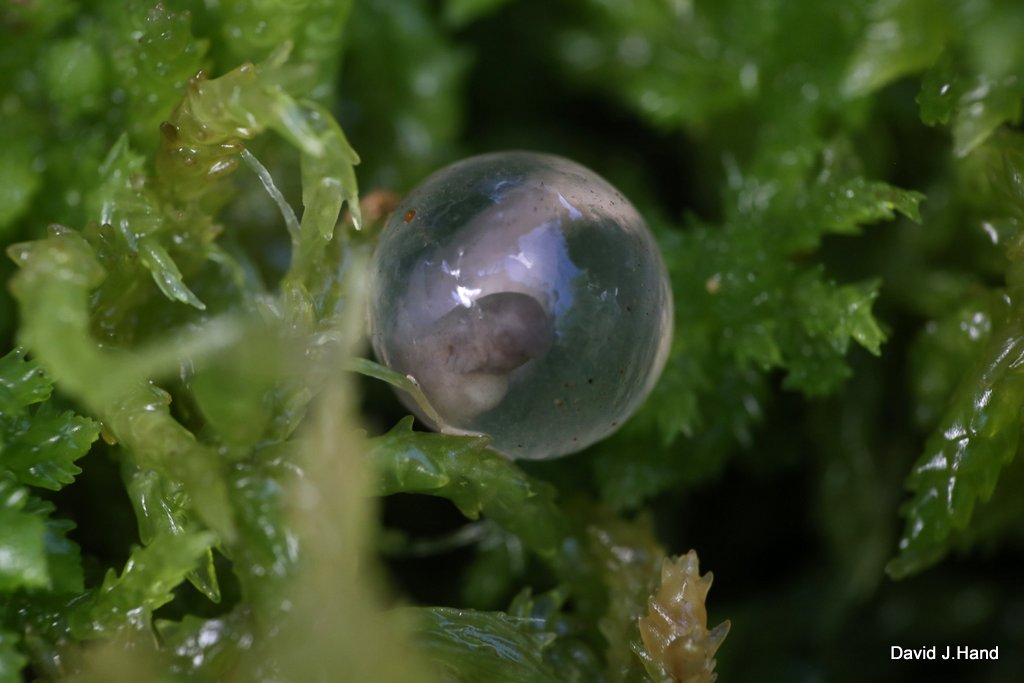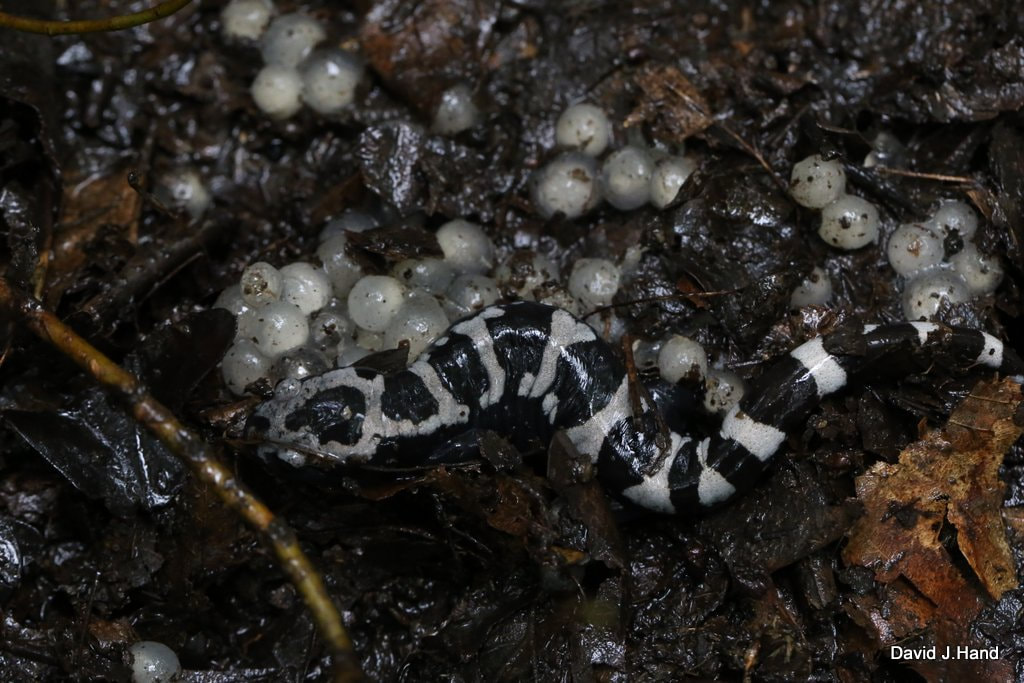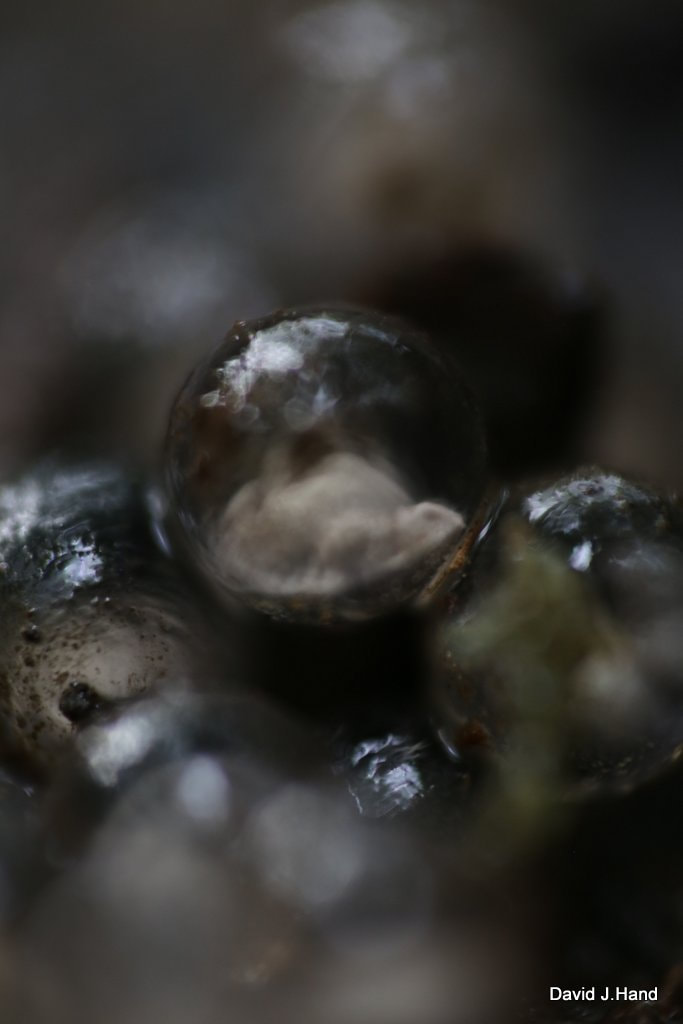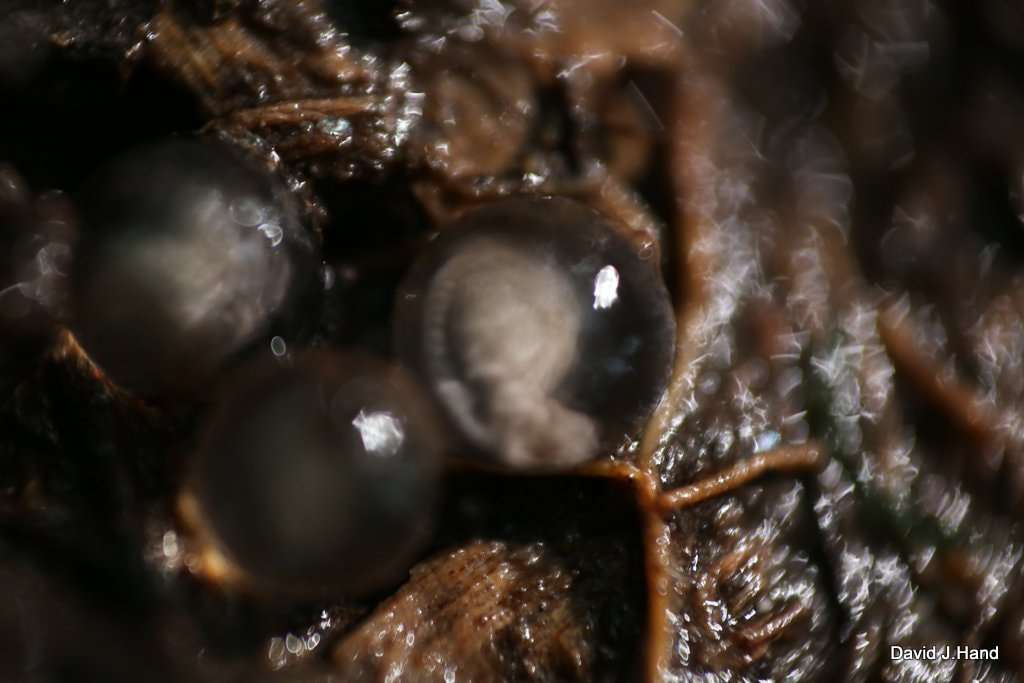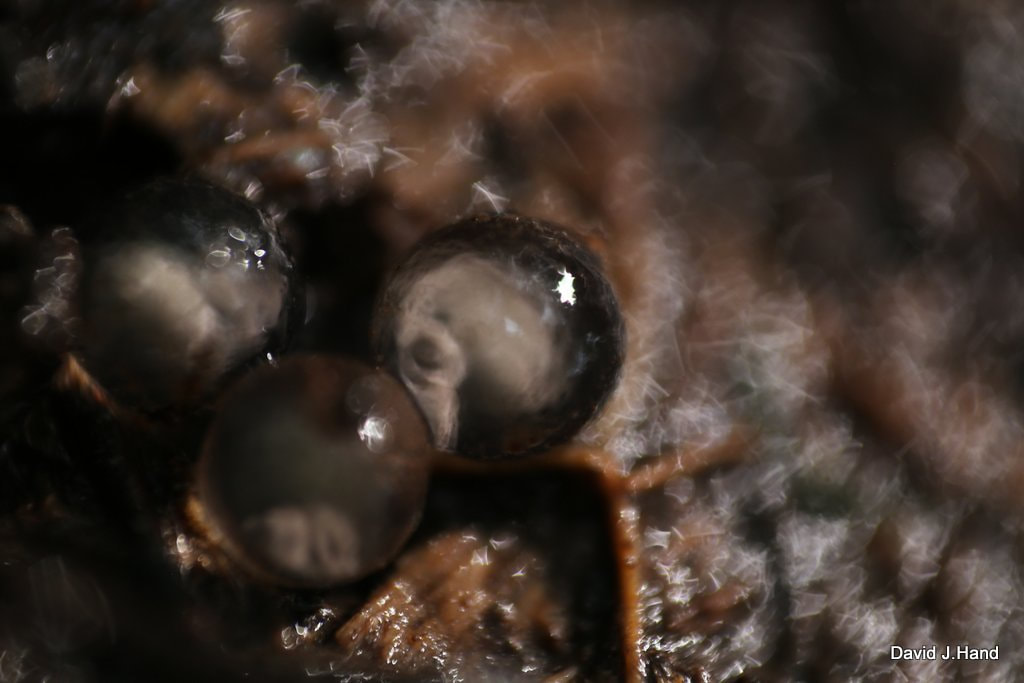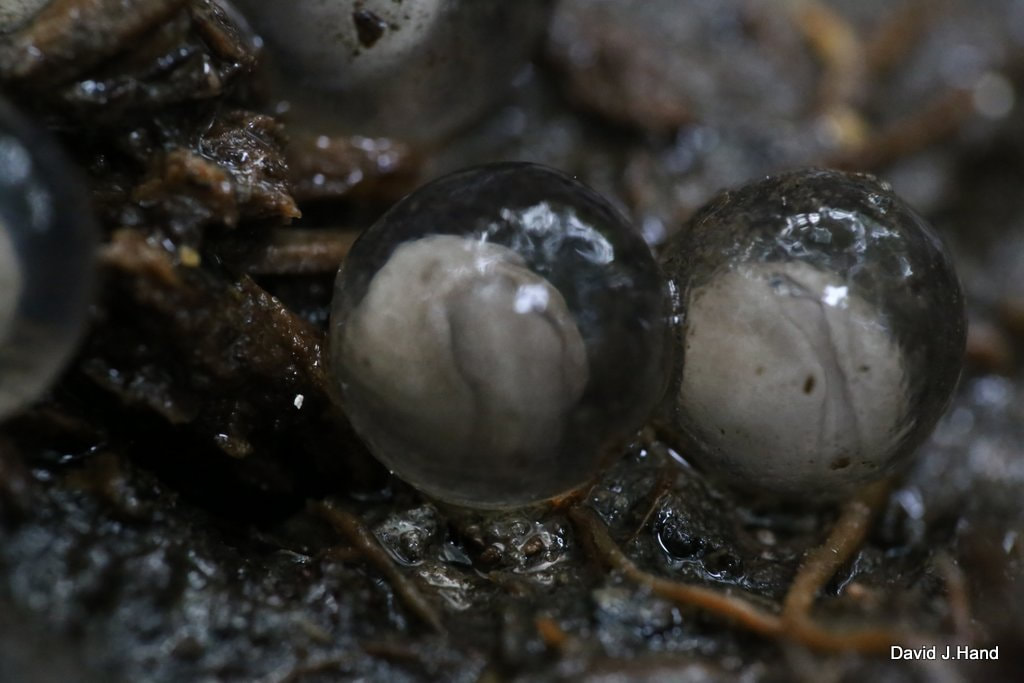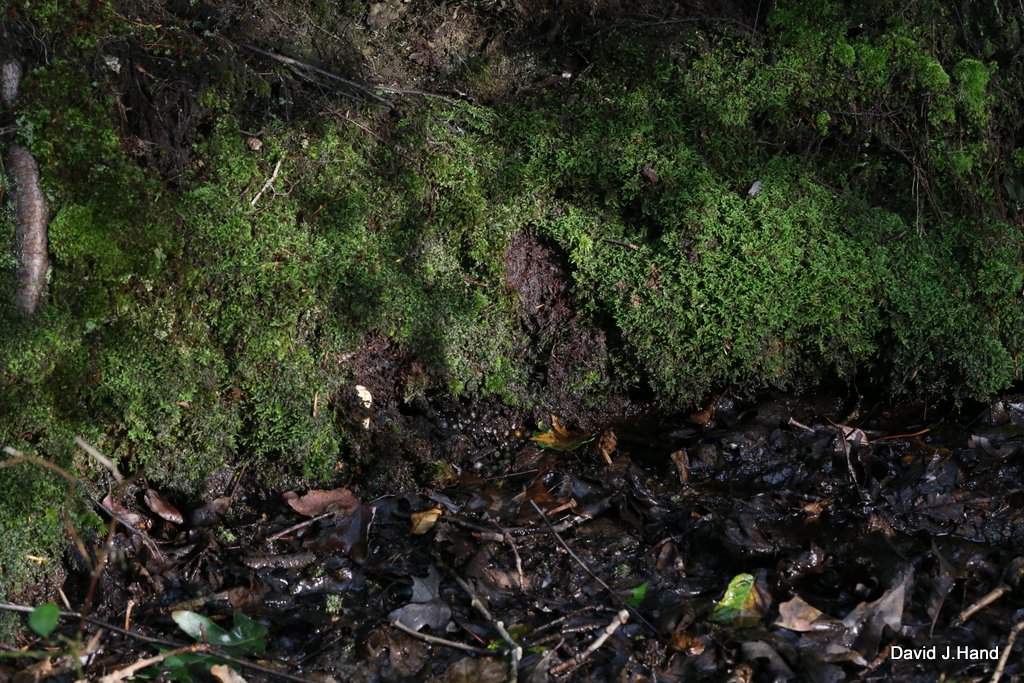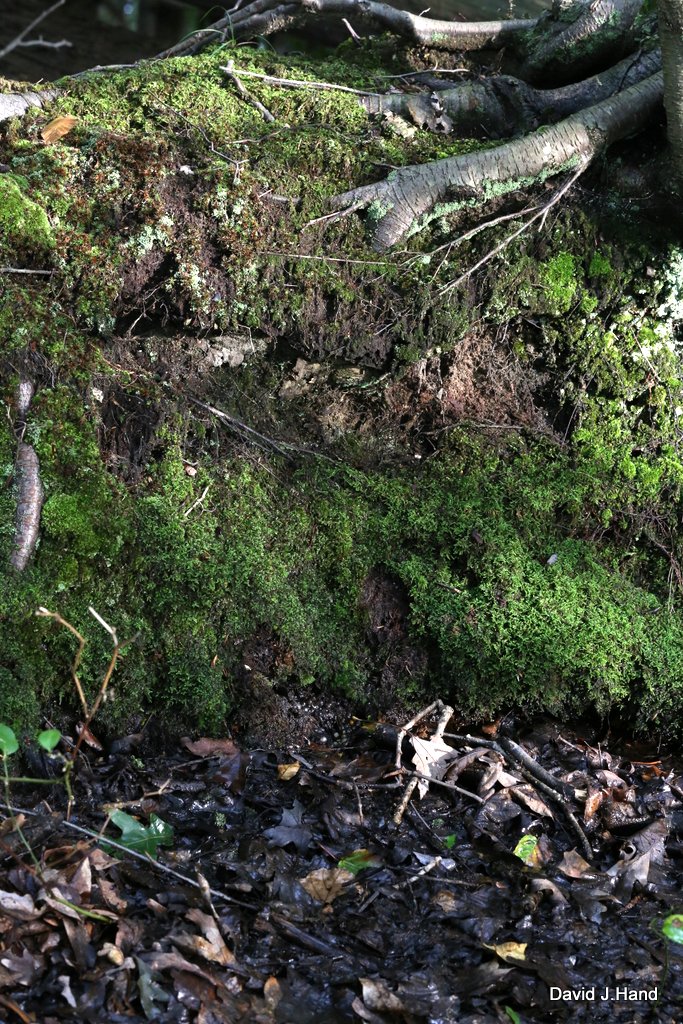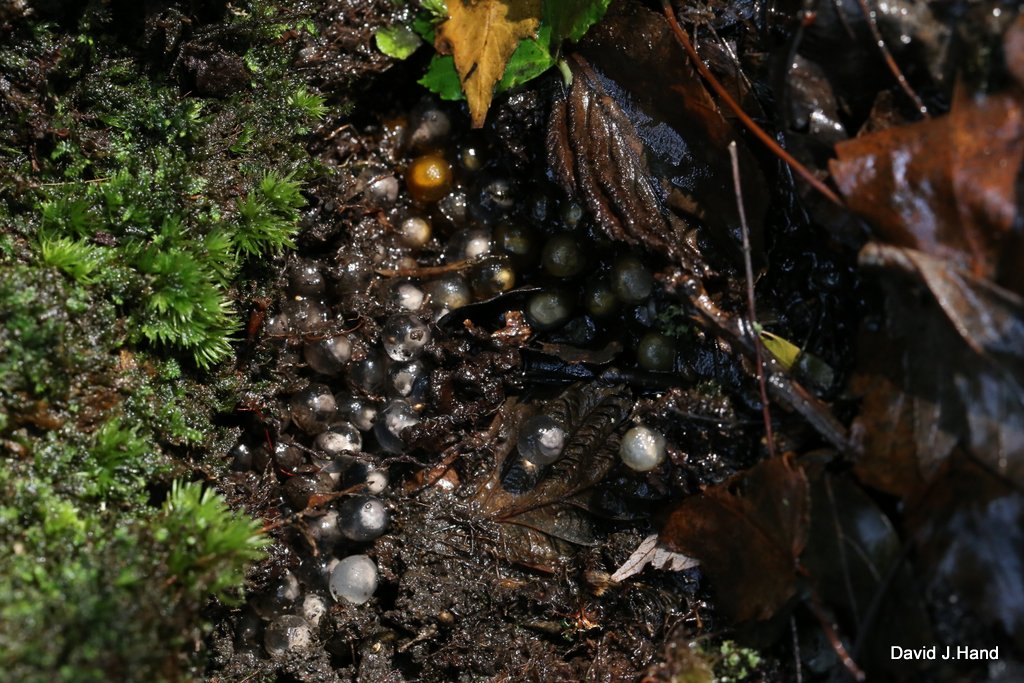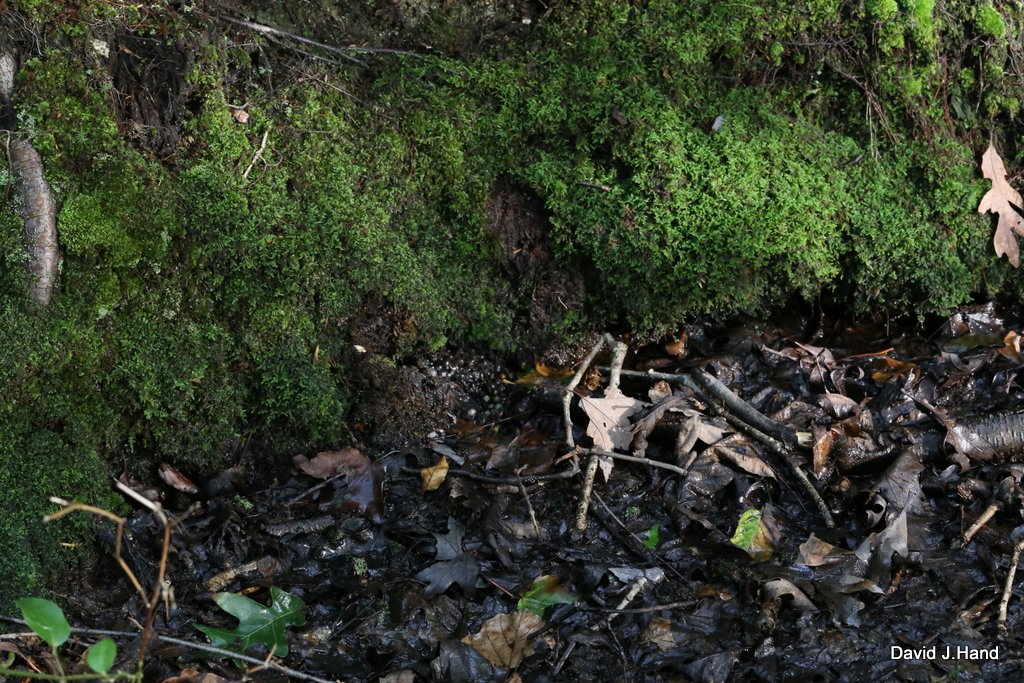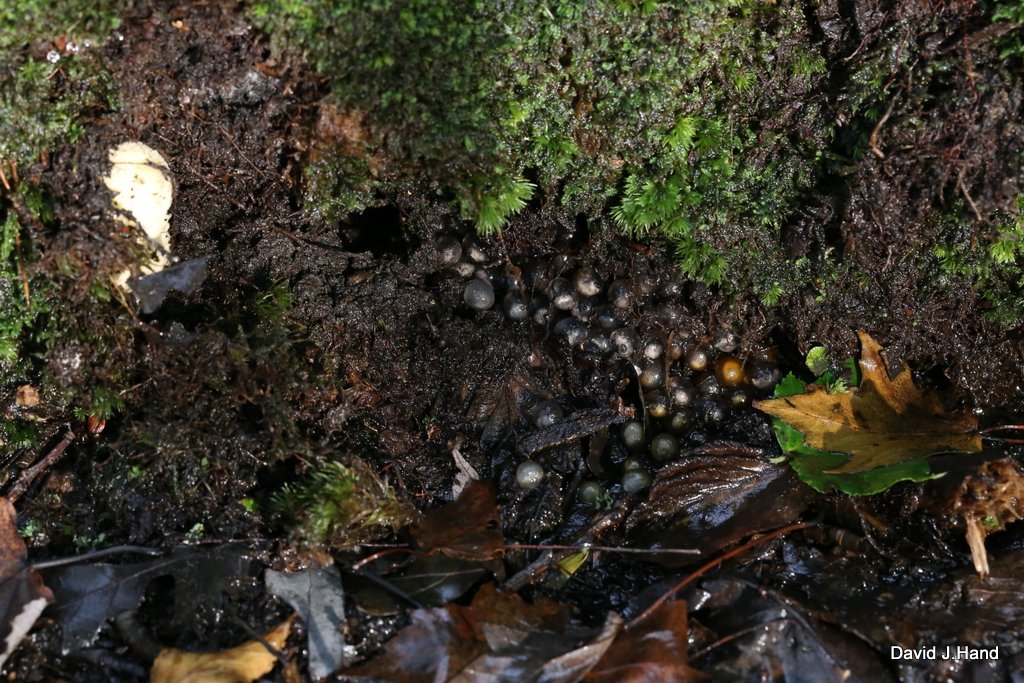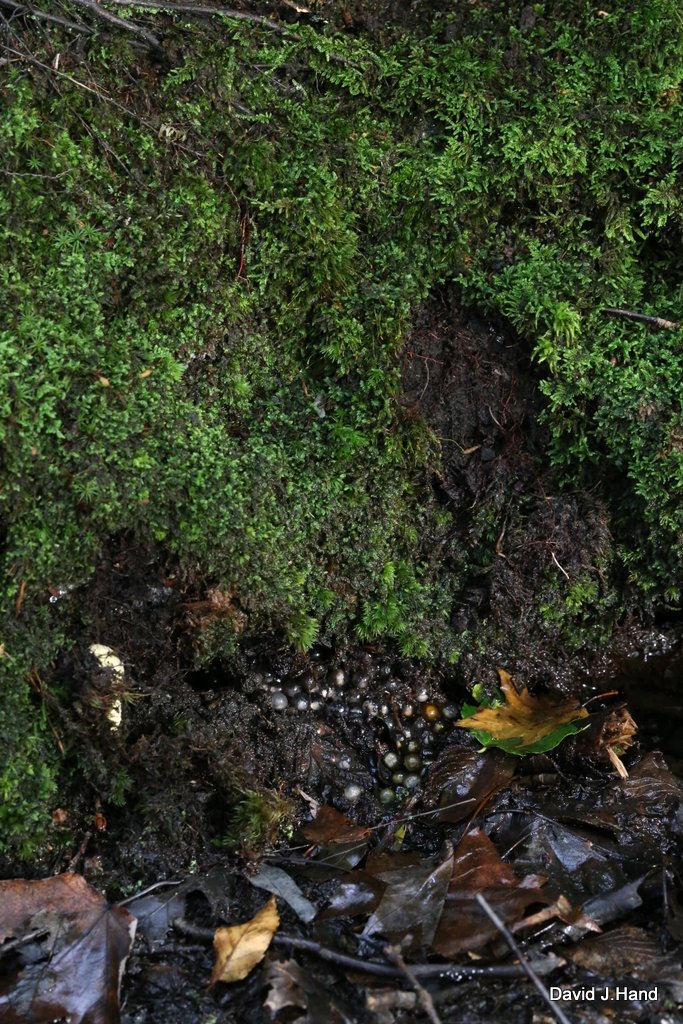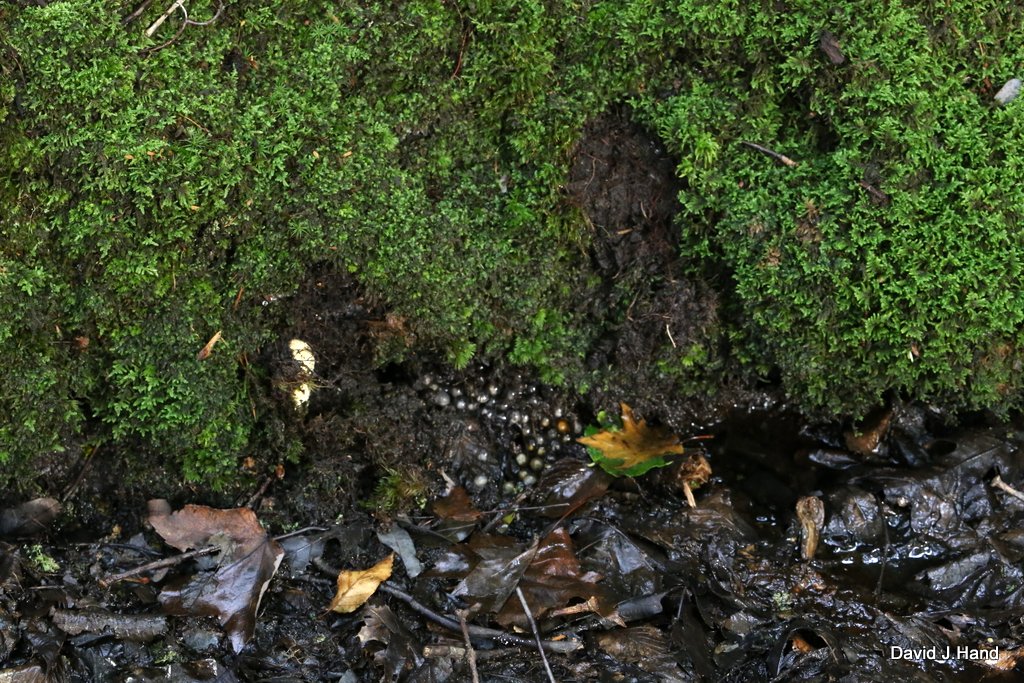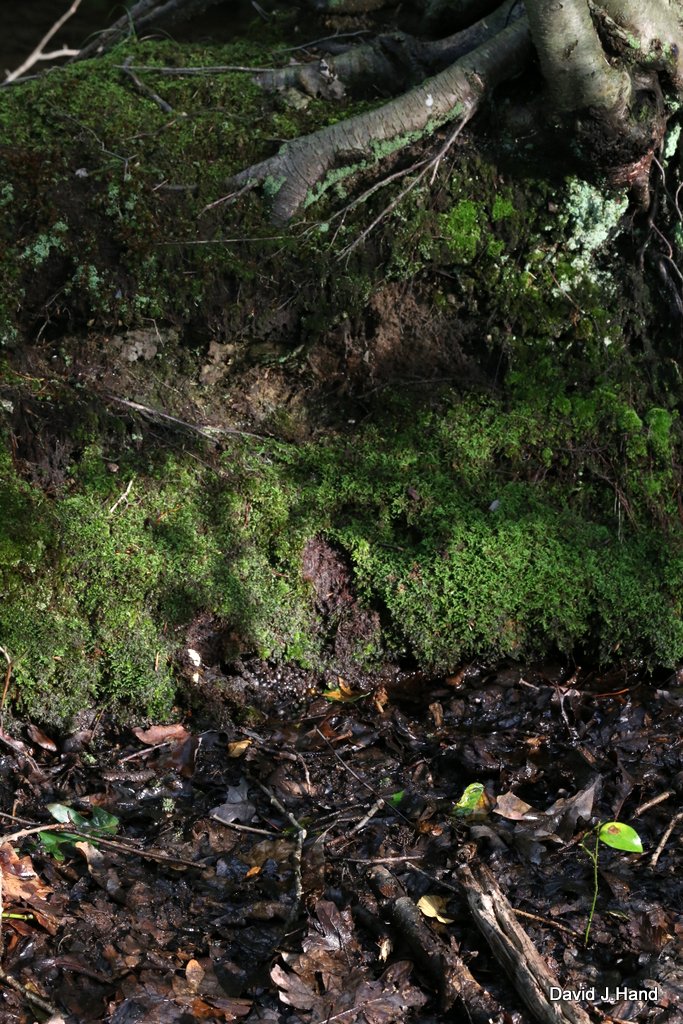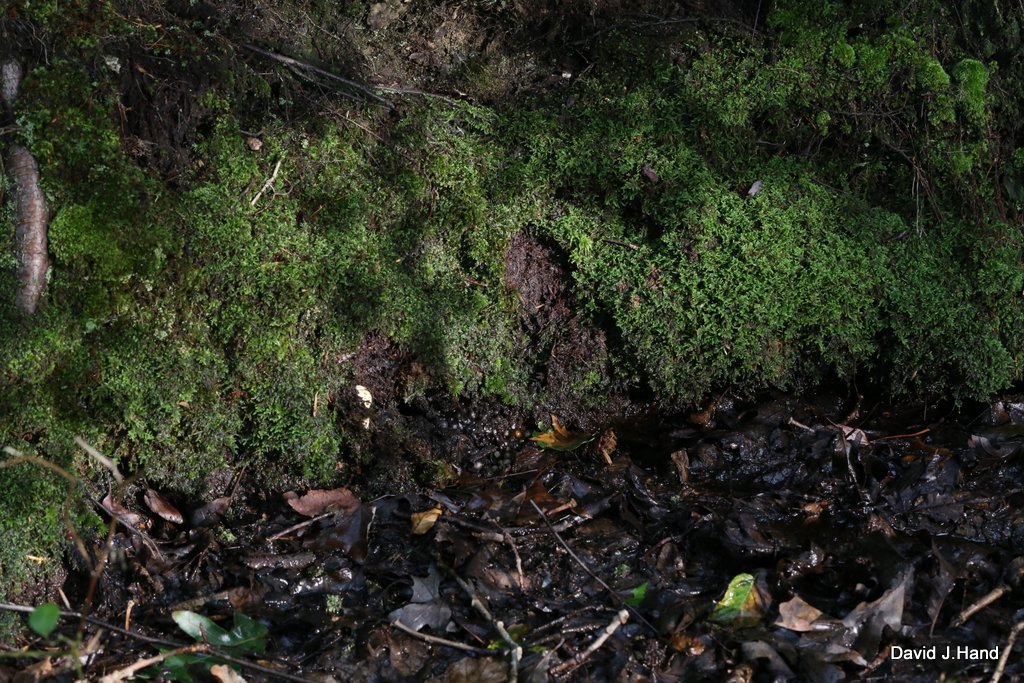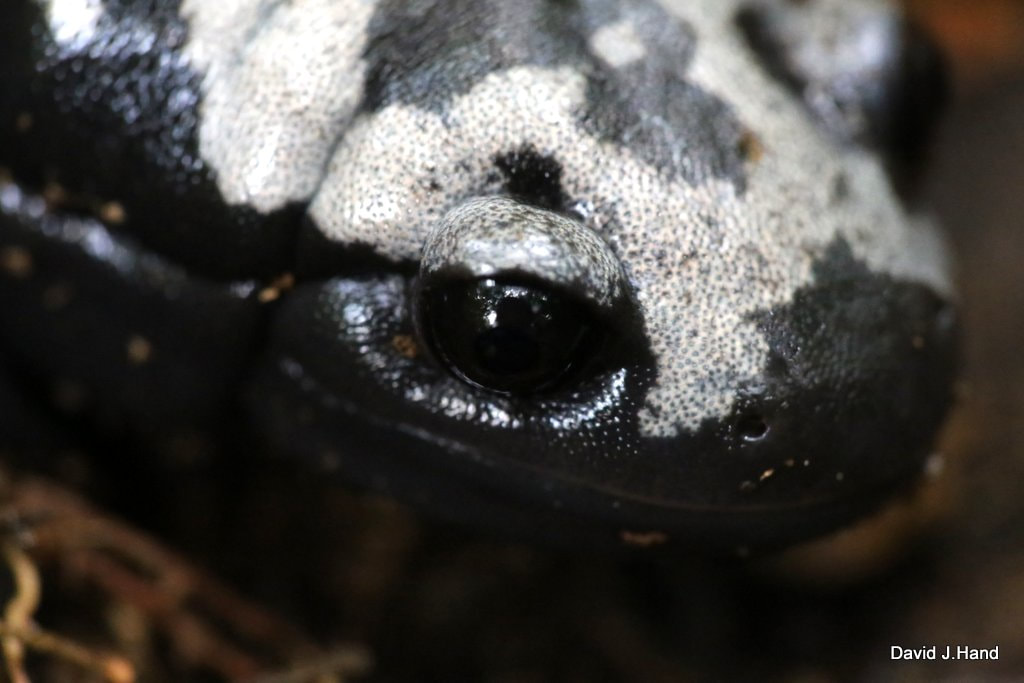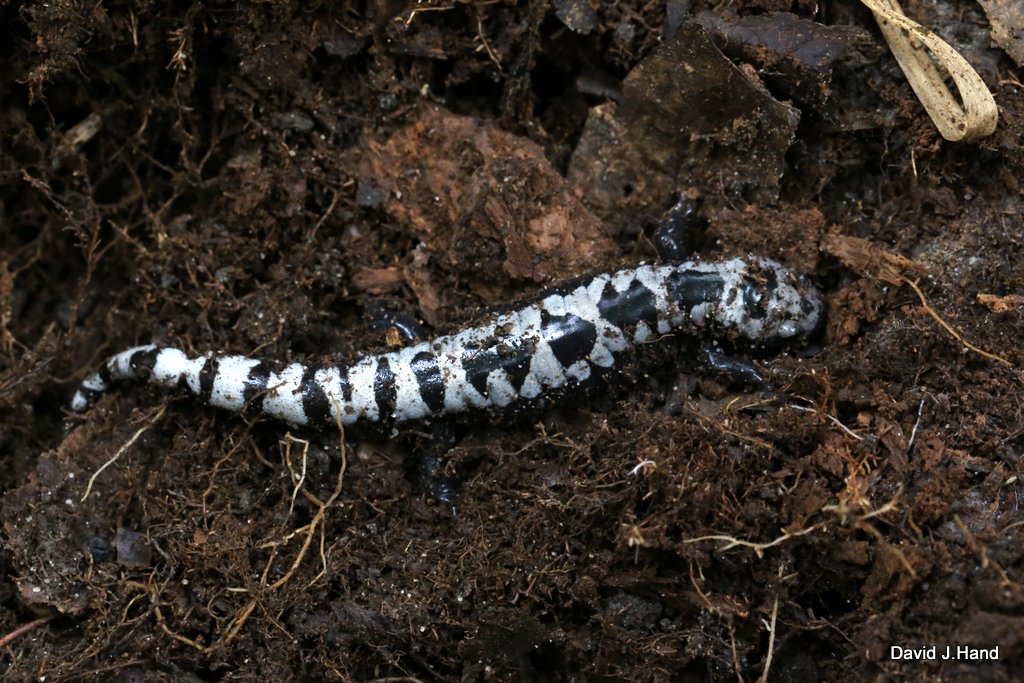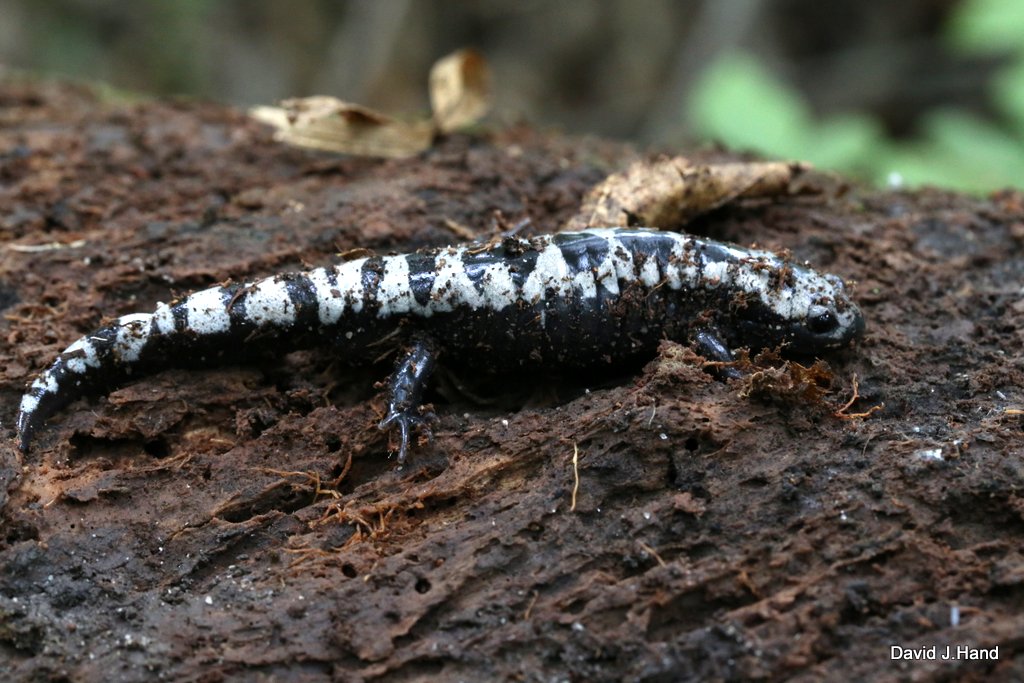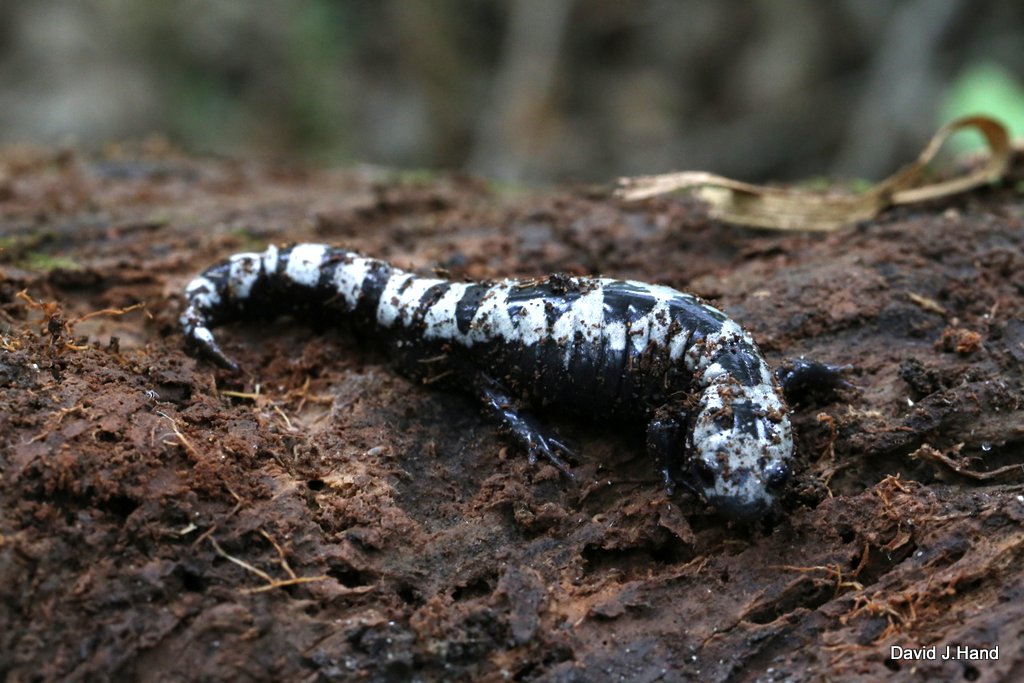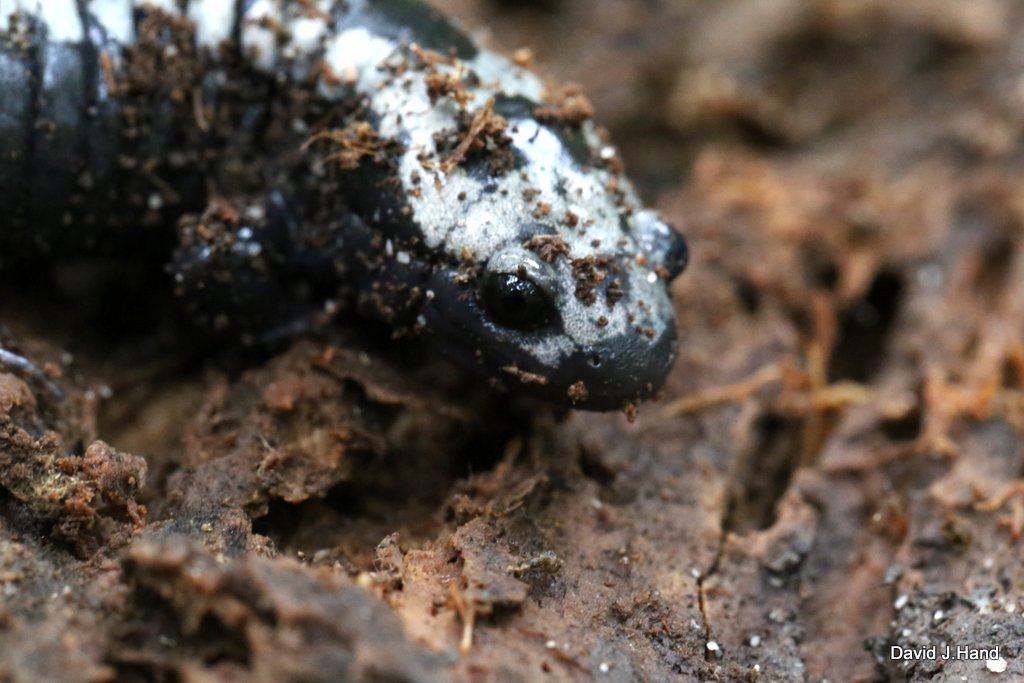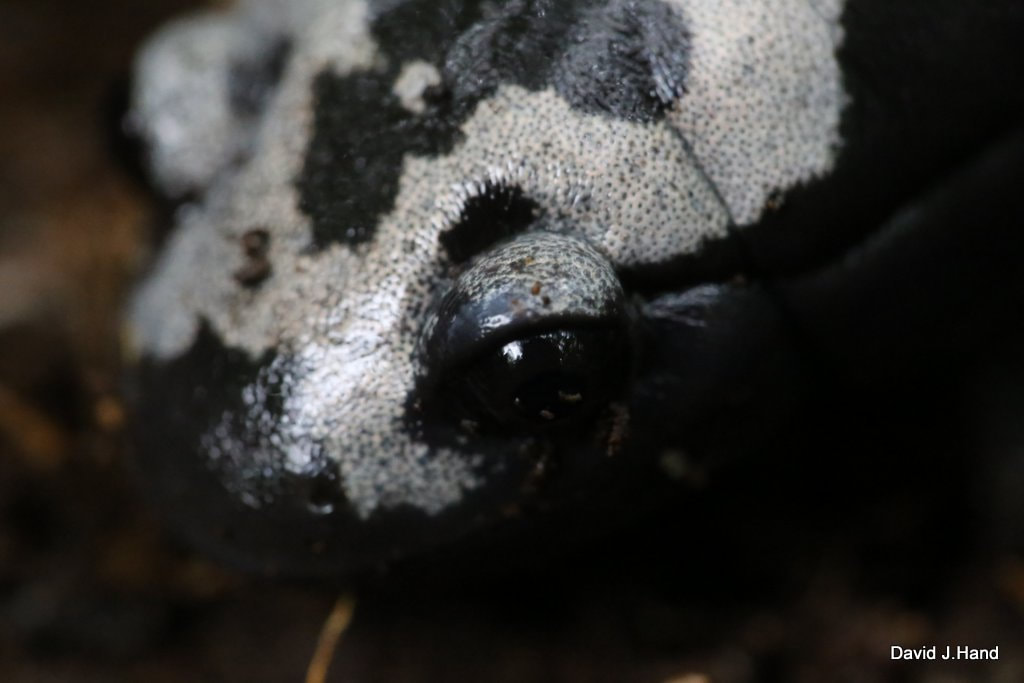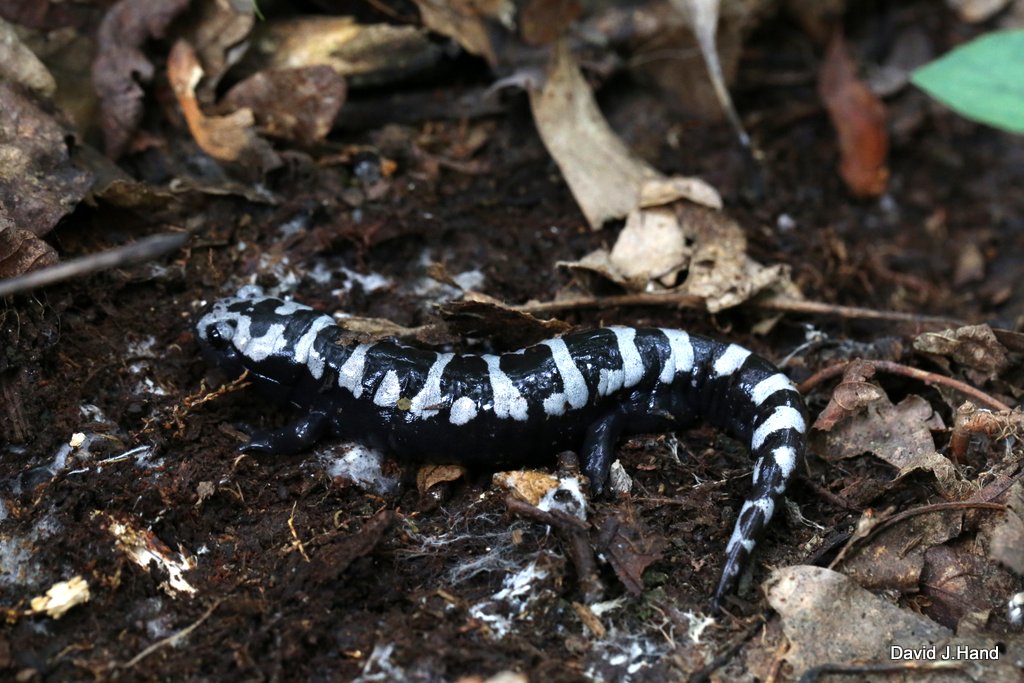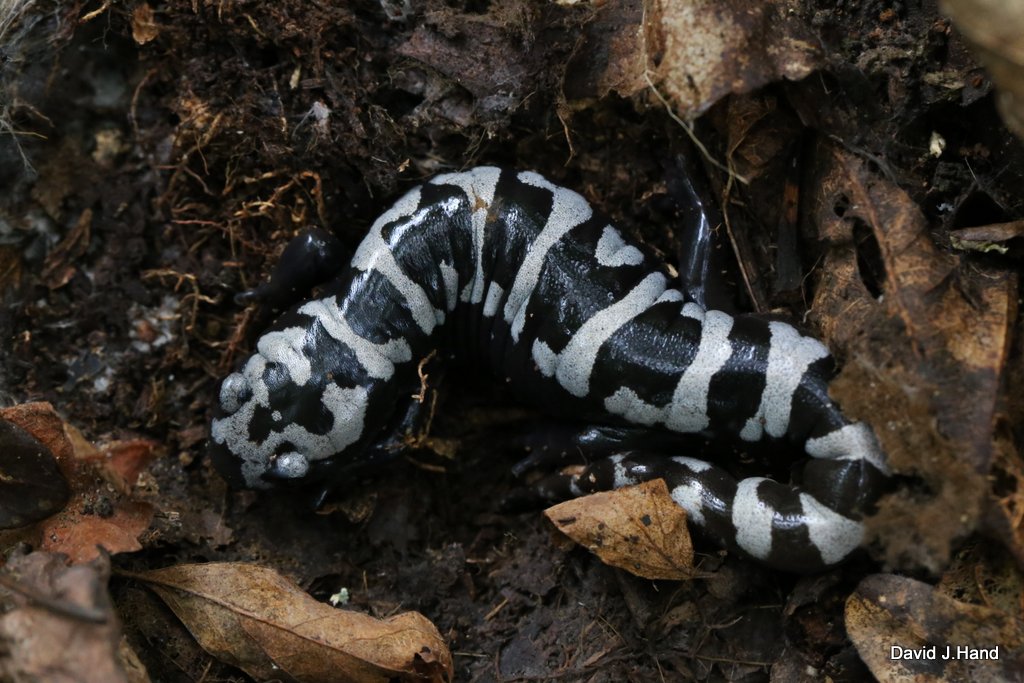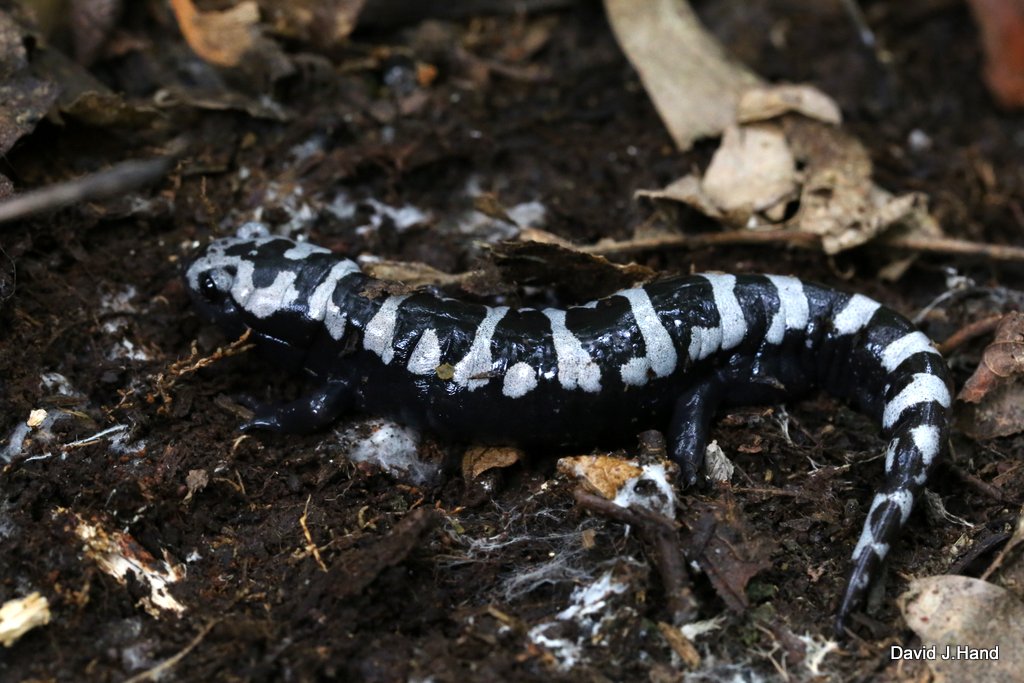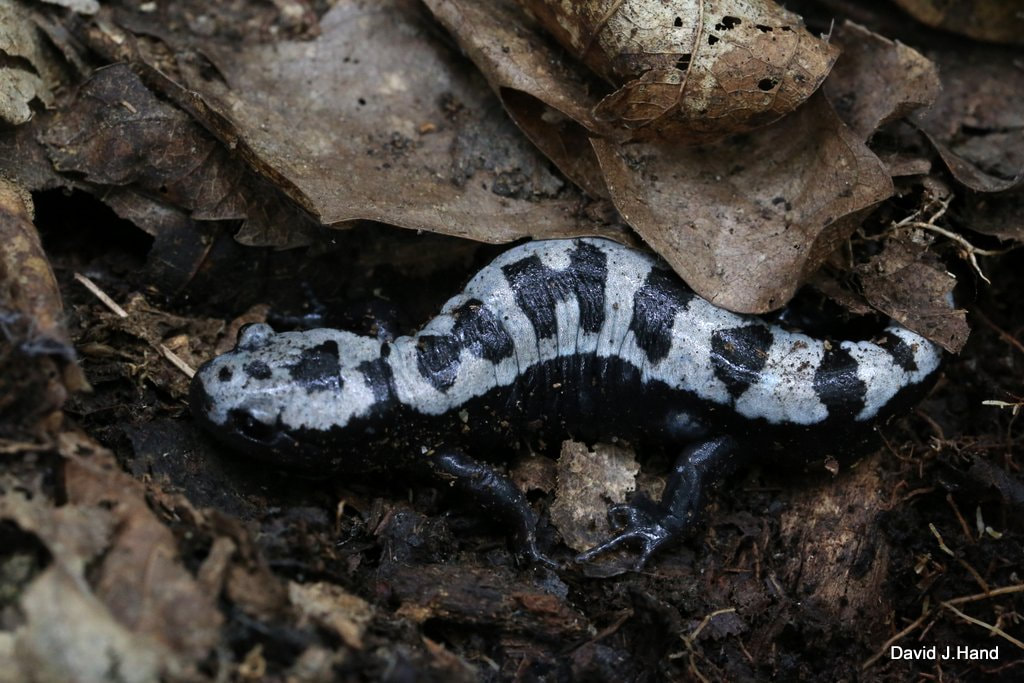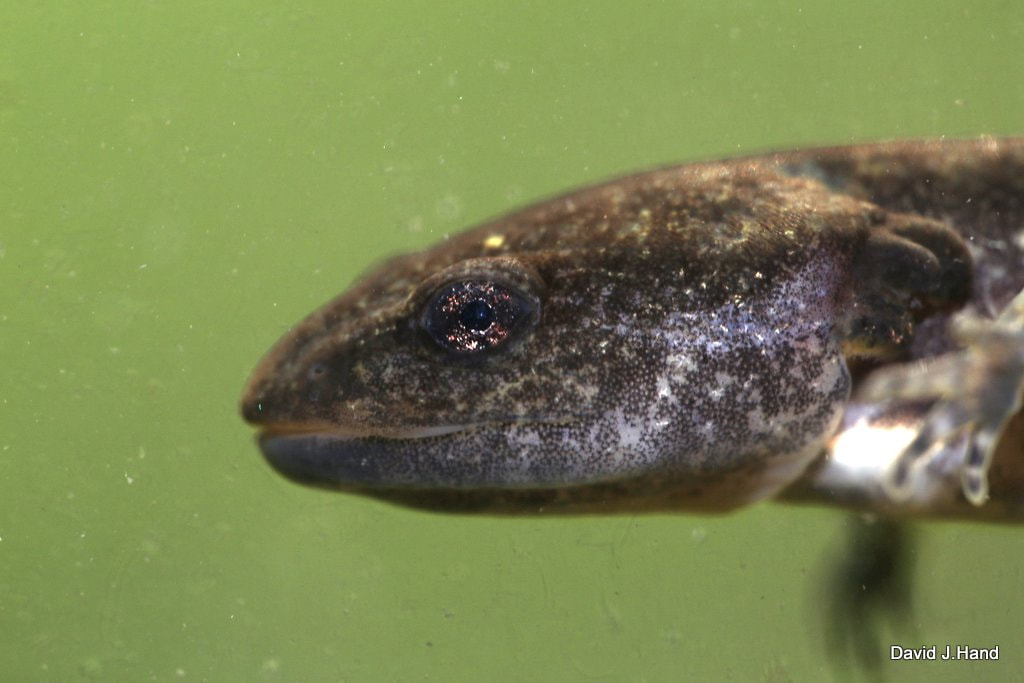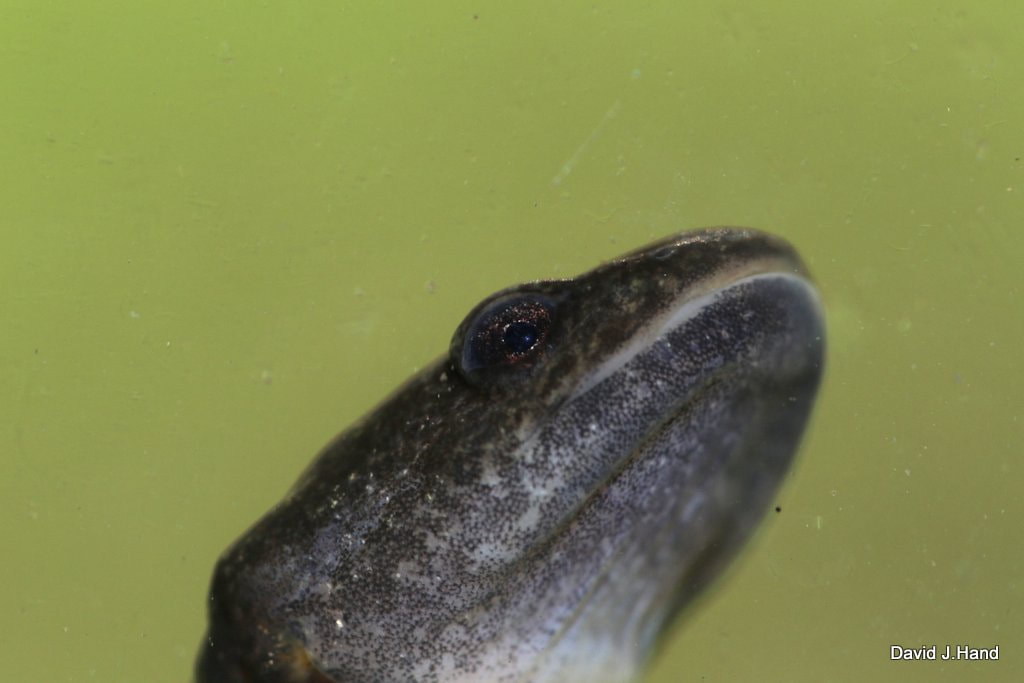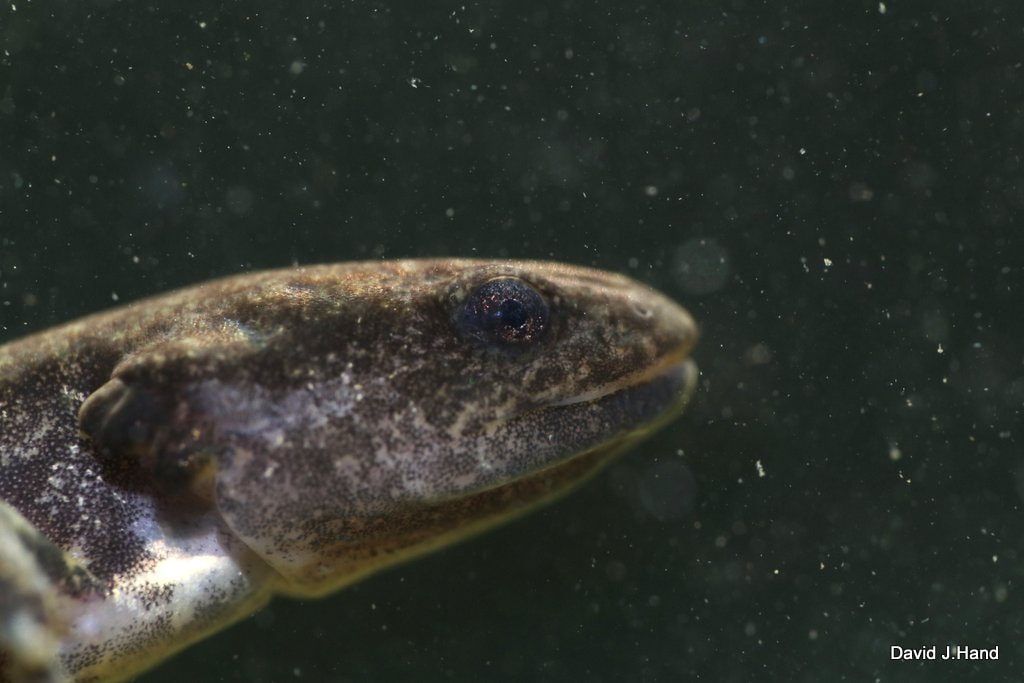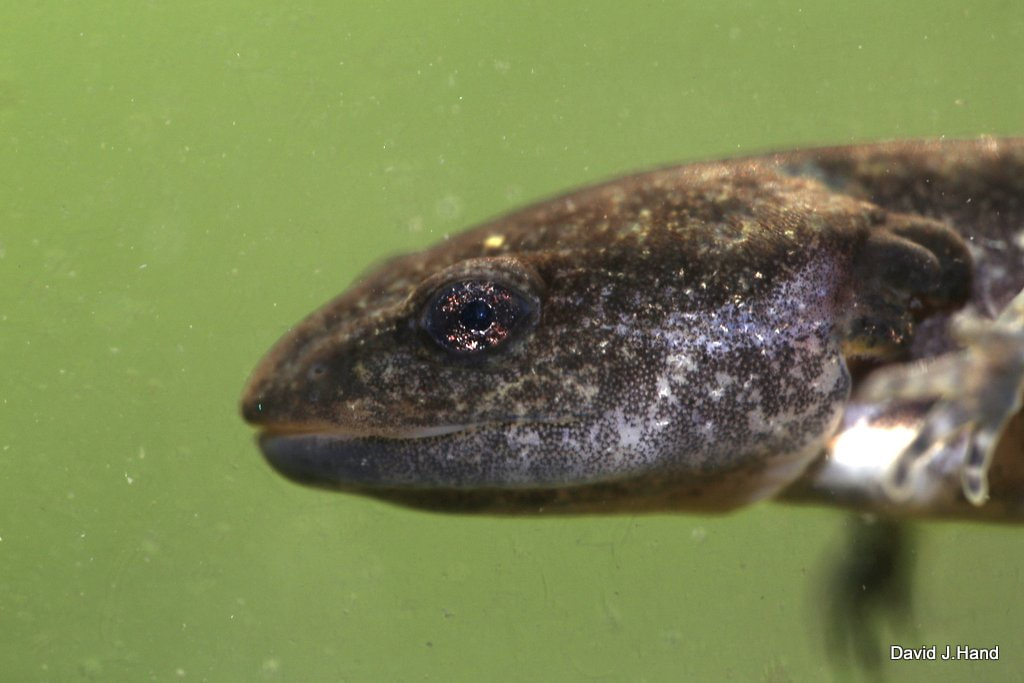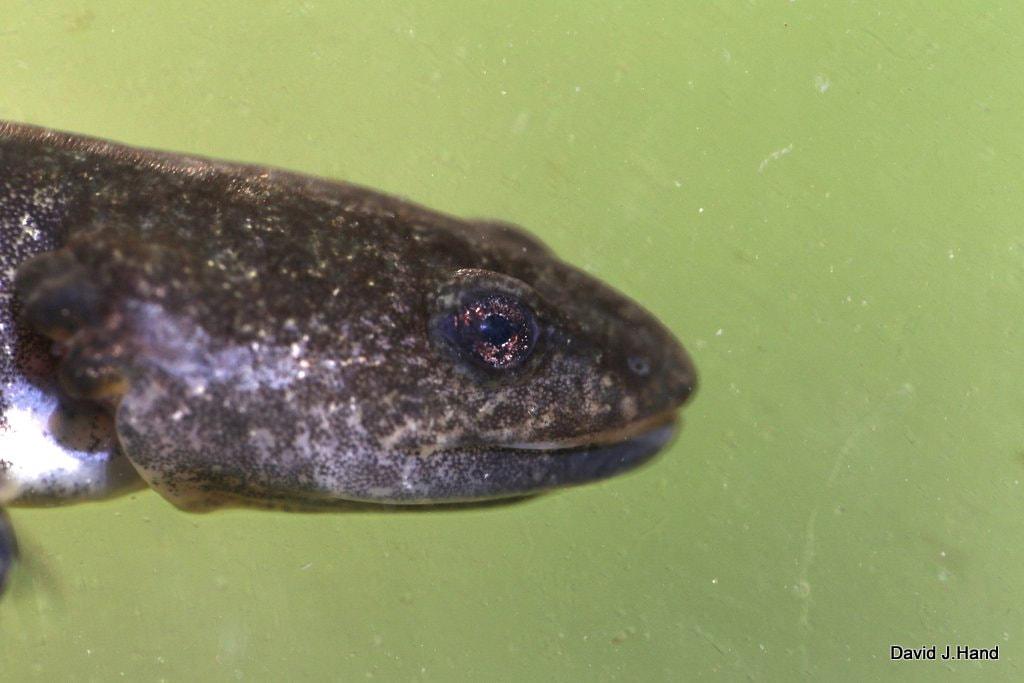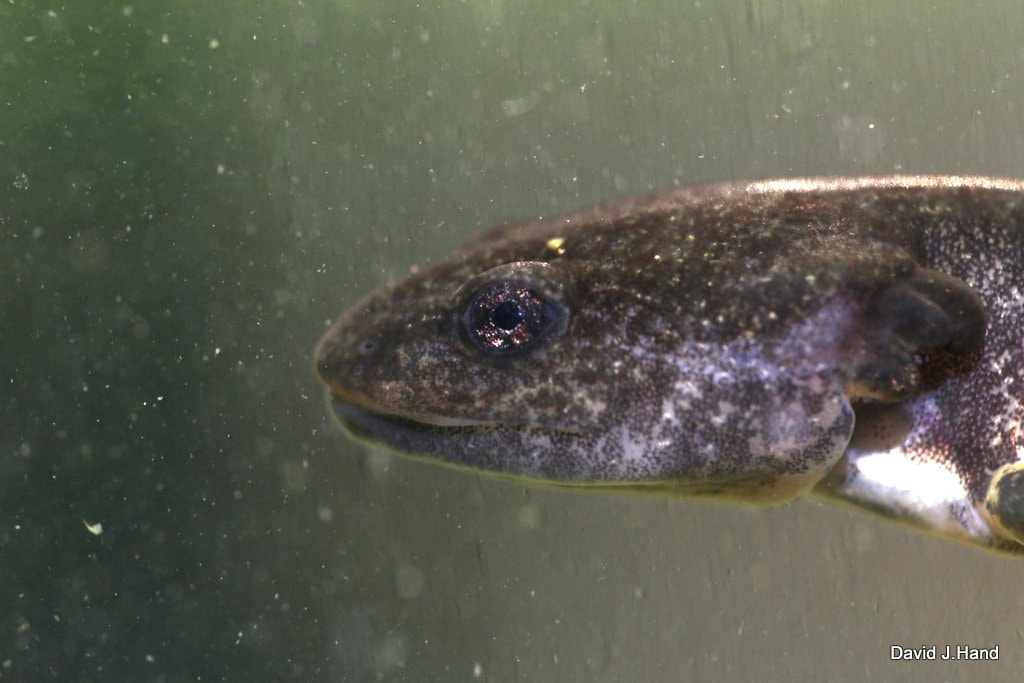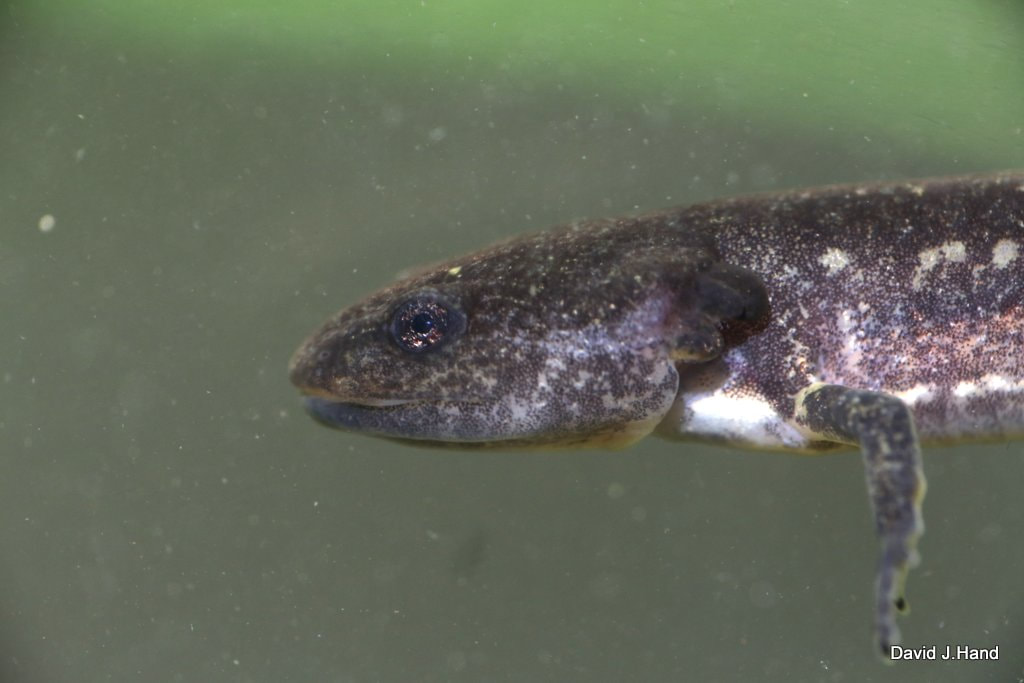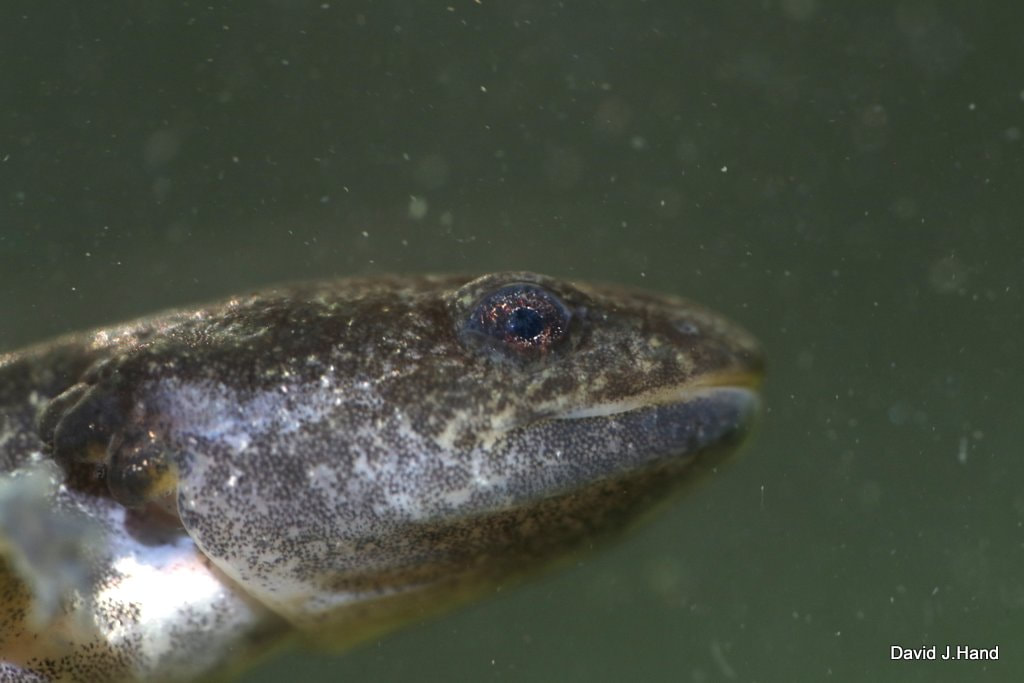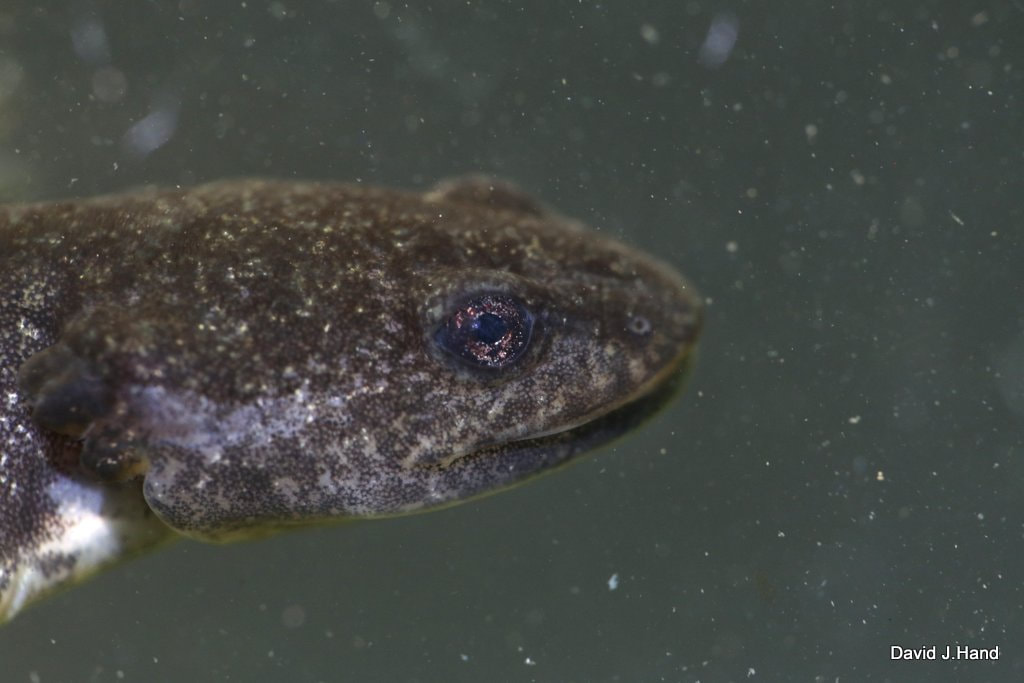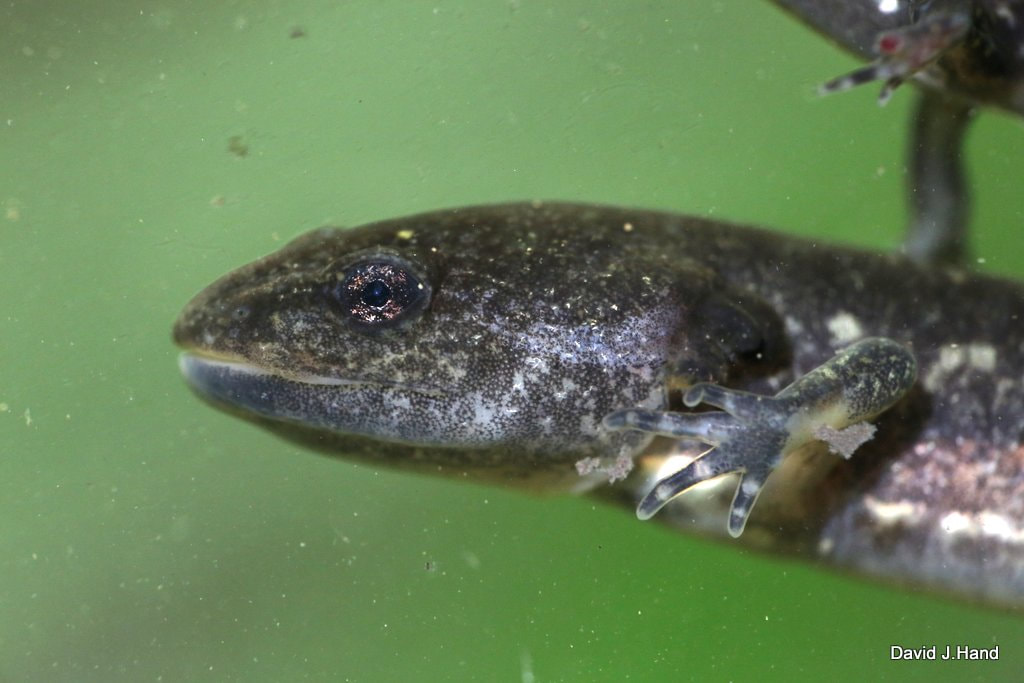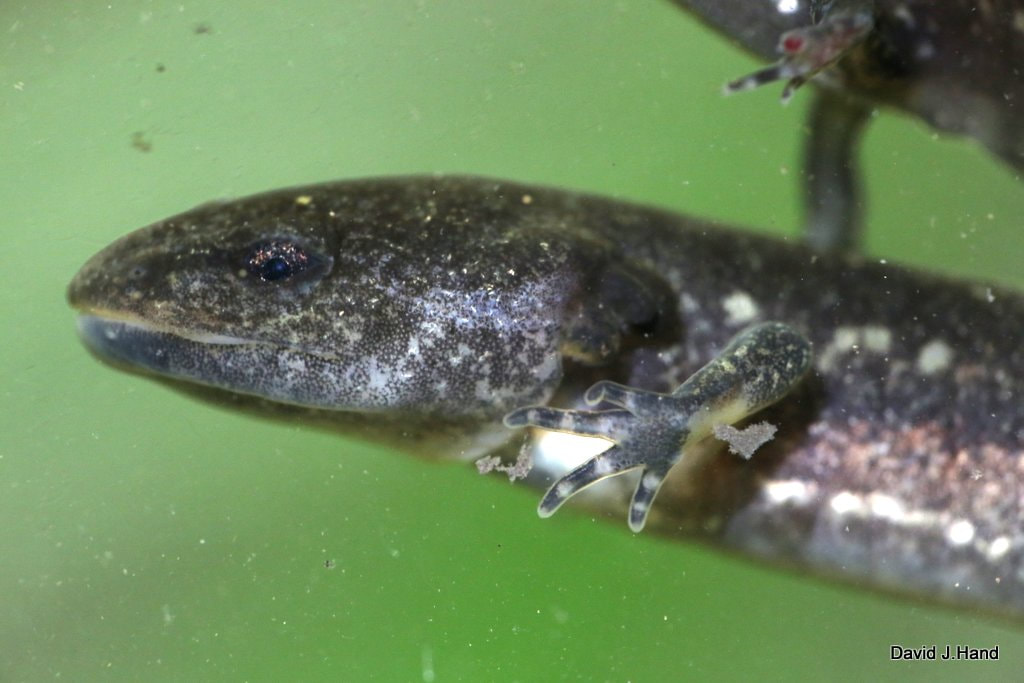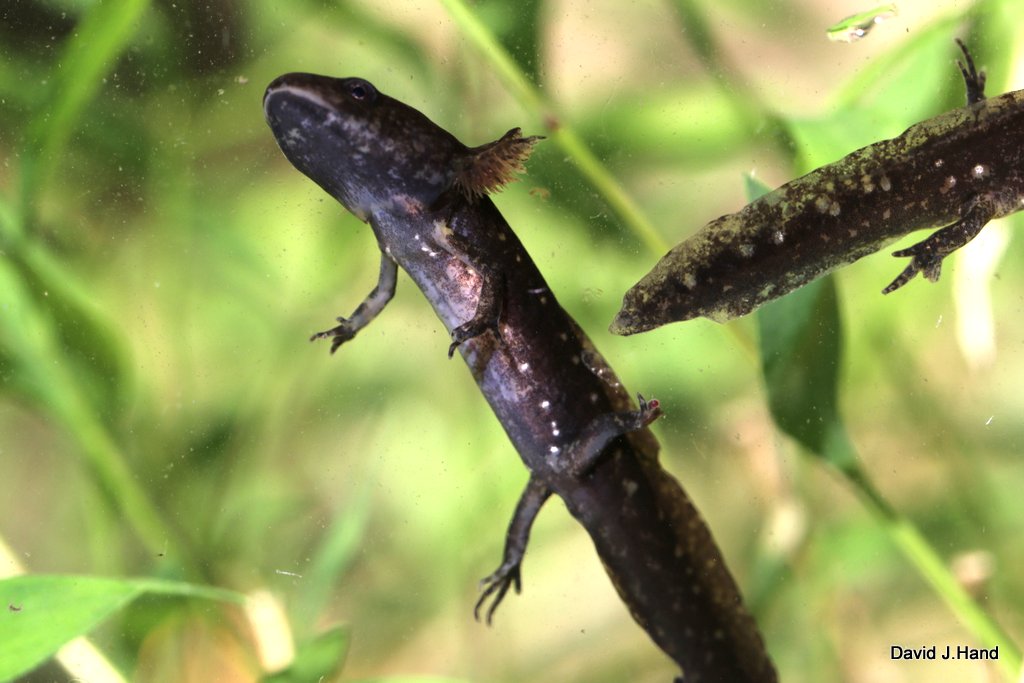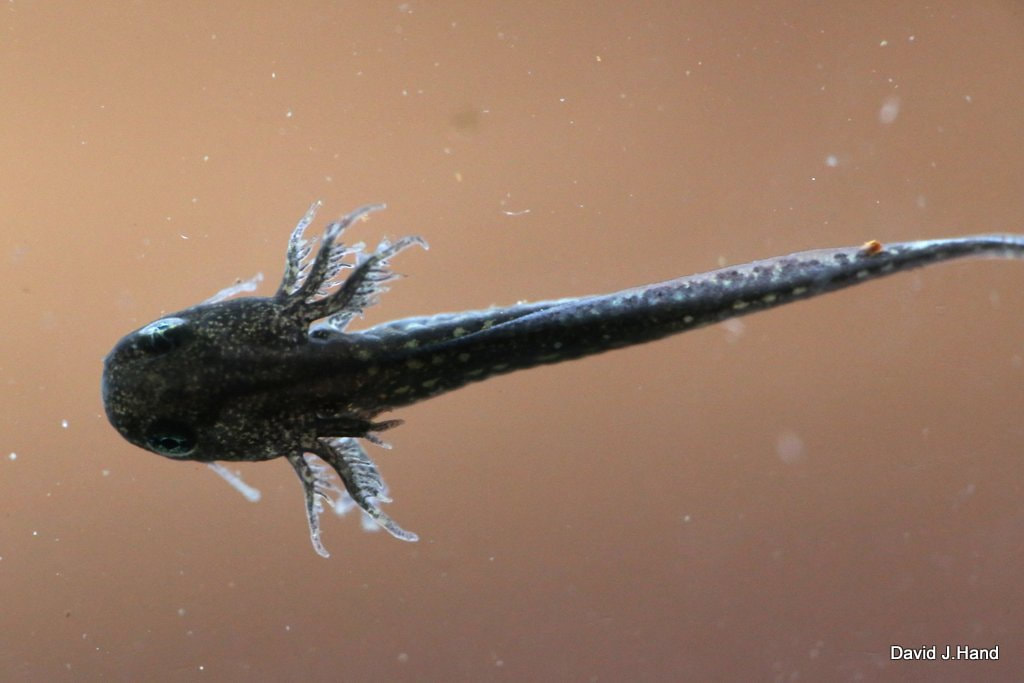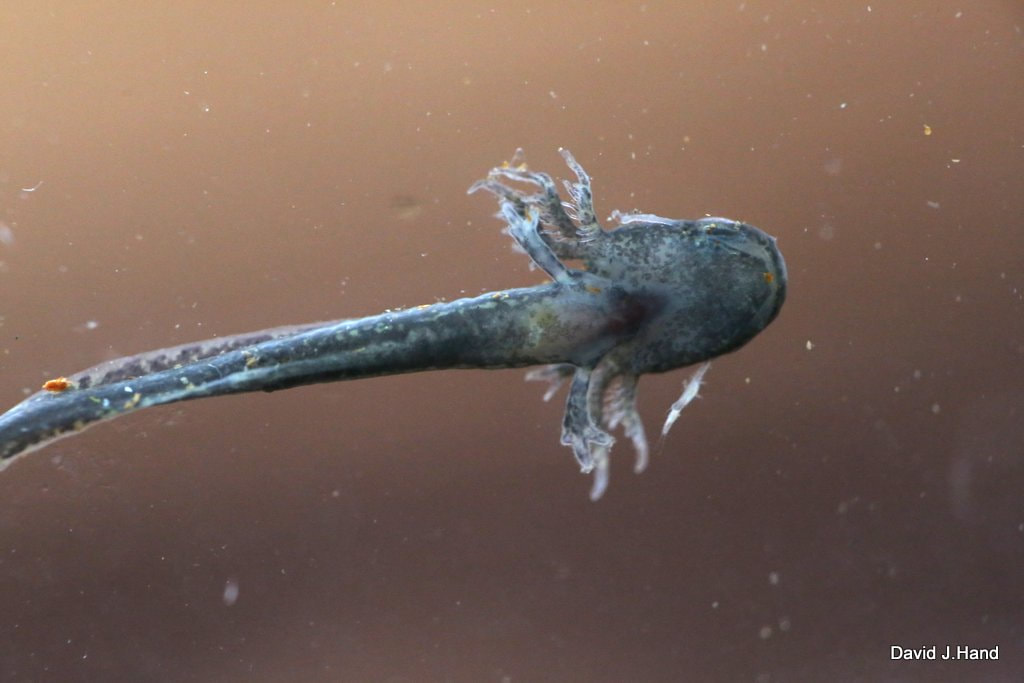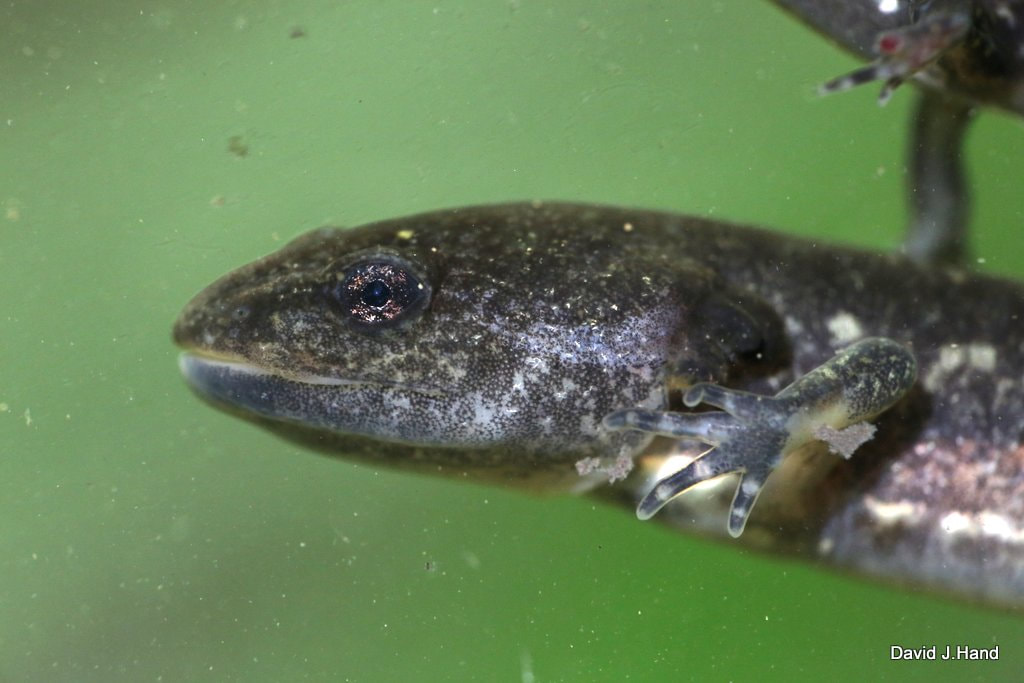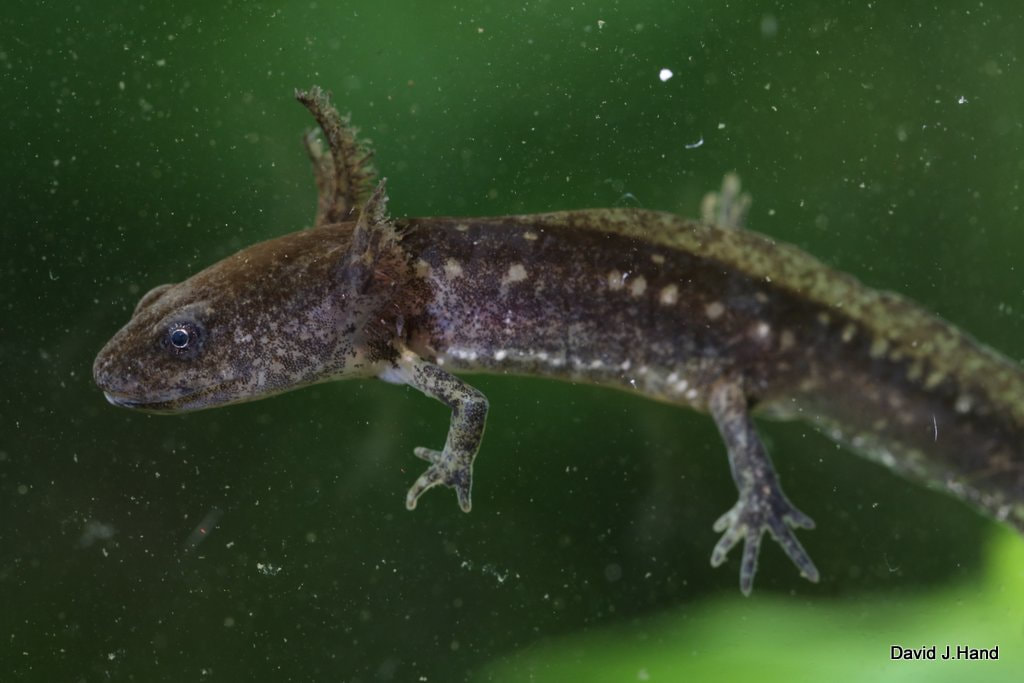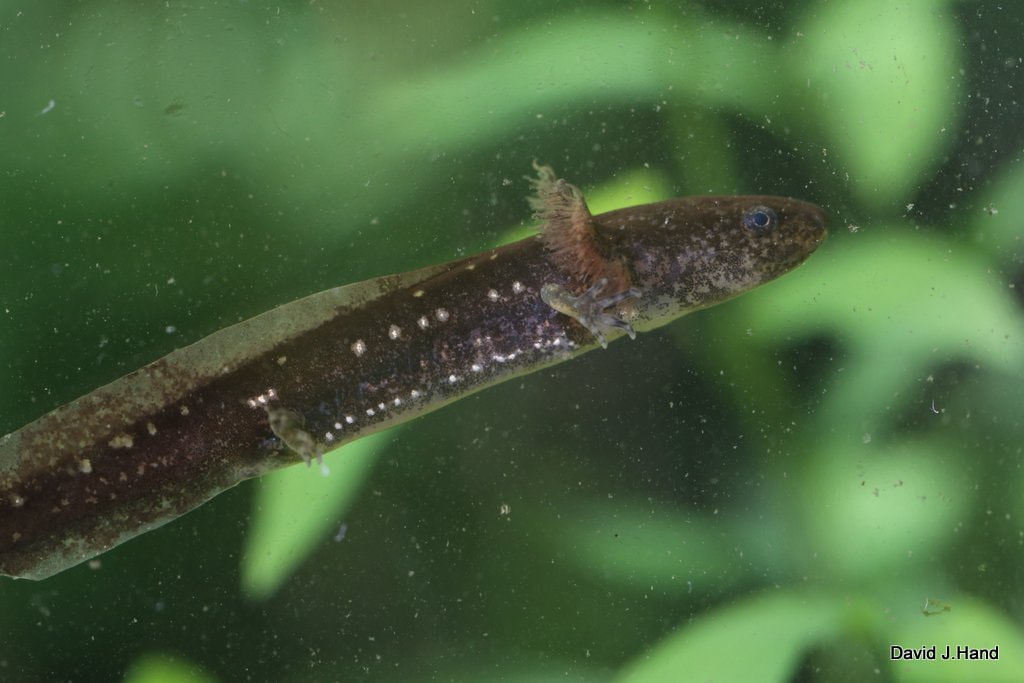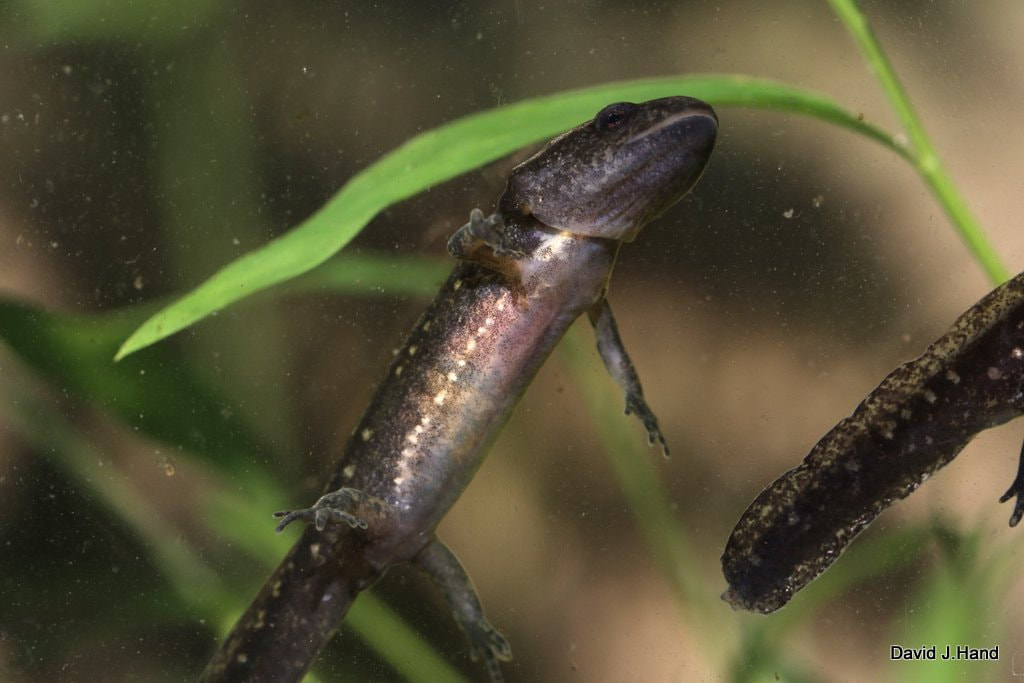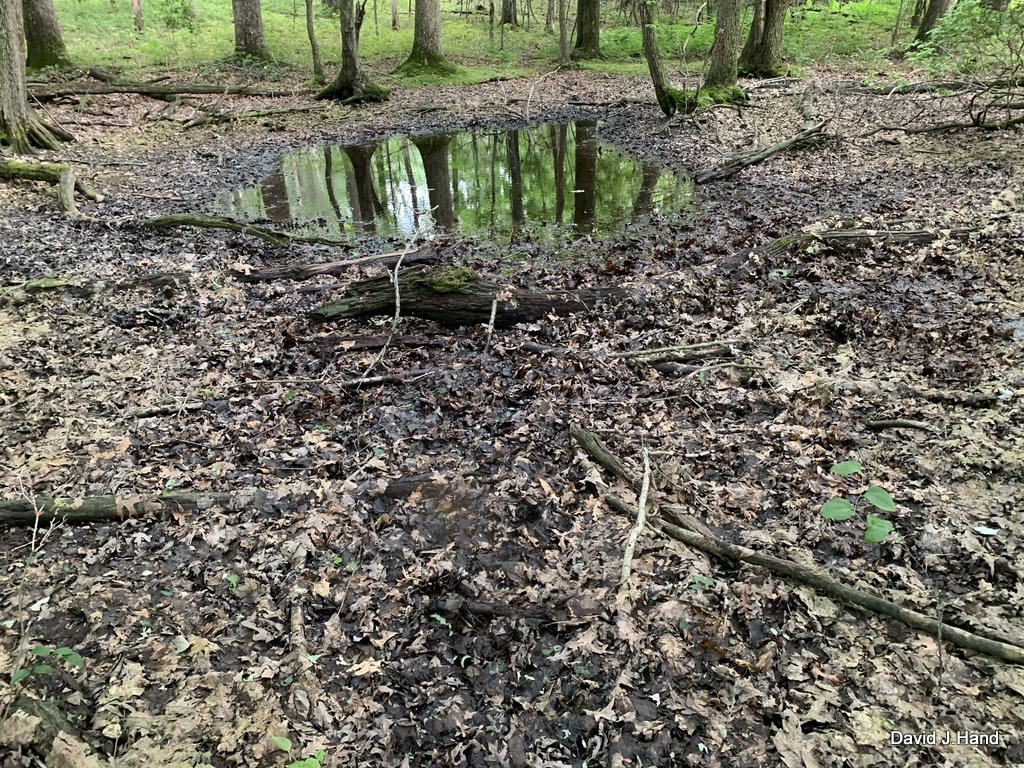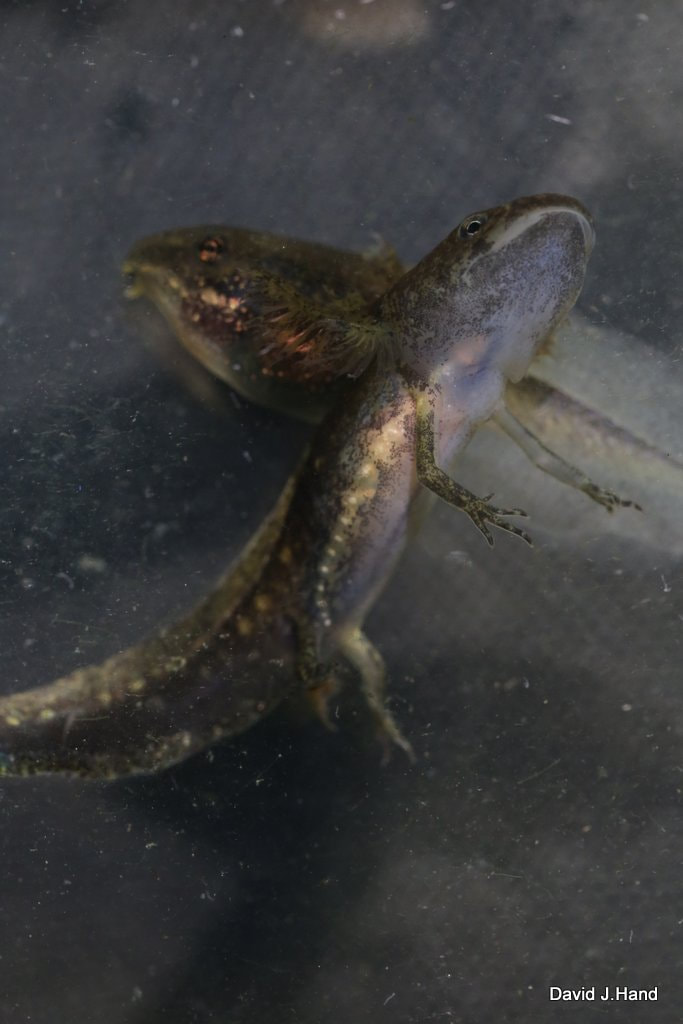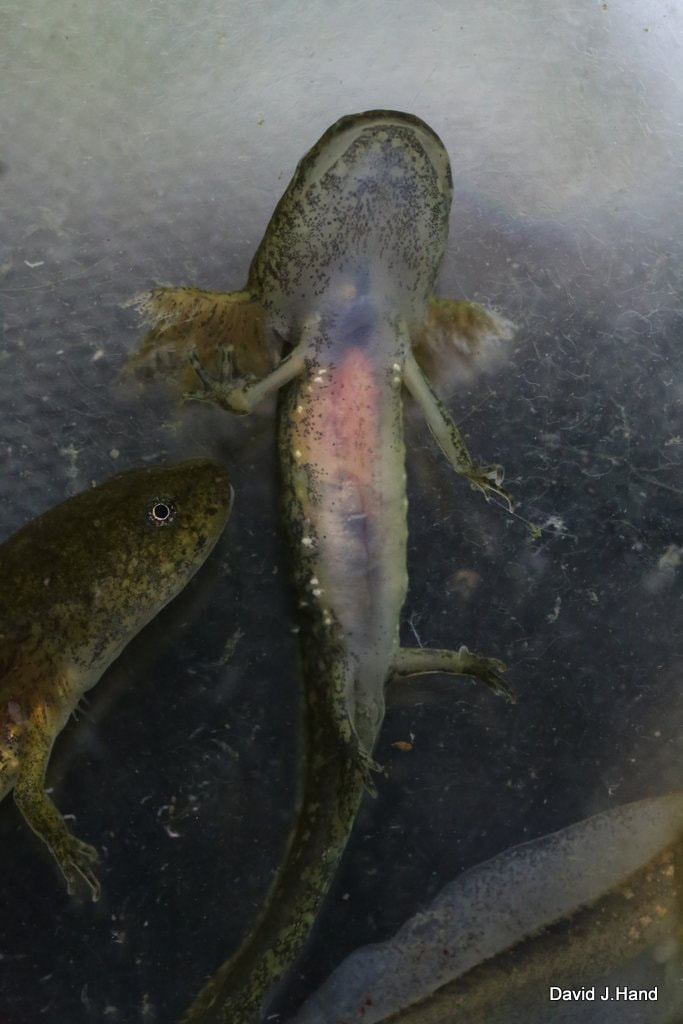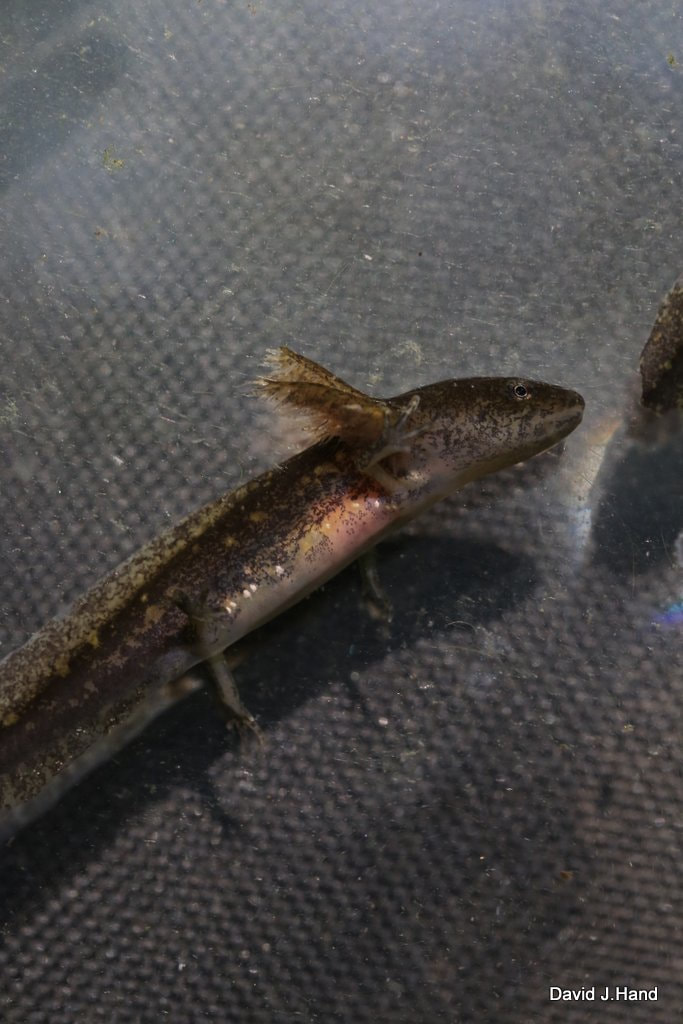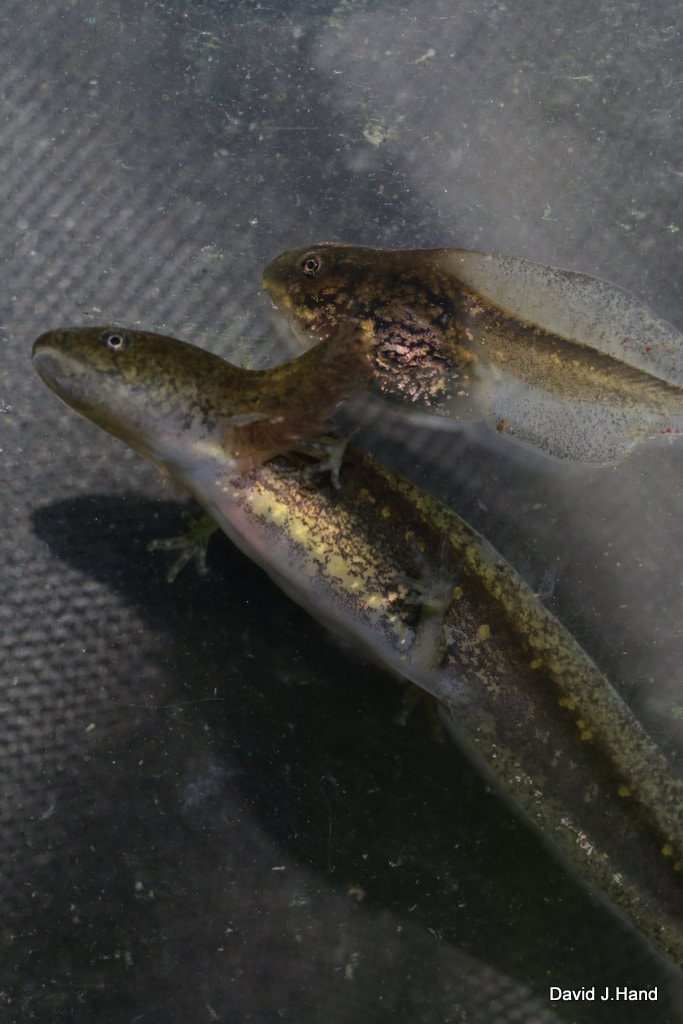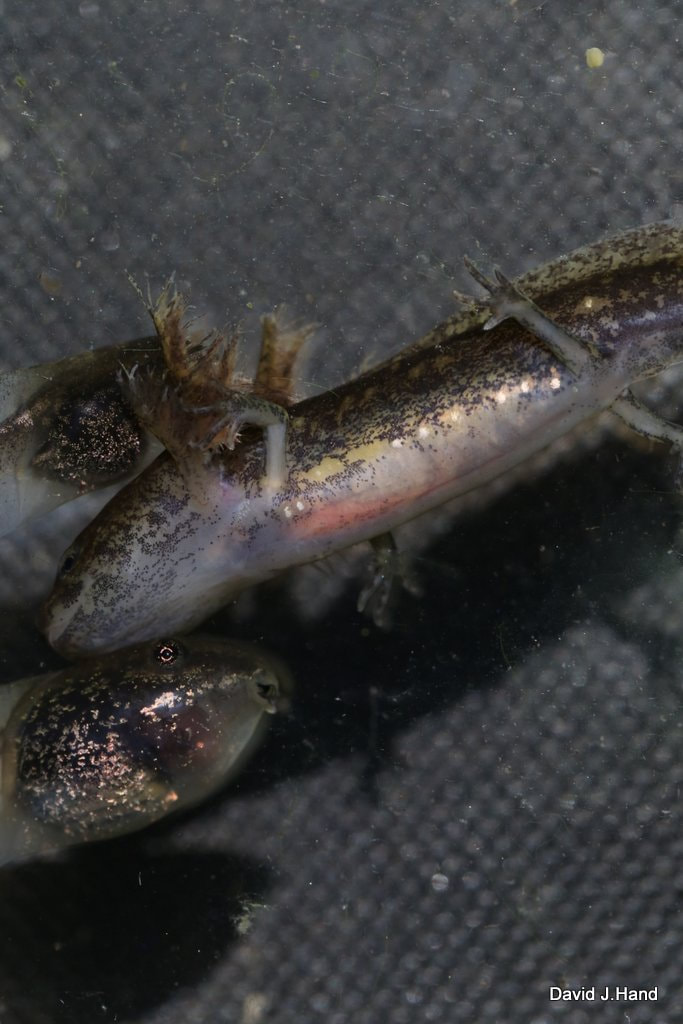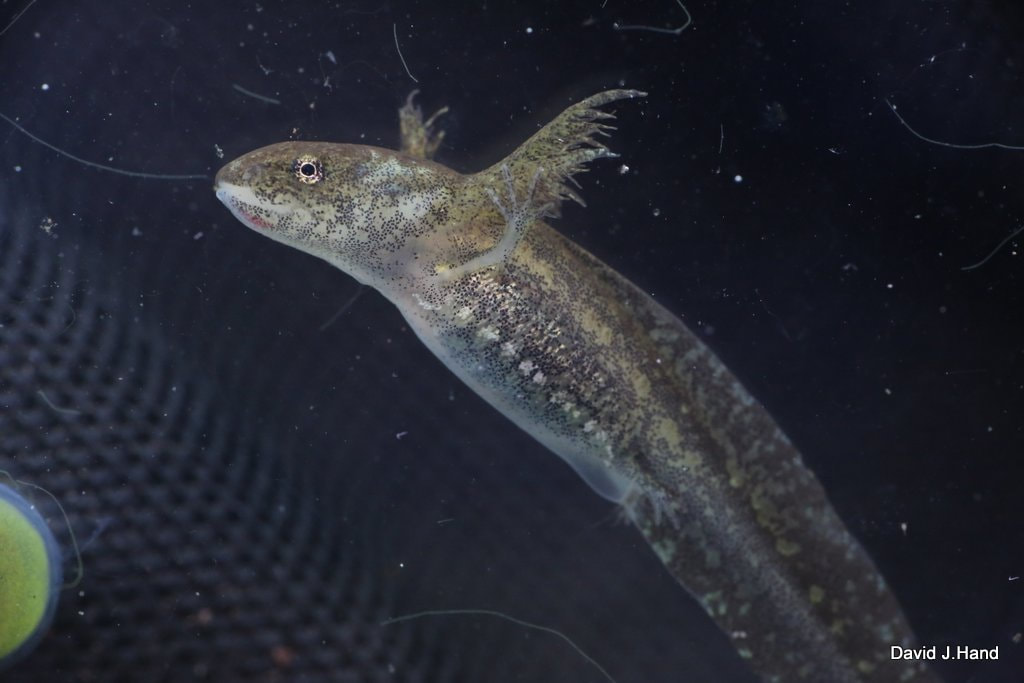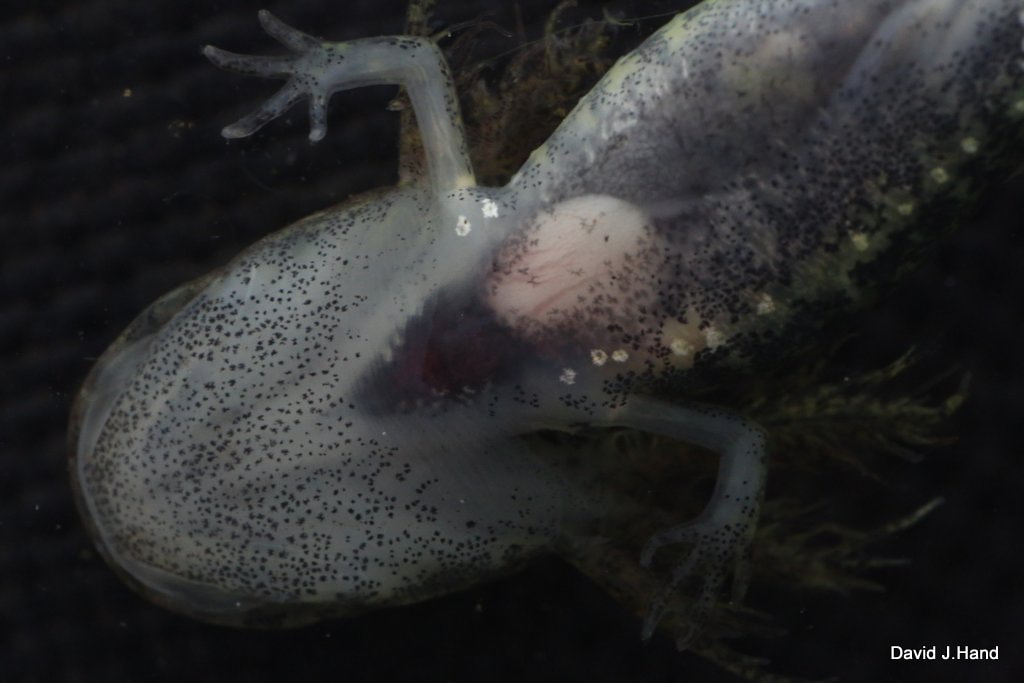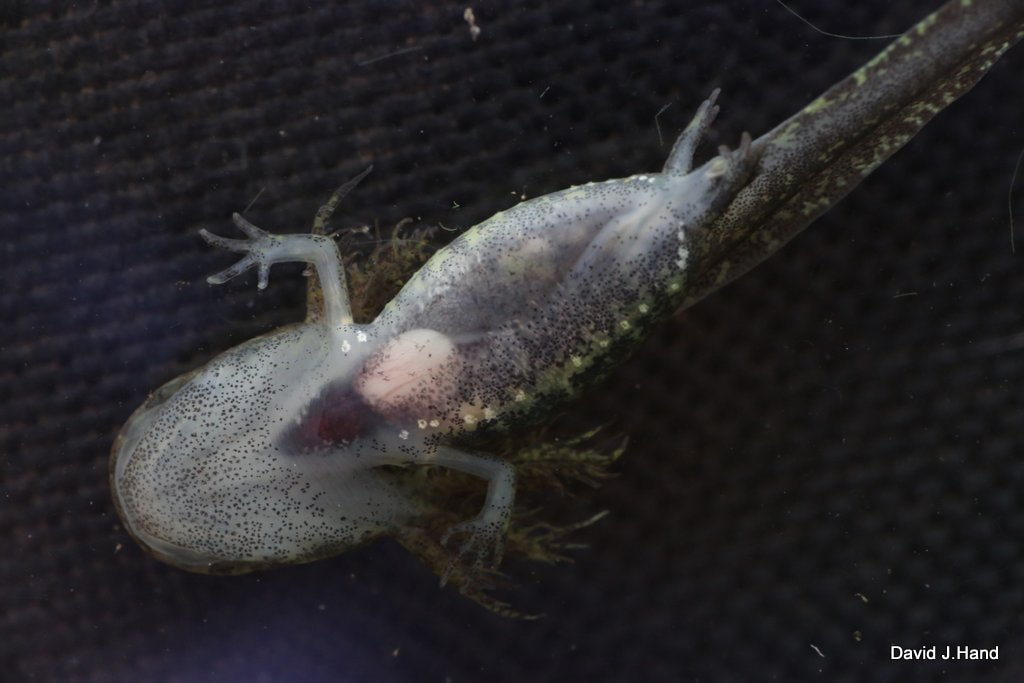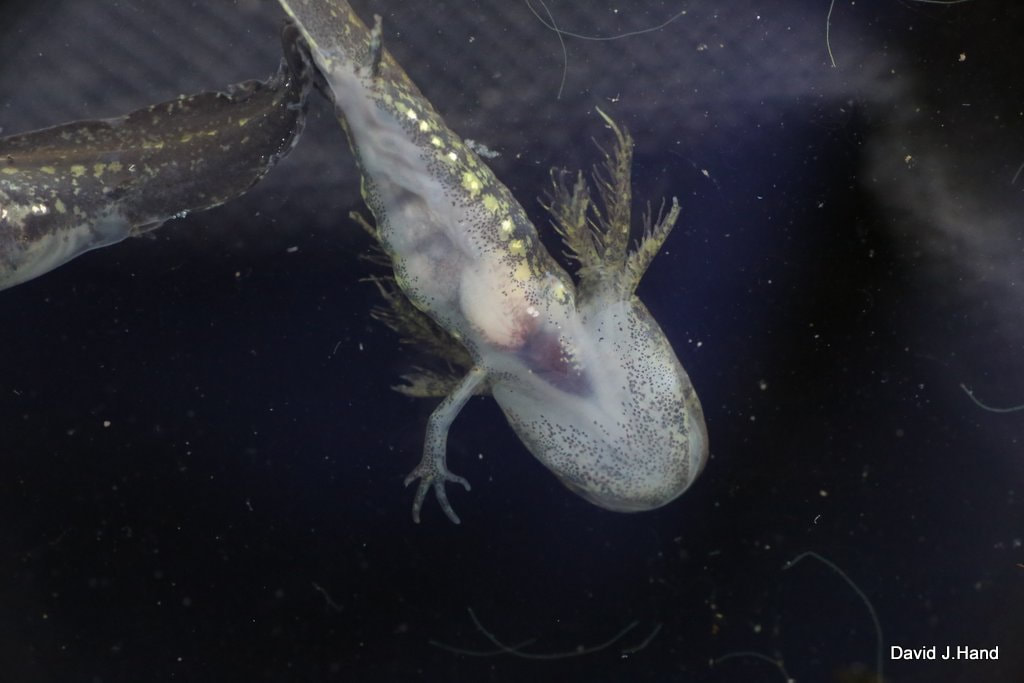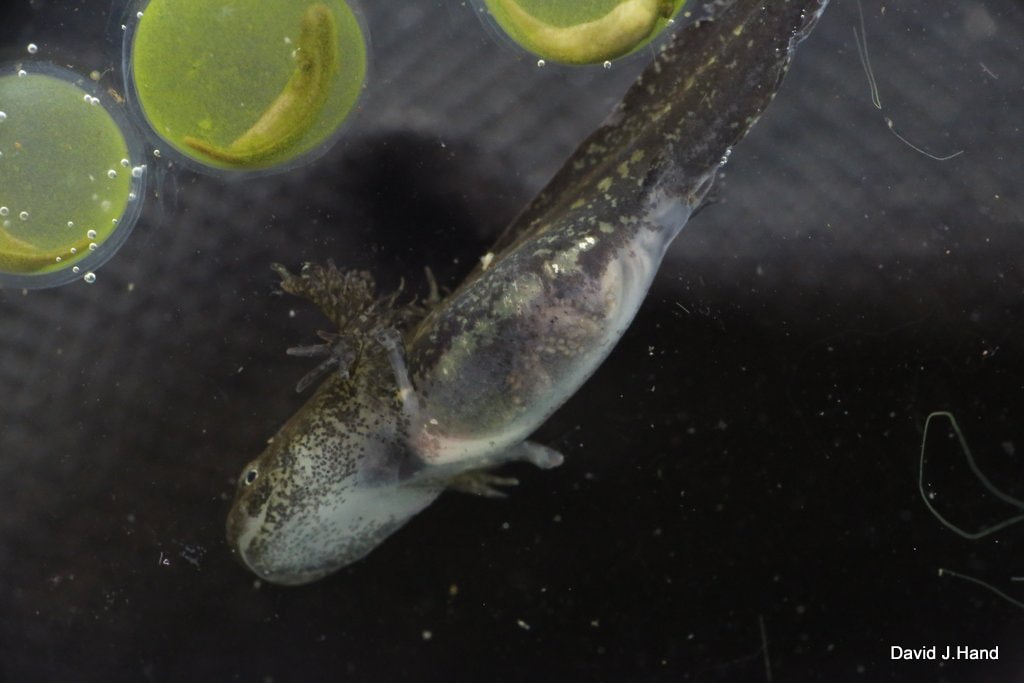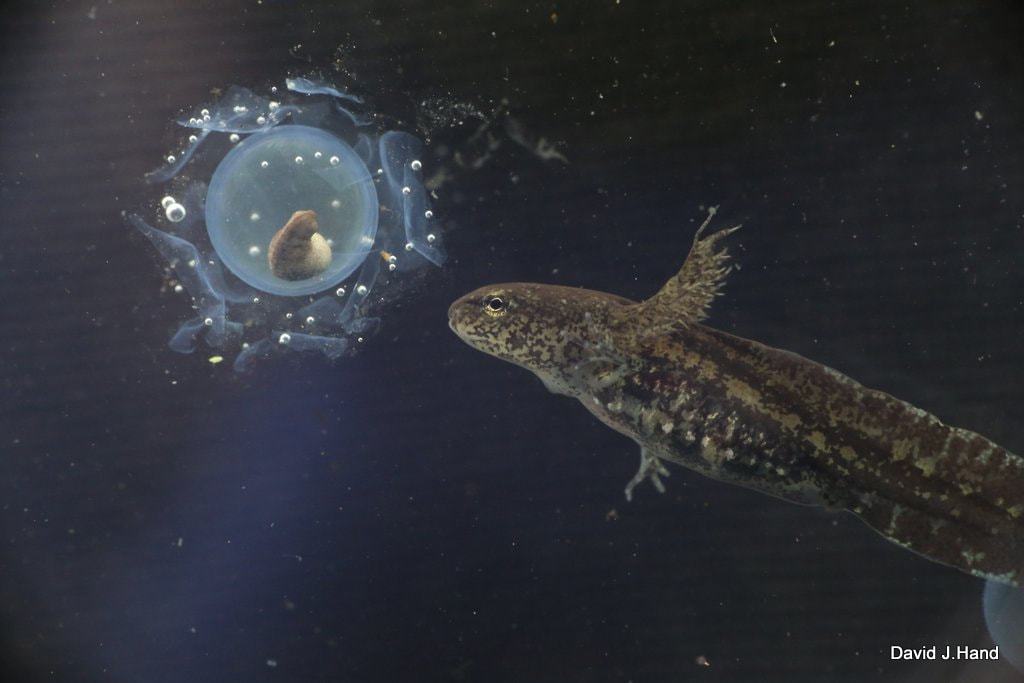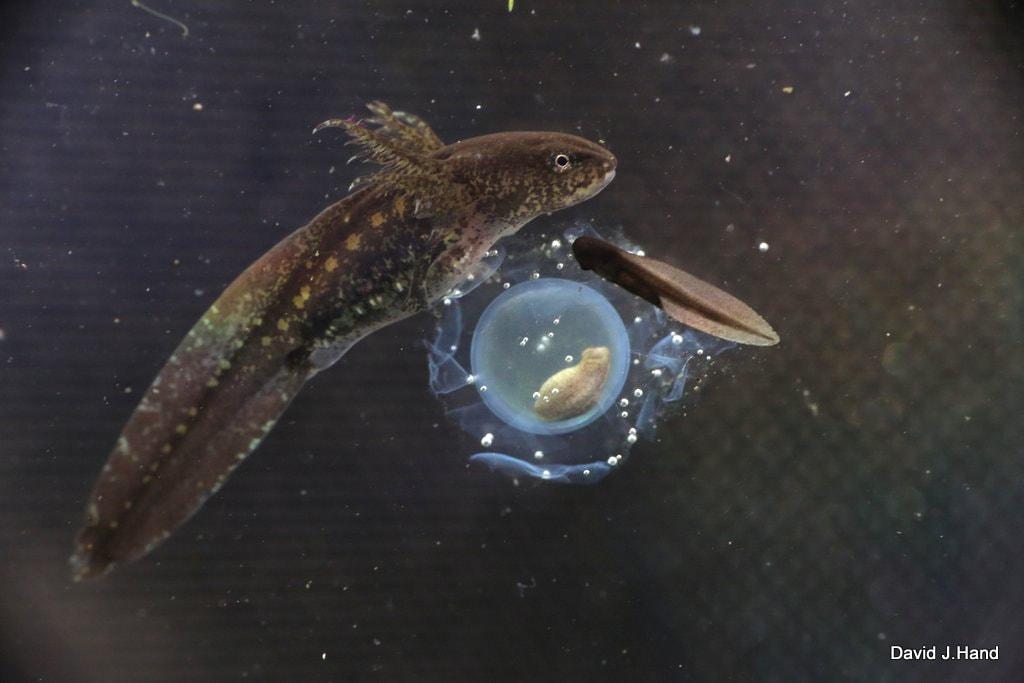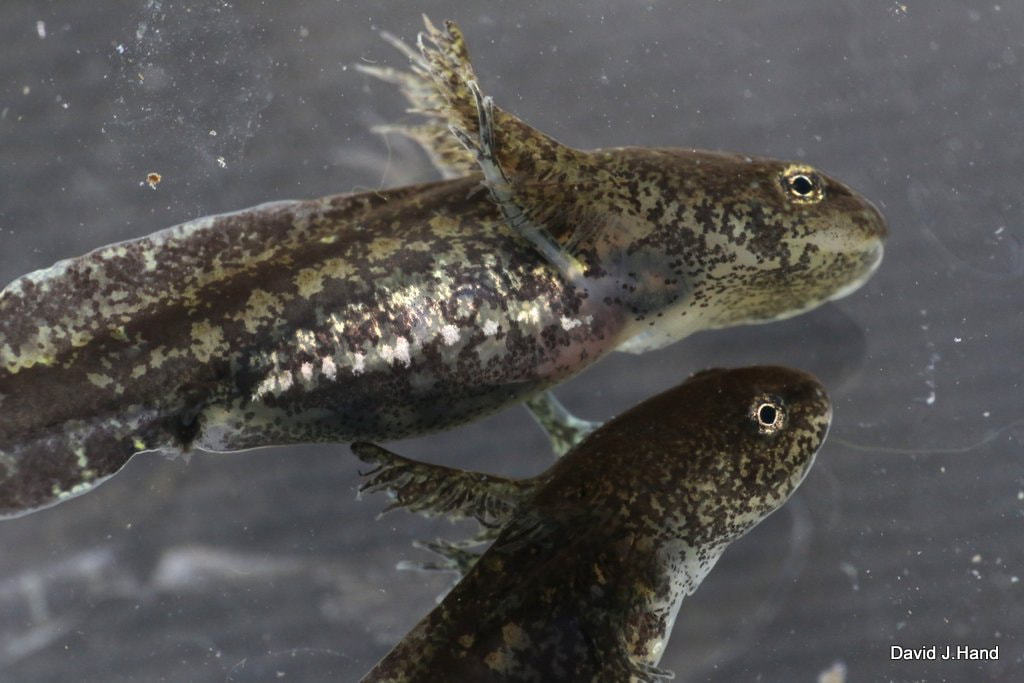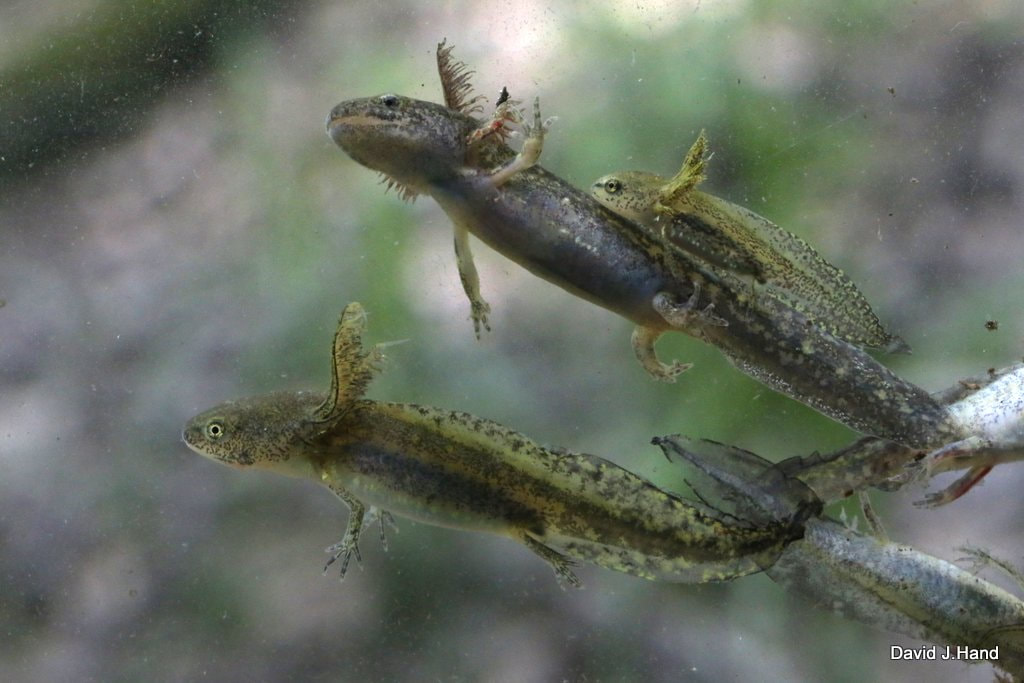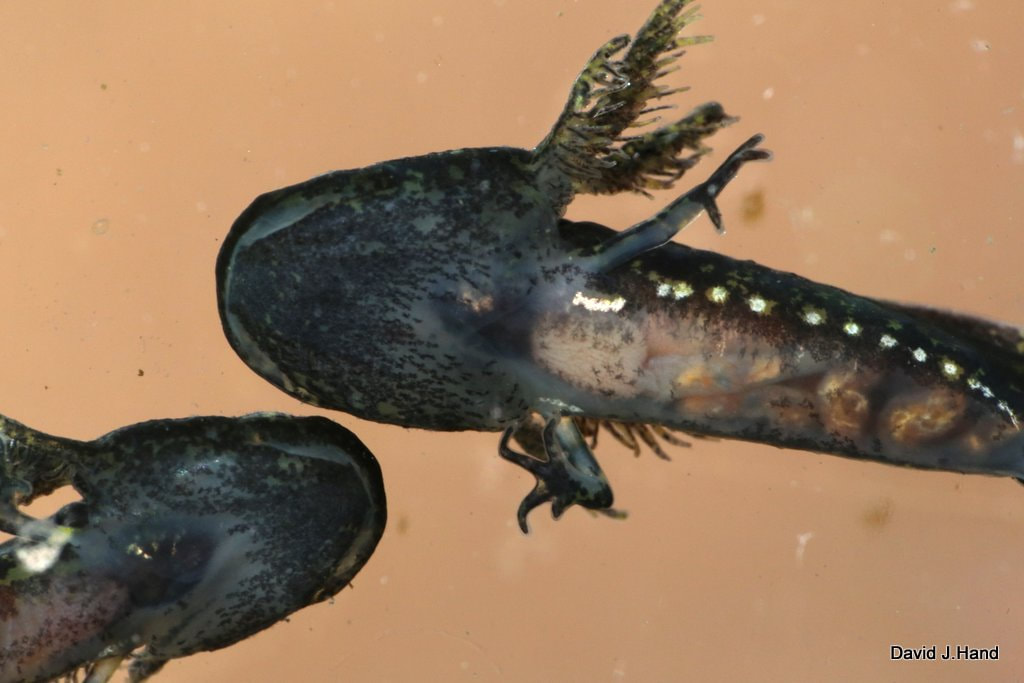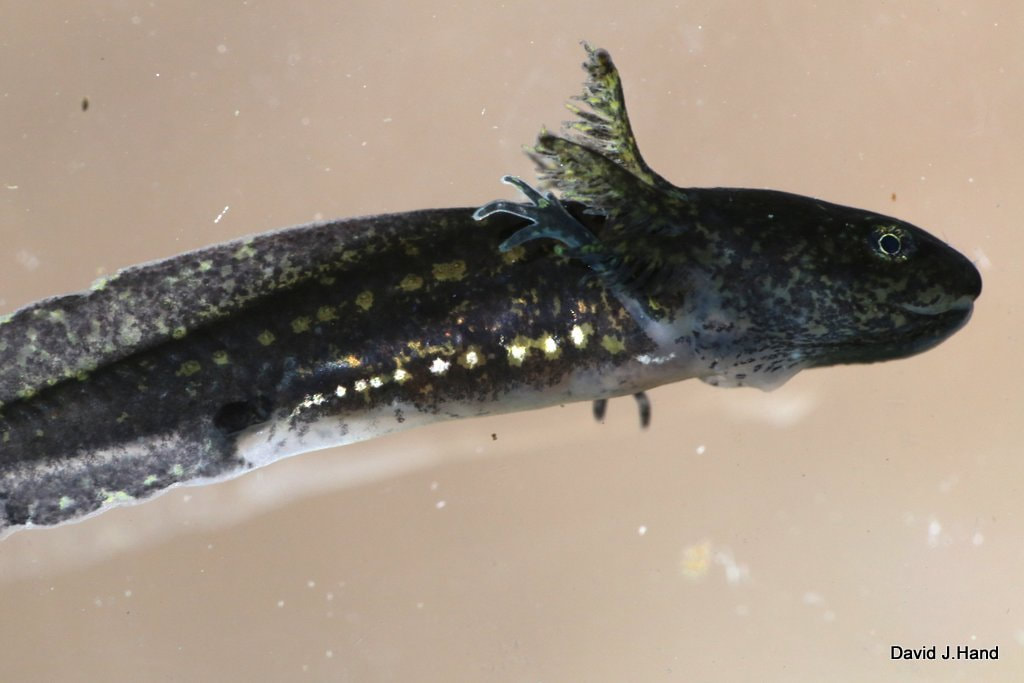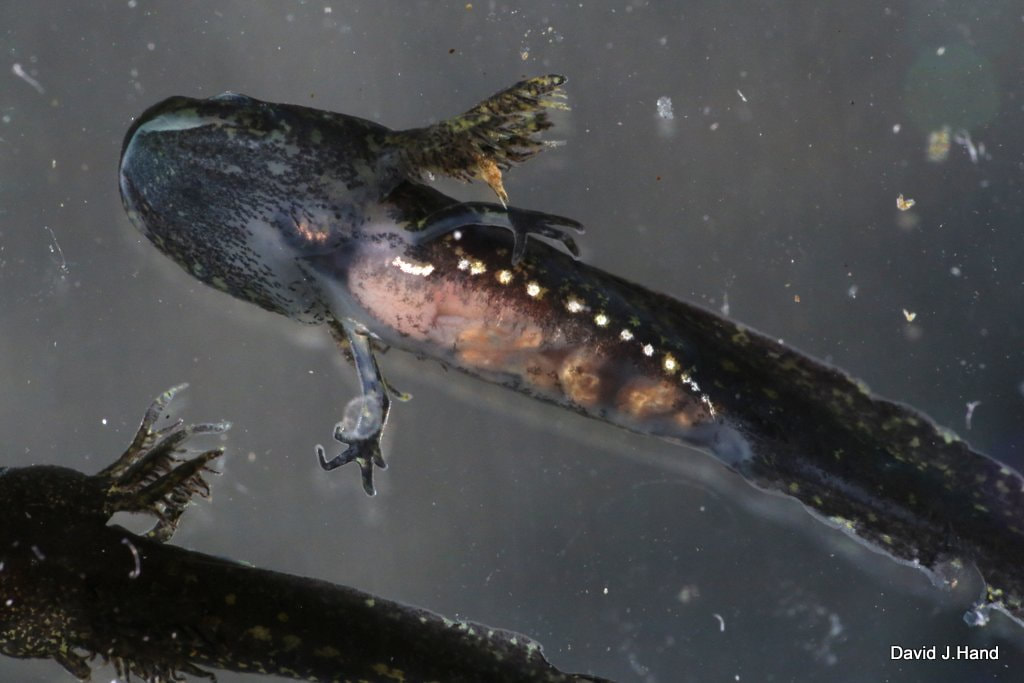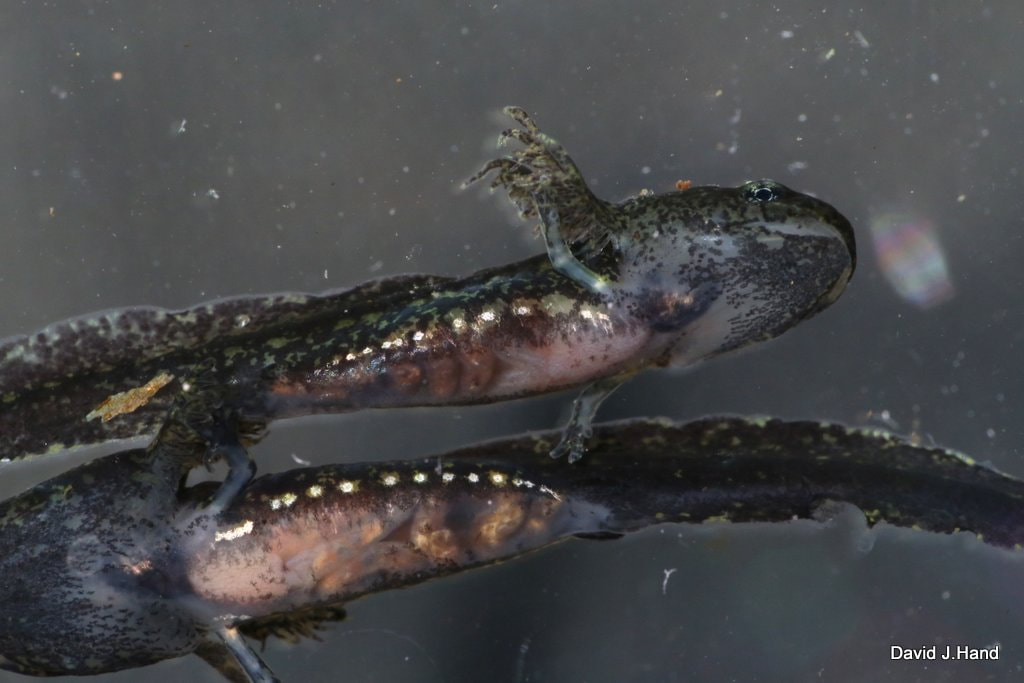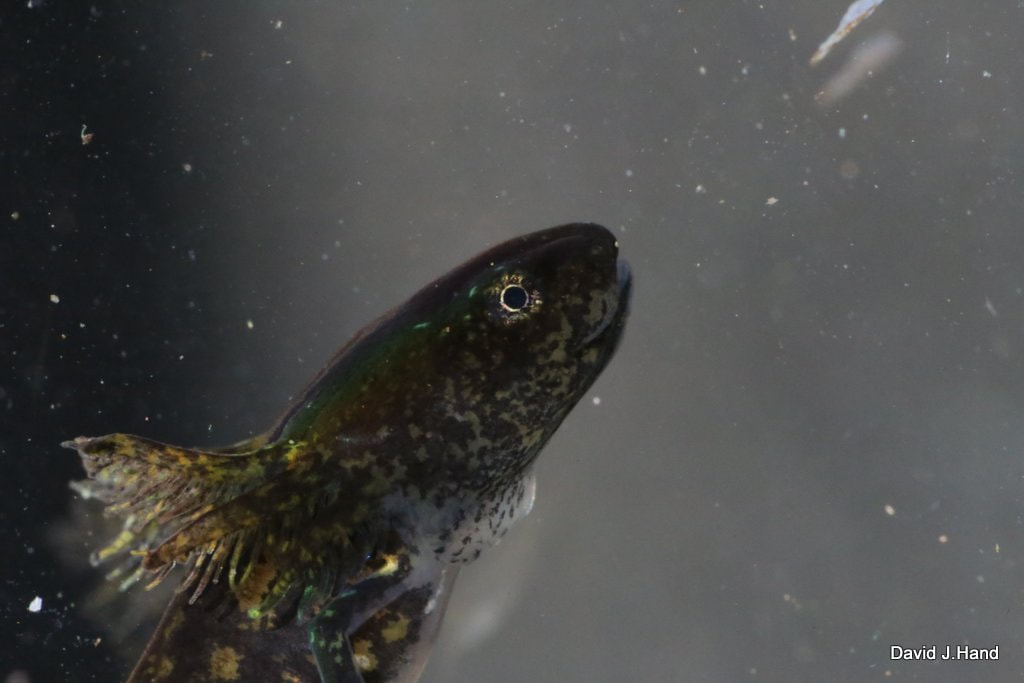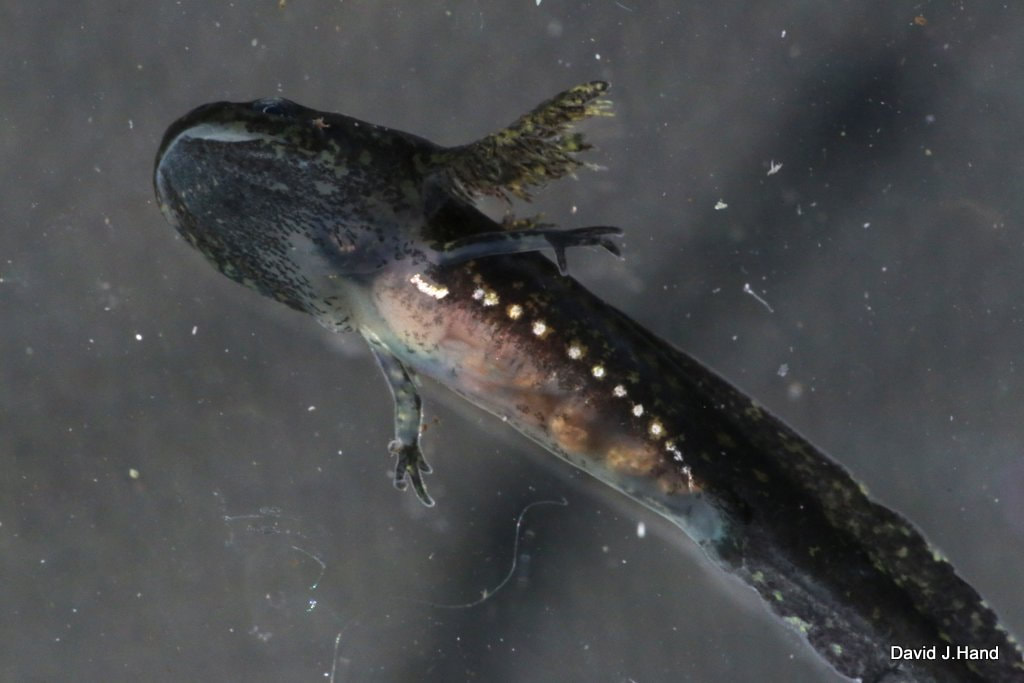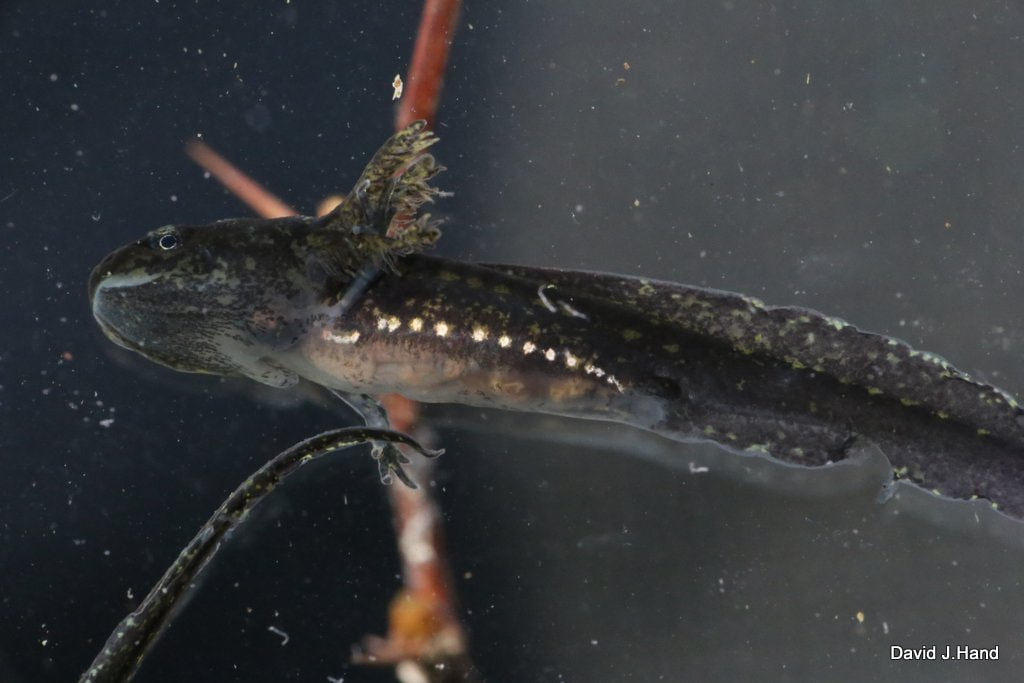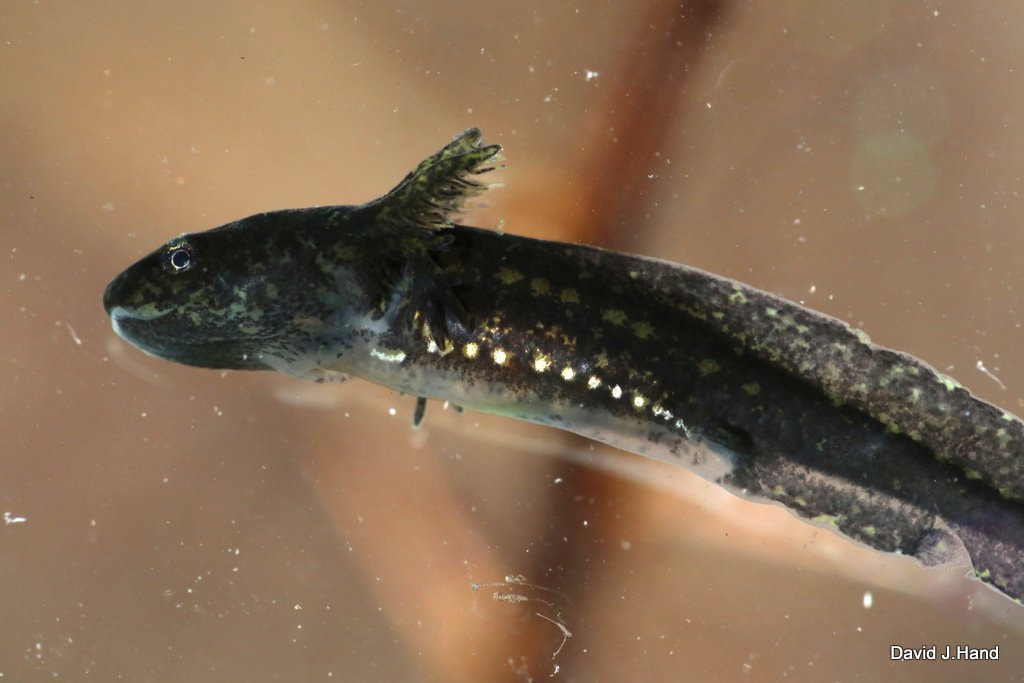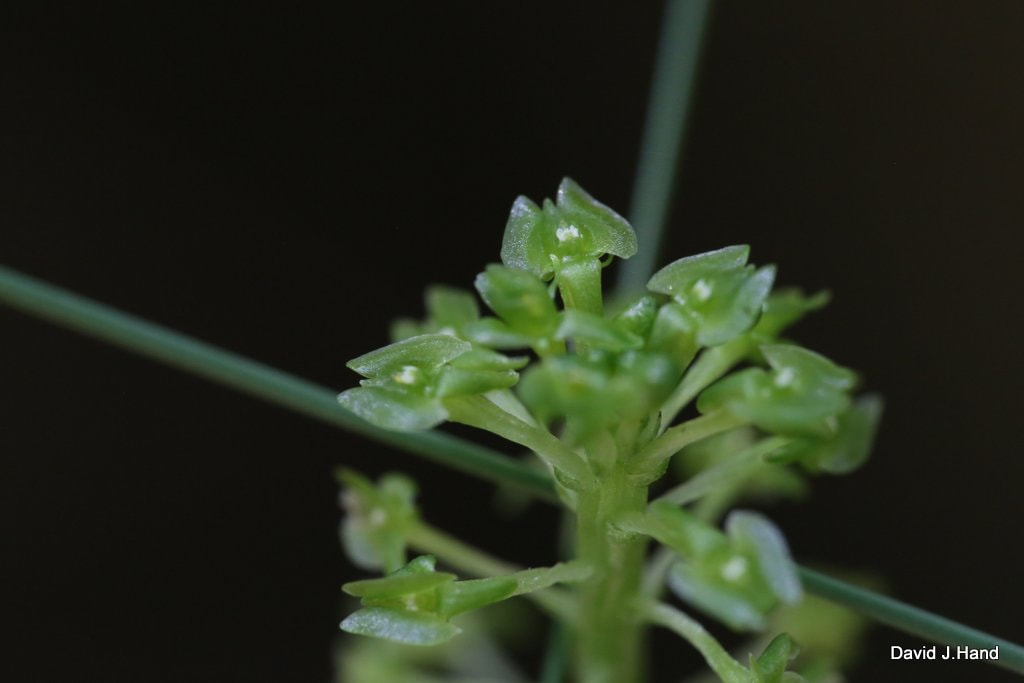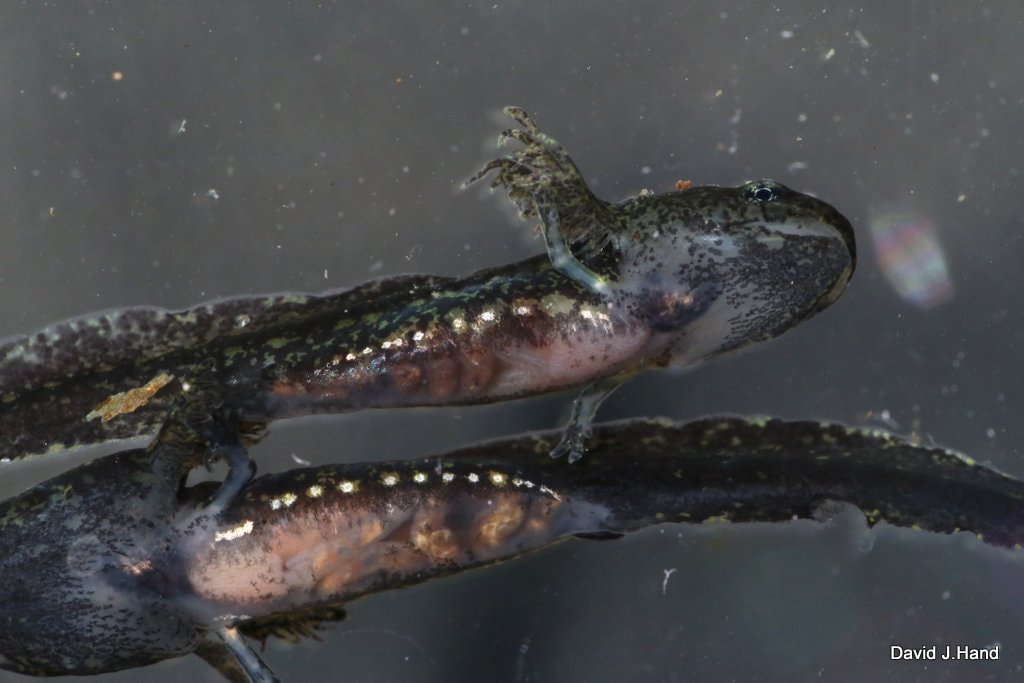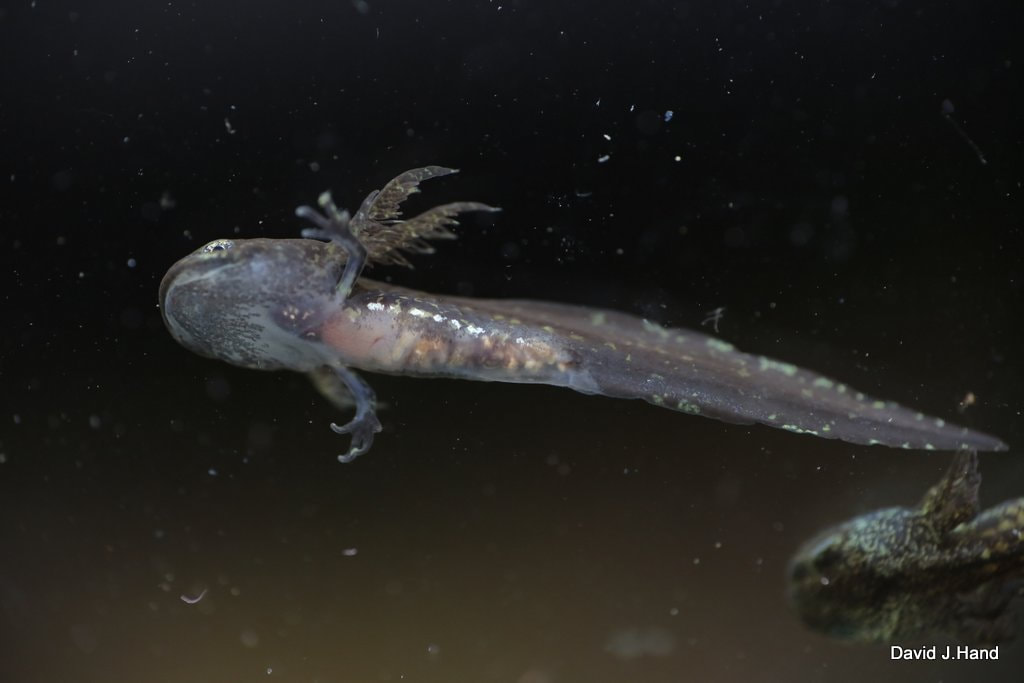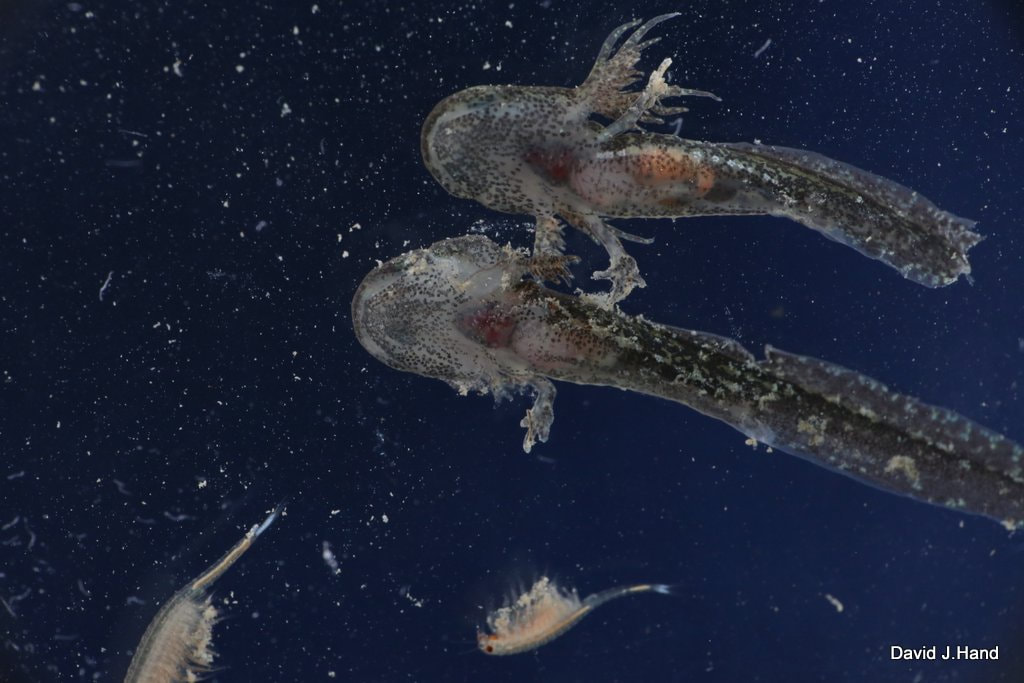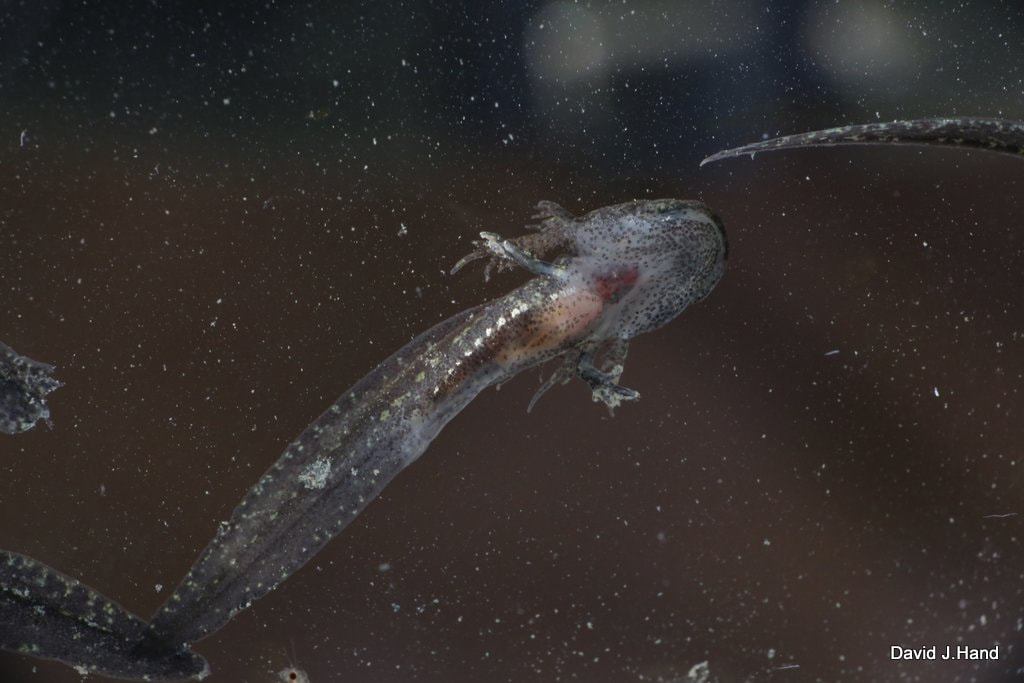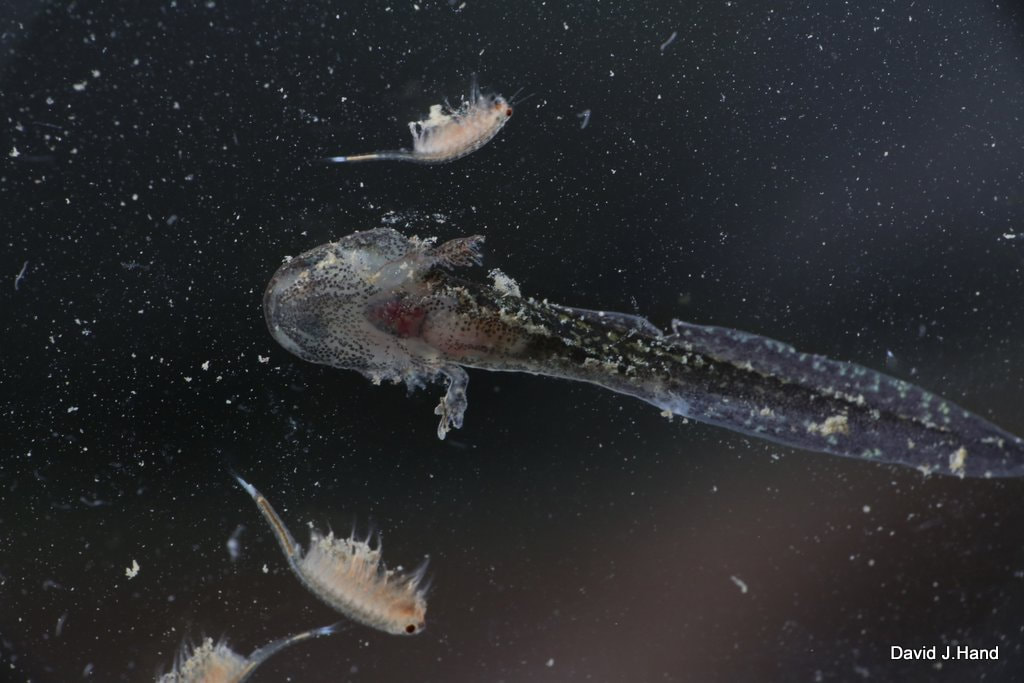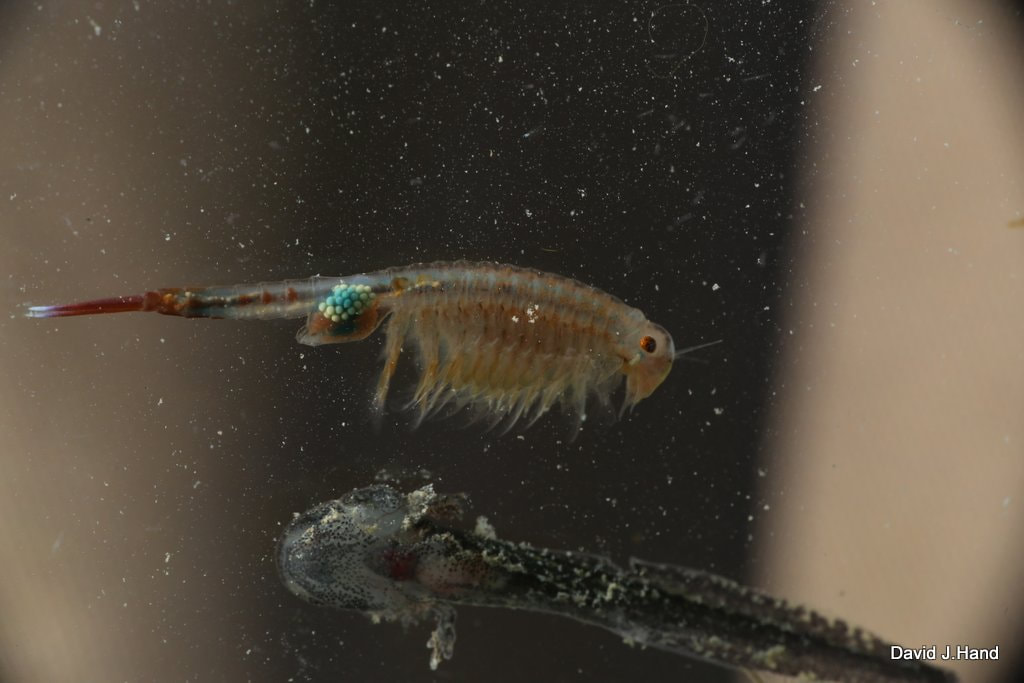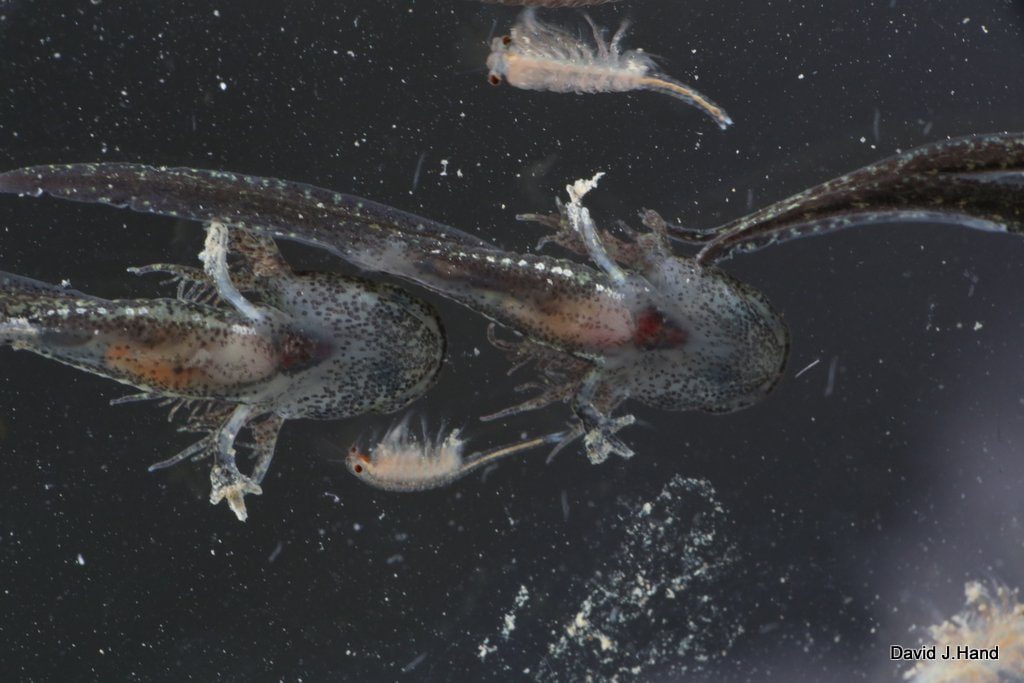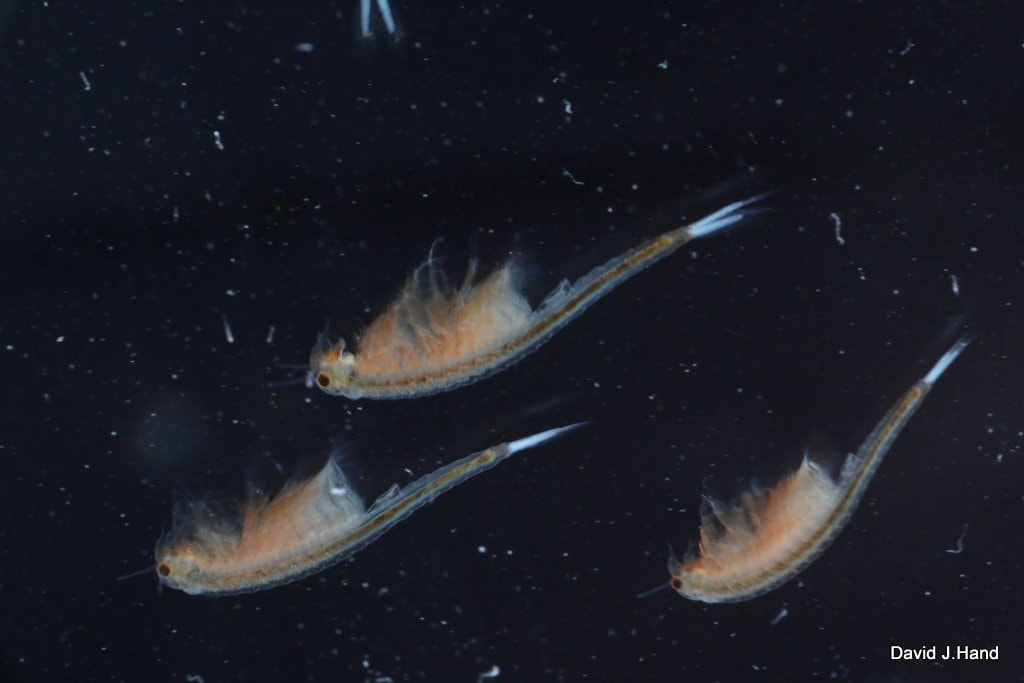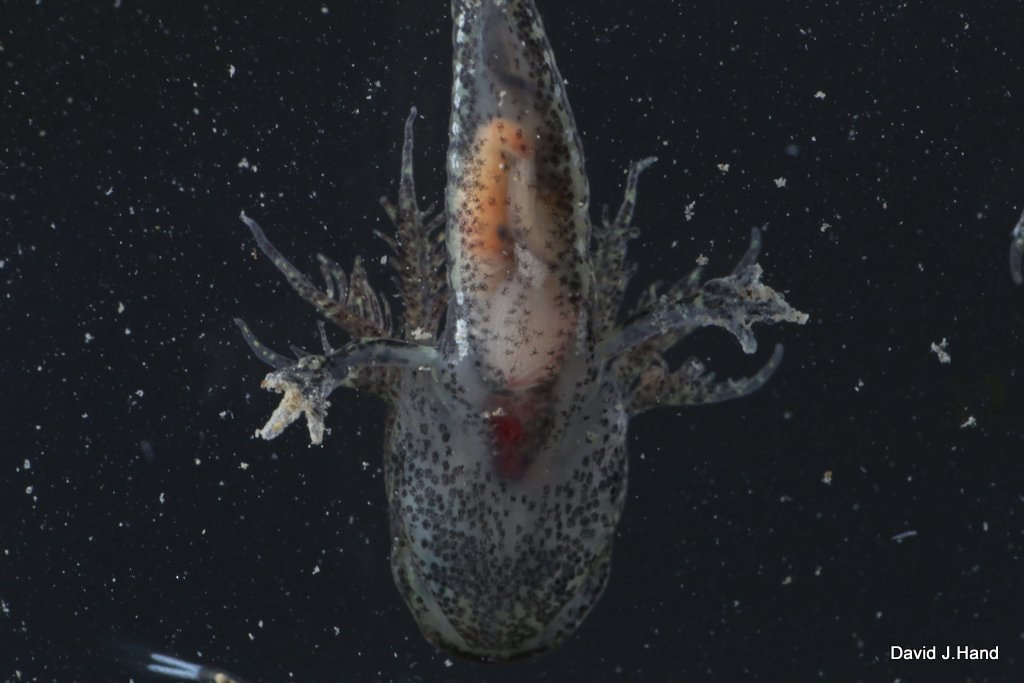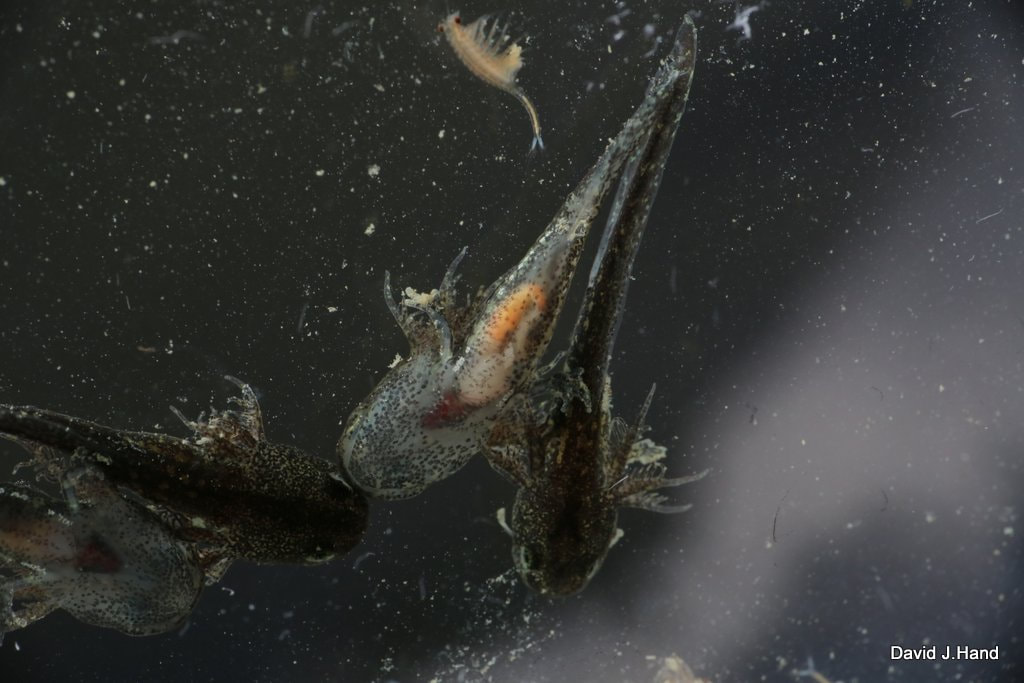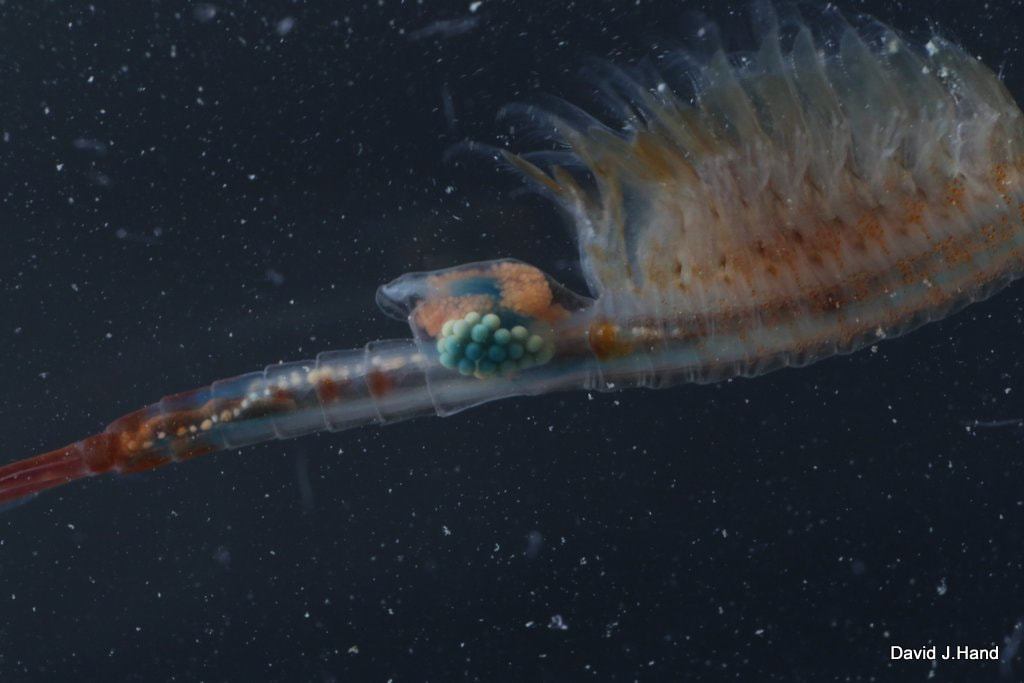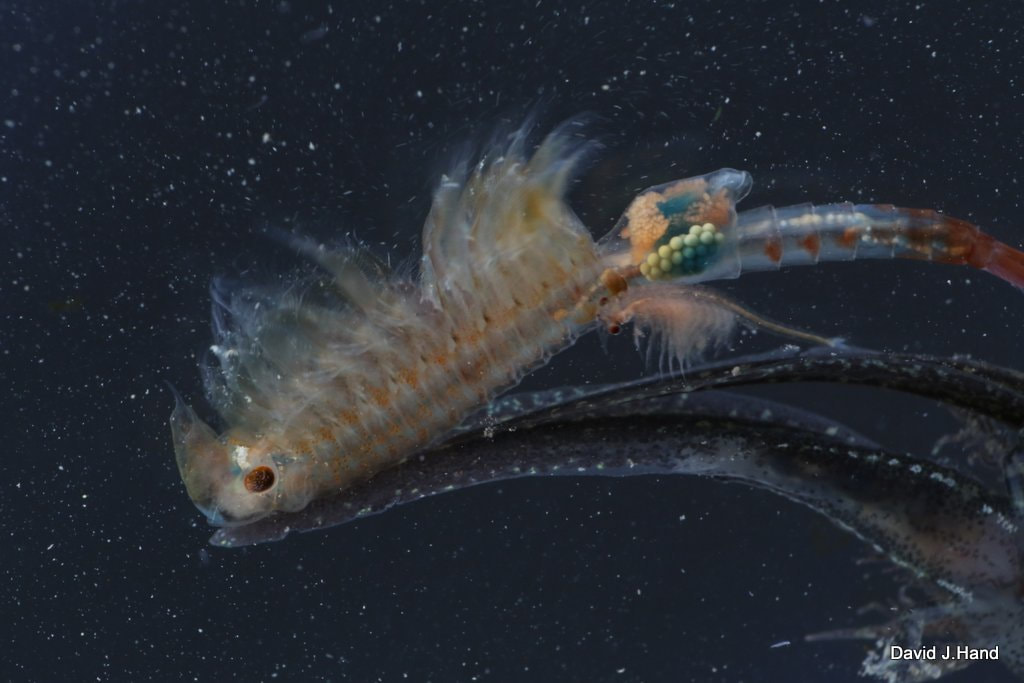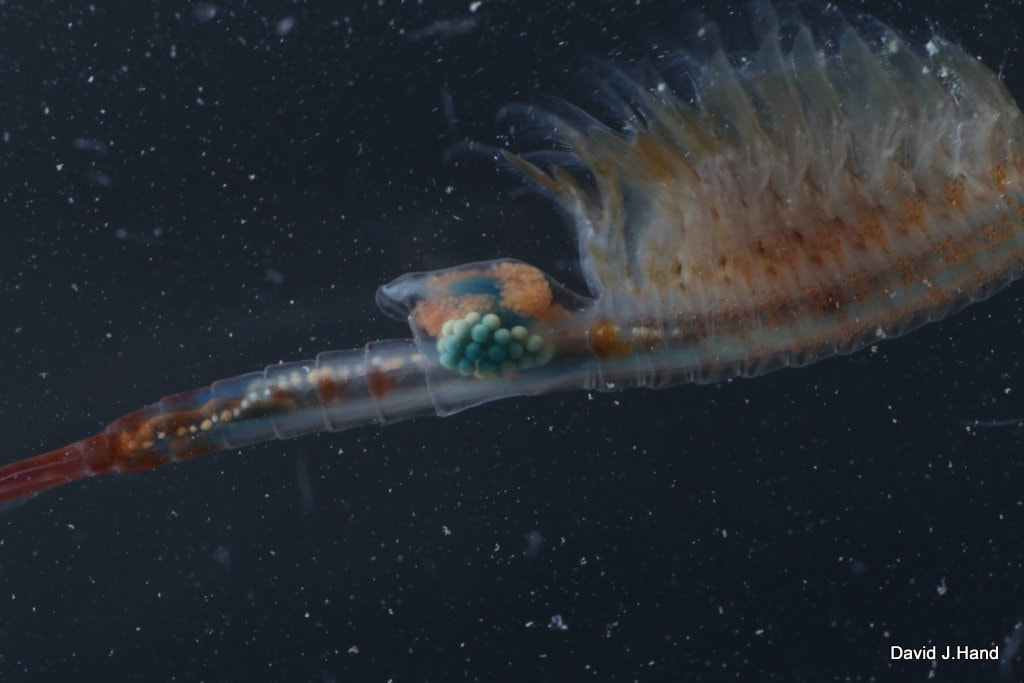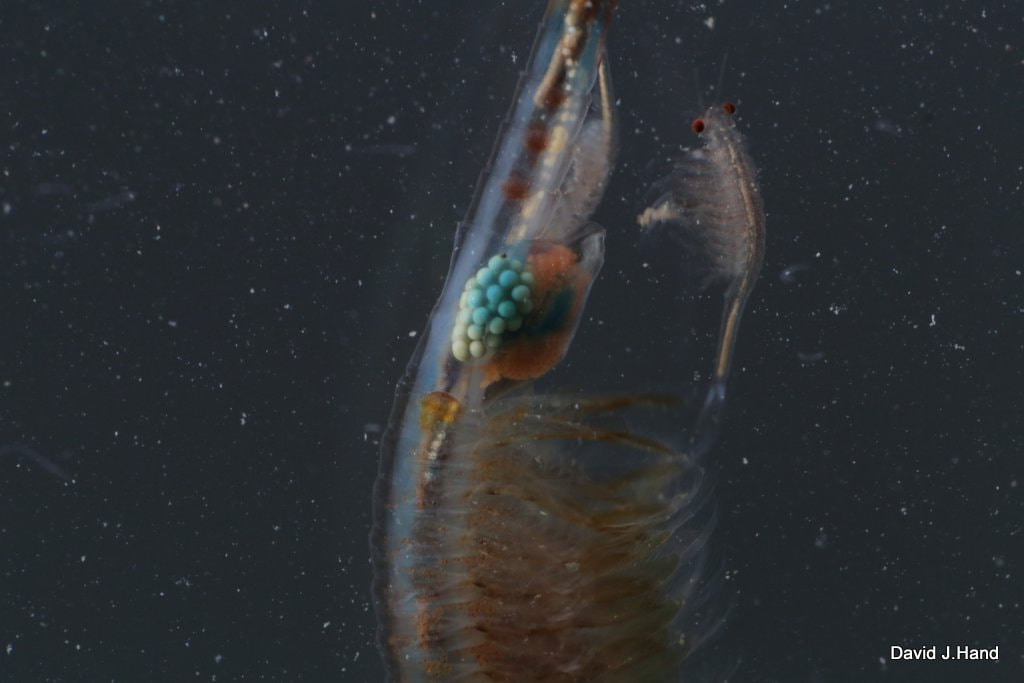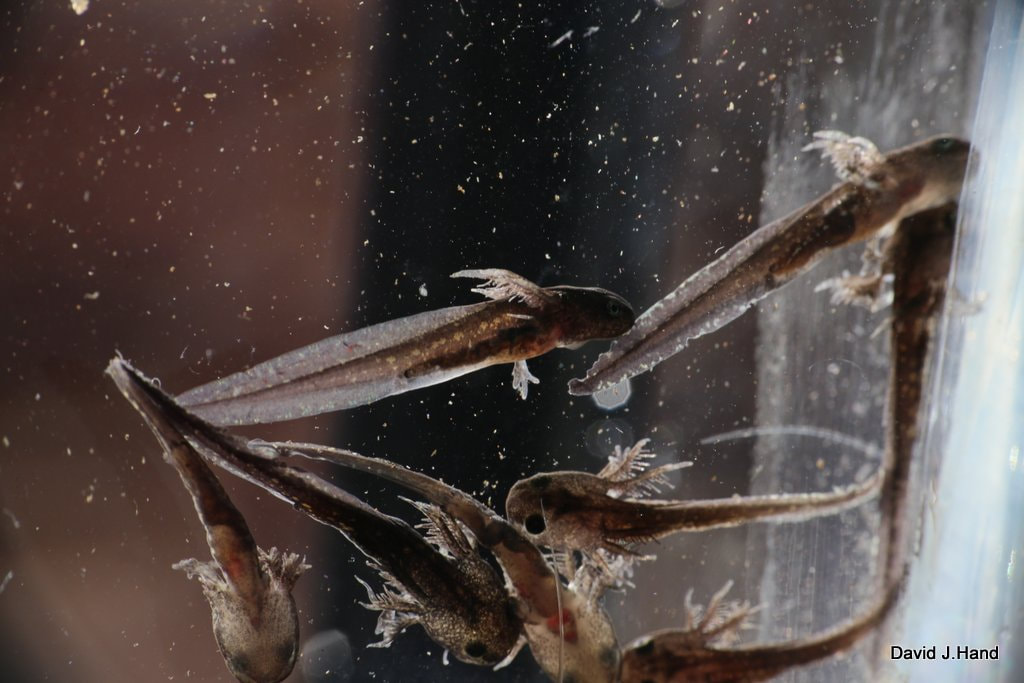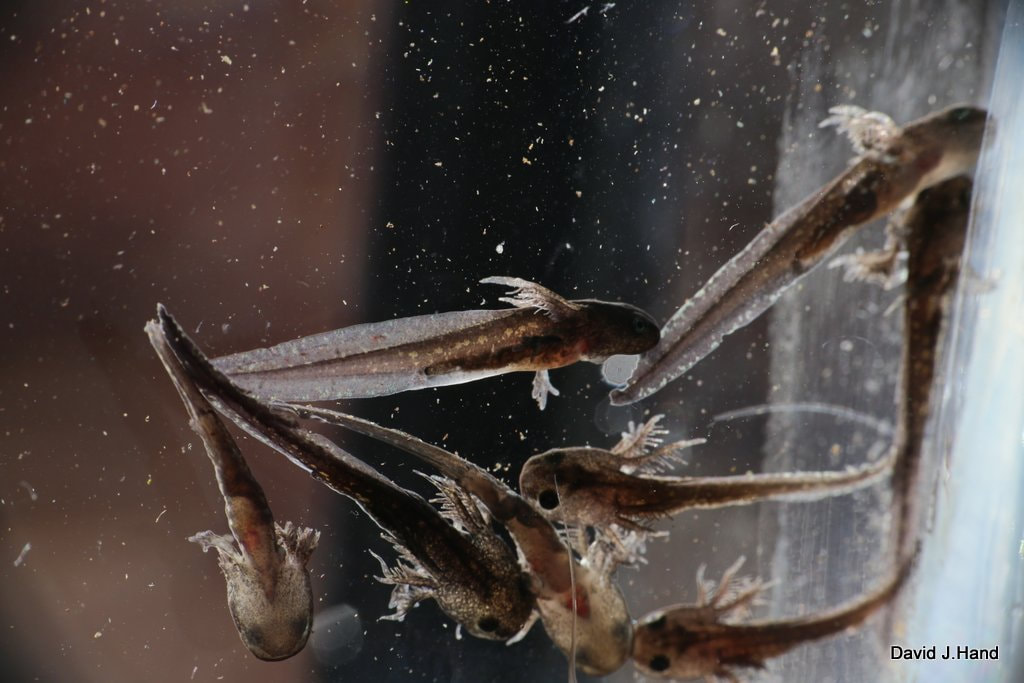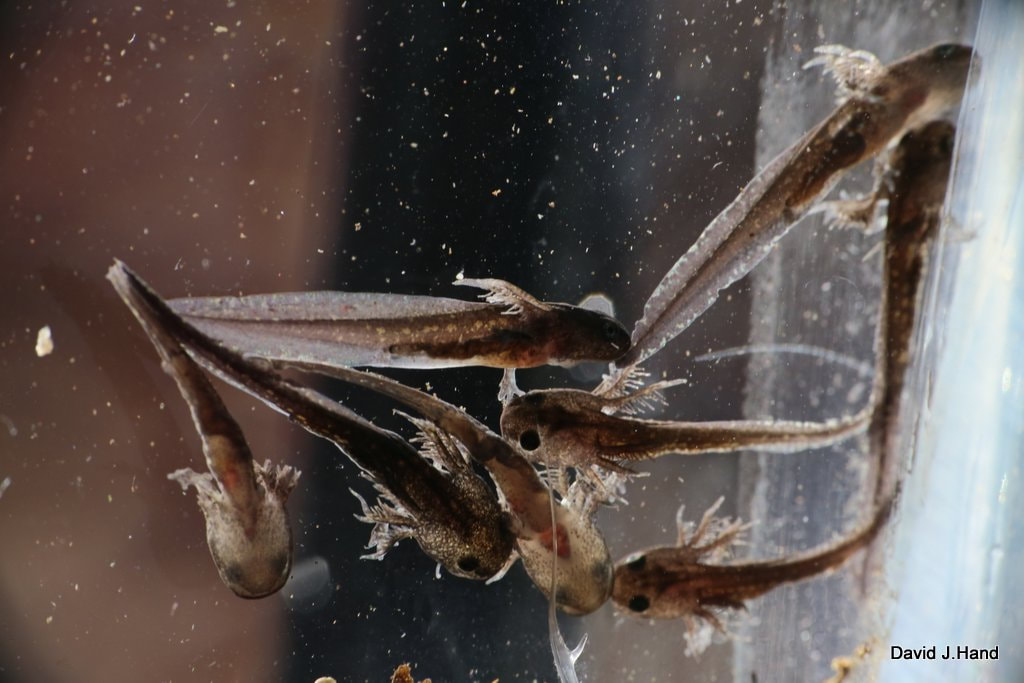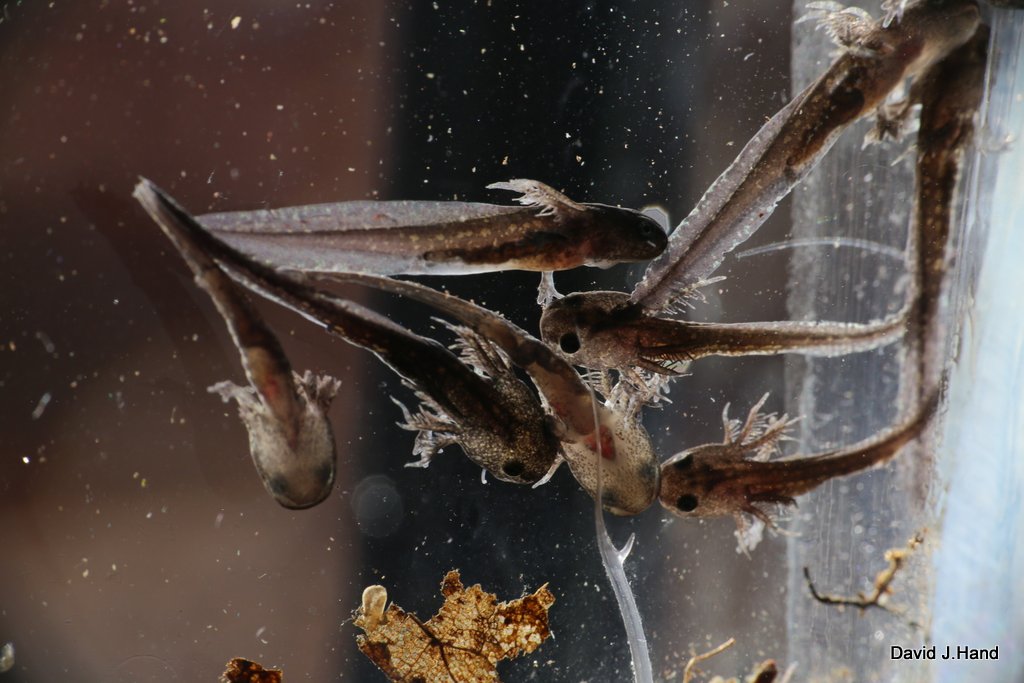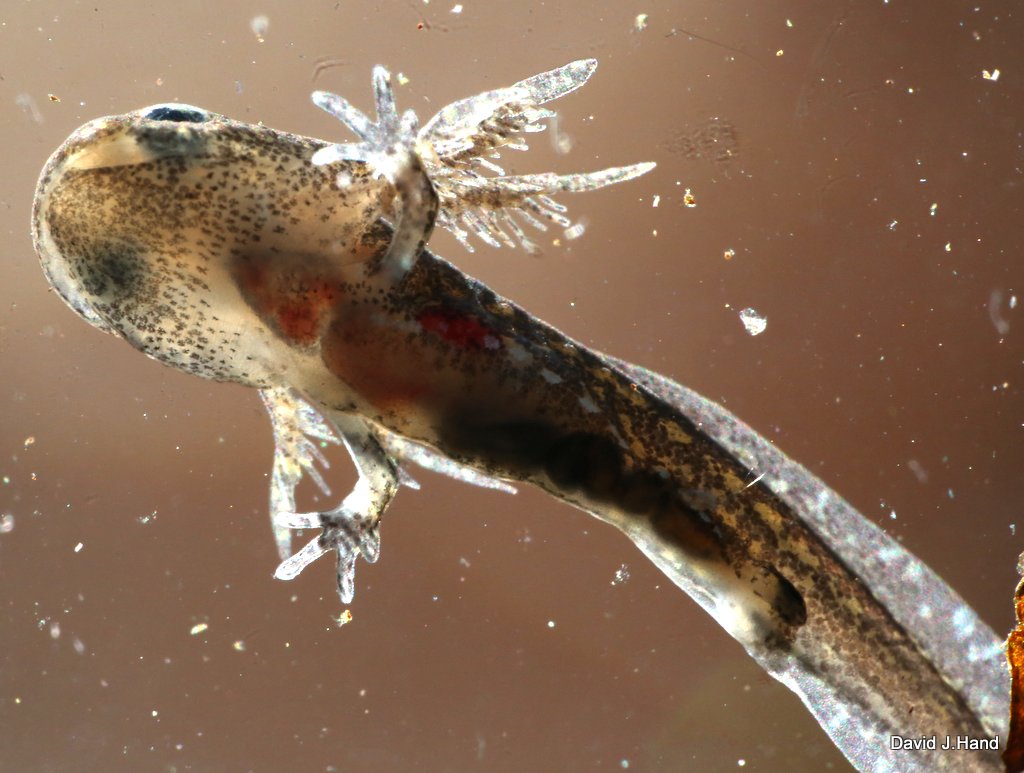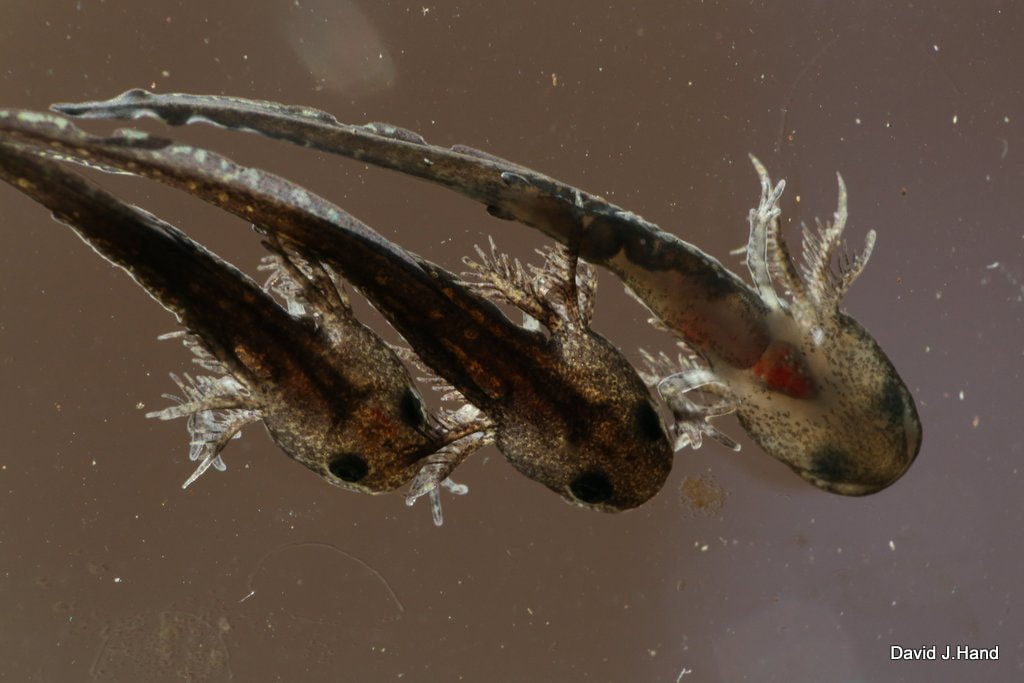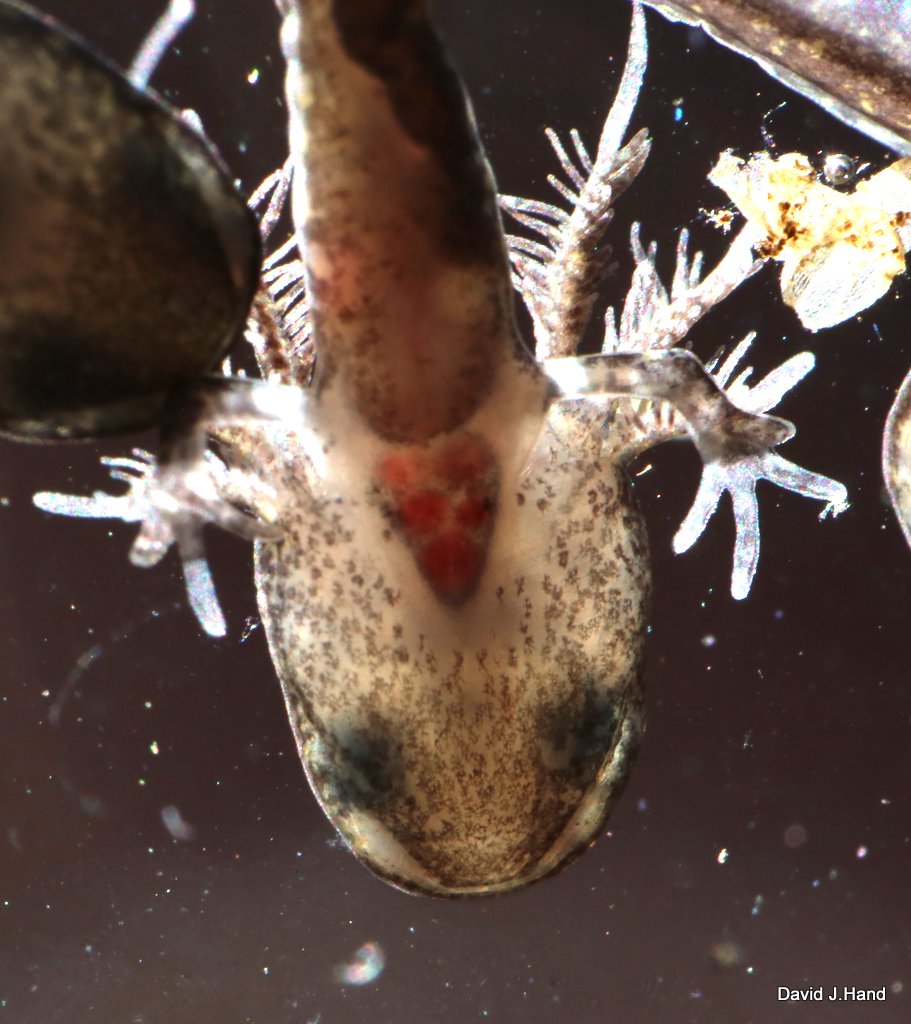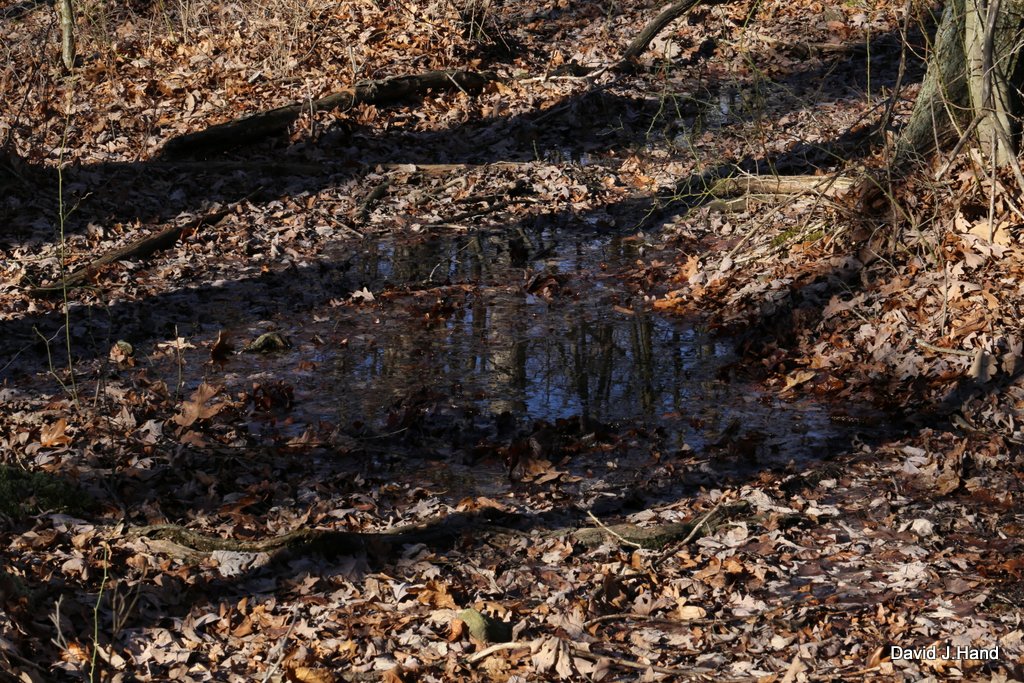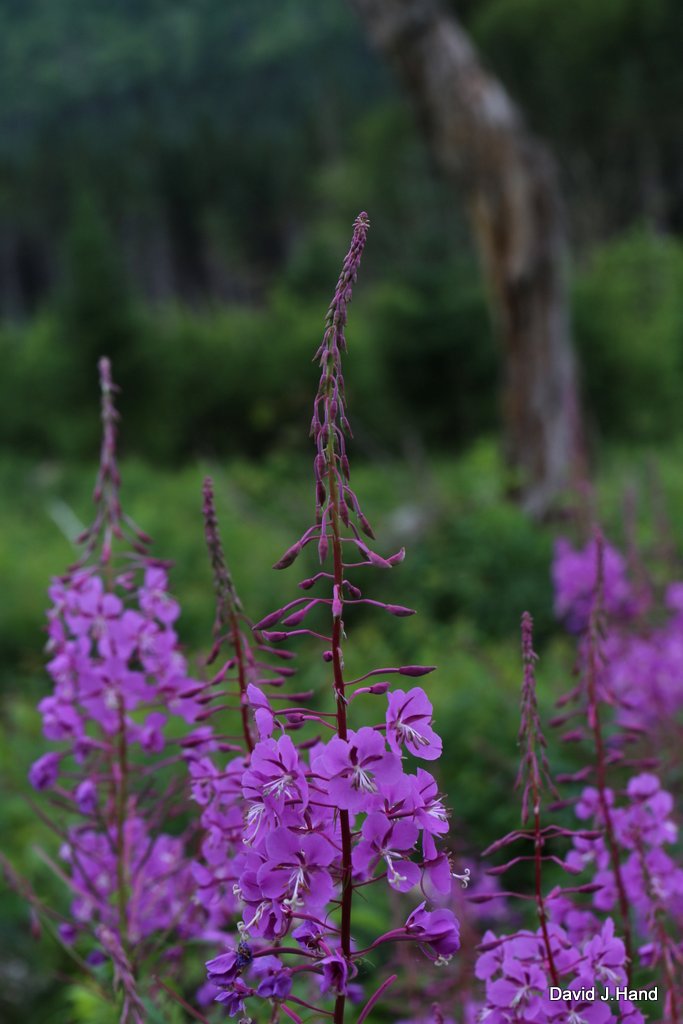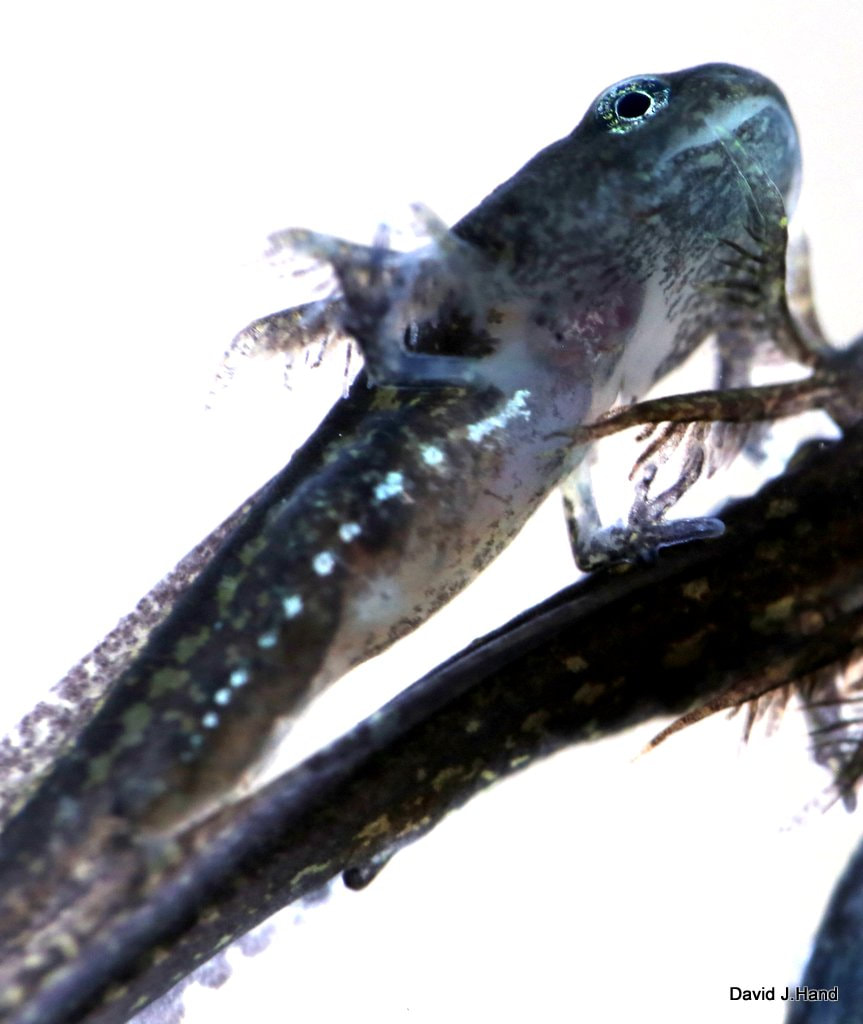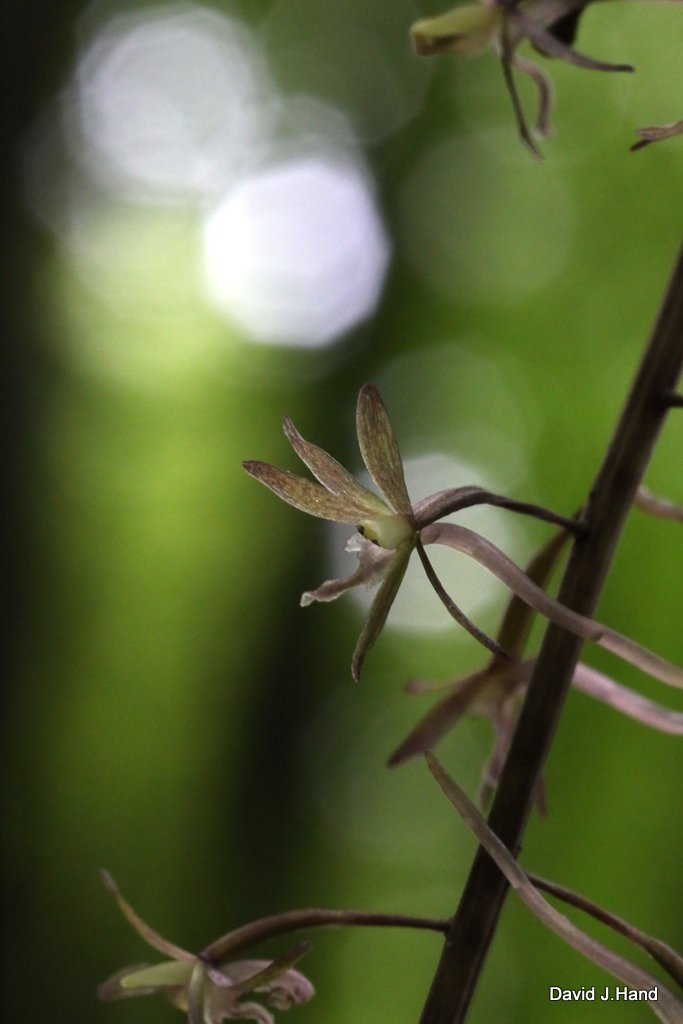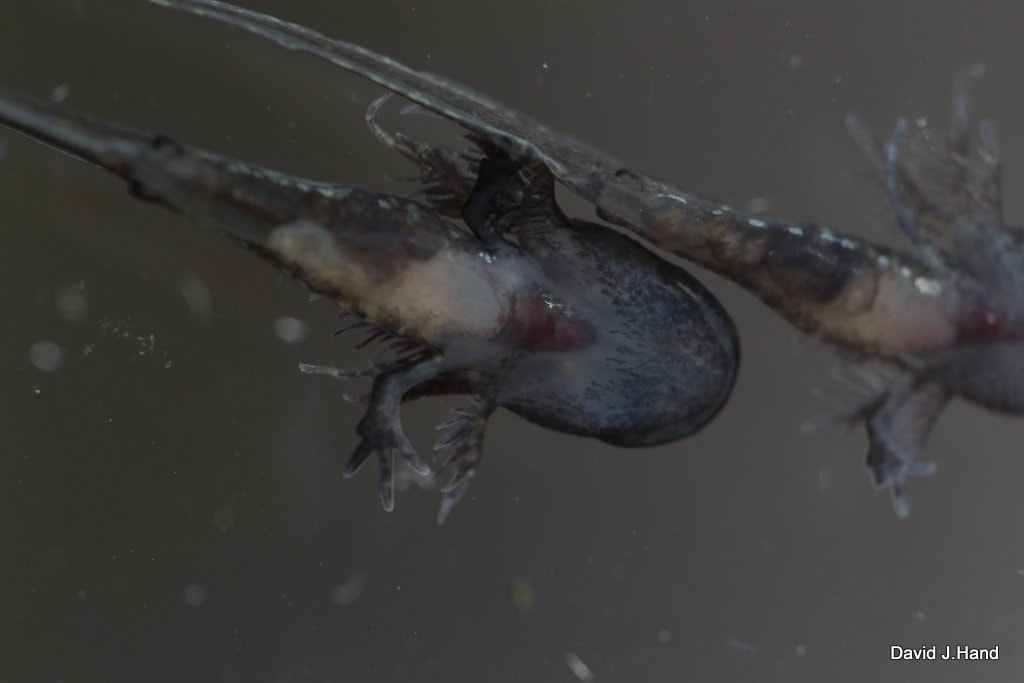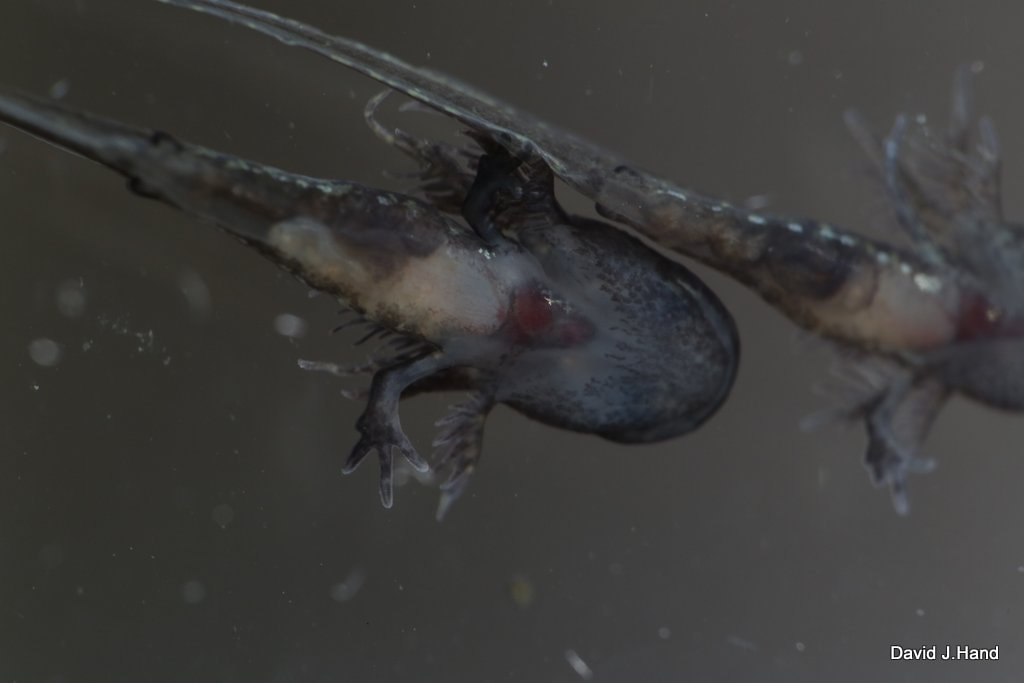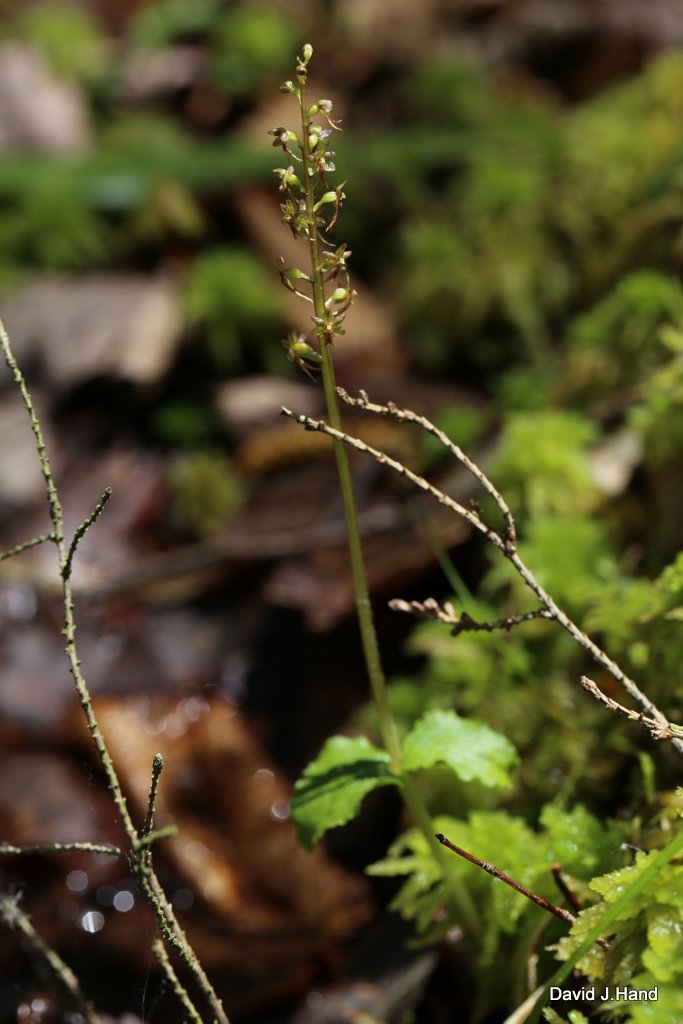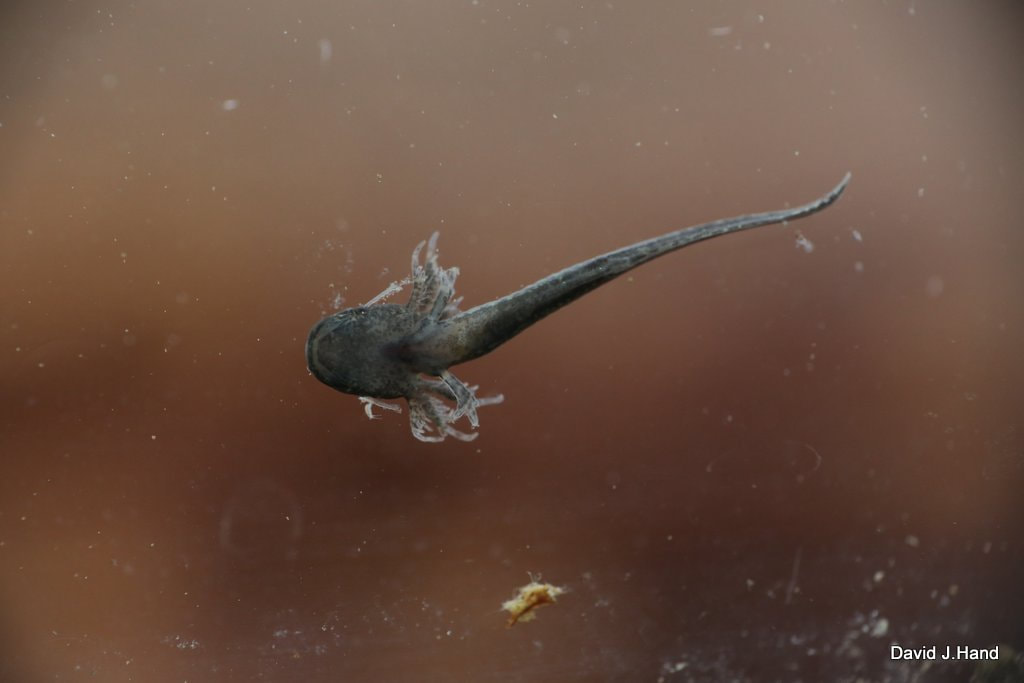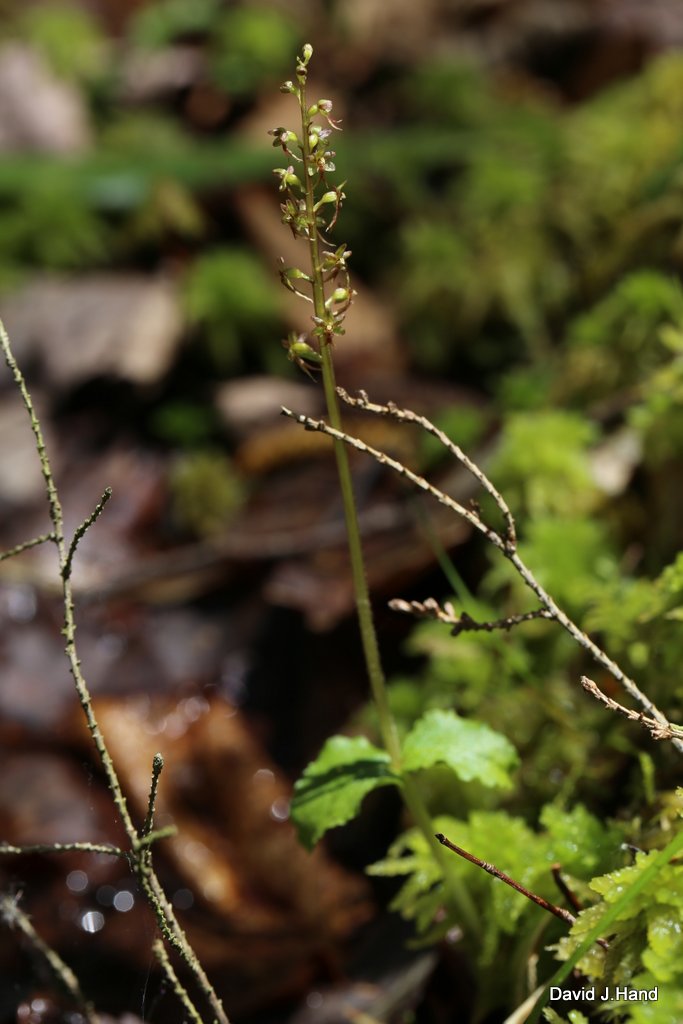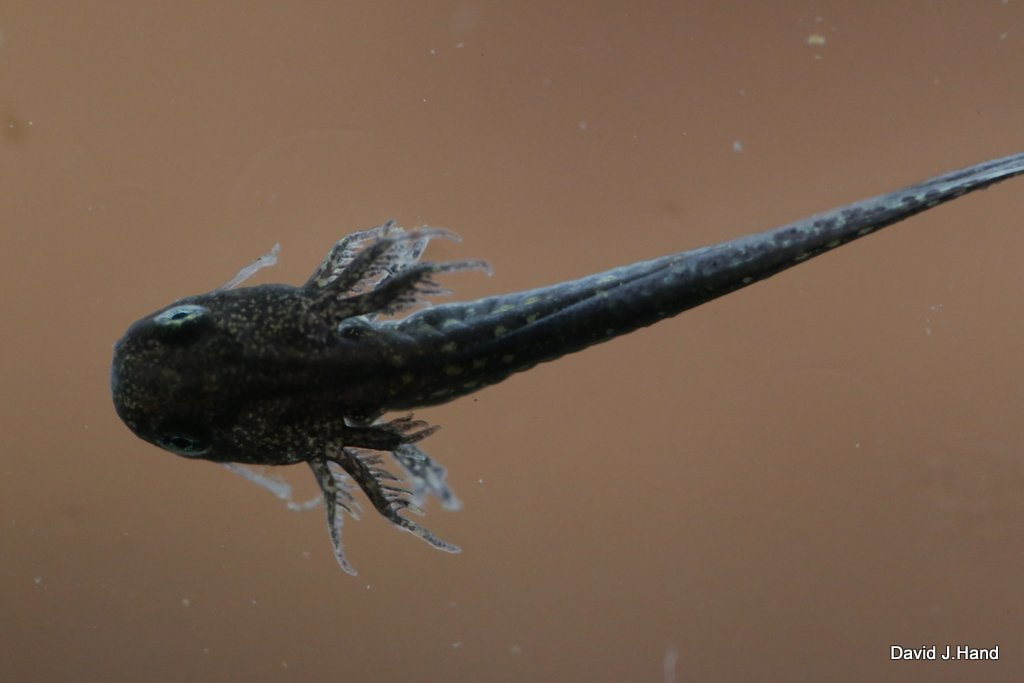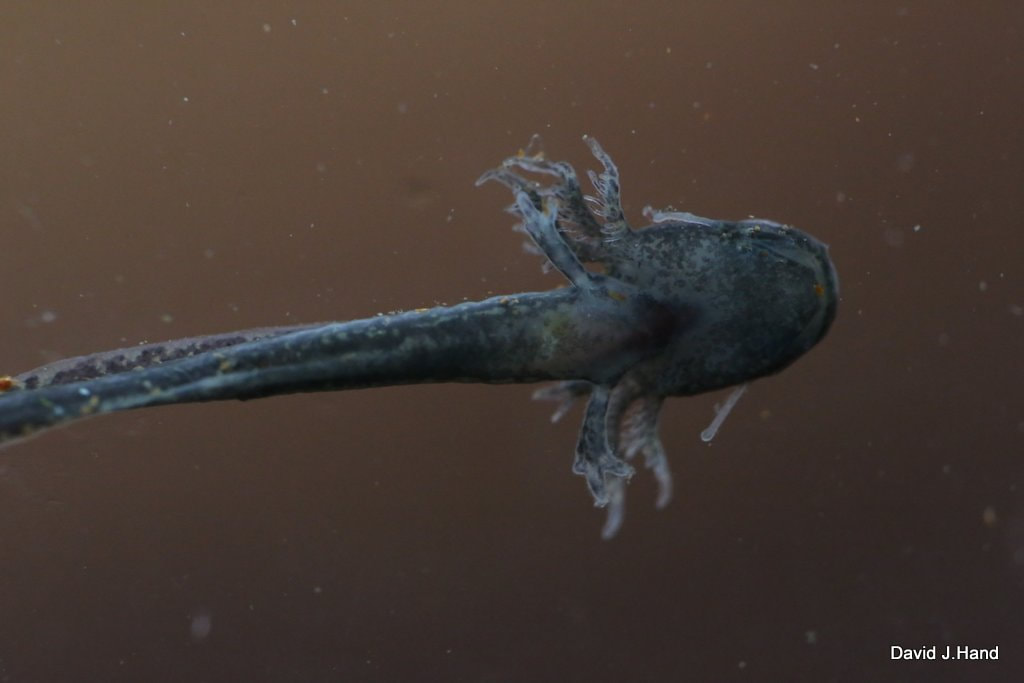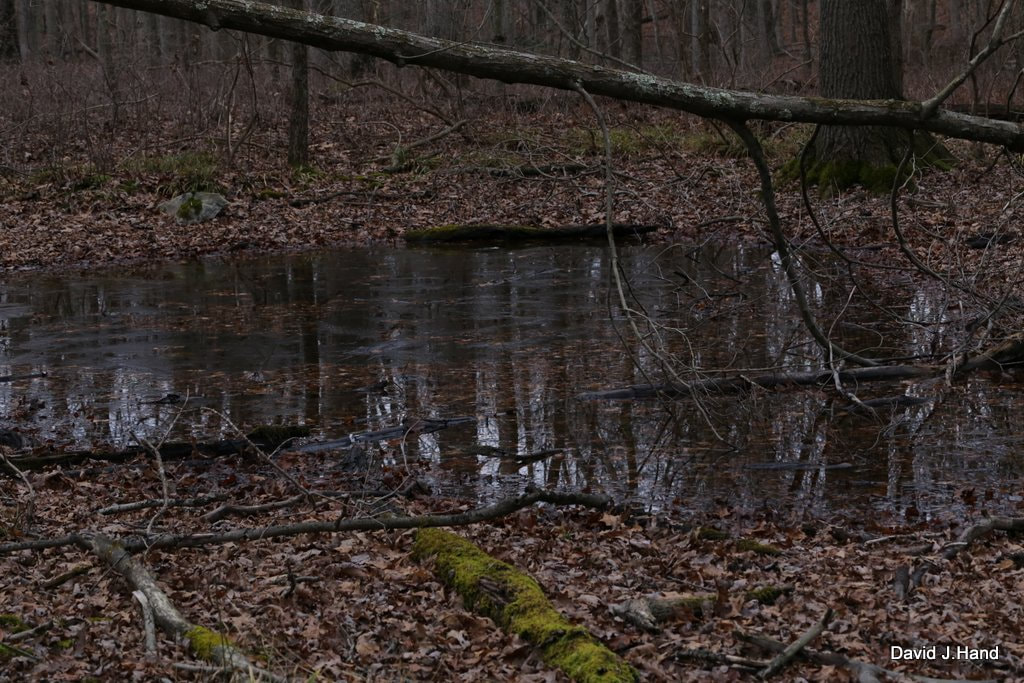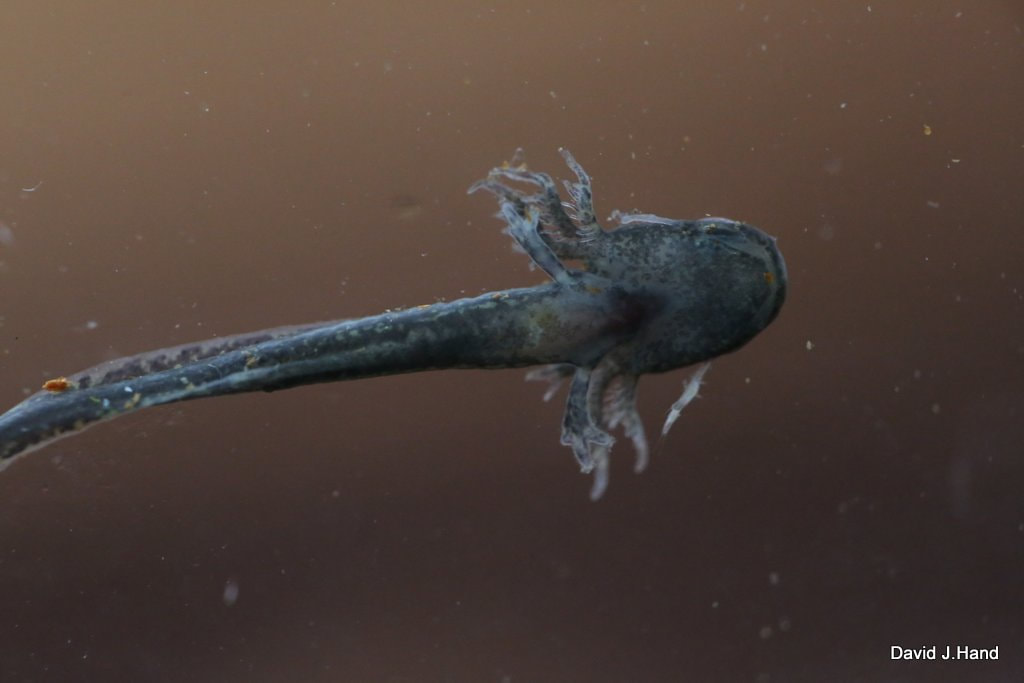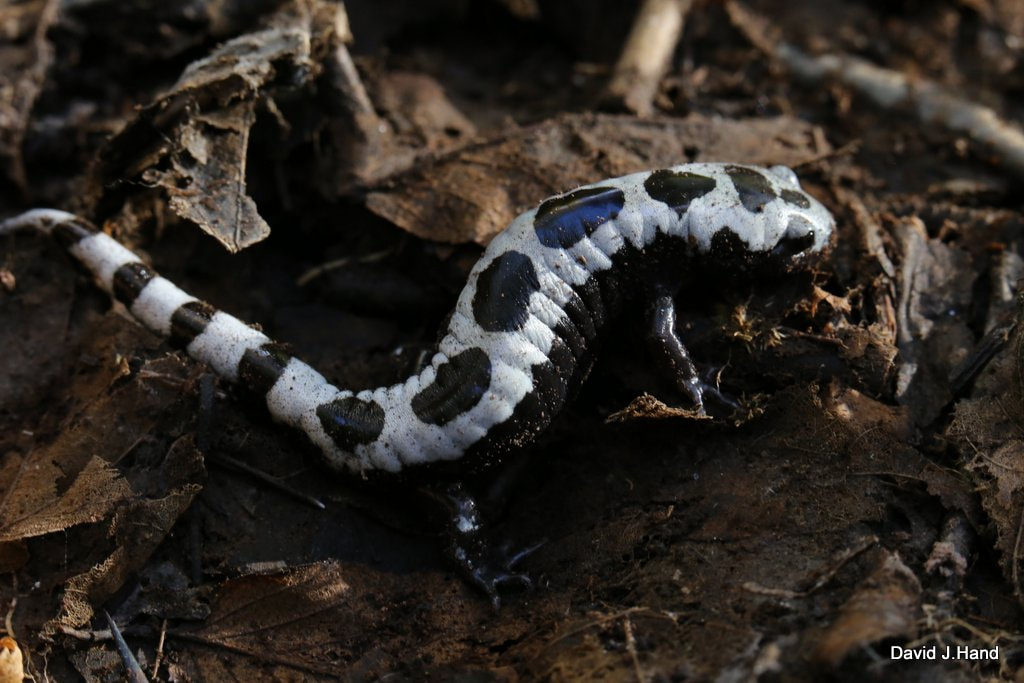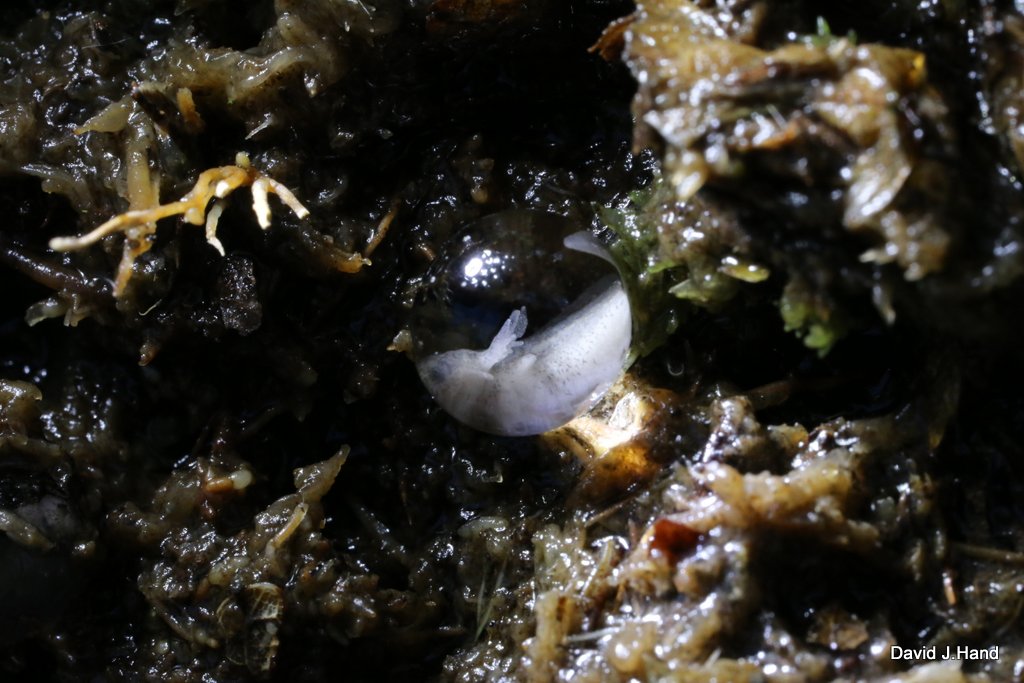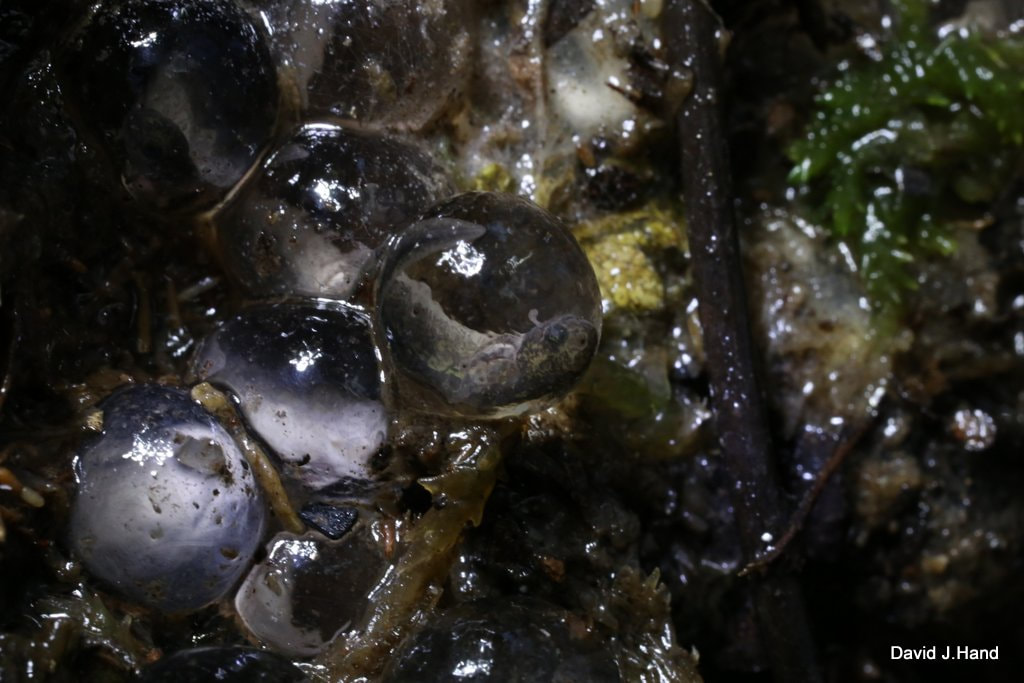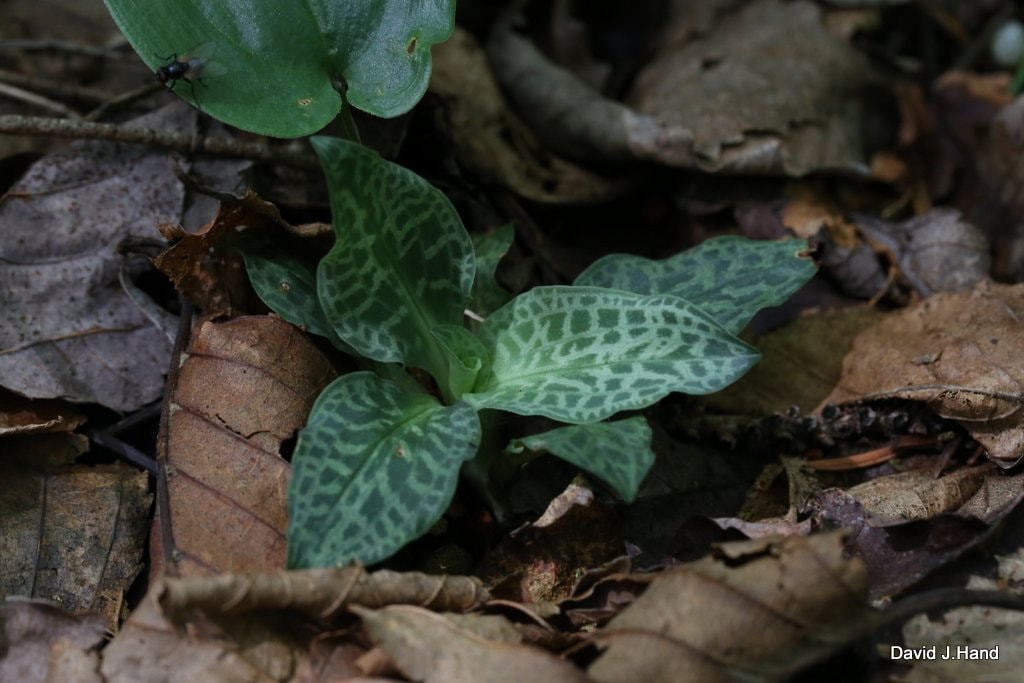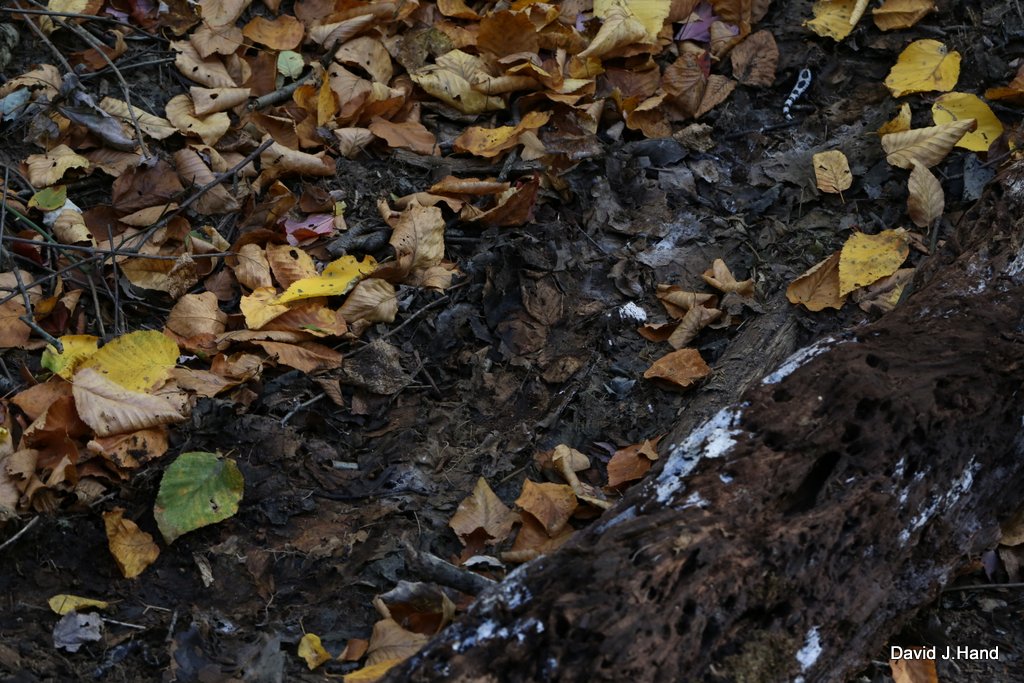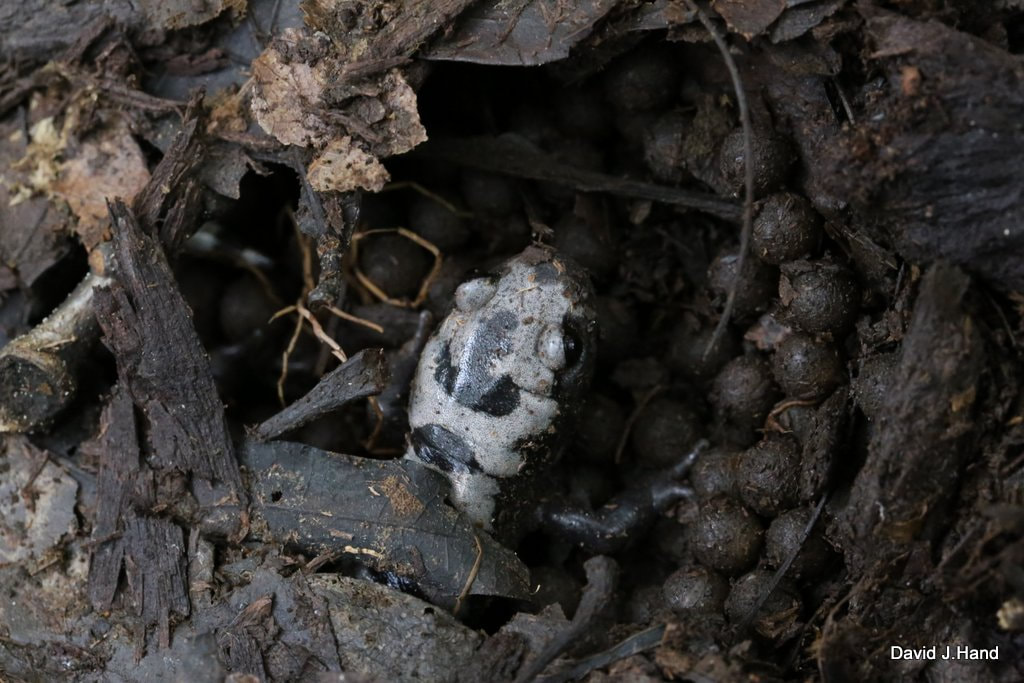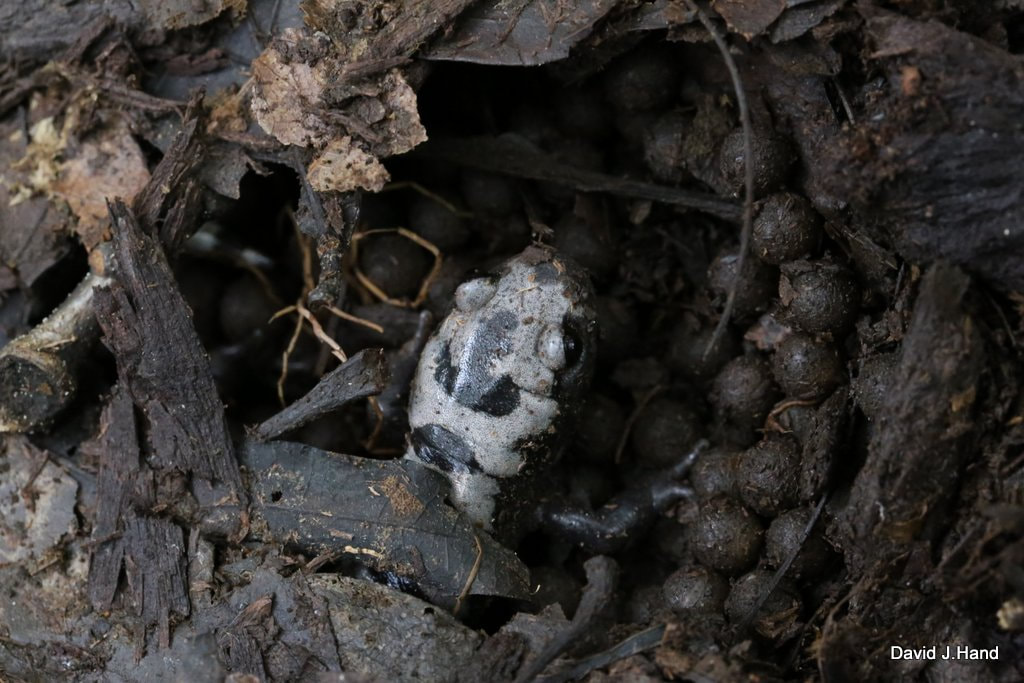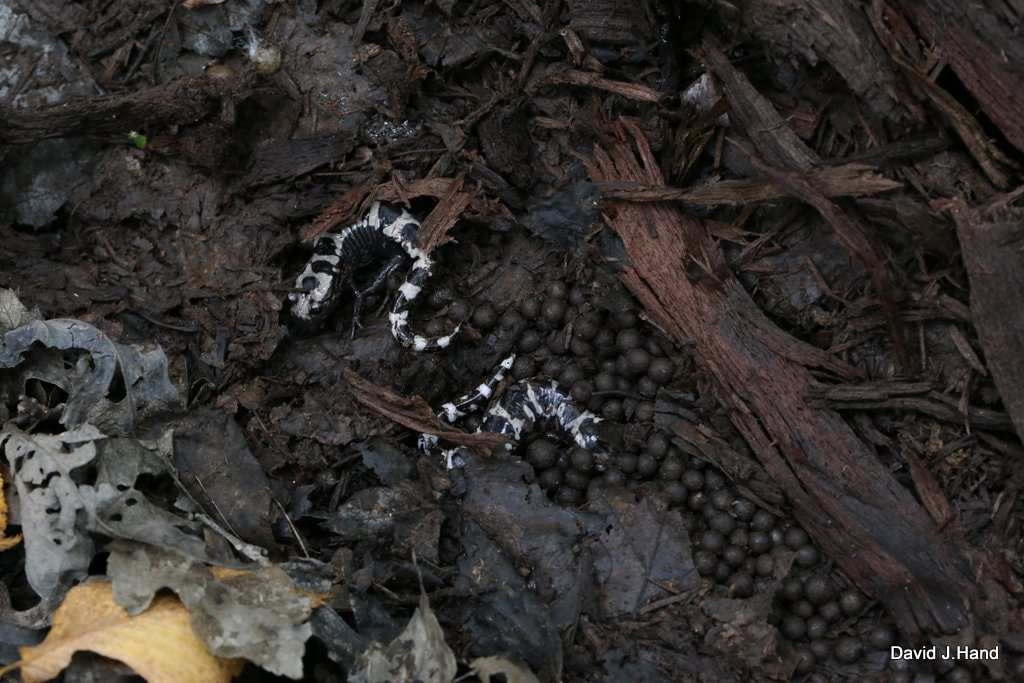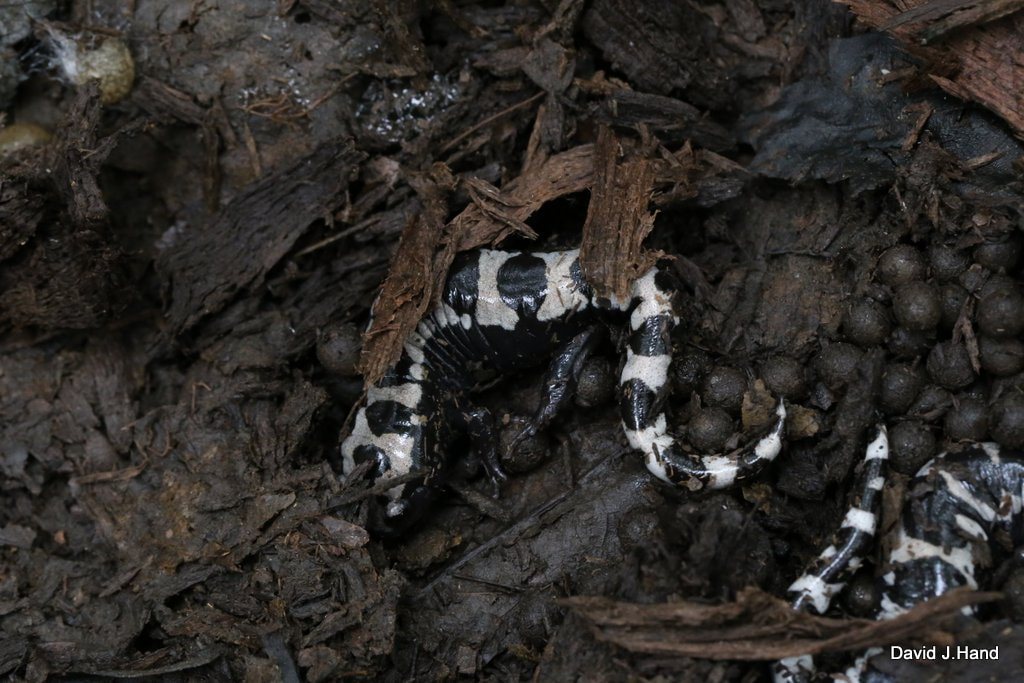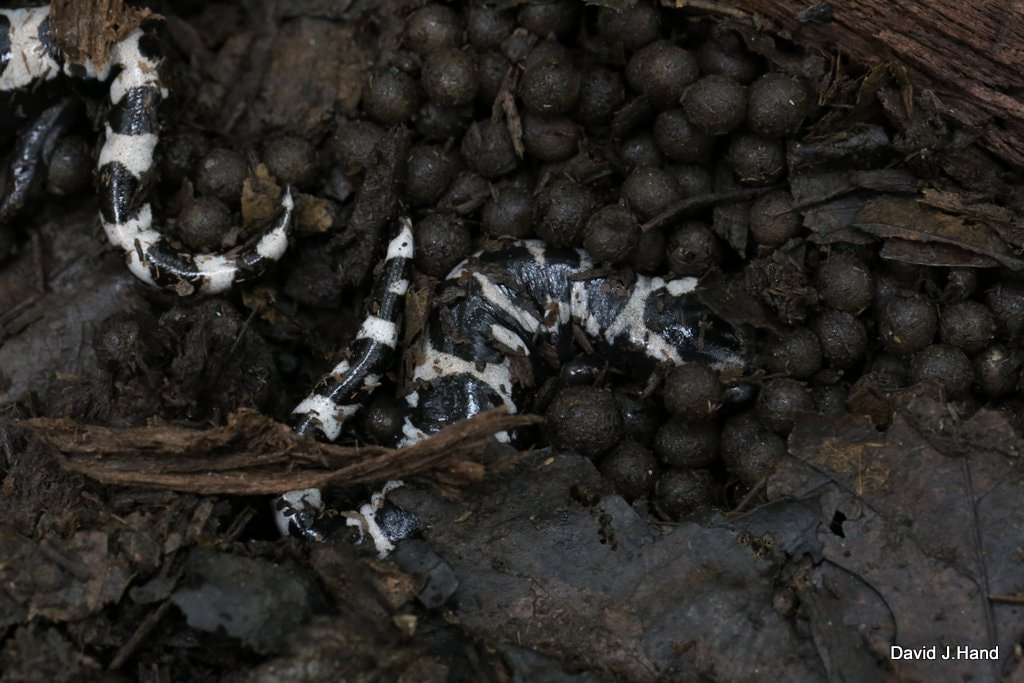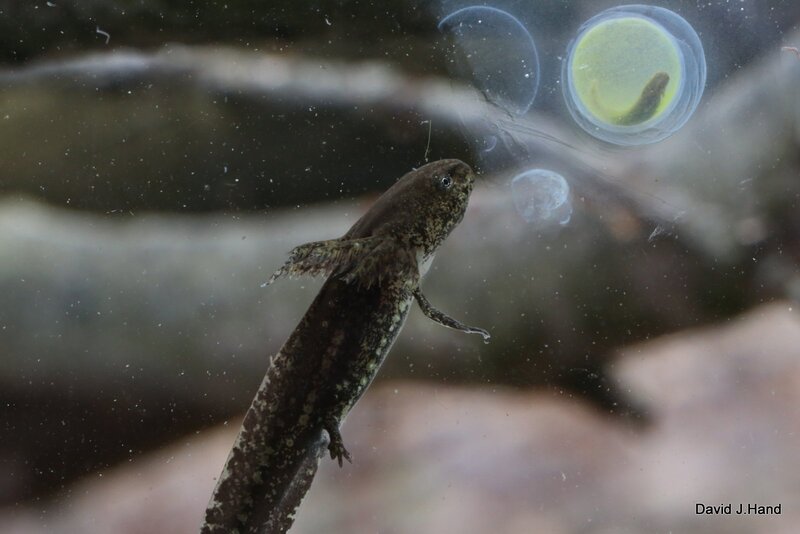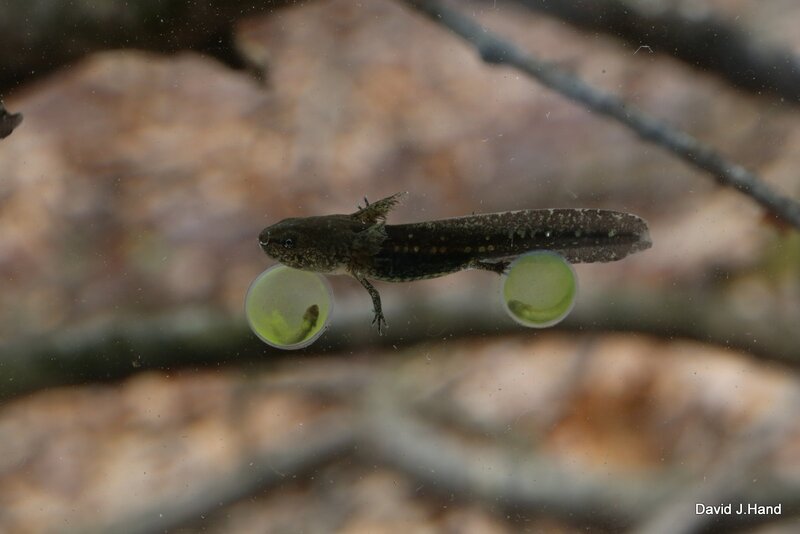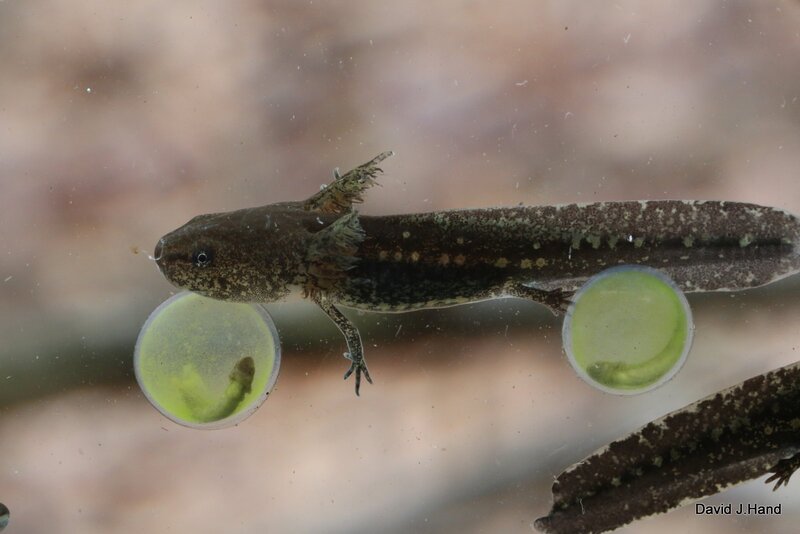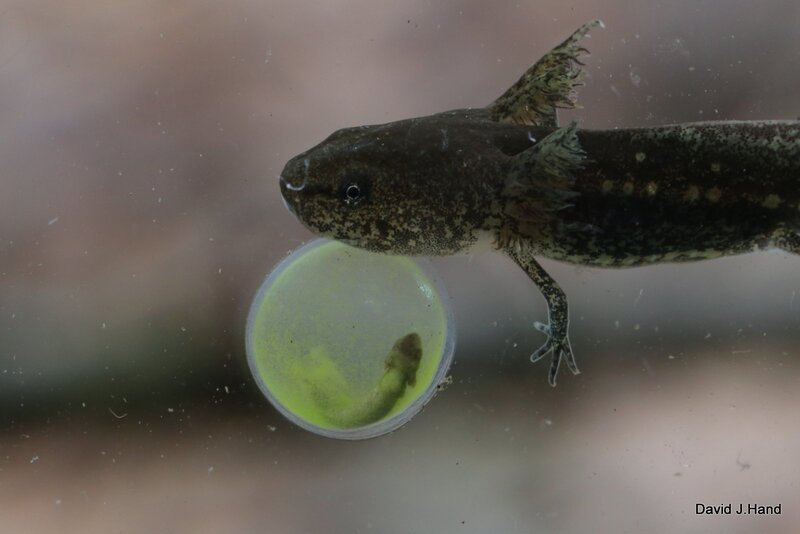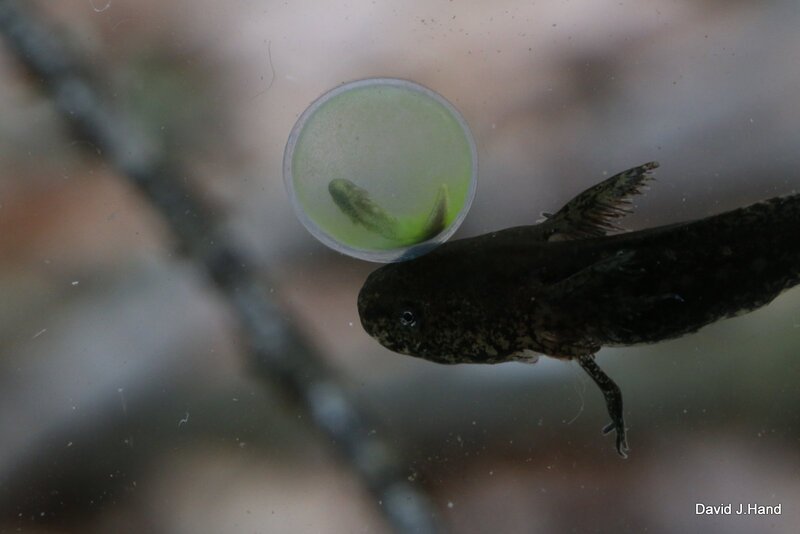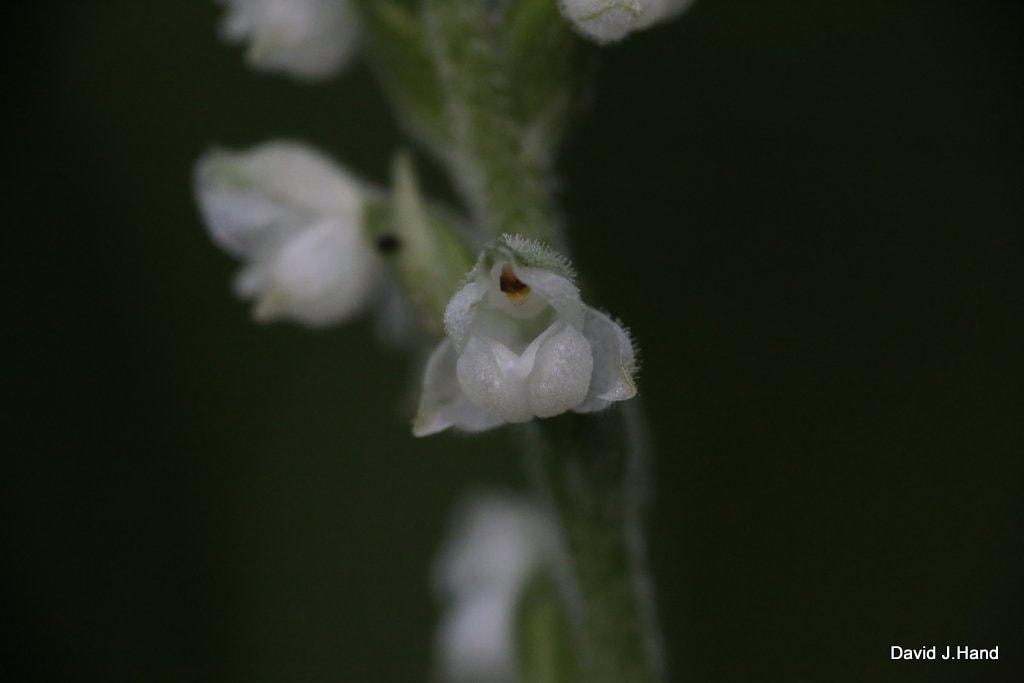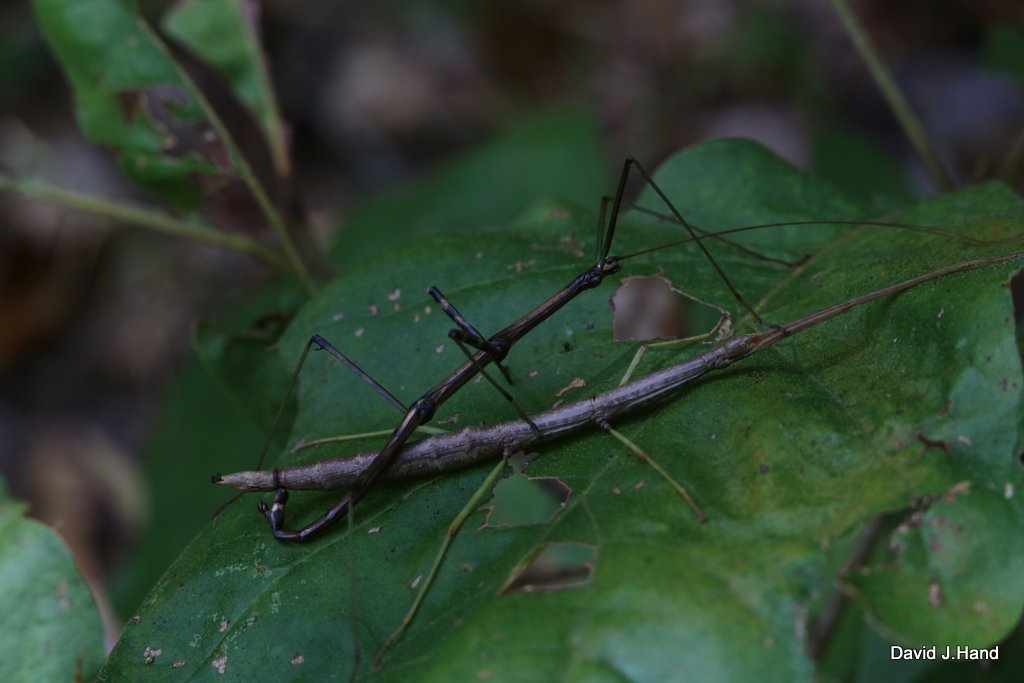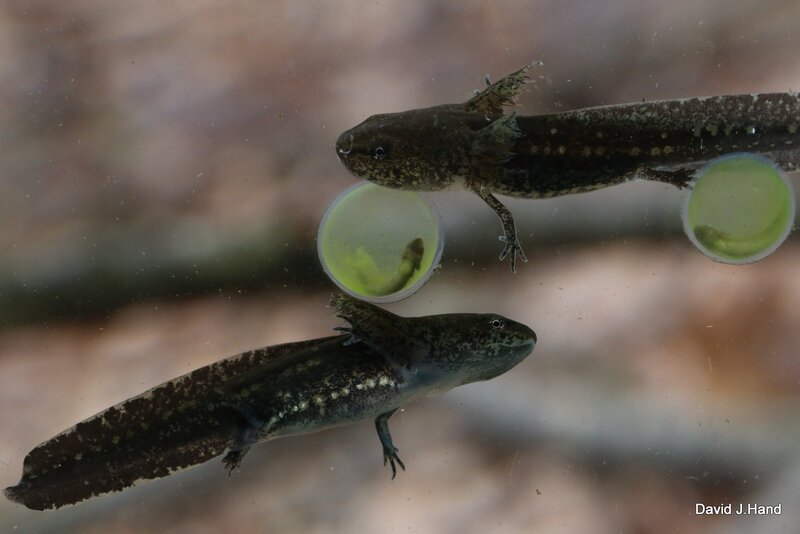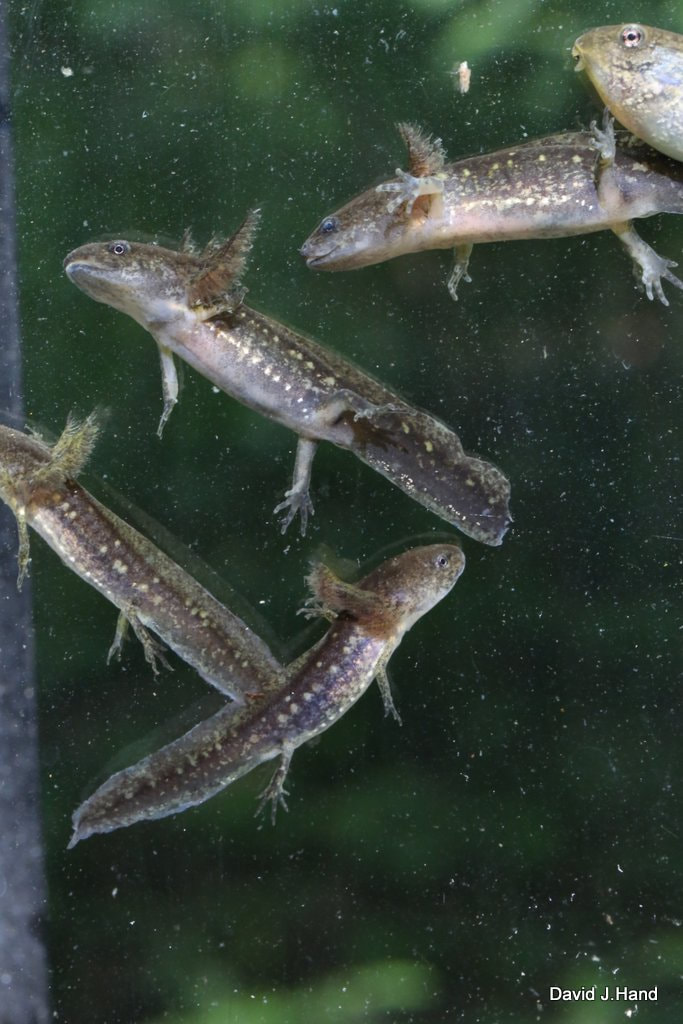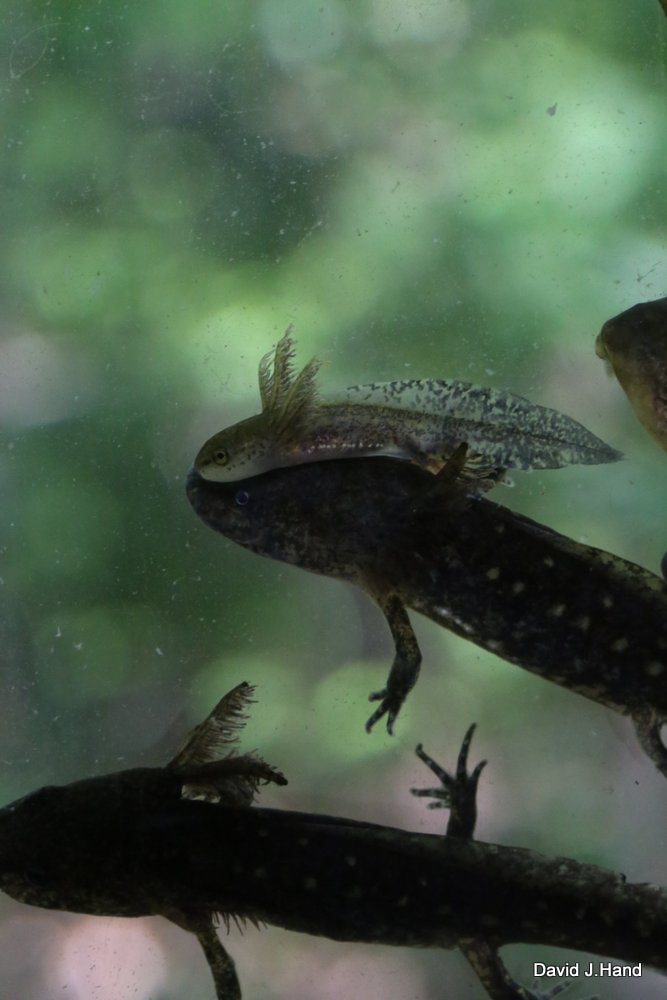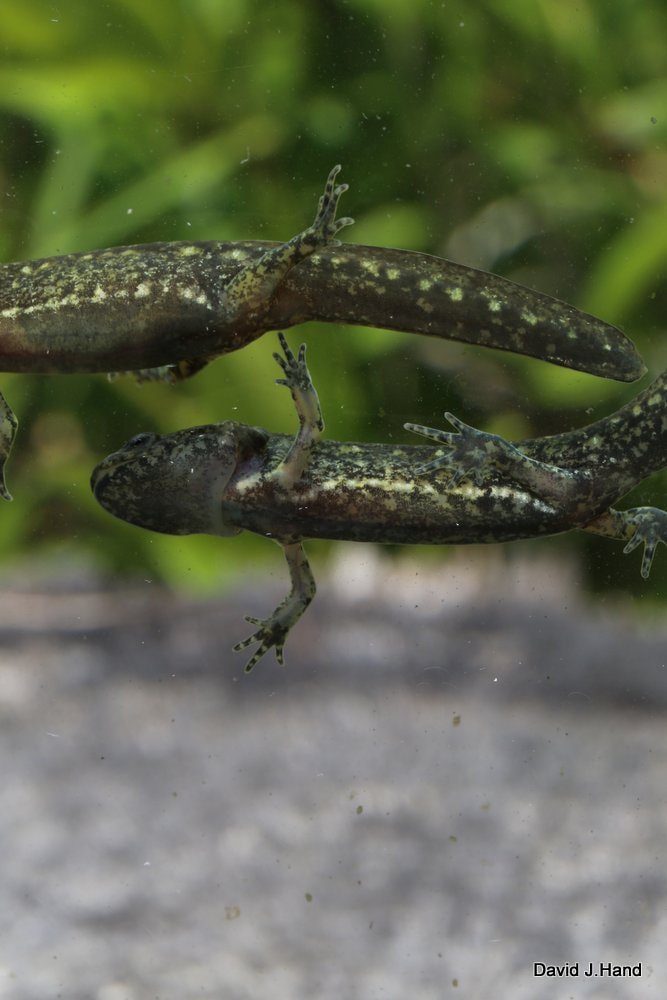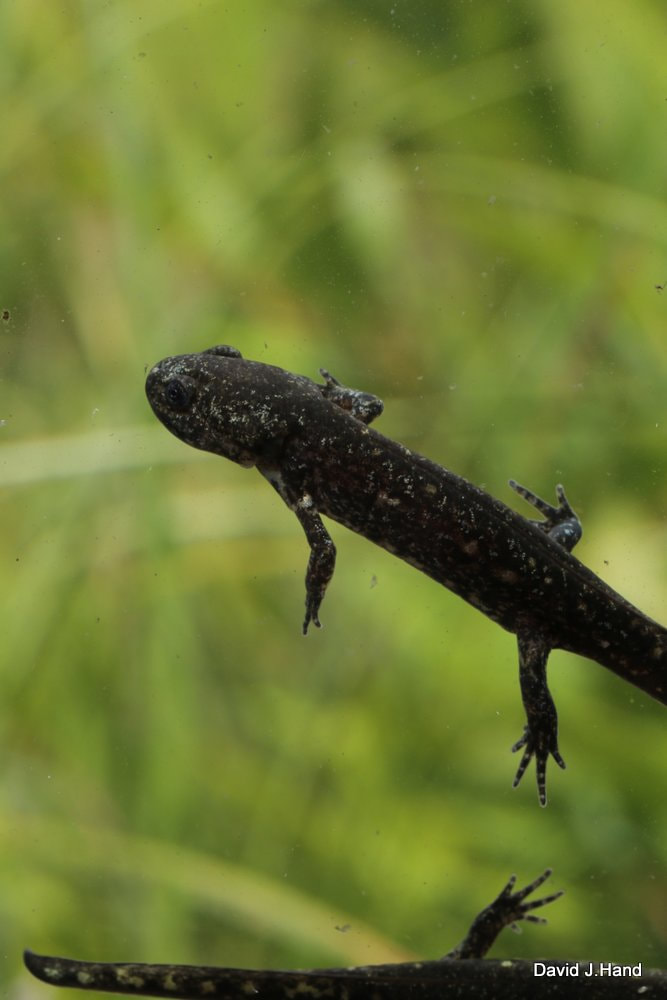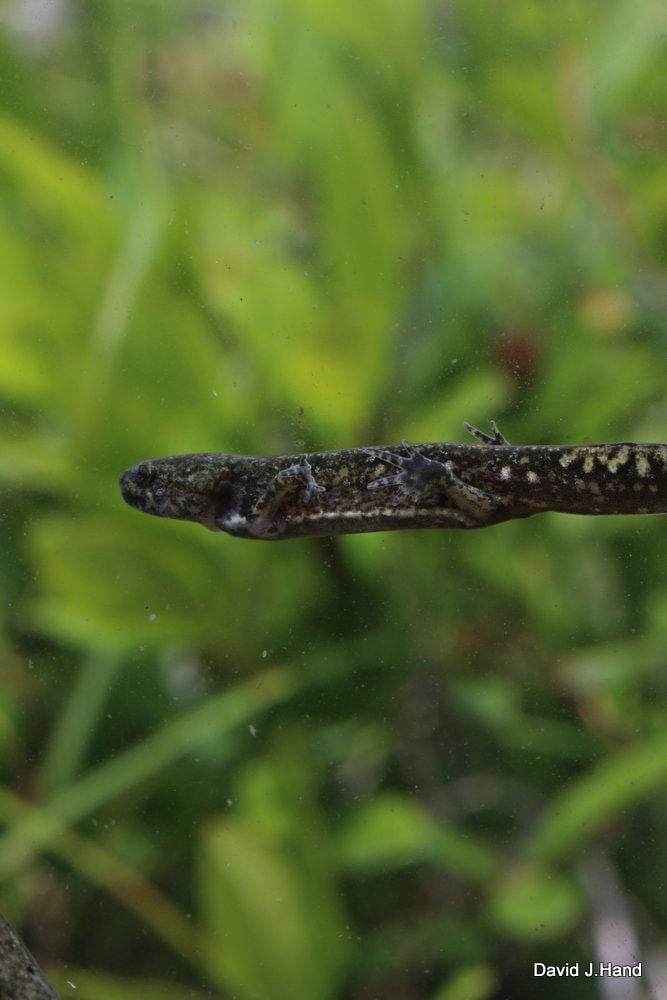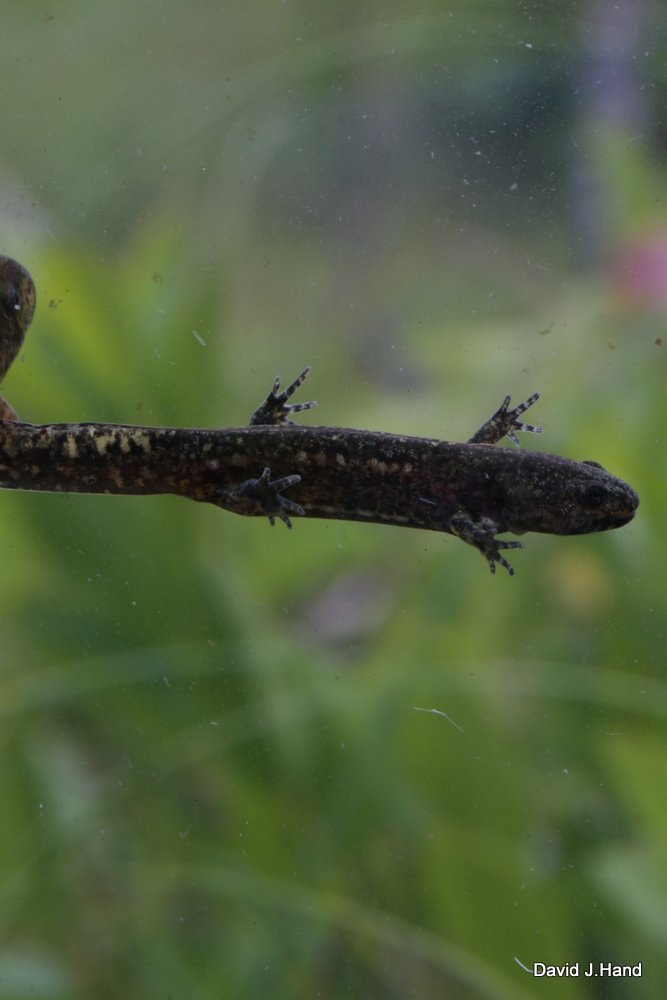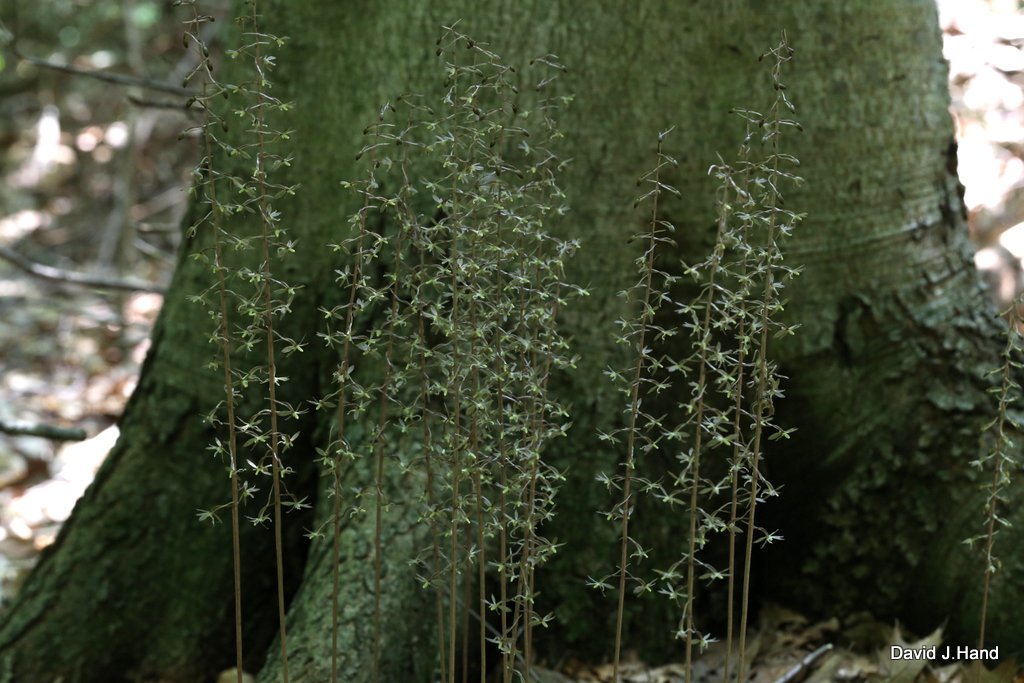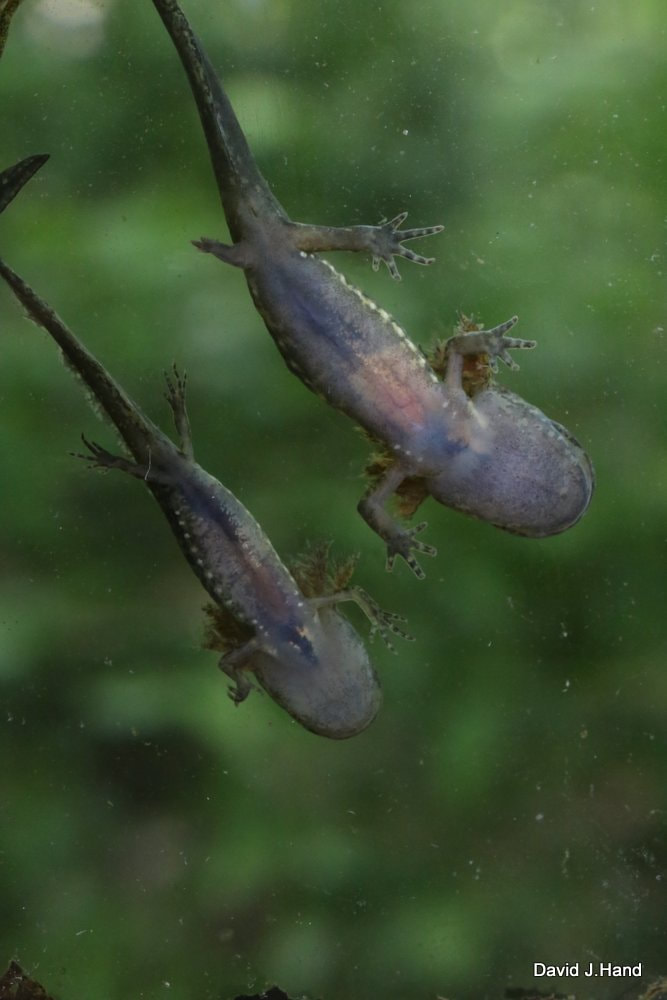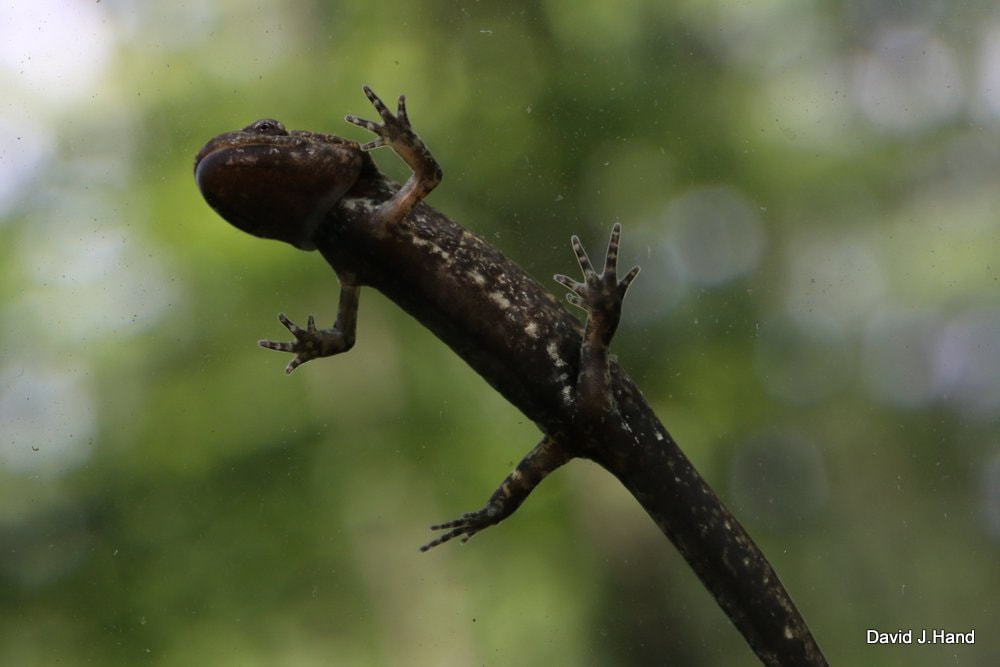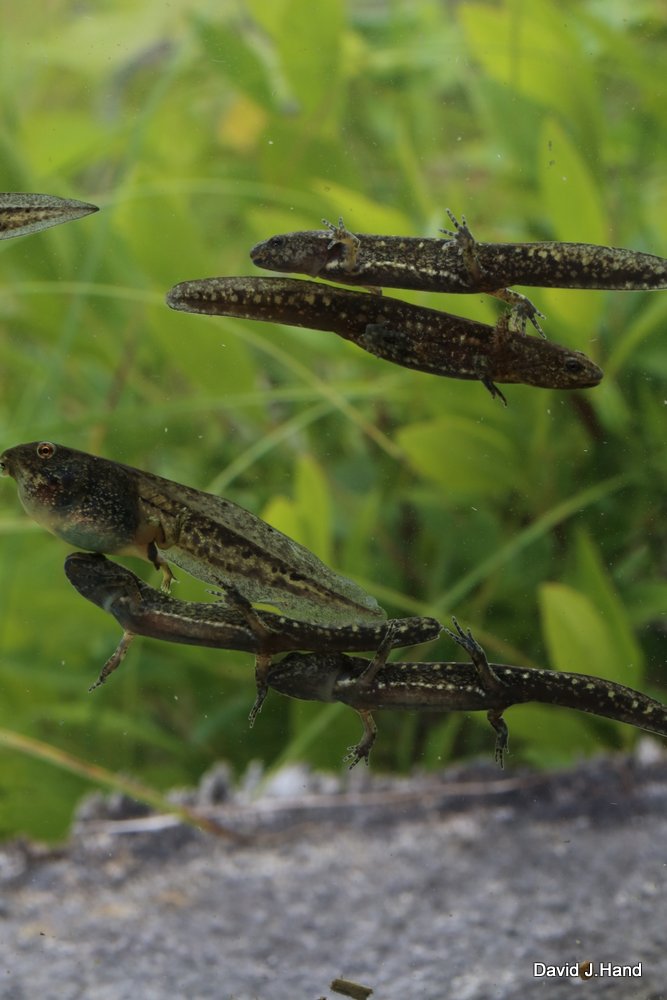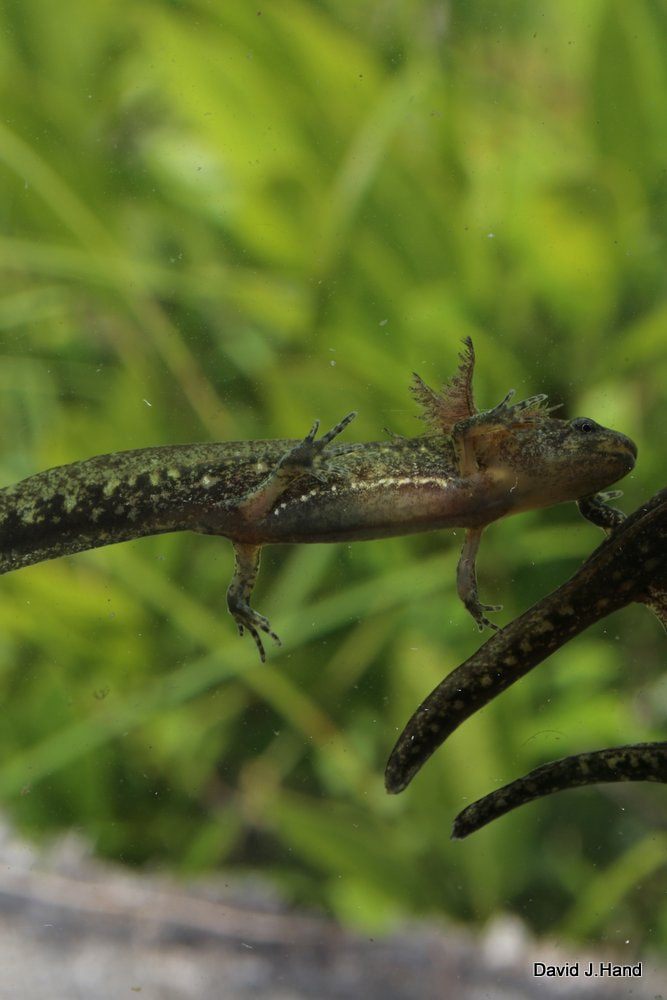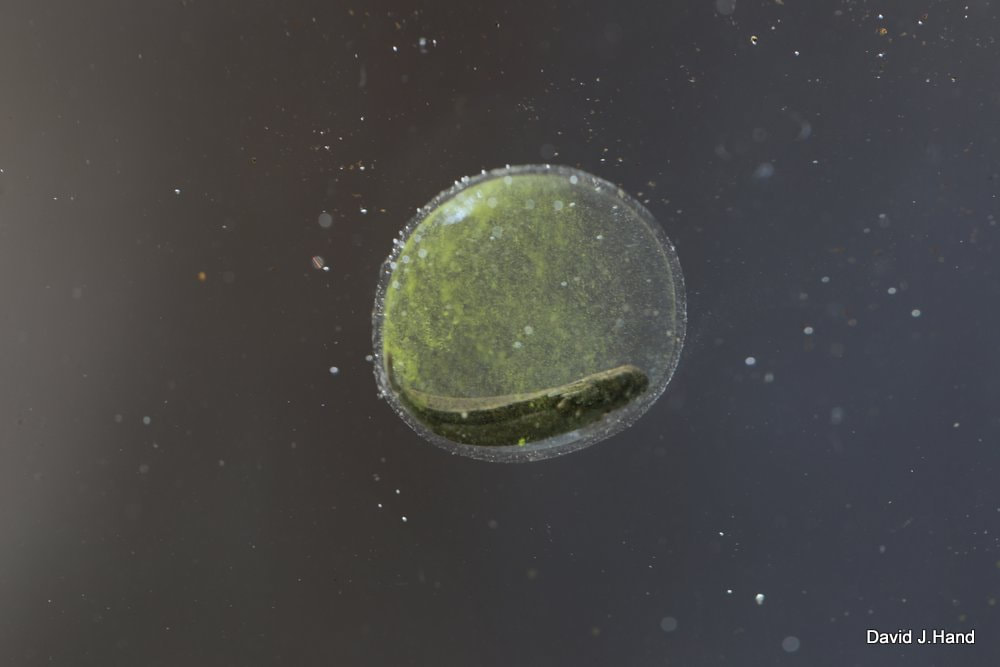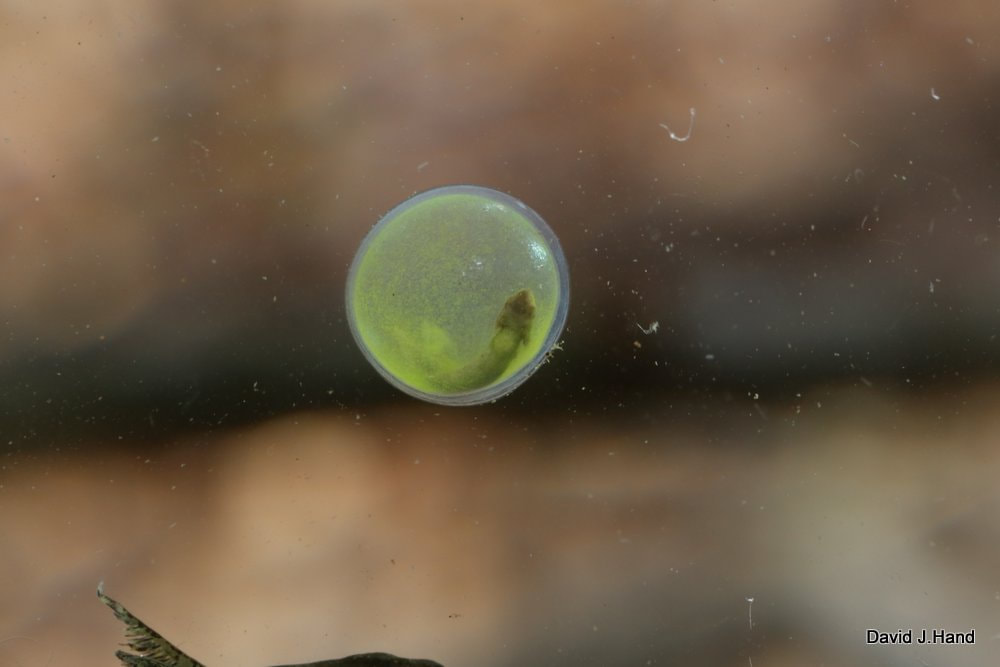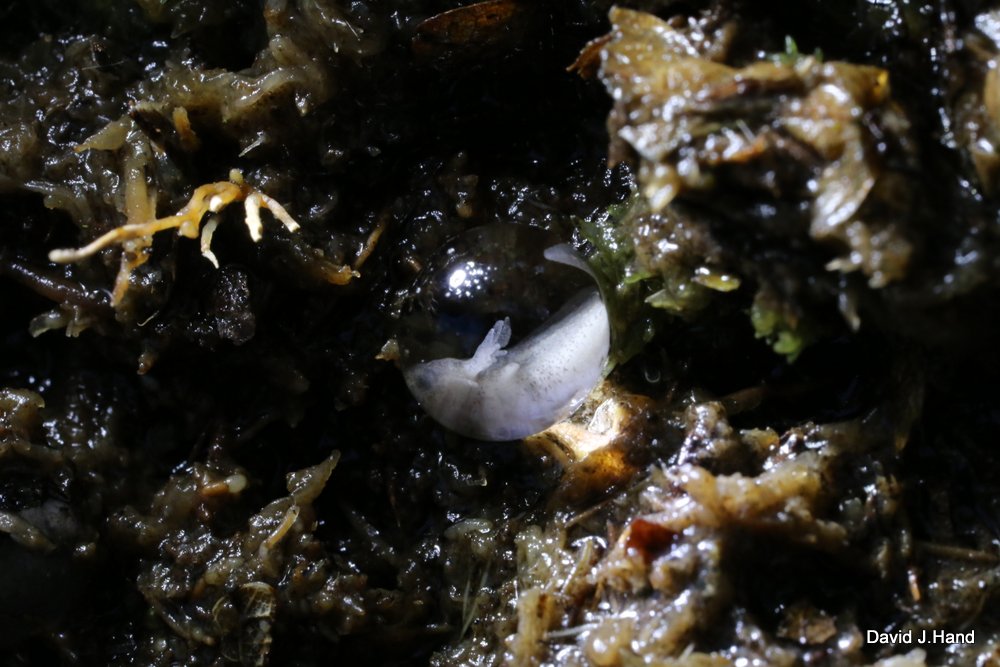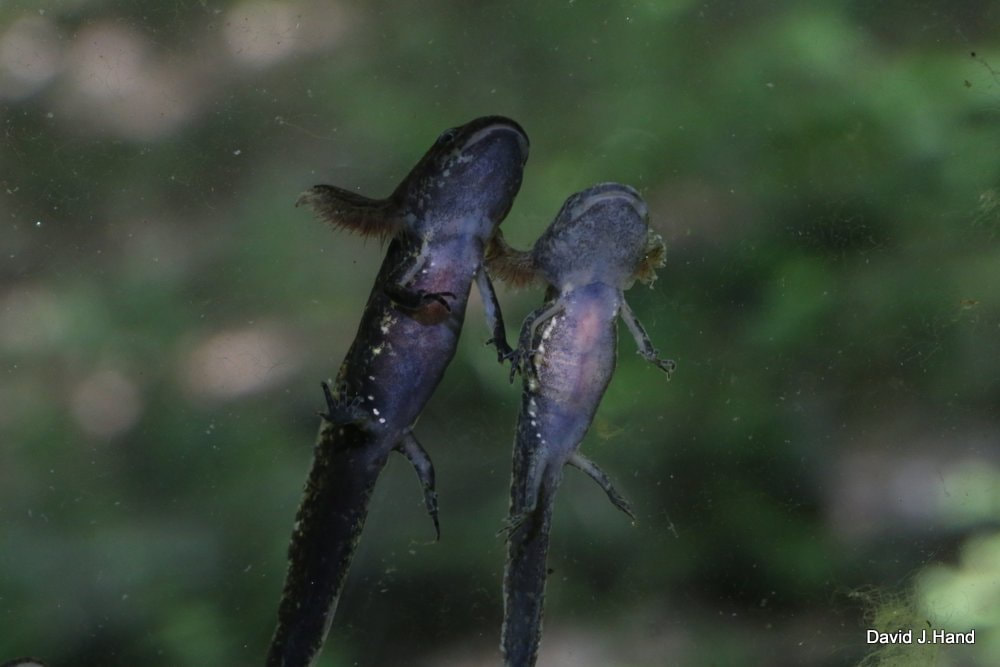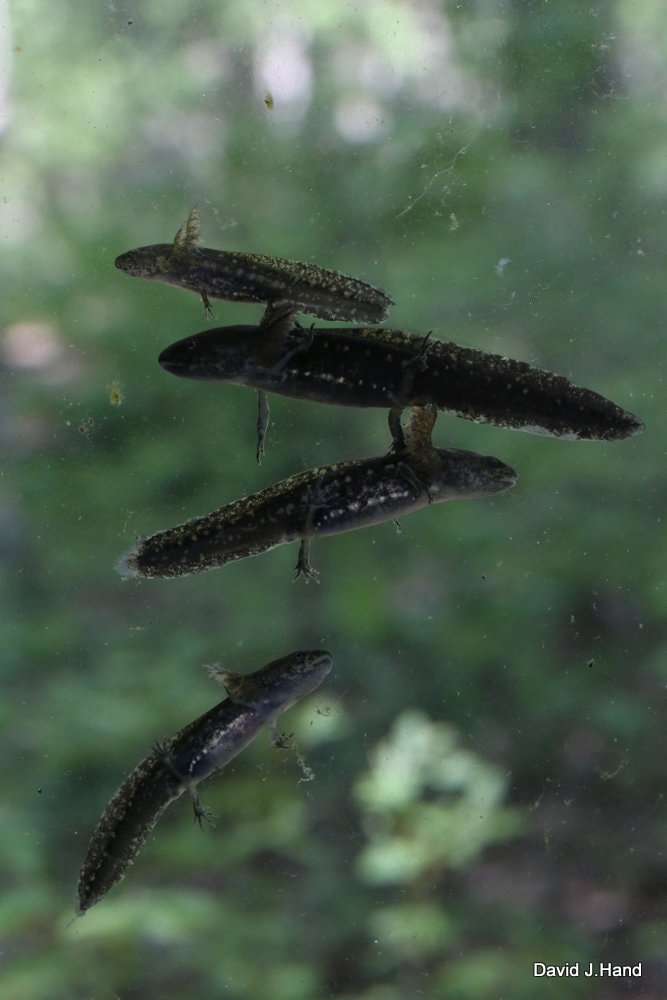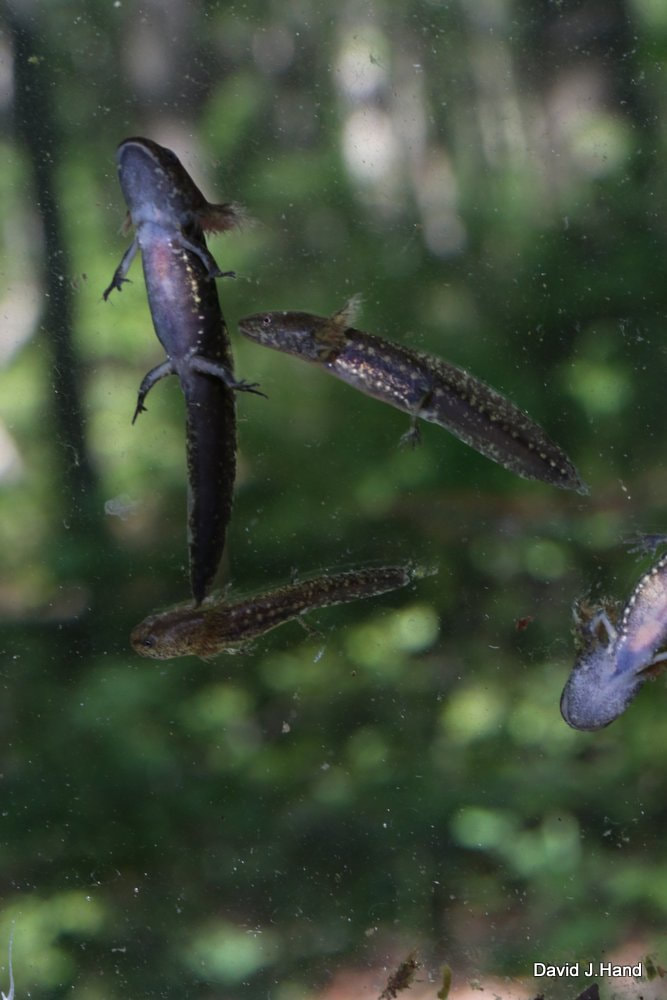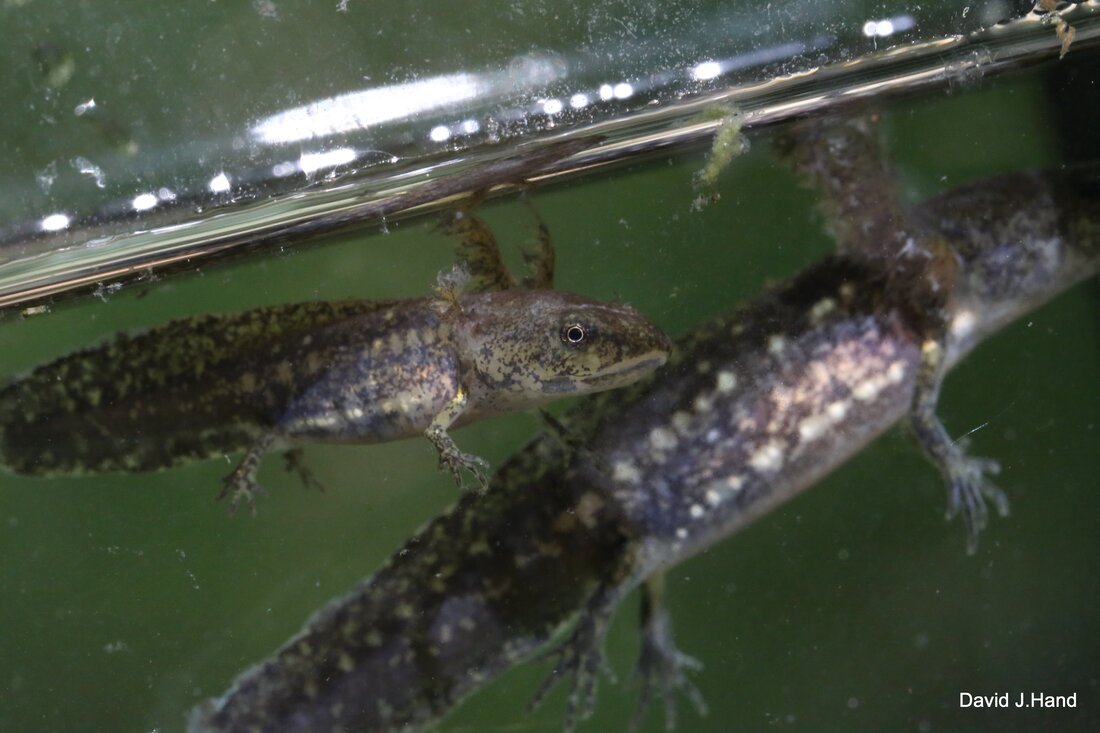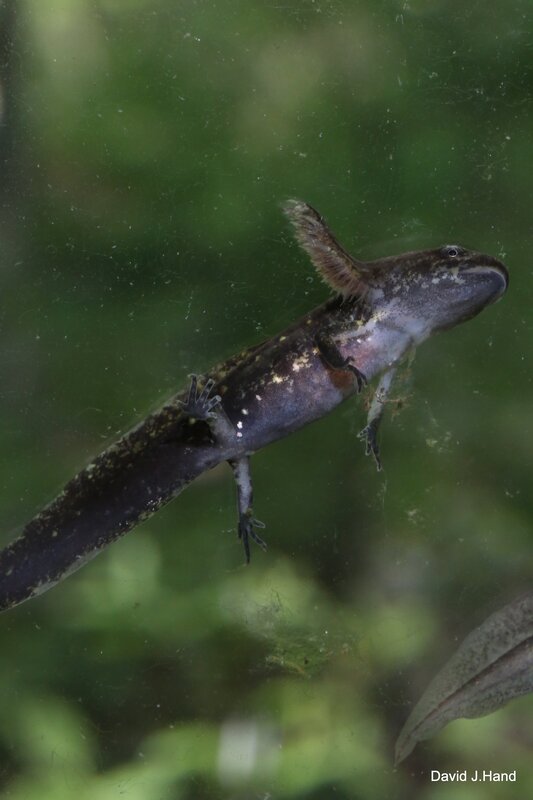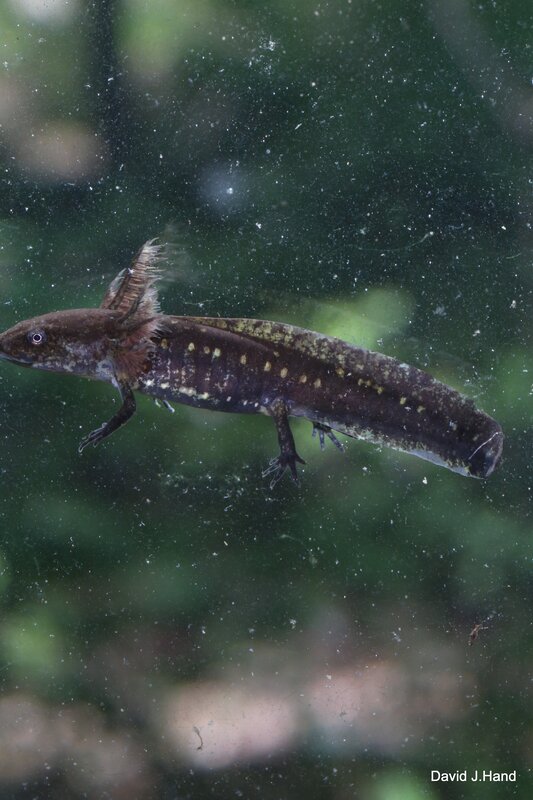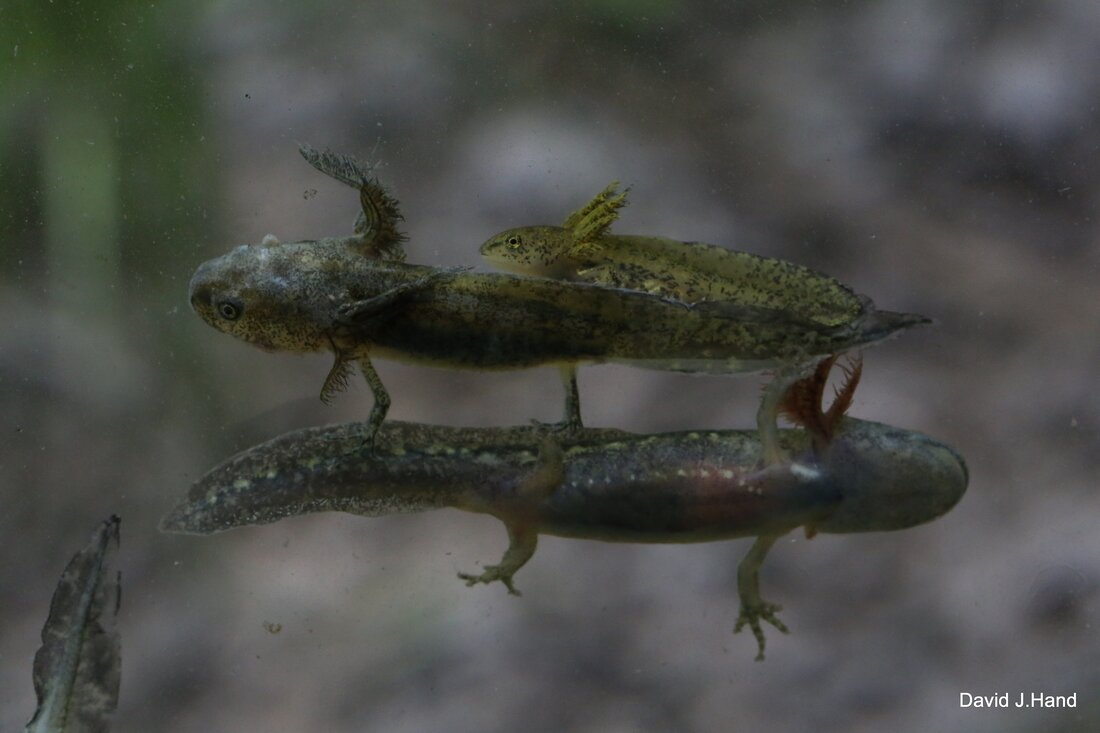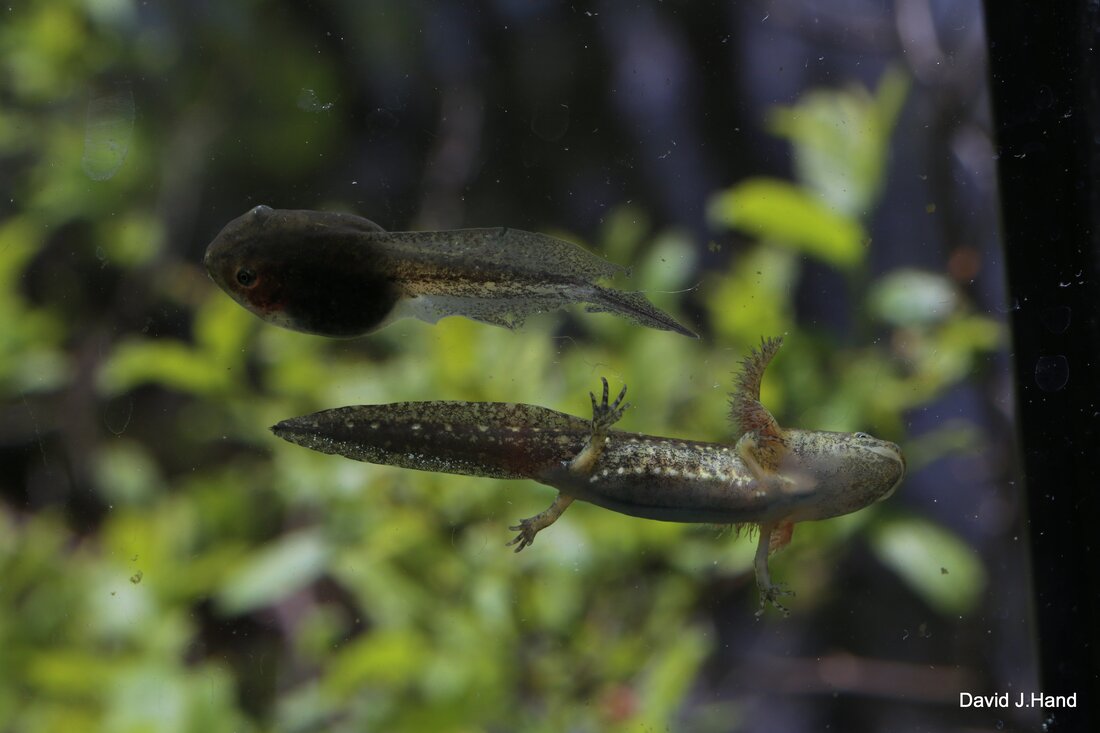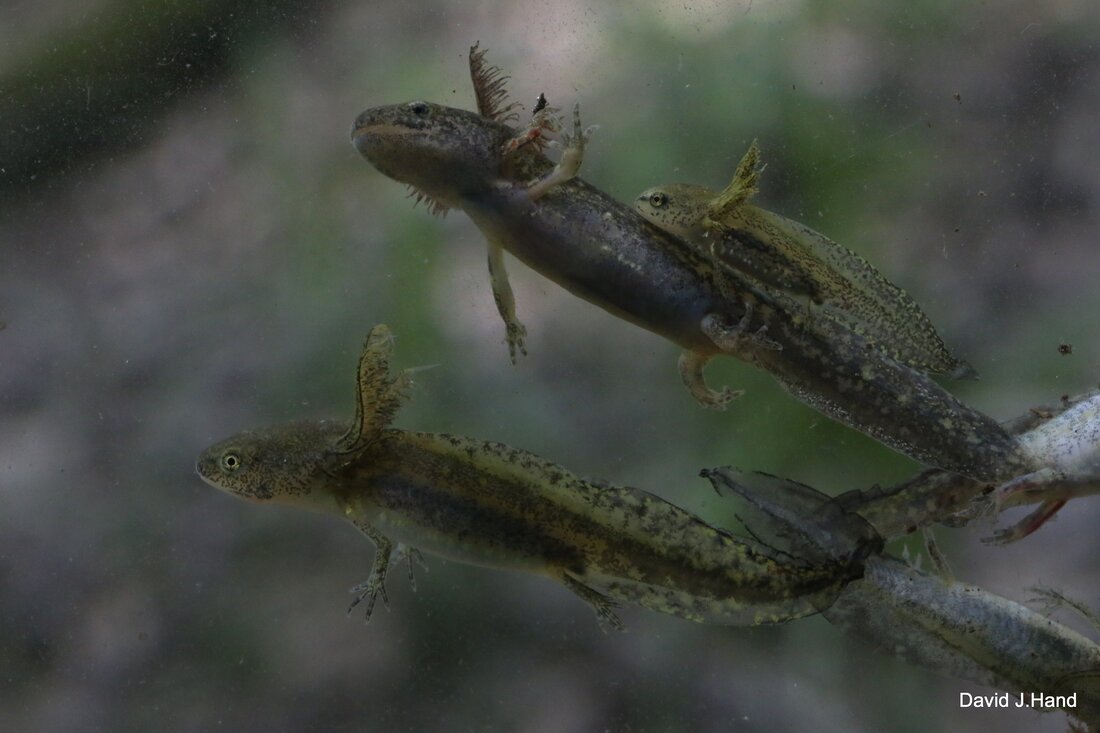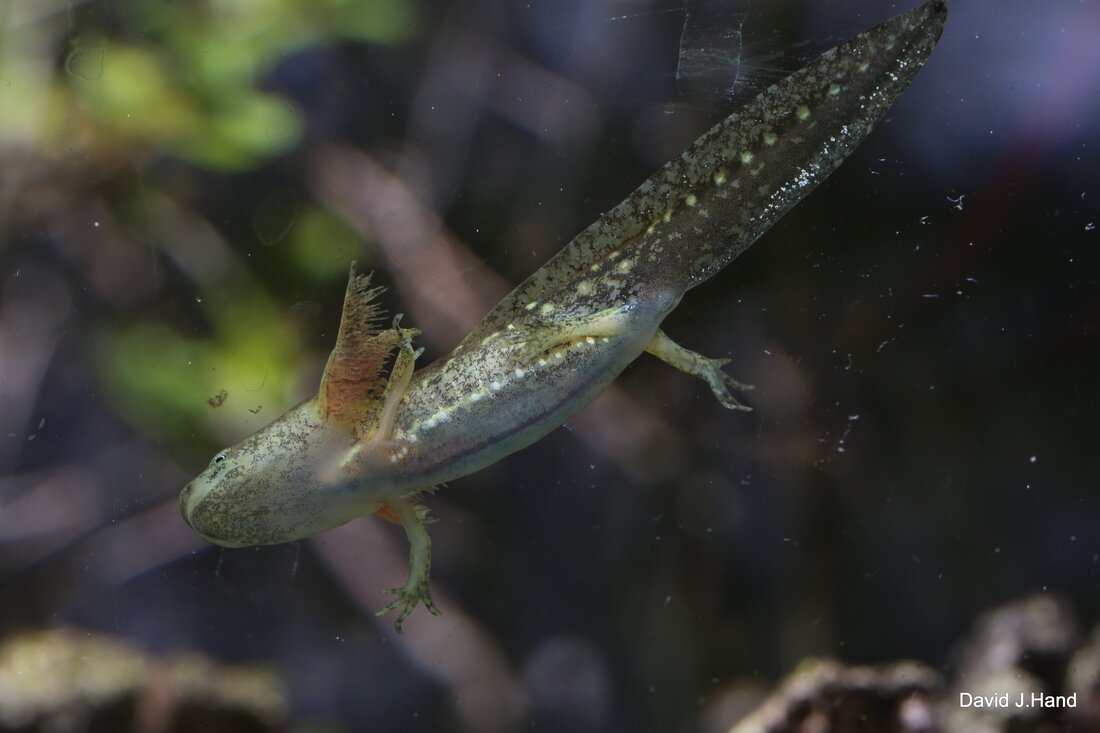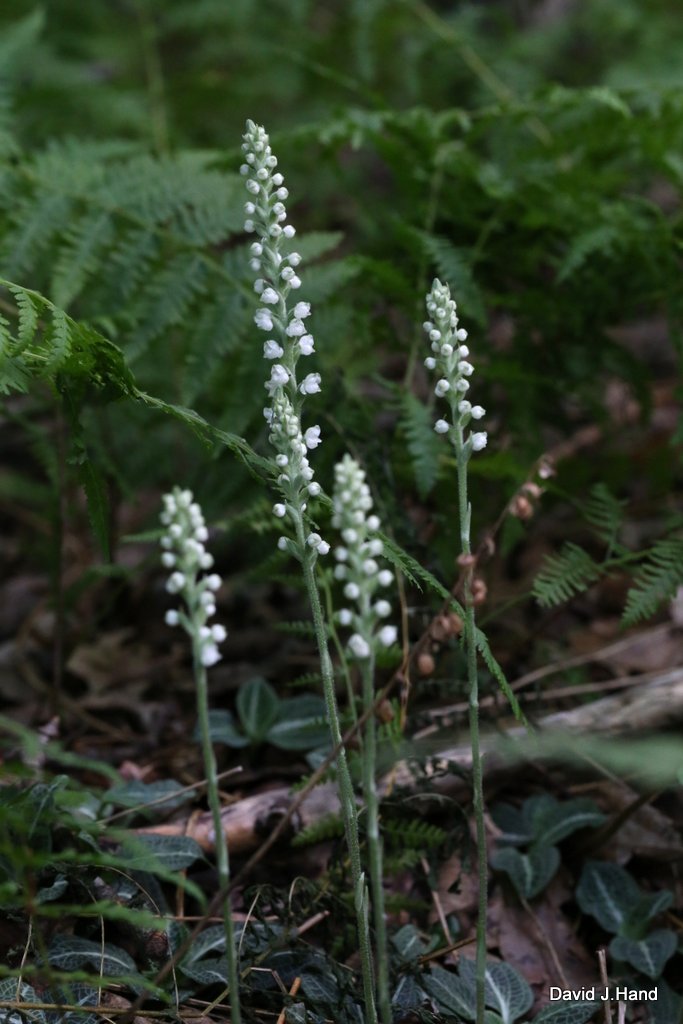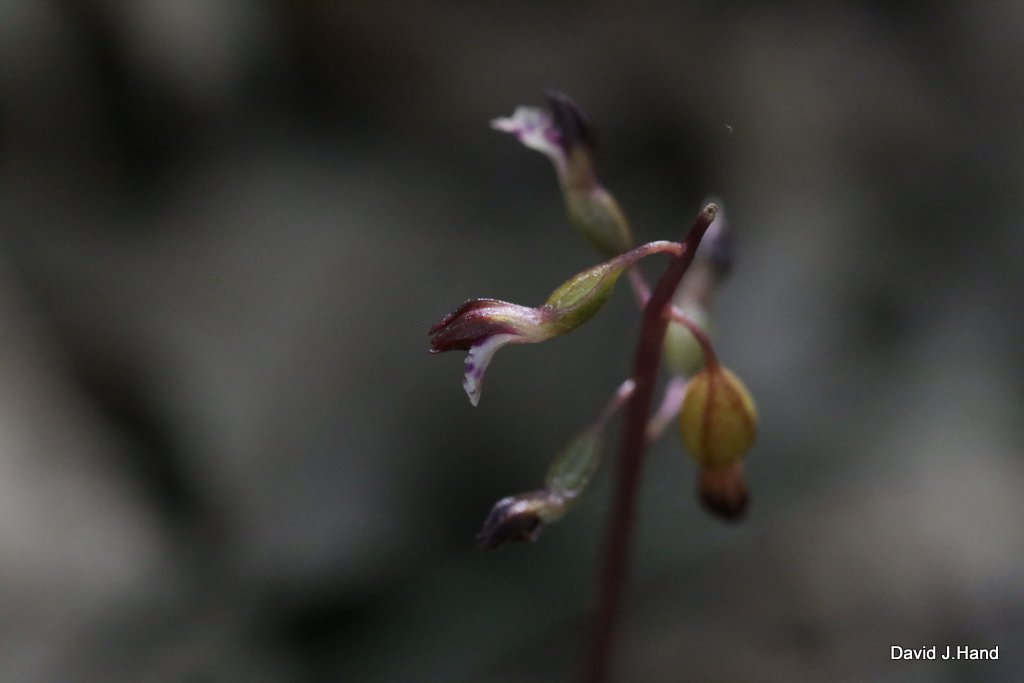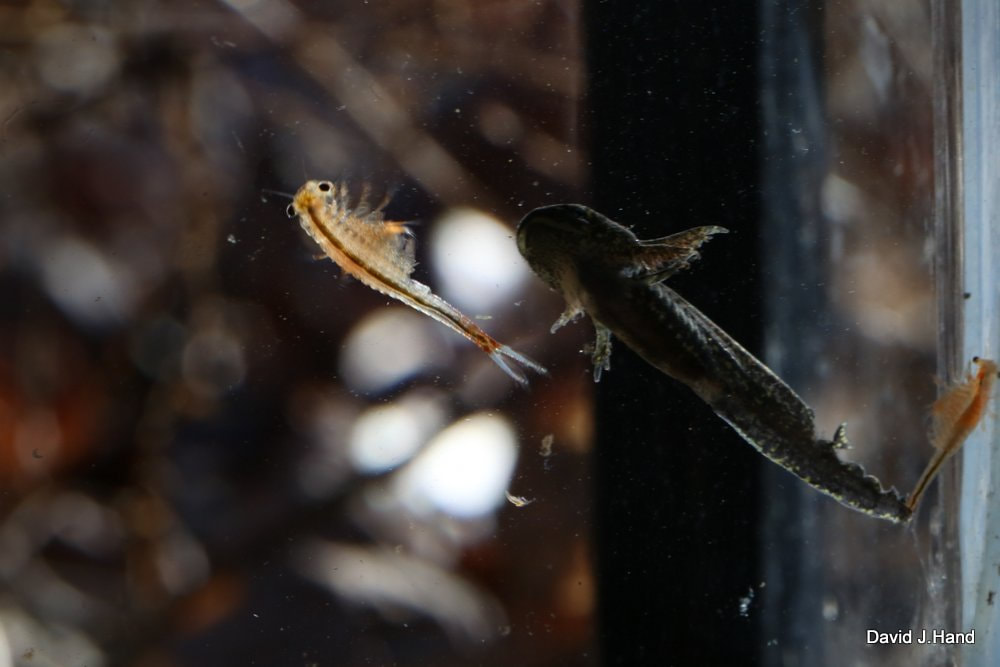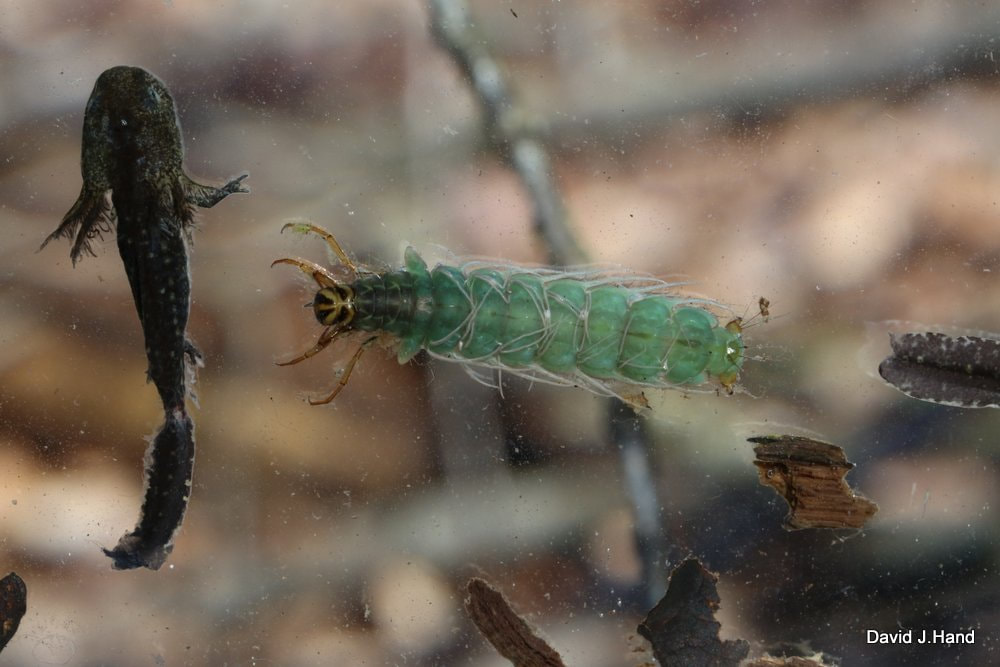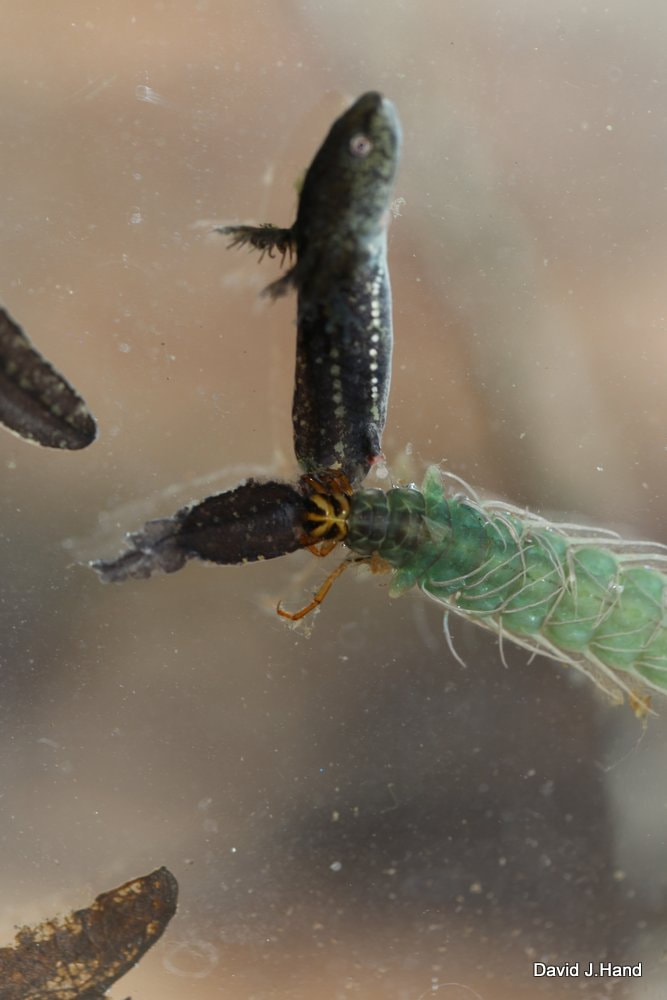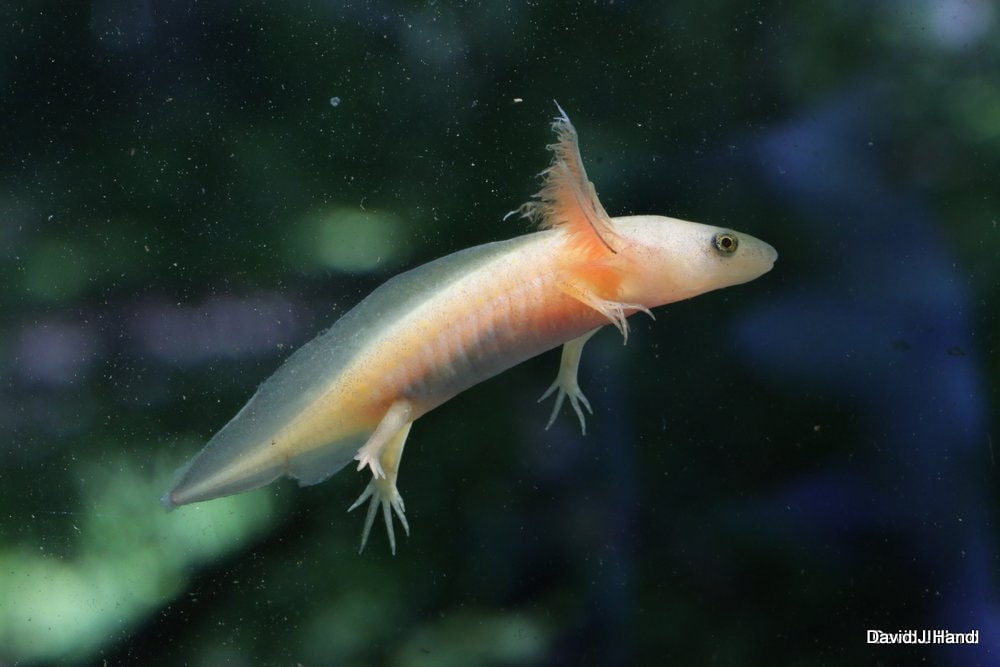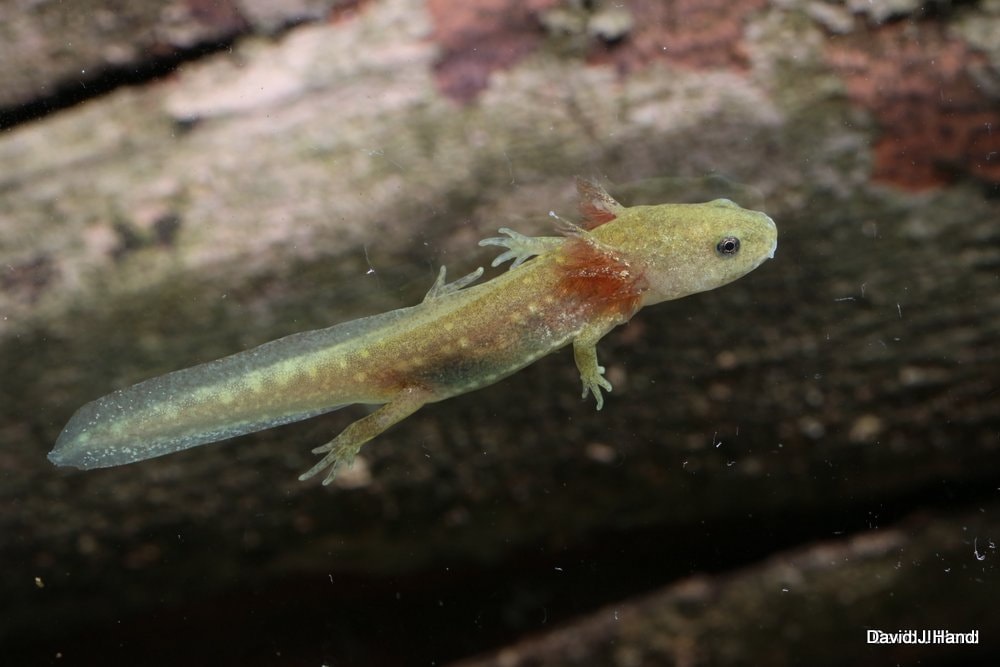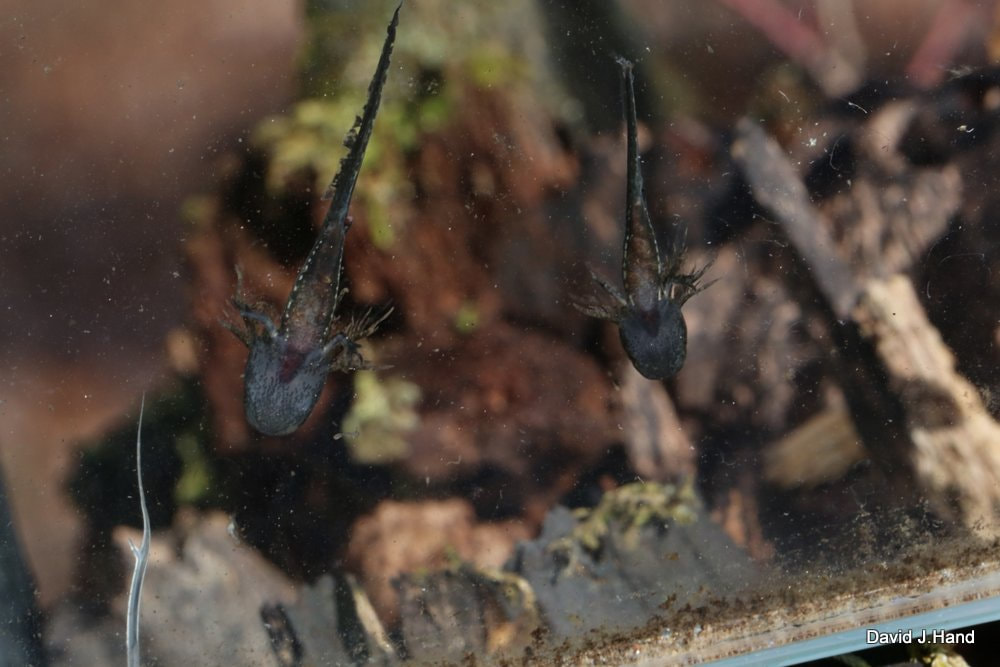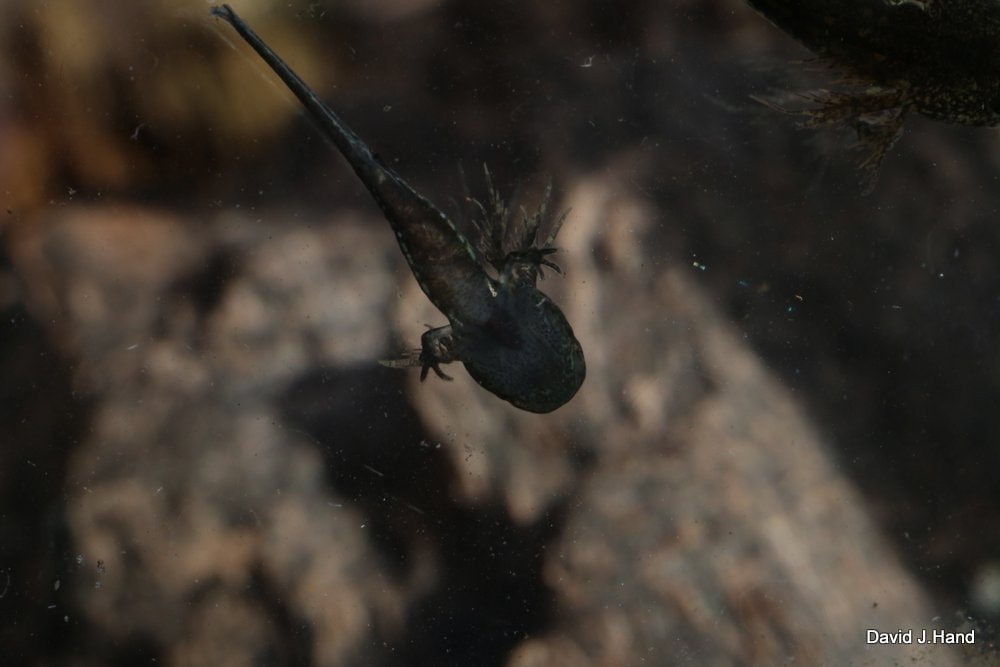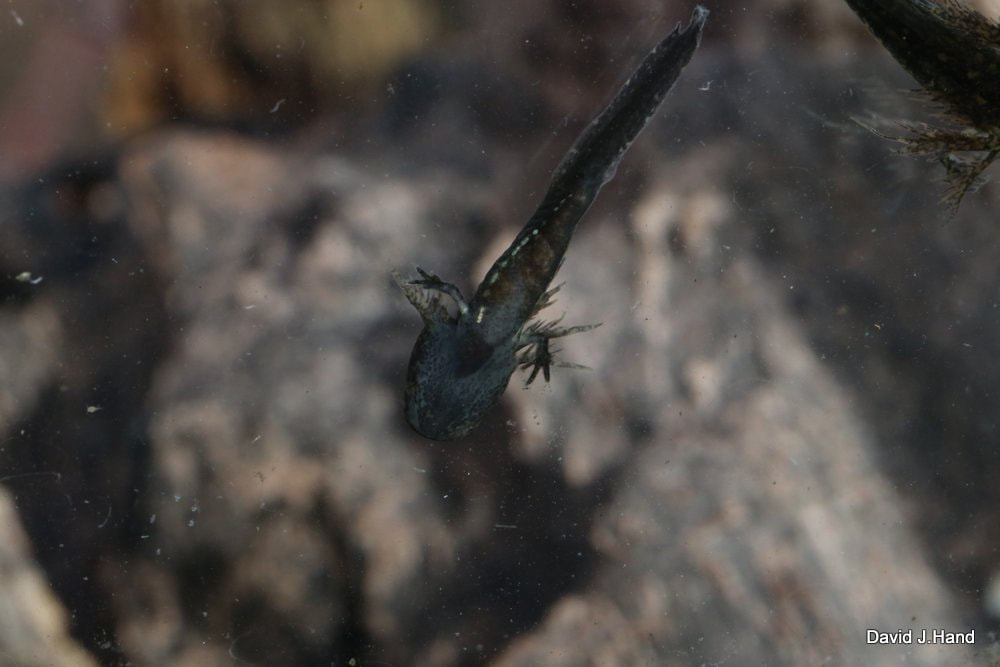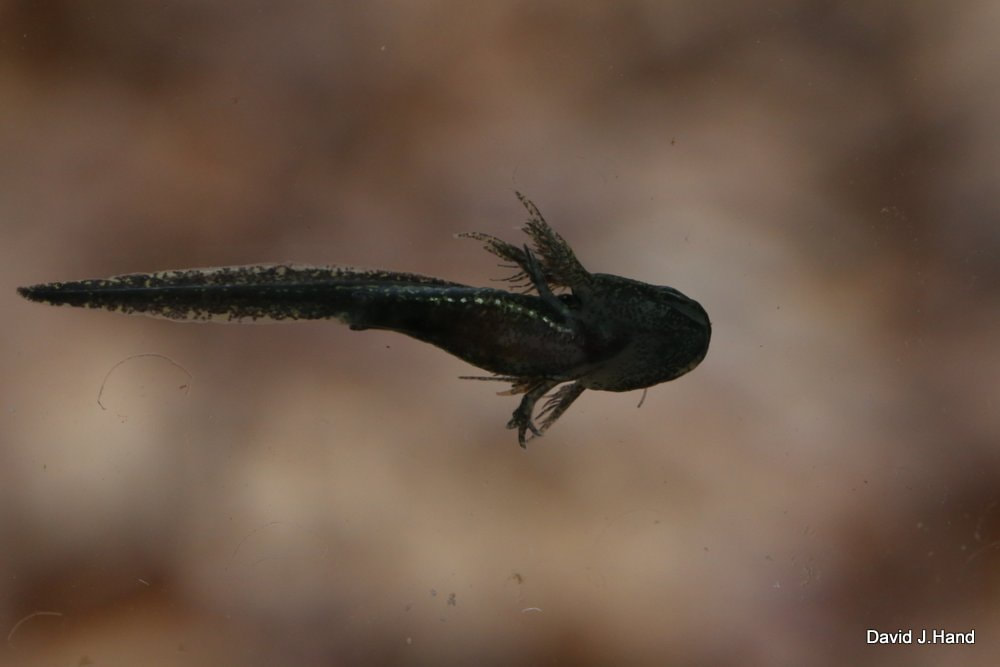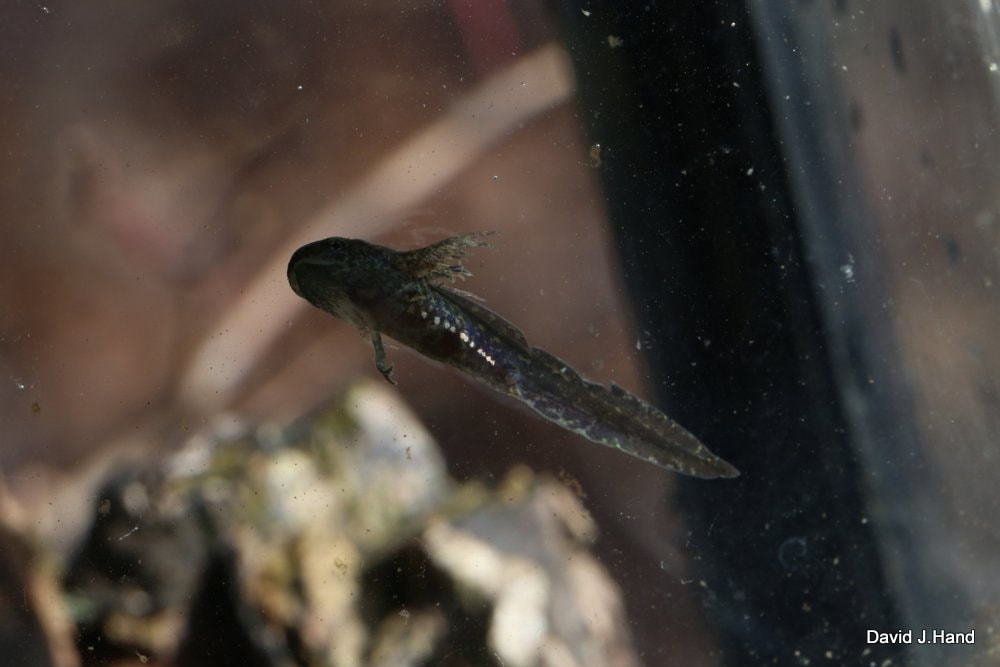Marbled Salamander [Ambystoma opacum] 2
Please remember while out herping in Pennsylvania you need to have a current fishing license and please please remember to follow decontamination procedures as not to spread germs,diseases and unwanted fungus to these important areas!If you not willing do follow these procedures,you should not be out!I personally always wear protective gloves[Nitrile] ,even if I don't handle salamanders and I do try to never touch them.I also spray myself [boots,waders,gloves,net,photographic tank...] with a chlorhexidine solution.
[Chlorhexidine, is a disinfectant and antiseptic that is used for skin disinfection]
[Chlorhexidine, is a disinfectant and antiseptic that is used for skin disinfection]
Four week old Ambystoma opacum larva. Notice the large heart in the throat area and the grey pigmented chin, no other Ambystoma larvae has this, and good way to identify opacum larvae. Pa. 12-29-22
28 week old Ambystoma opacum larva
28 week old Ambystoma opacum larva
28 week old Ambystoma opacum larva
28 week old Ambystoma opacum larva
28 week old Ambystoma opacum larva
This 28 week old Marbled Salamander larva is showing all the signs that metamorphosis is almost complete and will be leaving the vernal pool in the next few weeks as a juvenile salamander. Notice the gular fold across the neck and the brow becoming more pronounced around the eye, also the nostrils are more pronounced for breathing air. These are all signs that a new life on land is coming soon. I have also noticed at this time the eye lids are being constantly used in a " blinking action" and their pupils are more animated and searching [last two pictures], rather than a fixed position as they check out their environment. This giant larva was in a sea of wood frog tadpoles and was observed picking them off [eating] one by one. Ambystoma opacum. I can't help but feel a little sadness at this time of year as the larvae leave the pool that has been their home since last fall, and at having watched them grow all this time, but I wish them all well on their new journey and a life on land.
Close up the external gills of a 28 week old Ambystoma opacum larva. The red coloration indicates blood flow as the gills absorb oxygen from the water, and then carries the oxygen through the rest of the larva.
Close up the external gills of a 28 week old Ambystoma opacum larva. The red coloration indicates blood flow as the gills absorb oxygen from the water, and then carries the oxygen through the rest of the larva.
Above and blow. 28 week old Marbled Salamander larva with 4 week old Spotted salamander larva. [Ambystoma opacum and Ambystoma maculatum]. Central Pa, 5-31-22. For scale the A. opacum is 2 3/4" or 6.985 cm
A very full 24 week old Ambystoma opacum larva defecating. Pa. 4-11-22
24 week old Ambystoma opacum larva [above and below]. Pa. 4-11-22. Notice its has a unusual lump or bump on the tip of his nose.
Marbled Salamander larva with Spotted Salamander egg and embryo. Pa. 4-11-22. One day soon the Marbled larvae will be preying upon this newly hatched Spotted larvae. One advantage the Marbled has in breeding in the fall, and the head start it provides to other amphibians who use these same vernal pools.
This pictures shows the right forelimb of a 24 week old Marbled Salamander larva [Ambystoma opacum]. You can see through transparent skin on the underside of the limb and see the developing bone structure of the forelimb and the wrist. It is not that hard to visualize in the future this being the forelimb of a Marbled Salamander, but the strength that is required in digging in soil must be extreme as Marbled have been found up to 42 inches underground in dry years. These limbs will also help the Marbled Salamander in their never ending search for prey such as worms, grubs, and insect larvae, in their remarkable 20+ year life span. Pa. 4-11-22
An unusually dark phase 24 week old Ambystoma opacum larva, notice too it has a unusual lump or bump on the tip of his nose. Pa. 4-11-22
50 mm long and 24 week old Ambystoma opacum larvae. Pa. 4-11-22, Notice the grey pigmented chin, no other Ambystoma opacum larvae has this coloration on the chin.
A well fed 24 week old Marbled Salamander larva [Ambystoma opacum]. Oddly enough the larvae are still in the shallows feeding vs further out in the pool feeding Wood Frog and Spotted Salamander eggs which is usually the case at this time. In fact all the larvae seen this day looked like this. At an incredible 2 inches [50.8 mm] already, I was astounded by their size already this early in spring! Normally at this time they are half this size and hiding and feeding on other amphibian eggs, It looks like that they are still feeding on Fairy Shrimp, as a great many were seen, but that is just speculation. Pa. 4-11-22
Newly hatched Wood Frog tadpoles and Marbled Salamander Larvae. Pa. 4-11-22
A lone Marbled Salamander larva in a sea of Fairy Shrimp.
20 week old Ambystoma opacum larva.
20 week old Ambystoma larva [Marbled Salamander], already at .75 inches [1.95 cm]. The hind limbs are just starting to show. Judging from the stomach and intestines, this larva is eating well and is full of Fairy Shrimp.
A close up picture of a 20 week old Ambystoma opacum larva right hind limb starting to emerge. You can see the individual digits of what will become toes, also notice the first signs of spotting that will eventually cover the limb.
20 Week old Ambystoma opacum larvae. Pa. 3-10-22. Notice the grey pigmented chin, no other Ambystoma larvae has this coloration.
A twenty week old Marbled Salamander larva [Ambystoma opacum]. Having hatched last November, this larva and all the others in vernal pool appear to be doing well. This pool was locked in ice for several months, having only recently thawed. The pink coloration in this, and in the others stomachs is a sure sign that they are gorging themselves of newly hatched Fairy Shrimp. If you look close you can just see the hind limbs starting to make an appearance, they appear as tiny little protrusions between the underside and just before the tail. 3-14-22
|
|
|
These two videos [pictures] taken last October show two female Marbled Salamanders with their eggs. In the first picture these eggs and nest were placed well away from the vernal pool. The pool was overflowing and the best the females could do was lay their eggs at the margins of the water or in this case well away from water. In a normal year females make their nest inside a dry pool in fall, as the eggs develop and reach the hatching stages, they wait to be inundated with water. It is after they are inundated that hatching can occur. In the second picture a female made no attempt at making a nest, she simply deposited her eggs at waters edge. Both clutches of eggs and many more that were found that rainy cold day had no chance of ever being able to hatch. I made the decision [rightly or wrongly] to move hundreds of eggs and made new nests in sphagnum moss, where they had the chance to hatch. I visited this pool for the first time since that cold wet day last fall recently and was thrilled to see hundreds of larvae swimming in this pool. I know the thought is not to interfere with nature, but I just don't subscribe to that way of thinking anymore, especially since we have so much to do with nature and our erratic weather patterns. This was the 3rd time in recent years that the vernal pools were filled when the females arrived in fall and I guess that is the new normal, no normal at all.
The very last time I saw a leucistic Marbled salamander larvae right after metamorphosis, it's always wonderful to think that maybe someday I might run into the adult in this area-I am always hopeful! From four years ago. Also pictured a larva with normal coloration taken at the same time [below], right after metamorphosis
As I look back on 2021 and all the wonders in nature that I was privileged to see, I feel this is one of the best pictures that I was fortunate enough to take. A 24 week old Marbled Salamander [Ambystoma opacum] larva with a newly hatched Wood Frog tadpole [Lithobates sylvaticus].Also picture Spotted Salamander egg, at 11 days old [Ambystoma maculatum] and in stage 20 of Embryonic stage, also know as the "tail bud stage". You can clearly see the developing eyes and spine of the embryo.4-13-21
Unattended Marbled Salamander eggs and embryos that have developed to the hatching stage on their own. Notice the embryo at bottom is curled in half and you can see an eye [top left of egg]. In the embryo at the top you can see the body of the embryo curled around the bottom of the egg, tail to the left and head at the top, you can just make an eye to the right of debris on the outside of the egg [top]. All they can do now is to wait to be inundated by water for hatching to occur. [Ambystoma opacum]
Due to the flooded and full vernal pools this year at breeding time, female Marbled Salamanders had to become resourceful and lay their eggs at some unusual places, rather than making their nest in the usual dry vernal pools. In the top picture the eggs were laid on the ground in a opening at the base of a tree [you can see eggs in the picture]. In the picture below a nest and ready to hatch eggs were found well away from a mostly now dry vernal pool under the log in the foreground. Unfortunately water will never reach these eggs, necessary for hatching. [Ambystoma opacum]
Female Marbled Salamander with her head resting on one of her eggs. You can see the embryo inside egg has developed to the hatching stage. It has been my experience that a female still attending her nest at this late stage is unusual. Perhaps she is an older more experienced female.
Female Marbled Salamander with nest and eggs. The embryos have developed to the hatching stage. Notice in the eggs you can see eyes and gills of the embryos. In my observations its unusual for the females to be still attending their eggs at this late stage.
Of the five nest found this week, this was the only one that still had a female attending her eggs. Again due to the high water at the time of oviposit, this nest found well away from the vernal pool. The embryos are ready to hatch, but unfortunately their chances of becoming inundated by water [necessary for hatching] are very small. Marbled salamander [Ambystoma opacum]
At 40 days since oviposit [egg being laid] these embryos are ready to hatch. All they need now is to be inundated with water, the embryo then becoming oxygen starved, triggers the release of an enzyme that dissolves the egg and hatching can then occur. Marbled Salamander [Ambystoma opacum].
At 40 days since oviposit [egg being laid] this embryo is ready to hatch. All it needs now is to be inundated with water, the embryo then becoming oxygen starved, triggers the release of an enzyme that dissolves the egg and hatching can then occur. Marbled Salamander [Ambystoma opacum]. You can see the eye, balancer, and forelimb, as the embryo laying on its back showing the underside.
Marbled Salamander embryo at 32 days since oviposit, you can clearly see a balancer and a finely developed eye. [Ambystoma opacum]
At 32 days since oviposit these Marbled Salamander embryos are still in the embryonic stage of development but are within a week of reaching the hatching stage. It is hard to see but their forelimbs are not quite fully developed, and at hatching stage their side spot will be more vivid and noticeable. Notice too their embryonic sack is completely gone and in the bottom picture you can see a balancer. [Ambystoma opacum]
At 32 days since oviposit these Marbled Salamander embryos are still in the embryonic stage of development but are within a week of reaching the hatching stage. It is hard to see but their forelimbs are not quite fully developed [picture 19], and at hatching stage their side spot will be more vivid and noticeable. Notice too their embryonic sack is completely gone. [Ambystoma opacum]
At 25 days since ovipositing this embryo is really starting to take on the look of a Marbled Salamander larvae. The eyes are clearly visible, and notice the balancer on the side of the head. Balancers are projection on the sides of the head that act as stabilizers during the larvae's first attempts at swimming, until the forelimbs become strong enough for locomotion to occur. They also act as tiny life preservers and keep them from sinking into the bottom. It is amazing what nature provides for tiny creatures such as salamander larvae to survive and develop until one day becoming adult salamanders. [Ambystoma opacum]
At 25 days since ovipositing this embryo is really starting to take on the look of a Marbled Salamander larvae. The eyes are clearly visible, and notice the balancer on the side of the head. Balancers are projection on the sides of the head that act as stabilizers during the larvae's first attempts at swimming, until the forelimbs become strong enough for locomotion to occur. They also act as tiny life preservers and keep them from sinking into the bottom. It is amazing what nature provides for tiny creatures such as salamander larvae to survive and develop until one day becoming adult salamanders. [Ambystoma opacum]
One beautiful girl! Female Marbled Salamander found in the pouring rain. 9-23-21 [Ambystoma opacum]
I found these two beautiful females in the pouring rain under the same log, well away from a vernal pool, and hopefully a successful nest. Undisclosed location, 9-23-21 [Ambystoma opacum]
Four different Females Marled with nest and eggs, three of nest were nothing more than eggs laid at the waters edge, which is all the females could manage do this year. These were taken during the recent heavy rains. Notice in three of the pictures the rising water is about to inundate the females and their eggs. The females were able to escape the raising water, but unfortunately the eggs were not. The fourth nest [lower left] was found surprisingly well away from the waters edge but in an area that becomes a stream during heavy rains and these eggs perished as well. When eggs are inundated by water before embryos are ready to hatch, the embryos drown and perish. Undisclosed location. 9-23-21 [Ambystoma opacum]
At 18 days since ovipositing, this embryo is in the embryonic stage. Undisclosed location in the North East, 9-24-21. Looking at this ghostly image, it can take awhile to understand just what you are looking at, but soon the features of the developing embryo become clear. At the top left of the egg you can see the head of the embryo with the faint eye and you can just make out the outline of the mouth, and in back of the eye you can see the tiny beginnings of the gills, hanging underneath the chin you can see what would be the left forelimb. In the lower right of the egg would be the embryos tail. [Ambystoma opacum]
At 18 days since oviposit these embryos are in the embryonic stage. You can see the developing eyes, gills, and the bud of the forelimb beginning to show. You can also see slight indentation of the mouth. Its truly a wonder of natural world to think these beautiful tiny embryos [just over 6 mm in length] someday be adult Marbled Salamanders. Ambystoma opacum. It looks like the accepted idea of 9-15 days till the hatching stage will have to be adjusted, at least in the case of these eggs and embryos and this area of the country, maybe in southern areas of its range that can apply. Undisclosed location in the North East, 9-24-21
A Female Marbled Salamander with eggs [Ambystoma opacum]. This nest was found in leaf litter along the edge of small pool associated with a overflowing venal pool. Most of her eggs [a milky color] are no longer viable, most likely due to being inundated earlier by high water. But through the high water, she still attends to her eggs. 9-22-21
At just 11 days old this Ambystoma opacum embryo is already taking a more recognizable larvae appearance. This is referred to as the "tail bud" stage, of embryonic stage
These pictures show embryo development in Ambtstoma opacum eggs. At just 11 days since oviposit [egg laying] occurred and in the neurula and embryonic stages, it is amazing to see embryos at different stages of development in the same egg mass. At 11 days old and in the "tail bud" stage, of the embryonic stage of development, you can clearly see eye and the spine development.
At just 11 days old these Ambystoma opacum embryos are now taking a more recognizable larvae appearance. In the top picture you can clearly see the spine development and in the bottom picture you can see an exaggerated eye. This is referred to as the "tail bud" stage, in the embryonic stage of development.
At nine days old this picture shows mid stages of Marbled Salamander embryo development, also known as the neurula stage, "Late neural plate; the neural folds continue to elevate and approach each other to form an “hourglass” shape". In the egg on the left that area that of the embryo that is outlined will become and develop into the head of the larva. [Ambystoma opacum]
I found this exposed Ambystoma opacum nest and eggs several feet from the waters edge at the base of a small bank. Notice how the female again adapted to the unusually high water by actually digging and pulling the moss down from the bank [observe the bare ground to the right and left above the eggs], not only to try and conceal her eggs but using the moss to lay her eggs on, keeping them dry. As when this nest was made the water was right up to the base of the bank. I believe there were more than one female involved in this nest making activity and there are more eggs to found under the moss to the right and left in the picture. There also could be one or more females attending the eggs under the bank and moss, but it was left undisturbed. Undisclosed location, 9-16-21. Amazing behavior to observe and to able to document. The more I learn and witness from these and other creatures in nature the more I am in awe and realize just how little we know or understand. Nature never fails to surprise me and just how much more is there to learn from these amazing animals, and isn't that just wonderful!
I found this exposed Ambystoma opacum nest and eggs several feet from the waters edge at the base of a small bank. Notice how the female again adapted to the unusually high water by actually digging and pulling the moss down from the bank [observe the bare ground to the right and left above the eggs], not only to try and conceal her eggs but using the moss to lay her eggs on, keeping them dry. As when this nest was made the water was right up to the base of the bank. I believe there were more than one female involved in this nest making activity and there are more eggs to found under the moss to the right and left in the picture. There also could be one or more females attending the eggs under the bank and moss, but it was left undisturbed. Undisclosed location, 9-16-21. Amazing behavior to observe and to able to document. The more I learn and witness from these and other creatures in nature the more I am in awe and realize just how little we know or understand. Nature never fails to surprise me and just how much more is there to learn from these amazing animals, and isn't that just wonderful!
I found this exposed Ambystoma opacum nest and eggs several feet from the waters edge at the base of a small bank. Notice how the female again adapted to the unusually high water by actually digging and pulling the moss down from the bank [observe the bare ground to the right and left above the eggs], not only to try and conceal her eggs but using the moss to lay her eggs on, keeping them dry. As when this nest was made the water was right up to the base of the bank. I believe there were more than one female involved in this nest making activity and there are more eggs to found under the moss to the right and left in the picture. There also could be one or more females attending the eggs under the bank and moss, but it was left undisturbed. Undisclosed location, 9-16-21. Amazing behavior to observe and to able to document. The more I learn and witness from these and other creatures in nature the more I am in awe and realize just how little we know or understand. Nature never fails to surprise me and just how much more is there to learn from these amazing animals, and isn't that just wonderful!
A rough year for Marbled Salamanders [Ambystoma opacum]. The vernal pools are filled with water and the best the females can do is to make their nest at the margins of the pool, rather than down inside a dry pool under a log. There is a problem that goes along with this however, if the eggs get inundated with water before they are ready to hatch [around 2 weeks] the embryos will perish. And In some instances the water, already being at its highest point, the eggs never do get inundated and aren't able hatch [being inundated with water triggers the release of an enzyme that helps to dissolve the egg and hatching can occur]. But female do the best they can under the conditions they are presented with and adapt, which you will see in the coming post. This female [unattended nest] had laid her eggs under this piece of wood close to waters edge. The approximately 200 eggs are all viable as embryos are developing inside the egg, I could watch them moving inside the egg. I believe them to be a week old. You must be very careful in years like this as every step around a vernal pool could be on a nest. Most of this vernal pool was not even explored, and for good reason! Undisclosed location, 9-16-21
Male Ambystoma opacum Salamander. Late summer 2021
When I first saw this large, heavy Marbled Salamander, I just assumed it was a female [in close proximity to a vernal pool] full of eggs. But it turns out it is a male in route to staking out his breeding territory at a vernal pool, and I do believe it is best to stay out of his way! Undisclosed location. Late summer 2021 [Ambystoma opacum]
A beautiful Male Ambystoma opacum Salamander. Pa. 8-31-21
A beautiful Male Ambystoma opacum Salamander [same individual as seen below]. Pa. 8-31-21
A beautiful male on his way to a vernal pool for breeding season. Late summer and fall would not be the same without seeing these beautiful creatures. Pa. 8-31-21 [Ambystoma opacum]
There is nothing like seeing the first Marbled of the fall mating season! This beautiful male will seek out a choice territory in, or around a vernal pool of about a foot square and defend it from all other males , in hopes that a female will pay him a visit. Pa. 8-29-21. What do you think girls, is he not handsome or what!
A Marbled Salamander [Ambystoma opacum] larva that is soon ready to leave the vernal pool and its watery home for the last 32 weeks, as metamorphosis is soon complete and one day soon it will be leaving the water as a juvenile salamander. Pa.6-21-21
A Marbled Salamander [Ambystoma opacum] larva that is soon ready to leave the vernal pool and its watery home for the last 32 weeks, as metamorphosis is soon complete to a juvenile salamander. Pa.6-21-21
A Marbled Salamander larva [Ambystoma opacum] that is soon ready to leave the vernal pool and its watery home for the last 32 weeks, as metamorphosis is soon complete to a juvenile salamander. Pa.6-21-21
A beautiful and Unusually dark Ambystoma opacum larva, the usual grey pigmented chin, is almost a solid dark grey and it extends all the way back to the gills. It also has very few spots along its side. The hind toes are abnormally long for a Marbled and it is recently suffered an injury to left hind foot causing the loss of several toes, most likely from another larva. Pa.6-21-21
A remarkable journey coming to an end. A newly hatched Marbled Salamander [Ambystoma opacum] larva from last December [2020] [top], notice it still has its balancers. And a 32 week old larva almost ready to leave the vernal pool as metamorphosis to a life on land is almost complete, [below] [June 2021], notice the gills are but gone and it is making frequent trips to the surface for gulps of air as its lungs develop.
Some of the last larvae pictures of the year. In the first picture a larva in the process of regenerating its left front toes. Second picture of a larva displaying its toes, and notice it is missing a toe [which will, over time, regenerate]. Third picture shows a larva with unusual three spots above its hind limb. Ambystoma opacum,Pa.6-21-21
At 2 1/2 inches [63.5 mm] this Ambystoma opacum larva is just about completed metamorphosis to land and will be leaving its watery home for the last 32 weeks, having hatched last November. The gills are all but gone and the gular fold is now complete across the throat of the larva. This is a sure sign the its aquatic life is soon over as the fold develops quickly as the gills disappear. In some reptiles such as lizards the gular fold is used as a sexual display, but I have never been able to ascertain its use in salamanders or been given an explanation. Perhaps it is something left over from a time long ago or perhaps someone out there can help me out. Pennsylvania 6-21-21
Not too much water is left in this vernal pool and it is full of 32 week old Marbled Salamander larvae. But they will their complete metamorphosis this year, as they are really getting big. At 2 to 2 1/2 inches in length [50.8 to 63.5 mm] metamorphosis to a life on land is really accelerating as water levels drop and water temperatures warm, causing oxygen levels to drop, larvae are making frequent trips to the surface for gulps of air as their lungs develop. One to two weeks the larvae will be leaving their watery home for a life on land, never to return to the water again.Pa.6-21-21
One of my favorite Ambystoma opacum larvae pictures of the year so far, even with the poor water quality. At 28 weeks, it looks like its just floating and hanging out, and is just relaxing on a warm spring day. 5-25-21. With Wood Frog tadpole [Lithobates sylvaticus] in the background.
28 week old Ambystoma opacum larvae.5-25-21. Notice the grey pigmented chin, a sure sign of Marbled salamander larvae. Also notice the larva in the first two pictures has been eating something that has made its stomach a vivid pink color. Also pictured Wood Frog tadpoles [Lithobates sylvaticus]
28 week old Ambystoma opacum larva with Wood Frog tadpoles [Lithobates sylvaticus].5-25-21
There are at least four different Ambystoma opacum larvae in this footage, hanging around and on Ambystoma maculatum eggs that have already hatched. As the vernal pool shrinks and water warms, oxygen levels drop, metamorphosis really starts to accelerate. These 28 week old larvae, at 1 1/2 inches [38.1 mm] in length, will be leaving the pool as juvenile salamanders very soon now, one to two months if all goes well. After living most of their lives as one of the dominant predators of the vernal pool, leaving the relative safety of the pool, to a life on land as juvenile salamander, and at best an uncertain future. They will become the hunted themselves by many different predators [owls, racoons, skunks, snakes, to name a few]. How many will survive to adulthood is at best slim. But I wish them all well as it has been another wonderful experience watching them grow and fight for their place in the vernal pool.5-25-21
A beautiful light coloration of a 25 week old Ambystoma opacum larva.4-27-21
25 week old Ambystoma opacum larvae. I have no idea what these larvae have ingested or have inside them. Their membrane across the bottom is stretched to the point of being transparent. In the last picture the white milky substance can be seen traveling from the stomach to the and through the digestive tract. In the first picture you can see blood vessels running across the surface of the white mass, which is the stomach, and next to the stomach the deep red area is the heart. In the third picture it appears that there is blood from the heart leaking onto the stomach, also notice the the round objects inside the larva on the left side [again picture number three] they make corresponding bulges [at least three] to the outer skin. I don't remember ever ever seeing anything quite like this in larvae before, I notice it in three of the four larvae I observed. Every larvae seen inside my tank and in the vernal pool seemed very healthy and swimming normally. Something they are eating I suppose and lots of it. Could it be the opaque Spotted Salamander egg masses that are present in the pool? Also notice that you can really see their hind limbs now and you could really notice a difference in their use as they propelled themselves around the pool. 4-27-21
24 week old Marbled Salamander larva [Ambystoma opacum], Checking out a fast developing Spotted Salamander embryo [Ambystoma maculatum].If you look close you can see the developing eyes and spine of the embryo.4-12-21
24 week old Marbled Salamander [Ambystoma opacum] larva with newly hatched Wood Frog tadpole [Lithobates sylvaticus].Also picture Spotted Salamander egg and approximately 14 days old embryo [Ambystoma maculatum].You can clearly see the developing eyes and spine of the embryo.4-13-21
24 week old Ambystoma opacum larvae.His stomach [ready to burst] full from newly hatched Wood Frog tadpoles,I do believe.Please notice the hind limbs are starting to make their appearance,if you look close you can see the tiny digits.4-13-21.At 1 inch they are half way to the 2 inches they are when they leave the pools for land.The heart looks huge in its throat.They have a beautiful color and look at those bright spots.I do believe life is good,until something larger comes along and takes you for a tasty meal!
From top to bottom,4 week old Spotted Salamander larva [Ambystoma maculatum],32 week old Marbled Salamander larva [Ambystoma opacum],8 week old Jefferson Salamander Larva [Ambystoma jeffersonianum].Pa.6-10-20
16 week old Ambystoma opacum larvae.Pa.3-19-21
16 week old Ambystoma opacum larva,notice the hind tab where the hind limbs will start to appear in about 7 weeks.Depending on the weather hind limbs usually start to appear here in Pennsylvania when larvae are 23 weeks old.Pa.3-19-21
It is amazing and a wonder in the springtime time every year to see Ambystoma salamanders migrating and making their way to vernal pools on rainy nights by the millions.The urge to mate and breed is so powerful it can't be stopped.In with all the millions of salamanders are Marbled salamanders.They [the Marbled] breed in the fall ,but are out with all the other salamanders that breed in the spring.The difference being the Marbled are migrating in the opposite direction,away from wet areas to more forested areas for the summer.While salamanders of all kinds,Jefferson,Spotted,Blue Spotted,Tiger,are all headed toward wet areas and vernal pools for the breeding season,the Marbled are using these same spring rains for a different and opposite reason,to move away from these wet areas,where their breeding took place the previous fall.And when the fall rains come it will signal the Marbled Salamanders to leave their forested areas,where they spent the heat of the summer deep underground,and now migrate to the now dry vernal pools for their breeding and again will pass the other salamanders who are now heading back to the forest for winter.It is amazing to think of these millions of salamanders passing each other on rainy nights every spring and fall.One has to wonder how and why long ago the Marbled Salamanders came up with this opposite and successful breeding strategy for their survival.
16 week old Ambystoma opacum larvae.Pa.3-19-21
Two beautiful and well fed 16 week old Ambystoma opacum larvae.Pa.3-19-21
This Ambystoma opacum larva was found in a pool with many hundreds.At just barely 1 inch [25.4 mm],these larvae are 16 weeks old having hatched last November.They have only grown 1/2 [12.7mm] inch in those 16 weeks,due in part to cold winter and the ice covered pool which finally melted just last week.They all seem well fed and in great shape,a great site to see.Now the growing season really starts!Pa.3-17-21
Marbled Salamander Larvae and Fairy Shrimp.Pa.3-17-21
Ambystoma opacum larvae their stomachs filled with Fairy Shrimp [Eubranchipus vernalis]Pa.2-6-21.
Marbled Salamander larvae that had recently consumed a Fairy Shrimp.Pa.2-6-21
Marbled Salamander larvae that had recently consumed a Fairy Shrimp.Pa.2-6-21
Close up pictures of a female Fairy Shrimp and encysted eggs that are developing in the brood pouch.Pa.2-6-21 [Eubranchipus vernalis]."Female Fairy Shrimp produce several broods of encysted eggs which must dry and be re-submerged before they will hatch."From the wonderful booklet "A Field Guide To The Animals Of Vernal Pools"by Leo P. Kenny and Matthew R. Burne.Available through the Massachusetts Division of Fisheries and Wildlife Natural Heritage and Endangered Species Program.Also through the Vernal Pool Association.
A female Fairy Shrimp with encysted eggs developing in the brood pouch.[Eubranchipus vernalis].Seen with Marbled Salamander larvae.Pa.2-6-21
Close up pictures of a female Fairy Shrimp and encysted eggs that are developing in the brood pouch.Pa.2-6-21 [Eubranchipus vernalis]."Female Fairy Shrimp produce several broods of encysted eggs which must dry and be re-submerged before they will hatch."From the wonderful booklet "A Field Guide To The Animals Of Vernal Pools"by Leo P. Kenny and Matthew R. Burne.Available through the Massachusetts Division of Fisheries and Wildlife Natural Heritage and Endangered Species Program.Also through the Vernal Pool Association.
5 week old Ambystoma opacum larvae.The larva in the middle top almost appears to have recently eaten another larva,albeit much smaller.It's just a guess,but you can even make out the gills.You can see the digestive tract and hearts in the tiny larvae.Also notice the larva in the middle bottom still has some of its balancer.Pa.1-28-21
5 Week old Ambystoma opacum larvae.Notice the the tab where the hind limbs will start to make an appearance by week 23.Pa.1-28-21.Also you can see the digestive tract and heart.
5 Week old Ambystoma opacum larvae.Notice the two tabs where the hind limbs will start to make an appearance by week 23,on the larva on top.Pa.1-28-21.Also you can see the digestive tract and heart.
These pictures shows the heart of a 5 week old Ambystoma opacum larva.It seems to be made up of 5 different parts or chambers [Amphibians,including adult salamanders have 3 chambered hearts].In the slide show below you can see the heart functioning.Pa.1-28-21
For the second time in recent history of this vernal pool some A.opacum larvae were swept down into a over flow stream with Decembers rains.All that was left of the stream was this fast drying tiny pool.I was able to rescued 37 larvae and returned them back into the vernal pool.I would like to say that I got them all,but I know that I missed some.Pa.1-21-21
4 week old Marbled Salamander [Ambystoma opacum] larva.Pa.1-12-21
A well fed 4 week old Ambystoma opacum larva,having hatched in mid December.Notice the grey pigmented chin,no other Ambystoma larvae species have this.The large red area in the neck is the heart,and that beautiful row of spots.Pa.1-12-21
These are 4 week old Ambystoma opacum larvae,having hatched in mid December.Pa.1-12-21.Notice the balancers are all gone now,absorbed back into the body of the larva.Also notice the two dark areas opposite each other along the sides of the larvae towards the tail,this is where the hind limbs will start to make their appearance by around week 23.The larva at the top the intestines are clearly visible.If you switch between pictures you can watch as the heart beats inside the larva-amazing!
3 day old Marbled Salamander larva [Ambystoma opacum],Pa.12-3-20.This was the latest I have observed newly hatched larvae.Mondays rain finally filled this venal enough to cover some of the eggs with water,which is required for hatching to occur [notice the film of ice on the pool].At just 12 mm in length it was one of the tiniest larvae I have ever tried to photograph.I was a great opportunity to try my new Raynox Super Macro Conversion Lens on my Canon 100mm macro lens.I was very pleased with the results,as this is by far the closest and most detail pictures of a larva I have ever taken.Please notice those wonderful balancers on the head of the larva,used in locomotion and balance as the tiny larvae make their first attempts at moving through its new watery home.After about a month they are absorbed into the larvae as they are no longer needed.Also notice the tiny Daphnia [water flea] hanging on the right balancer.Daphnia are an important food source for larvae.The red area in the neck is its heart.
3 day old Marbled Salamander larva [Ambystoma opacum],Pa.12-3-20.This was the latest I have observed newly hatched larvae.Mondays rain finally filled this venal enough to cover some of the eggs with water,which is required for hatching to occur [notice the film of ice on the pool].At just 12 mm in length it was one of the tiniest larvae I have ever tried to photograph.I was a great opportunity to try my new Raynox Super Macro Conversion Lens on my Canon 100mm macro lens.I was very pleased with the results,as this is by far the closest and most detail pictures of a larva I have ever taken.Please notice those wonderful balancers on the head of the larva,used in locomotion and balance as the tiny larvae make their first attempts at moving through its new watery home.After about a month they are absorbed into the larvae as they are no longer needed.Also notice the tiny Daphnia [water flea] hanging on the right balancer.Daphnia are an important food source for larvae.The red area in the neck is its heart.
Close up of a beautiful male Marbled Salamander [Ambystoma opacum].Pa.10-8-20.How can you not love that beautiful face!I really enjoy taking close ups of a salamander's face-I think it really gives you perspective and puts you in their wonderful world.
A beautiful fall male,Marbled Salamander [Ambystoma opacum].Pa.10-8-20
These two pictures,taken in 2018,show the development of Marbled Salamander [Ambystoma opacum] embryos inside the egg.And what the eggs and embryos would look like now at this time of year.The picture on top shows an embryo almost completely developed,you can see the eye,a balancer on its head [between the eye and gills],gills,and the little white protrusion beside the gills will be a forelimb,and also seen is its tail.The second picture [below] shows an embryo [larva] that is completely developed and is ready to hatch.Notice the darker coloration,again the the eye is clearly visible along with a balancer, and gills.Also the forelimb is fully developed,seen right beside the gills.All this larva needs for hatching to occur is to be inundated by water,the embryo becoming oxygen starved will release a digestive enzyme that will dissolve the egg capsule,and hatching will occur and a Marbled salamander larva will be released into its new watery home for the next 8 months [at least here in the northeast].Pa.2018
Female Marbled Salamander with nest and eggs.Pa.10-8-20.As the night crawler moved right by her head she seemed to get agitated,moving her head from side to side,I thought she would surely eat the worm,but the worm traveled past her and then she seemed to relax and nestle back in with her eggs.I wonder if she felt the worm was a threat to her eggs.
A beautiful male Marbled Salamander [Ambystoma opacum].Pa.10-8-20
A male and female [with nest and eggs] Marbled Salamanders, under the same log.Can you find them?Pa.10-8-20
Female Ambystoma opacum with nest and eggs.Pa.10-2-20
Three female Ambystoma opacum with nest and eggs.Pa.10-2-20
Two Marbled females with nest and eggs,my first of the year.Pa.10-2-20.Very excited and happy day as I have not been able to locate too much nest activity so far this year.
Picture taken on April 30th 2018 showing 28 week old Marbled Salamander [Ambystoma opacum] larvae having hatched the previous fall with Spotted Salamander [Ambystoma maculatum] eggs,showing embryos inside the eggs [If you look closely you see the gills, balancers and eyes on of some the larvae].I always felt that these were some of the finest pictures that I was fortunate enough to take.In the sense that it gives a prospective on growth and the advantages of hatching the previous fall vs in the spring.Not that hatching in the fall is a guarantee for success.The winters can be excessively harsh and vernal pools can freeze solid to the bottom,killing all the Marbled larvae for that year.Hatching in the spring means they don't [the Spotted larvae] have to deal with all the hardships of winter.But the Marbled larvae that do survive the winter have a big head start in growth and size,evident in the pictures,Marbled larvae even feeding on the eggs and later the larvae of the Spotted.The pictures also show the different strategies two different Ambystoma species have for ensuring their survival.
A nice group of 32 week old A.opacum larvae.Pa.6-26-20
32 week old Marbled [A.opacum] larva with a 6 week old Spotted [A.maculatum] larva.Pa.6-26-20.It won't take the Spotted larva nearly as long to reach the same size due in part to not over wintering like the Marbled has,over the winter and under the ice growth rate slows.But by hatching last fall and over wintering has given the Marbled lava a decided advantage in its survival strategy,by not only getting a head start on the other vernal pool competition [Spotted Salamanders for one] but also by being in the vernal pools already in spring,can feed on not only Spotted salamander eggs masses but also the Spotted larvae like this small larva pictured above.Like everything else in nature life can be hard even in a vernal pool but every creature has a strategy for survival but unfortunately not all are able to survive the challenges and make it.
Again same beautiful 32 week old A.opacum larva as seen in the previous two pictures.Showing the usual white spots on the side are a more solid line [this occurs to most all Ambystoma opacum larvae as metamorphosis is reaching the final stages] and please notice the large white spot in front of the forelimb,and the almost solid white under the forelimbs vs the back forelimbs has a more usual blotchy appearance underneath.Pa.6-26-20
Same 32 week old A.opacum larva as seen below showing the wonderful speckled pattern on its head.And notice the white spot before its forelimb continues along the forelimb ending in a white patch.Pa.6-26-20
This A.opacum larva at 32 weeks old has all but lost its gills.Notice the unusual markings on its tail,and the usual distinct spots on its side have blended to make one almost solid line.Also has one large white spot in front of its forelimb. Pa.6-26-20
This is the same A.Opacum larva as shown earlier,showing the regeneration of it's left toes.Pa.6-26-20
32 week old A.opacum larvae,notice the larva on the right has lost it's left hind limb and it is now in the process of regenerating,even the toes are starting to grow back,amazing!Pa.6-26-20
At 32 weeks old this Ambystoma opacum larva is almost ready to leave the vernal pool as a juvenile salamander,notice it's gills are all but gone.Pa.6-26-20
These are four 32 week old Ambystoma opacum larvae,three of which have all but lost their gills as metamorphosis to land is really starting to accelerate.Pictured with a Wood frog tadpole [Lithobates sylvaticus].Pa.6-26-20
At 32 weeks old this beautiful light colored Ambystoma opacum larva still has its gills.Found in a vernal pool where most of the larvae have all but lost their gills as metamorphosis is all but complete and soon they will be leaving their watery home of the last 8 months to a life on land.Pa.6-26-20
These are three different Ambystoma embryos developing inside their eggs.First is a Jefferson,from left to right,[Ambystoma jeffersonianum].The second is Spotted [Ambystoma maculatum].The third is Marbled [Ambystoma opacum].Spotted and Jefferson lay their eggs in late winter and spring in water in eggs masses,whereas Marbled lay their eggs in fall on land in nests.Notice the algae inside the eggs of the Jefferson and Spotted.The following is from Valerie Ross "Spotted Salamanders embryos,a recent study found,have algae living inside their cells.While scientists have long known that the two species are symbiotic,each helping the other to survive,new findings show that the arrangement is more intimate than previously thought.It is the first such organism-within cell partnership-known as endosymbiosis-ever observed in vertebrates."! have also now read that the they are finding the algae living inside the adult Spotted salamanders cells as well!I think this is all very exciting,two organisms growing and living together as one,and depending on each other to survive.I have observed for many years and at different locations algae also inside the eggs of Jefferson's,as seen in the first picture.I have not read or heard of this symbiotic relationship happening in Jefferson Salamanders,but from my own observation believe it to be occurring in Jefferson's as well.
Two beautiful 30 week old Marbled Salamander larvae [Ambystoma opacum].Pa.6-10-20.They seem well fed and in great shape,soon ready [in the next few weeks] to metamorphosis and leave their watery home and a life on land as juvenile salamanders,never to return to the water again.
I see this every spring Ambystoma opacum larvae of different sizes all hatched last fall,in the same vernal pool.Pa.6-10-20.I have often wonder as to why there could be such a difference in growth.It seems that some larvae are more aggressive when it comes to stalking,finding and eating food,which does include each other.
Ambystoma opacum larvae,looking right at you!Pa.6-10-20
A very dark Ambystoma opacum larva,pictured above and below.Pa.6-10-20.Even looking like the ends of its limbs were dipped in ink.Notice too the unusual broken spot pattern.
Three Ambystoma larvae species.Top,maculatum [Spotted].Middle,jeffersonianum [Jefferson].Bottom,opacum [Marbled].Pa.6-4-20
A unusual silver sided [light colored] Ambystoma opacum larva with a Wood Frog tadpole [Lithobates sylvaticus].Pa.6-1-20
After many years of trying to get all three Ambystoma species of larvae [the three in our area,Pa.] in my photographic tank,I was finally rewarded last week.It was very exciting!I only know of two places that have all three,and it finally all came together.Top is maculatum [Spotted],about 4 weeks old,notice the line or strip from the eye to the nose,only seen at this earlier age.Middle opacum [Marbled],hatched last fall and is approximately 32 weeks old.Notice the grey,pigmented chin,only marbled larvae have this.Also notice metamorphosis to land is starting to be seen as the larva is losing it's aquatic tail and starting to take on the shape it will have for the rest of its life.Bottom is jeffersonianum [Jefferson],at 8 weeks old.At this age Jefferson are by far the heaviest of all larvae and again at this age they are thicker and more rounded and also notice the long fore toes a sure sign of Jefferson [In time the rear toes will be just as long].They also have a more aqua color appearance than either the Marbled or Spotted.They also have a more distinct line that separates the white of its belly and the coloring on their sides,found above their row of faint spots.Marbled always have the brighter row of spots followed by the Spotted and then by the Jefferson,which can be very faint.The reason the Jefferson and the Marbled are so close to the same size even though the age difference is so great is partly due to the fact that the Marbled larva body is changing due to metamorphosis and will be leaving the water to a life on land within the next few weeks,as stated before in the tail and also the body gets thinner as do all larvae at that time [metamorphosis].Marbled and Spotted larvae can be very hard to tell apart,but Marbled are almost always darker and as stated earlier have that grey,pigmented chin,whereas Spotteds do not.Anoth good way to tell is the time of year.Marbled having hatched the previous fall are always larger.Keep in mind that Spotted larvae on rare instances will over winter and metamorphosis the following year.Again look for the grey chin of Marbled,Spotted larvae will have a clean,white chin.Pa.6-4-20
Unusual silver sided Ambystoma opacum larva.This larva is 28 weeks old having hatched last November 2019.At 2 inches long metamorphosis to land is not too far off,perhaps another month.Please notice the silver spots on its tail,what a beautiful sight my first time back at a vernal pool.Pa.6-1-20
Yesterday was a wonderful and a big day for me,as it was the first time for me visiting a vernal pool and seeing Marbled salamander larvae since before my surgery in February.It was very emotional for me,as there were times I thought this day would never come.But it would not have been possible,if it were not for friend Kristin.Thank you Kristin for all your help,patience and kindness,but mostly your friendship.She helped me in every way even helping me getting into my waders and tieing wading shoes.When I told her I would like to sit down,the next thing I know she put me down into her lap and slid me down her legs till I was on the ground!We had a great day and we saw so many wonderful things,including hundreds of larvae,on a beautiful and unforgettable day!Pa.6-1-20
A beautiful 28 week old Marbled Salamander larva [Ambystoma opacum].Pa.6-1-20
A female Fairy Shrimp [Eubranchipus ?].Pa.2-3-20.Please notice her developing eggs in her brood pouch.
The beautiful Fairy Shrimp [Anostraca branchiopoda].A female [you can tell by the white tail],Fairy shrimp are a food source for salamander larvae.Pa.1-29-20
The beautiful Fairy Shrimp [Anostraca branchiopoda].With Ambystoma larva.Fairy shrimp are a food source for salamander larvae.Pa.1-29-20
Ambystoma opacum larva with the beautiful Fairy shrimp [Anostraca branchiopoda].Pa.1-29-20.Fairy shrimp are a food source for salamander larvae.Although this one seems a little full right now!
Caddisfly larva with home made of strips of grass,in vernal pool full of Ambystoma opacum larvae.Pa.1-12-20].I have seen bigger versions of insect larva [green sedge Caddisfly] catching and eating Ambystoma larvae,eating it while still very much alive [pictures below],I know it's nature but it was a terrible thing to witness.
A comparison picture of two beautiful leucistic Ambystoma larvae that I was fortunate to find in 2018 and 2019 respectively.Jefferson [Ambystoma jeffersonianum] top picture and Marbled [Ambystoma opacum] bottom picture."Leucism is a condition in which there is partial loss of pigmentation of the skin,hair,scales or cuticle,but not the eyes."Please notice the beautiful "gold dust" coloration in the gills of the Marbled larva.Also please notice that right hind toes of the Jefferson larva are in the process of regenerating after being lost-most likely another from another larva
First larvae of the new year.10 week old Ambystoma opacum larvae,notice the larva on the right and in close up pictures below has white strips at the forelimb area instead of the usual spots.Pa.1-12-20 [hatched 1st week of November 2019]
A ten week old A.opacum larva,that hatched the first week of November 2019,that still has a balancer on the left side of its head.Pa.1-12-20
Sunnylite illuminating those brilliant white spots on the side of a 10 week old A.opacum larva.
